

Serbianoutdoor 4×4

Unsere offroad / overland Touren in 2024

2023 photo galleries fully updated

Our hotel accomodation offroad tours – closer look

What makes our tours different?

Offroad mit Herz für die Natur

Off-Road-Reise als Familientour, geht das überhaupt?

Our offroad / overlanding tours in 2024
( Klicken Sie hier für Deutsch )

Lets start with the hotel tours this time
However, not all of our customers are fans of the jungle adventure survival style, that sometimes includes a fierce struggle with the elements. We are well aware that there are people who prefer to have a warm bed, a restaurant, hot spa and sauna after a day on the trail, and that is why we are offering three hotel tours in Serbia too. But due to a lack of demand lately, it seems that our potential customers aren’t aware of that fact. So we will start the overview of our 2024 offerings with those three hotel tours.
Continue reading Our offroad / overlanding tours in 2024 →
Share this:

( click here for English )

Beginnen wir dieses Mal mit den Hoteltouren
Allerdings sind nicht alle unserer Kunden Fans des Dschungelabenteuer-Überlebensstils, der manchmal einen heftigen Kampf mit den Natur beinhaltet. Wir sind uns bewusst dass es Menschen gibt die nach einem Tag auf dem Trail lieber ein warmes Bett, ein Restaurant, ein heißes Spa und eine Sauna haben möchten, und deshalb bieten wir auch drei Hoteltouren in Serbien an. Aufgrund der in letzter Zeit mangelnden Nachfrage scheinen sich unsere potenziellen Kunden dieser Tatsache jedoch nicht bewusst zu sein. Deshalb beginnen wir den Überblick über unser Angebot für 2024 mit diesen drei Hoteltouren.

We have updated the photo album with 5 new galleries from our 2023 tours, so that now last season is completed, and you can find it in the usual place:
Photo album
The albums which we have added are from the Ancient Trails , Secret Carpathians , Montenegro Highlands , Rhodopean Quest and Trails of Gods tours.

Although we are best known for our legendary total wilderness tours, we also make hotel accomodation offroad tours, at least in Serbia. And some very good ones! But that lately seems to be slipping the attention of that large offroading population who prefer hotels to camping. What could be the reason? Maybe we have shifted our focus off those tours? Maybe you can’t believe that Serbia could possibly have decent hotels?
That is what this video is intended for – to give you a picture what our hotel tours actually look like (including the impressions of some participants), and to draw your attention to the dates of those tours.
Click here to find out more about or book one of our tours .

Halfseason 2022 overview – Ancient Trails and Montenegro Highlands galleries created
Our 2022 season is at full pace. We’ve had 7 fabulous tours in the Balkans countries so far, and 4 more are awaiting us in the second part of the season. We have just managed to put a few more photo albums online, which cover the Ancient Trails tour (June), as well as the two Montenegro Highlands tours (July).

Continue reading Halfseason 2022 overview – Ancient Trails and Montenegro Highlands galleries created →

New photo gallery added
We have just added the photo gallery from the two Homolje Goldrush 2022 tours, which took place between April 10th and 23rd 2022. Just like we always expect from April, we’ve had sun and rain, even snow, so all driving conditions were present in the tour, occasionally putting the participants before challenging tasks in the golden mountains of eastern Serbia. We also visited the Majdanpek goldmine, as well as Todor’s river, where we were demonstrated the ancient art of gold prospecting.
You can take a look at the 120 images selected for the photo album here .

Zwischen Winter und Frühling in ost Serbien
Sollten Sie nach Serbien reisen? Marco war 10 Mal dort, also ist dies eine Gelegenheit herauszufinden warum.
Das neue Video das gerade auf unserem YouTube Kanal veröffentlicht wurde, zeigt Ihnen wie Marco Abel Ende März 2022 die Wildnis Ostserbiens erkundete, gerade als der Winter dem Frühling Platz machte. Entdecken Sie diese spannende Landschaft und hören Sie was Marco über seine bisherigen Erfahrungen zu sagen hat.

Neuer Termin für Geheimnis der Karpaten Tour
Aufgrund des großen Interesses haben wir einen zusätzlichen Termin für unsere Indian Summer Tour durch die serbischen Karpaten eingeführt! So gibt es im Oktober wieder die Möglichkeit eine Hoteltour zu buchen – https://www.rustikatravel.com/de/secret-carpathians/
Bei den Wildcampingtouren im gleichen Gebiet im Juni und August haben wir noch freie Plätze. Während die Hoteltouren 6 Tage dauern, zeigen Ihnen die Campingtouren 10 Tage lang ein viel größeres Gebiet und besuchen auch einige tiefe Wildnisgebiete, in denen es keine Hotels gibt (die also nur bei Wildcampingtouren besucht werden können).

New videos on our YouTube channel
Winter is always a time of intense activity when it comes to writing and producing multimedia material from previous season, so this one is no exception. In the past month we’ve made several attractive videos, of which probably the one that will draw most attention is the Albanian Wild Tracks 2021 video:
Continue reading New videos on our YouTube channel →

4 new photo galleries added
We have just updated the photo album section of our website by publishing 4 new galleries with selected images from season 2021 tours. Although a short season (which started as late as July) consisting of only 6 tours, if was a feast of some great people in great places, and thousands of great images, which wasn’t easy to filter out leaving just some of them. Four tours (one three times) in four different Balkan countries – Serbia, Montenegro, Albania and Bulgaria.

Rush to the photo album section and take a peek!
Overlanding the Balkans

- Living In Croatia
- Croatian Recipes
- Balkan Recipes

Home > Guide To Backpacking The Balkans
Guide To Backpacking The Balkans

Written by our local expert SJ
Sarah-Jane has lived in Croatia for 10+ years. SJ, as she is known, has been traveling the Balkans & beyond since 2000. She now shares her passion for traveling with her husband & kids.
Ready to backpack in the Balkans? Here is your guide to backpacking the Balkans like a pro.

Are you dreaming of, or perhaps already planning to go, backpacking in the Balkans ? Good news is coming your way. This region of Europe is packed with history, culture, fantastic food , stunning beaches, architecture, and some seriously friendly people.
The Balkans are a backpacker’s dream, with countless backpacker accommodations (including budget-friendly hotels and hostels).
Most people write about Asia, or even Central and South America, as backpacking destinations, which means that quality Balkans backpacking tips can be a little hard to find. And this is precisely why we have this Balkan backpacking guide for you.
Never fear! We’ll give you all you need to know about backpacking through the Balkans. We’ll also discuss your Balkans travel budget, money, visa rules, food, etc. We’ll break the region down into the most popular countries, give you all the information you need, and leave you drooling at the prospect of what’s to come.
This Balkan backpacker guide will undoubtedly help you have an adventure you’ll never forget!
Skip Ahead To My Advice Here!
Why Go Backpacking In The Balkans?

The Balkans is one of the most beautiful natural areas globally , and with history to add to it all, you’ll never be bored.
Located in Eastern Europe , the Balkans offer you everything you could want from a backpacking experience. If you need an extra nudge, let’s break down the key reasons why your next backpacking adventure should be located in this beautiful part of the world.
The Balkans Are Low Cost
If you compare backpacking in Eastern Europe with backpacking in other parts of the continent, e.g., France, Germany, Spain, etc., you will find a significant price difference. A huge difference! Even the very best Balkan hostels will be affordable to all visitors. Your backpacking Balkans budget will be much lower than what you’d need to see in Western Europe.
You can find cheap guesthouses, backpacker hostels, hotels, and other backpacker accommodations. There are so many options for transportation that you can easily find something to suit your budget .
Many long-distance buses and trains will allow you to hop between countries, and crossing borders isn’t half as tricky as it sounds. You can also check out the main sites without opting for a prearranged group Balkan tour, as the main areas are easy to explore on your own steam.
Balkan Travel Is Gorgeous!
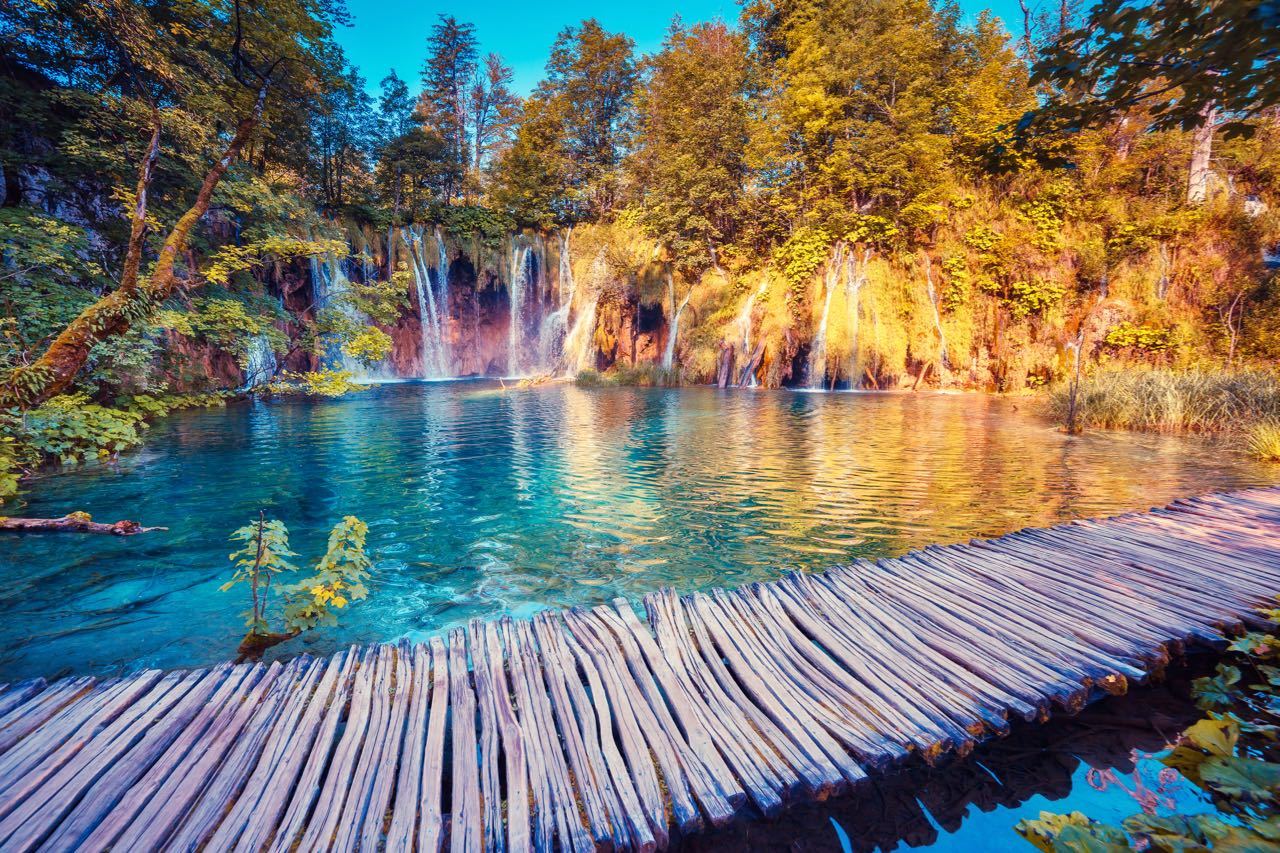
With some of the best European beaches, huge mountains, towering waterfalls , historical towns, tiny fishing villages, and forests home to different species of wildlife, the Balkans are pure natural gold.
We mentioned that most backpackers look towards Asia, but the Balkans have scenery to rival it! I promise you! On a typical Balkan backpacking route, you see spectacular natural scenery, landscapes, and parks, many of which are protected as UNESCO World Heritage Sites . Famous examples are national parks like Plitvice Lakes , Krka, Durmitor, Central Balkan, and Butrint.
Plenty of History to Learn About
Learning about history firsthand is way more fun than flipping pages of a history book, and in the Balkans, there is plenty of history to discover!
With roots back in Pre-Roman, Roman, and Ottoman times, as well as the horrors of the conflicts of the ’90s, you will be able to learn about times gone by in the most hands-on of ways!
If you’re not aware, some of the countries which now form the Balkans were once one country, known then, as Yugoslavia (ask your parents, they’ll know what we are on about!).
Backpacking Europe Alone Is A Rite Of Passage

Backpacking the Balkans is just the place to kick start your gap year – skip Asia and enjoy Croatia, Albania, Montenegro, Bulgaria, Macedonia, and Slovenia instead.
Amazing Gastronomy
If you’re a foodie, you’ll fall in love with the Balkans!
From truffles in Croatia to hearty meat dishes in Serbia , seafood along the Adriatic coastline to all manner of sweet treats as you travel across the region, the food in this part of the world is delightful, and there is undoubtedly something for everyone.
You’ll notice the food differences and similarities in the countries as you criss-cross the Balkans. While some differences might be subtle, they are enough to put a unique stamp on that particular country’s tradition and culture.
Now we’ve told you why you need to backpack around The Balkans; it’s time to get into specifics. We will talk about each country and give you all the low down and vital information you need .
But first, let’s cover a few things to know about backpacking the Balkans that is the same for all the Balkan countries.
These are the Balkan dishes you won’t want to miss!
When is the best time to backpack around the balkans.
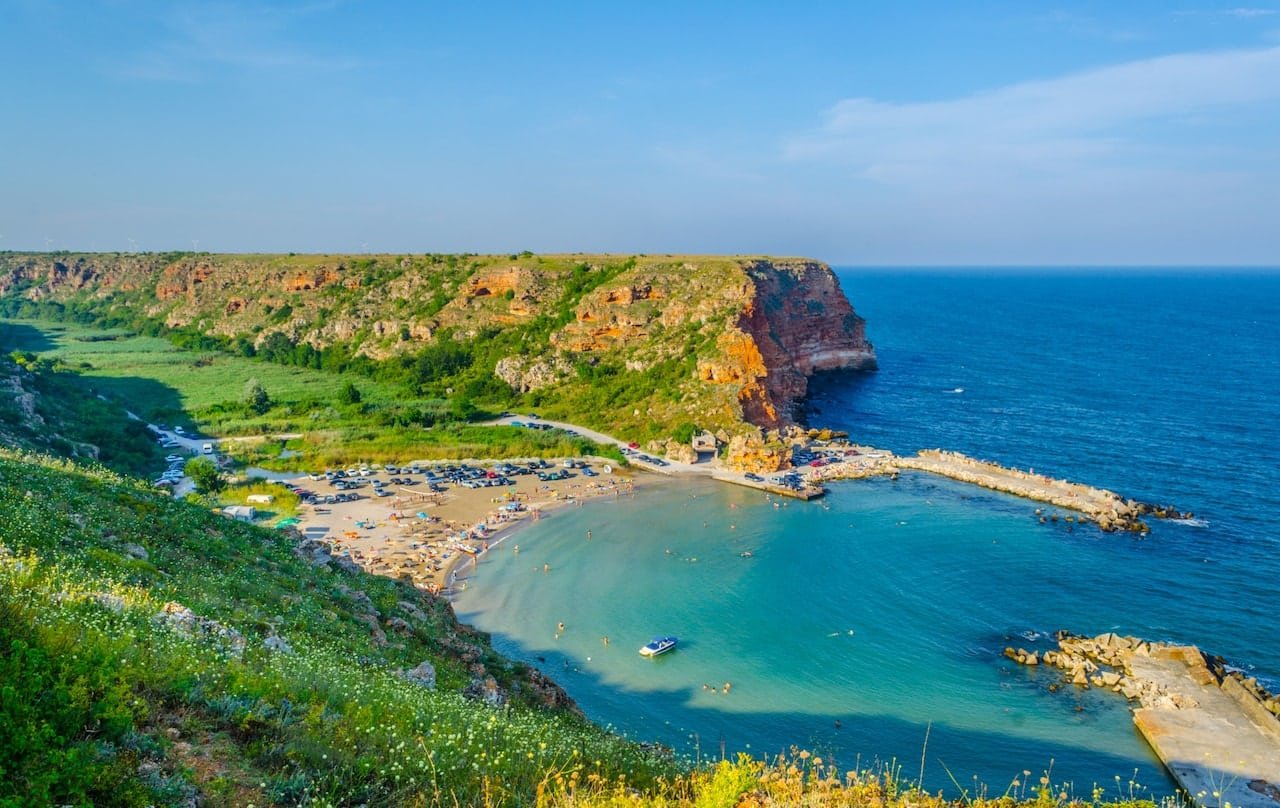
It ultimately depends on what you want to see and how hot you like your weather. During the summer months, the entire Balkans region is hot, hot, hot.
Parts of the region have a Mediterranean climate, i.e., hot, dry summers and cool, wet winters. And, as you move inland, you will notice winters get colder, and it’s not unusual to see snow ( yay, for skiing ).
If you like hot temperatures, July and August are for you. This is when the beaches are packed, and everyone is soaking up the sun and jumping into the sea to cool down.
If you prefer to avoid busy and hot times, the shoulder season months of April to June and September and October are ideal. During these times, you’ll still get hot days, with the odd hot day, but it won’t be unbearable. There might be a higher chance of rain during these days, especially during April and October, but you’re unlikely to experience a total washout.
Be sure to pack a lightweight rain jacket during these months!
Winters can be wet, cold, and snowing in parts, but this doesn’t mean you should avoid visiting the region during these months. The main cities are fantastic during Advent when the streets come alive with lights, dancing, music, great foods, and general fun to be had.
Put simply, there is no wrong time to go to the Balkans; it just depends on whether you like it hot or not!
Where To Start Your Balkans Backpacking Adventure?

There is no specific ‘jumping-off point when it comes to backpacking your way around the Balkans, and there is no specific or prescribed route.
You can either wing it as you travel and go wherever you please, whenever you please, or you can plan it all out beforehand ; it’s up to you. The beauty is that you don’t have to follow a route as there are good connections between many Balkan countries .
However, a good piece of backpacking advice is to pre-book your accommodation ahead of time if you travel during the summer months, particularly if you’re traveling during July and August. This is even more important if you’re traveling in Croatia and its tourist hotspots.
Tourism in the Balkans has skyrocketed over the last few years, and now you can’t walk around Dubrovnik during July and August without experiencing extreme crowds . For that reason, do a little early planning and book ahead.
I always tell backpackers to stick to the non-peak months when heading to Croatia – plus, you’ll save a ton of money! The other countries within The Balkans won’t give you as much of a problem, but July and August in this region will be much busier than anywhere else.
Crossing Borders In The Balkans
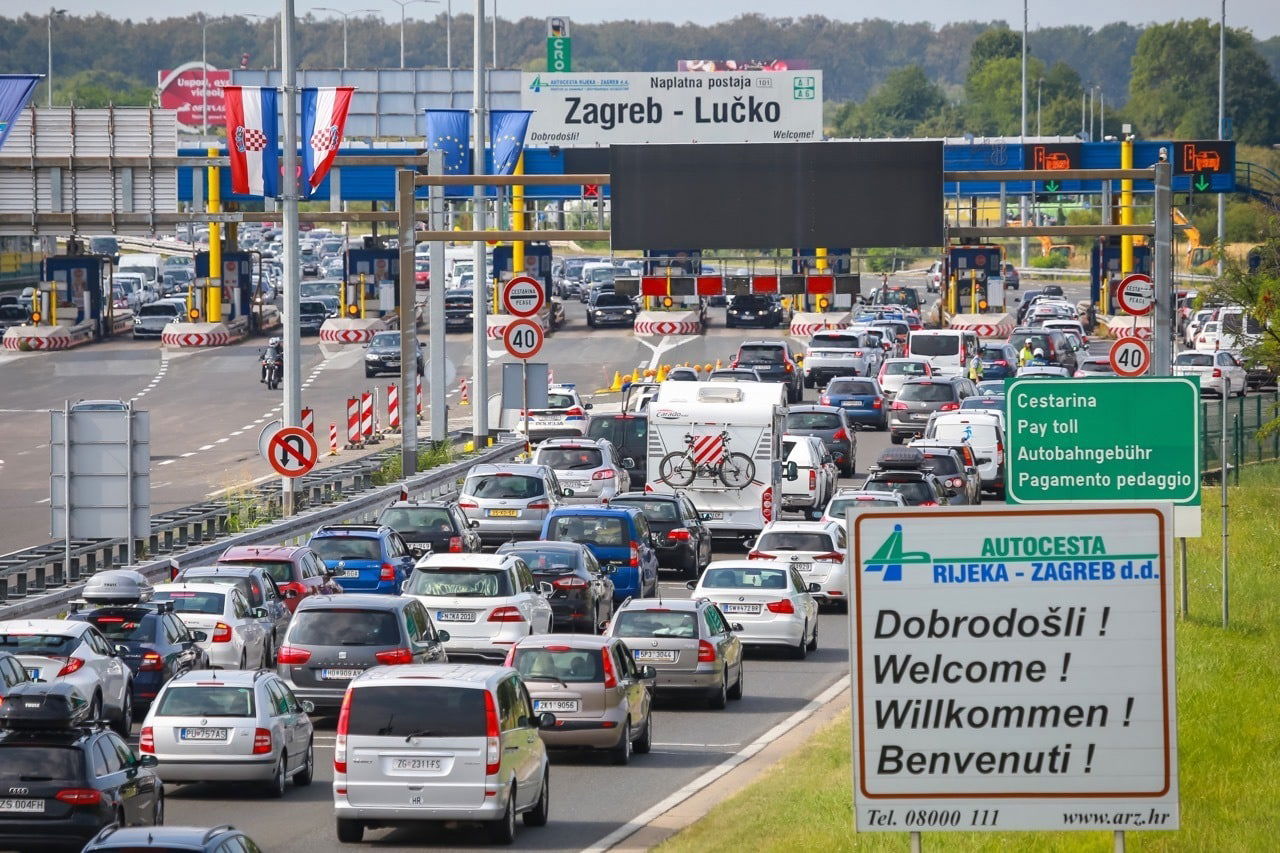
In the following section, we will cover each country and what you need to know, including any visa regulations specific to that place ( here’s the visa info for Croatia ). For now, however, we need to mention crossing borders.
We can only talk here because it depends on where you are from, e.g., your passport’s country of origin and your backpacking Balkans itinerary . So please check with the embassy for the latest visa information specific to you.
Overall, you can easily cross borders throughout the Balkans, and the process isn’t complicated. Sometimes, it can be time-consuming during the summer, some weekends, and public holidays.
Renting a car in the Balkans and exploring the region is a popular activity; note that in the summer months, peak season, you will likely experience delays at the popular border crossings. Sometimes, it can take 3-6 hours to get across in the middle of the day.
- Your passport
- Visa information (if applicable)
- Details of any accommodation you have booked – just in case you are asked to prove your plans
You shouldn’t be asked anything other than this, but there could be additional questions in some cases. Simply be honest, and no issues should come your way.
Border crossing officials in The Balkans are not particularly scary but don’t expect to see a friendly face!
I like to keep my documents in a cross-body bag, which is my favorite secure option.
Backpacking balkans health insurance.
If you are from an EU country, be sure to have your EHIC with you, as many countries have reciprocal healthcare agreements. However, this shouldn’t replace regular travel and health insurance , so be sure to shop around for a good backpacking insurance policy, which allows you to move around various countries within a set amount of time.
For everyone else, get your travel insurance as soon as you book your flights.
This is the best option for Balkan travel insurance.
What to pack: backpacking basics.
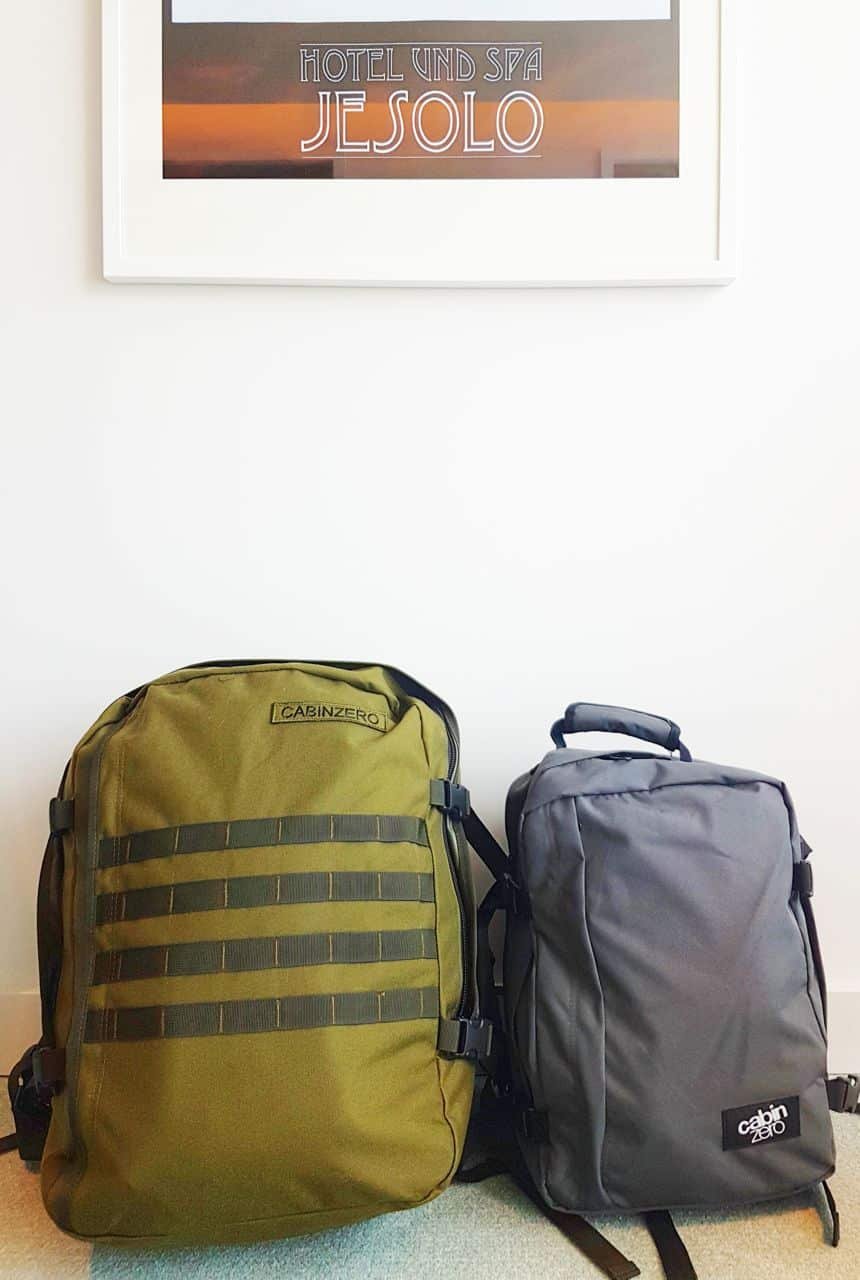
The climate around The Balkans is similar across some countries – but not all. So, besides your backpacking essentials, what else you should pack depends upon which season you’re traveling in.
If you’re venturing out during the summer, it’s swimwear and light summer backpacking clothes. Be sure to pack a good quality pair of hiking shoes , as there are many national parks for you to head into (be sure to look up the Albania hiking tours), and sandals won’t cut it!
If you’re heading to any of the countries in the Balkans in the shoulder seasons , it’s a good idea to take a light jacket, as it could rain at any time. These tend to be light showers, but being prepared is a good idea.
Appropriate backpacking footwear is also something you need to think about at this time. In the wintertime, you’ll need a packable travel coat and a pair of boots, just like in most parts of Europe at this time.
Don’t miss our guide on the best travel backpacks!
Balkan laws to be aware of.
There are no major laws you need to be aware of when traveling the Balkans which stand out from the norm. Please always carry your passport with you when you are out and about, as you may be spot-checked by police at any time.
These passport holders will make carrying your passport easier and safer.
If hiring a car or motorcycle, be aware that speed limits are strictly imposed, and drunk driving in the Balkans is strictly prohibited. Always wear a seatbelt and if you are on a motorcycle, always wear a helmet.
It is common sense to avoid any demonstrations you see while traveling – getting caught up in one of those could quickly end your vacation.
All You Need to Know About Backpacking Balkans – Country-By-Country

Now, let’s get into the specifics – and dig deep into the best places to visit in the Balkans.
We have broken this guide to backpacking the Balkans country-by-country so you can skip ahead to the places you might like to visit.
We added essential facts you need to know about each country. Though many countries share the same visa rules and what to pack , it’s just that there are subtle differences in some cases, and it pays to be informed, so don’t skip over it too quickly.
Though our site is not strictly a backpacking travel blog – we (all of the local writers) have traveled extensively through the area and continue traveling through the Balkans and update this guide as we go – so enjoy!
Backpacking Croatia
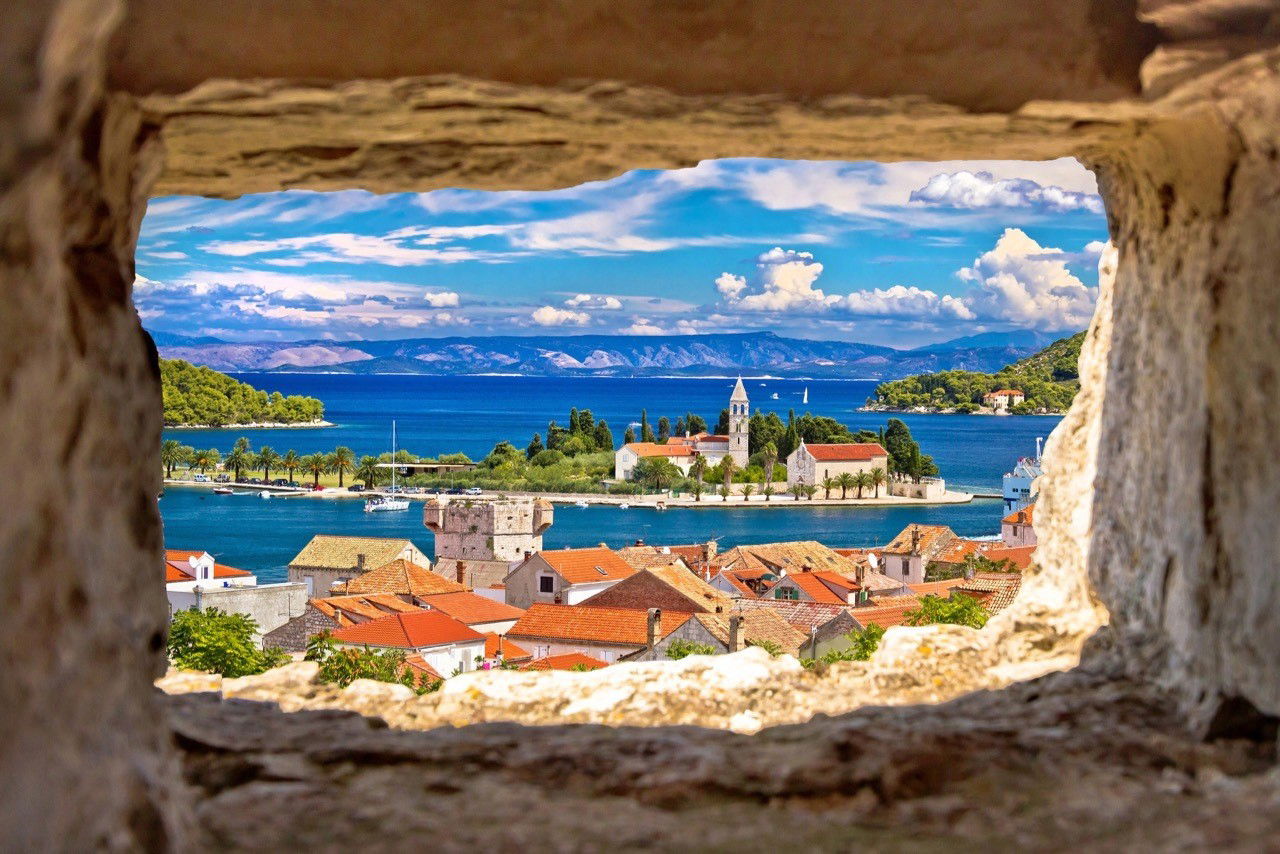
Unequivocally one of the Balkans’ most popular countries and one you must visit as part of your backpacking adventure.
If you miss out on backpacking around Croatia , you’ve missed out on a tremendous experience!
During the summer months, Croatia is very busy indeed (which is excellent for extroverts). It’s not the best idea to try and find accommodation on the fly during July and August – we’re not saying it’s impossible to find, but it’s not as easy as other times, that’s for sure.
Also, walking around the city walls during these two months is quite challenging in Dubrovnik . If you want to explore peacefully, stick to the shoulder or low seasons.
With the stunning beaches of the idyllic Dalmatian Coast , backpacking Croatian islands, the history of Dubrovnik, and the vibrant cities of Zagreb and Split , you’re sure to have the best time in Croatia .
Oh, and if you love food, you’re in the right place too! So, what do you need to know about backpacking Croatia ?
Get from Dubrovnik to Zagreb (or vice versa) with this guide!
Officially Croatian, but English is widely spoken in all tourist resorts and large cities.
Check out some handy phrases in Croatian here.
The euro . Finding an ATM in Croatia’s main towns, cities, and resorts is straightforward, so you can quickly draw cash from your debit or credit card. If you want to take advantage of the best currency exchange rates, change your money in Croatia away from the airports .
Visa Rules & Regulations
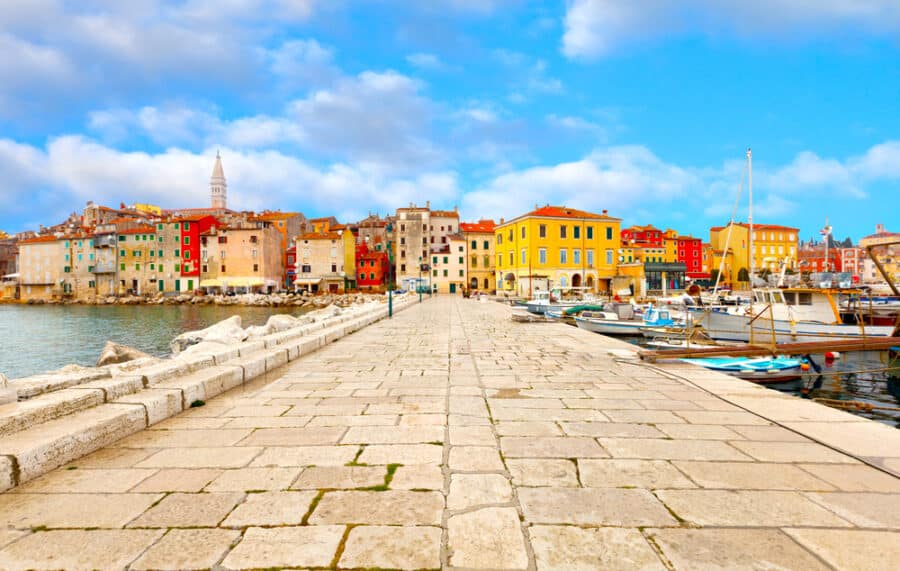
Depending on where you are from will depend on the specific visa regulations for Croatia . Overall, if you are from an EU country, the USA , Australia, or New Zealand, you don’t need a visa, and you can stay for 90 days in any 180 days. If you do not fall into this category, check with your Embassy for specific rules or look here for a guide .
WiFi & SIM Cards
WiFi is widely accessible throughout Croatia, especially in the main resorts, towns, and cities. VIP is the second-largest provider in the country and is linked with Vodafone. There are several options if you want to purchase a SIM card to take advantage of 3G internet access.
You can also use this TEP-Wireless as we do – and you can take it with you to other countries as you go.
Croatia is Catholic, with around 90% of the population declaring this is their faith in the last census.
Budget & Prices

Croatia is without a doubt the most expensive of all the countries in the Balkans, and this is because it is the most popular, but there are ways to visit on a budget .
If you go to the main tourist resorts or cities, you’ll pay more, but if you venture off the beaten track , you will pay less, especially if you eat in local, traditional restaurants and tavernas. Tours are also quite expensive here, but you can often find a bargain or two if you shop around.
- A meal for two people in a restaurant, including wine – Between 150 – 300 KN
- Local beer – Between 15 – 40 KN
- Coffee or cappuccino – Between 10 – 40 KN
- Bottle of water – 10KN
Travel Croatia on a budget with this guide.
Traditional food in croatia.
Croatian cuisine is truly delicious , and it’s a great idea to try whatever you can!
Truffles in the Istria region are must-haves, fresh, and the best around. In addition, seafood on the coast is divine, with famous Croatian oysters certainly on your menu. Raznijci (meat skewers), Zagrebacki odrezak (veal stuffed with ham and cheese), and janjetina (lamb and herbs) are a few dishes to have on your must-try list too.
If you want to stick to international dishes, you won’t struggle to find them, but where’s the fun?
Croatia is a very safe country for traveling around, provided you keep your common sense at the forefront of your mind, and you won’t have any issues.
Types Of Transportation Options
Getting around major towns, cities, and resorts is easy, and traveling distances across the country is just as simple.
Buses in towns and cities are easy to use and run regularly. You can find tickets from major bus terminals within towns and cities, or you can check online for the best rates ahead of time. In the cities, you will also find night buses. In terms of long-distance coach companies, several serve Croatia, your journey will be comfortably air-conditioned, and some buses also have WiFi.
Trains are also an excellent way to get in and out of Croatia – but not to travel from city to city. These are comfortable and relatively cheap. The main lines run between Rijeka, Zagreb , and Split, but they are slow.
Alternatively, you could quickly fly between large cities with Croatia Airlines, which will make your Balkan trip much faster, and the cost is relatively low cost when you think about the time you save. Some cities you can fly between are Zagreb, Split, Pula, Rijeka, Zadar, Dubrovnik , and Osijek.
Ferries are the way to get to the islands , or if you want to splurge, you can rent a boat. There are regular ferry services, either by fast catamaran or car ferry.
However, taxis are a good option if you are trying to travel small distances. Taxis run on the meter, so check that your driver turns it on. If you notice that the meter hasn’t been turned on, highlight this to your driver.
Of course, as with anywhere touristic, there might be the odd instance of a driver taking you on the scenic route to charge you a higher price, so it’s advisable to ask before you get in the taxi for a rough price in terms of how much it might cost you to get to your destination – or use Uber . You should only use marked taxis/Ubers!
Lastly, if there is a group of you, private transfer prices have decreased significantly, so you could book a private intercity transfer and find it cheaper than taking the bus.
You can find many details about getting around in Croatia here.
Avoid the crowds of public transport by opting for private transfers in croatia, backpacking albania.
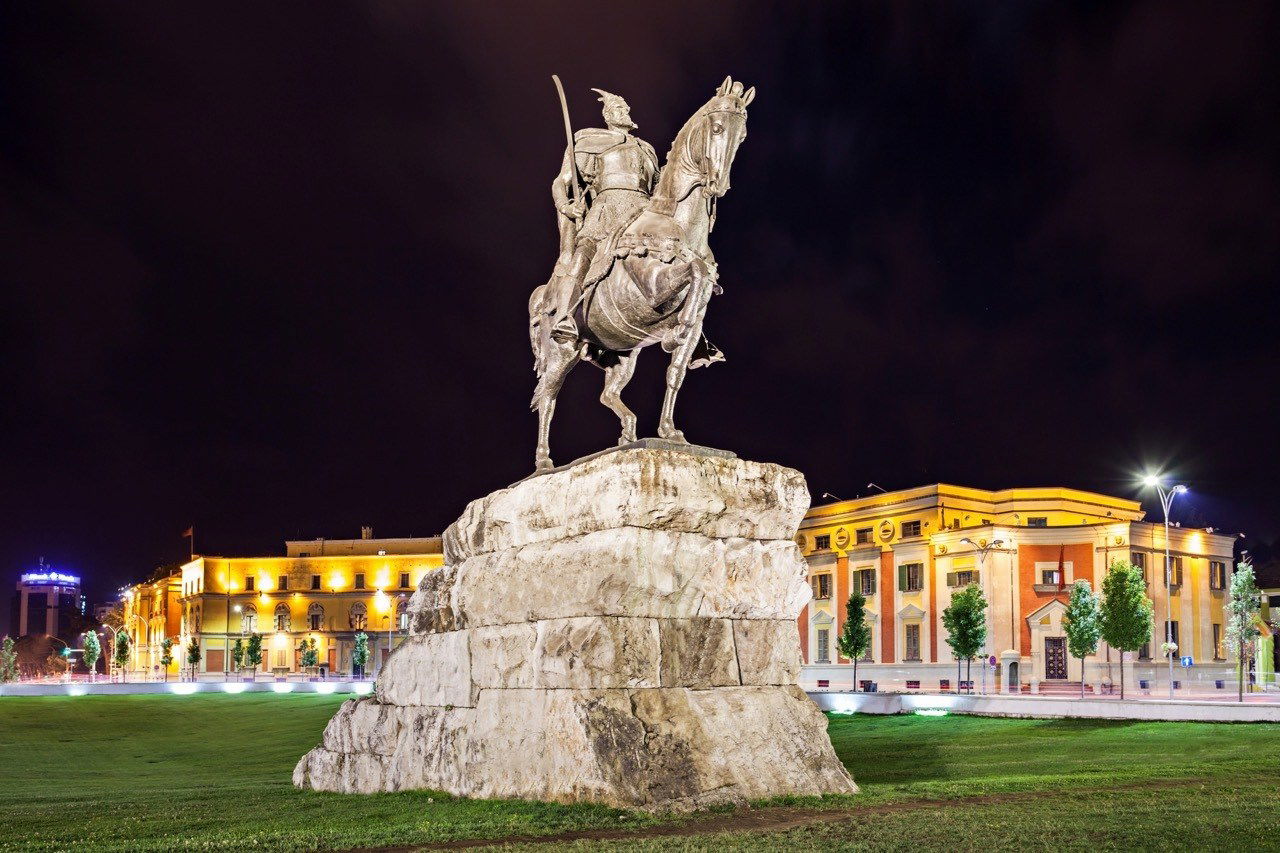
Quite the hidden gem, Albania is a stunningly beautiful country , and it should undoubtedly be on your Balkan backpacking list.
With a coastline on the Ionian and Adriatic Seas and bordering the Albanian Alps, you can expect a range of different landscapes on offer, from idyllic, stunning beaches on the Albanian Riviera , to the soaring mountain ranges as you near the Alps.
Tirana is the capital city , and this is an up-and-coming, vibrant place to spend a little time . The country’s main tourist resorts are ideal for chilling out and exploring the traditional way of life, with Saranda being one of the most popular .
You will also find many historical ruins and castles around the country, teaching you about this region’s history.
A real mixture of languages is found in Albania, including Albanian, Italian, Greek, and English. You won’t struggle to find an English speaker in the main towns and cities, especially along the Riviera.
The Albanian Lek is the official currency of Albania.
While you are backpacking in Albania , you will find ATMs in all major towns and cities, and it is best to change your money when you arrive to get the best rates.

Albania isn’t within the Schengen Zone, but there are a few anomalies regarding who needs a visa and who doesn’t, and how long you can stay. It’s a good idea to check your embassy website online to find the most up-to-date information for your particular country of origin – it’s complicated.
WiFi is widely available in all towns, cities, and resorts, especially on the Riviera and Tirana. Vodafone is the most commonly used company if you want to use a SIM card for 3G access. You can also choose Eagle Mobile, Telekom, or Plus.
The main religion in Albania is Islam. However, you will also find several other religions being practiced, including Christianity.

Prices in Albania depend on where you go. If you stay on the Riviera or in the capital, Tirana, you might notice prices are slightly higher than if you go to the smaller towns and villages around the country. You can budget backpack by eating at local restaurants and choosing a backpacker hostel rather than a hotel.
- A meal out for two with drinks – Around 2300 LEK
- Cappuccino or coffee – Around 150 LEK
- Import beer – Around 310 LEK
Traditional Albanian Food
Albanian food is a melting pot of influences from neighboring countries, which is a great thing for visitors, as there is something for everyone!
Mediterranean diets are pretty standard here, so you’ll see many olive oil products, cheese, fresh fruits, vegetables, etc.
You’ll still find sweet treats such as baklava or a savory pastry called byrek, which could be filled with different choices, but traditionally cheese and spinach. Be sure to try to tase kosi. This is a popular dish worldwide and a dish that closely resembles a quiche, but it is made with lamb and contains eggs and yogurt.
You will find many western food choices and fast food chains within Tirana and the Riviera coastline. You will also find many seafood restaurants near the coast, which should be tried for a fresh catch.
When in Tirana, check out these restaurants!
Albania is super-safe and very welcoming to guests from all around the world. Be aware of pickpocketing in major towns and cities, especially Tirana . Still, crime, in general, is very low in Albania overall , and you should have a safe experience as you backpack the country.
Albania is relatively small, so getting around isn’t a huge deal in terms of distance, but it can be tricky as the roads are not so great.
Getting around towns and cities is generally by local buses, which are cheap and easy to use. While there isn’t an international rail link that serves Albania, there is a domestic one, although it’s not the easiest to figure out! It’s not impossible, though; it will show you some beautiful scenery as you pass by en route to wherever you’re going.
Buses serve major towns and cities, but finding the bus station within a destination can sometimes be complicated, so it’s a case of asking someone you can trust – like your hostel buds.
A very popular way to get around is called a furgon. A furgon is a minibus, but be careful because some are private and not licensed. These are very busy most of the time, especially during summer, but they are a cheap way to get around if you want to save money ! These tend to run around more miniature towns and cities, and they don’t have a timetable much of the time.
Of course, that leaves us with taxis. Taxis are available in all major towns and cities, but they will be a little more expensive in Tirana . However, these are excellent ways to get around short distances or rent your own car on the Rivera. Be sure to secure your price with your driver before getting in, although most will insist on using the meter. In that case, please find out how much the route is likely to cost you before and make it known to the driver. Again, a few tourist scams do occur from time to time – so stay alert.
If you want to rent a car, read more here!
Brands we use and trust, backpacking bosnia-herzegovina.
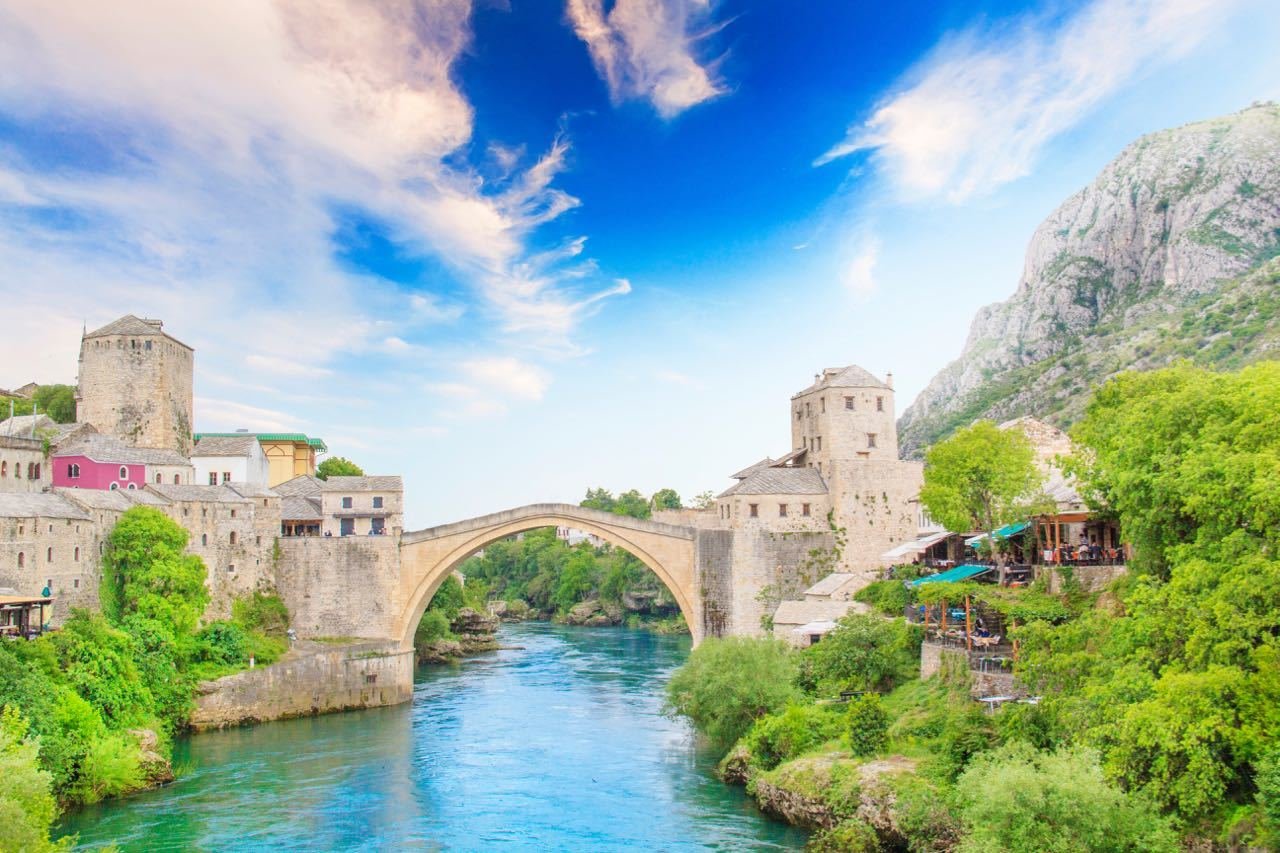
The two former war-torn countries of Bosnia and Herzegovina are now a unified country and are safe and beautiful for backpacking.
Bosnia-Herzegovina’s history is both somber and downright beautiful at the same time. The capital Sarajevo is often famous for the news images from the war of the ’90s, but Sarajevo is now reborn, packed with both old and new sights, and has a vibrant atmosphere.
Mostar and its famous bridge are certainly one of the most famous sights to check out, and that should be first on your list.
Around Mostar , you’ll also find many small museums, literally living museums, of the 90’s war in the Balkans. This country is not all about violent history, as Bosnia & Herzegovina is home to some stunning natural parks , including the Dinaric Alps.
There are three official languages in Bosnia & Herzegovina: Bosnian, Croatian, and Serbian. In Sarajevo and Mostar especially, you will near English widely spoken – so do not be shy.
The official currency is the Bosnia & Herzegovina Convertible Mark (KM). ATMs are available in Sarajevo , Mostar, and other tourist hotspots. To be safe, stock up on some KM when traveling to more rural areas.
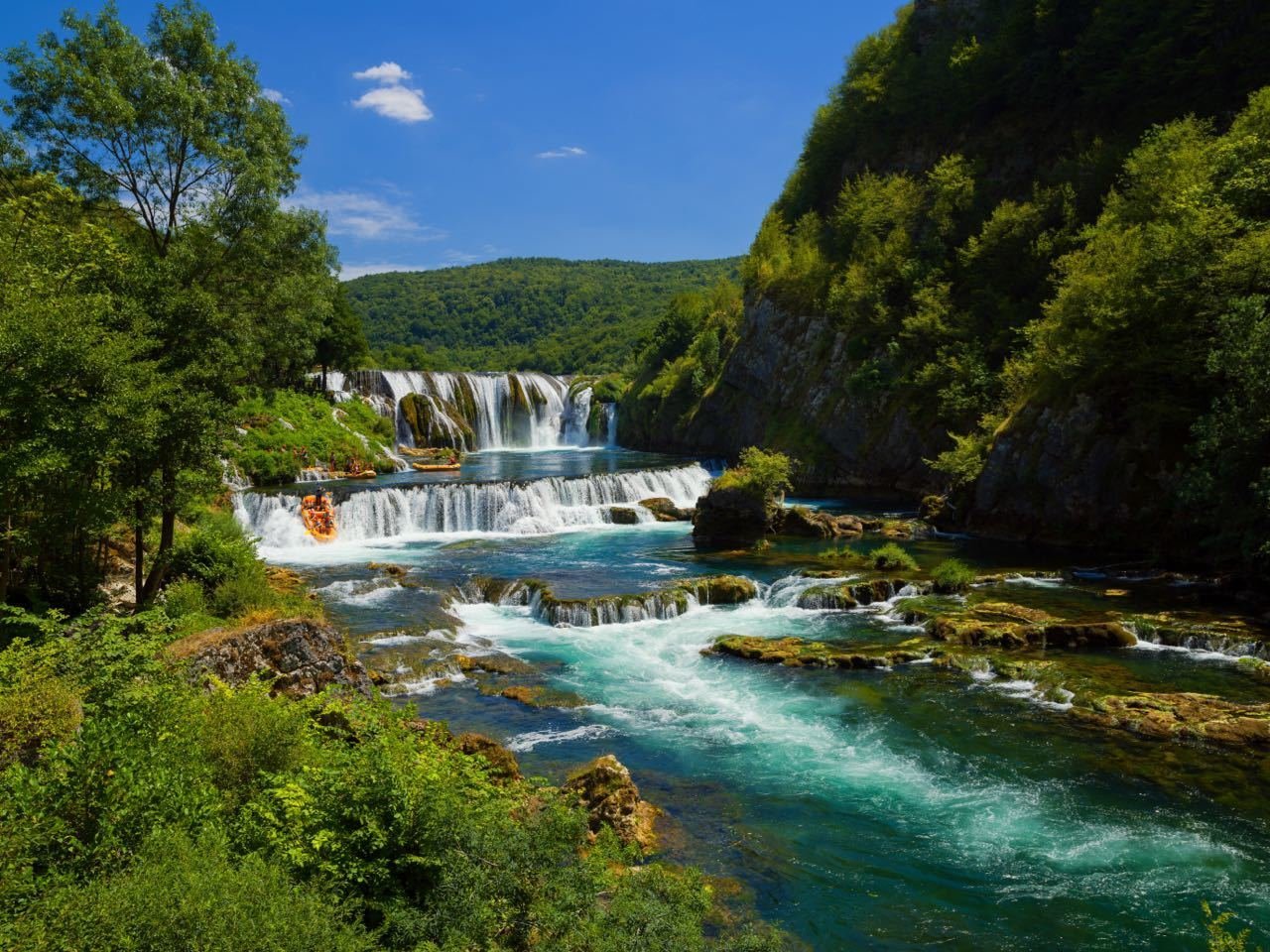
Although Bosnia & Herzegovina isn’t in the Schengen Zone, it does have similar visa rules. However, if you hold a Schengen visa, you can enter the country for up to 15 days. Again, check your Embassy website for the most up-to-date information regarding your country of origin.
WiFi is readily available in large towns and cities, especially hotels and restaurants. If you want to purchase a SIM card to take advantage of 3G coverage, the most popular one is HT Eronet. These can be bought at most supermarkets and phone shops around the country, and it’s not expensive.
There is a real mix of religions in Bosnia & Herzegovina, but the main ones are Islam, Christianity, and Catholicism (it’s home to a world-famous Catholic pilgrimage site ).
Find your Medjugorje accommodation here.
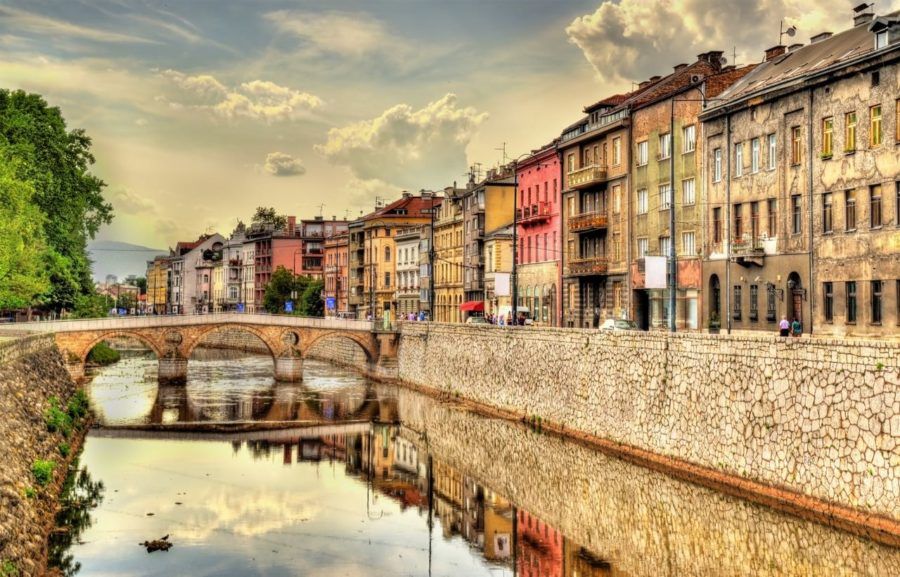
Prices in Bosnia & Herzegovina are pretty low, especially compared to the prices you would pay in western European countries or even its neighbor, Croatia.
Traveling around this country cheaply is possible if you are careful with your cash and choose to eat at local restaurants rather than on the main tourist streets.
As you would expect, Sarajevo prices are higher than anywhere else, and nightlife in the capital can be pricey if you stick to the main nightlife streets.
- Meal for two at a local restaurant with drinks – Around 30 KM
- Cappuccino or coffee – Around 2 KM
- Bottle of water – Around 1.50 KM
- Bottle of wine – Around 8 KM
Find the best deals on Sarajevo accommodation here.
Traditional food.
Bosnia & Herzegovina’s cuisine is similar to neighboring countries within the Balkans, but it has a more Middle Eastern spin to make a slightly subtle difference.
Cevapi are very popular here, served in pitta bread with onions. You’ll find it as street food or in restaurants too. You can make this in so many ways and with various sauces. Yum, yum.
If you’re visiting during colder temperatures, try begova corba, a chicken and vegetable soup dating back to Ottoman times. Very delicious and often served with sour cream .
Again, western-style foods are widely available, but you will pay considerably more for them. Bosnian food is hearty and delicious, so do yourself a favor and try it.
Don’t miss these cafes and restaurants in Sarajevo!
Compared to years ago, travel in and around Bosnia & Herzegovina is ultra-safe. There are a few things to remember, mainly about traveling off the beaten track.
Stick to marked trails if you are hiking , as there is the chance that you might come across uncleared landmines in the countryside. Many efforts have been made to clear up the landscape, but the odd few may remain.
If hiring a car in BiH , be very careful, as many drivers do not adhere to the rules. Again, if you are out in poor weather or on hills and mountains, be very careful, as weather can change quickly and make driving conditions difficult.
Getting around Bosnia & Herzegovina isn’t ultra-difficult, but it is sometimes a challenge. Not all of the infrastructure is there to meet the demands of locals and tourists.
Trains and buses are your main two long-distance options; however, trains can be slow. Buses are therefore your best option.
Be sure to shop around and find the best company for your particular journey, as you usually find great bargains. Large towns and cities have bus stations, and you can book online too.
If you travel by taxi, remember that these should be by the meter. In that case, find out beforehand how much your journey should cost and check that you’re being charged correctly. Prices in Sarajevo are usually a little higher, and always make sure you only use a marked cab.
If you want to rent a car, check out this guide.
Backpacking montenegro.
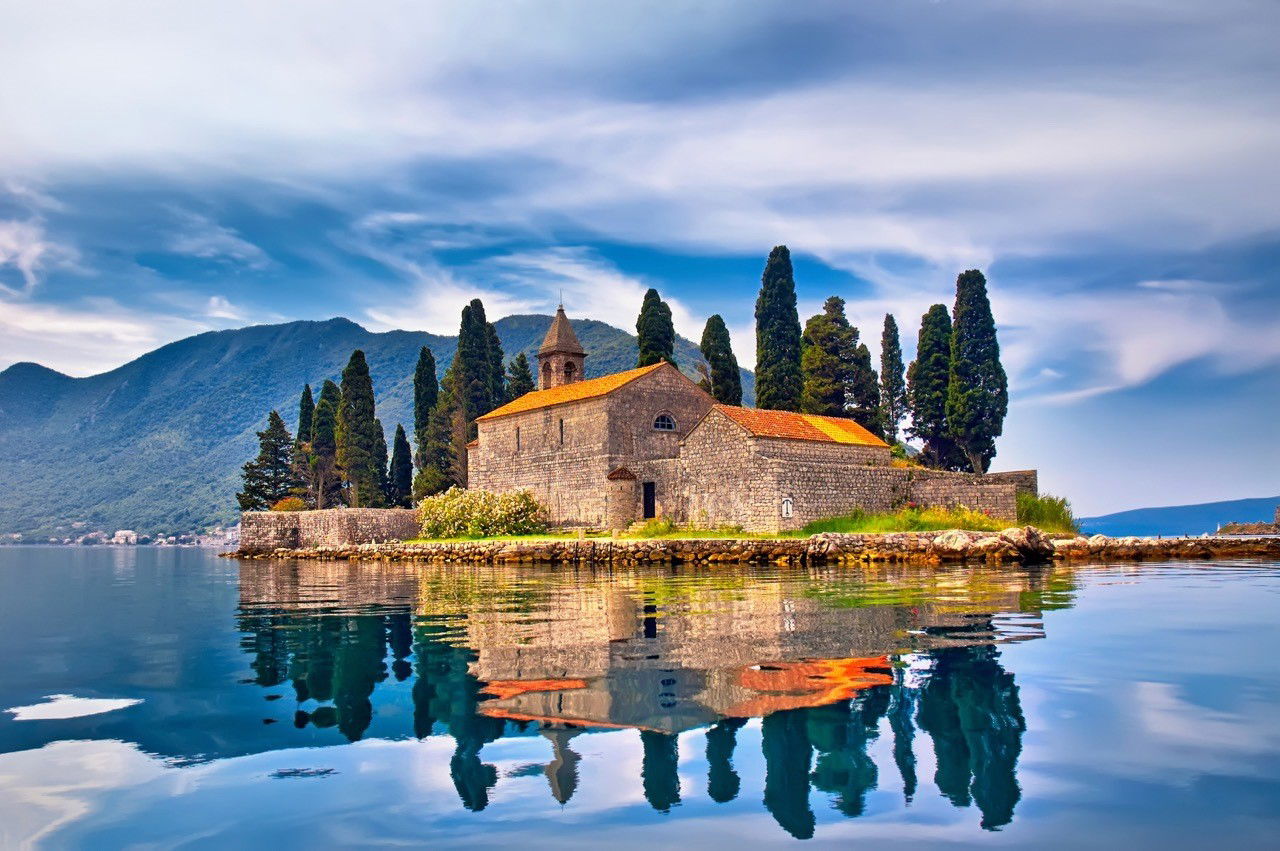
Montenegro is growing in tourism population , so be warned your Montenegro backpacking experience should be well-planned.
The popularity of Montenegro is mainly down to the Montenegrin landscapes. With mountains, villages, beaches, and even a town that looks like a fjord , you will find everything for nature lovers here and plenty of history thrown in for good measure.
The capital city, Podgorica, is a great place to head to for a bit of culture and city life; however, the coastal resorts, including Kotor and Herceg Novi , are some of the best spots for relaxation and scenery. If you want to head into the wilderness, a hike in the Durmitor National Park is a must-do, or you can white-water raft on the Tara River Canyon.
There are so many things to do in Montenegro , so allow enough time!
The official language is Montenegrin; however, languages from other Balkan countries are widely spoken, mainly Albanian and Croatian. English is commonly spoken in the capital city and the main tourist hotspots, especially Kotor.
The official currency is the Euro . Again, ATMs are widely available. You can change your money before you arrive in Montenegro if you choose, or when you arrive.
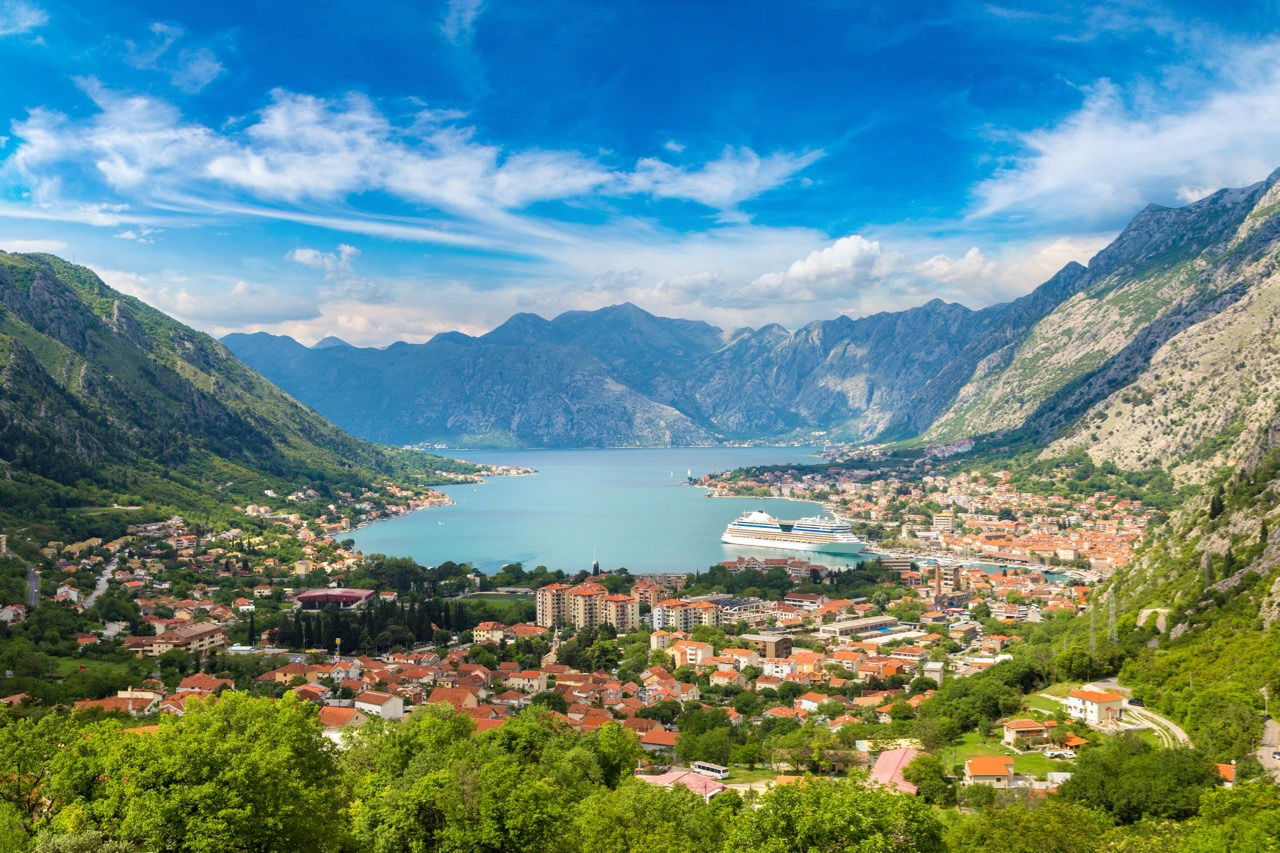
Montenegro is not part of the Schengen Zone, and most visitors can stay for up to 90 days. Having said that, it’s best to check your Embassy website for up-to-date information on your particular country of origin.
WiFi is no issue in main towns and cities; you’ll have access to hotels, hostels , and restaurants. If you want to access 3G, you will need a SIM card. The most popular choice in Montenegro is Telenor.
Orthodox Christianity is the main religion in Montenegro, but you will also find large Muslim and Christian communities across the country too.
Ostrog Monastery is one of the most important Serbian Orthodox monasteries.
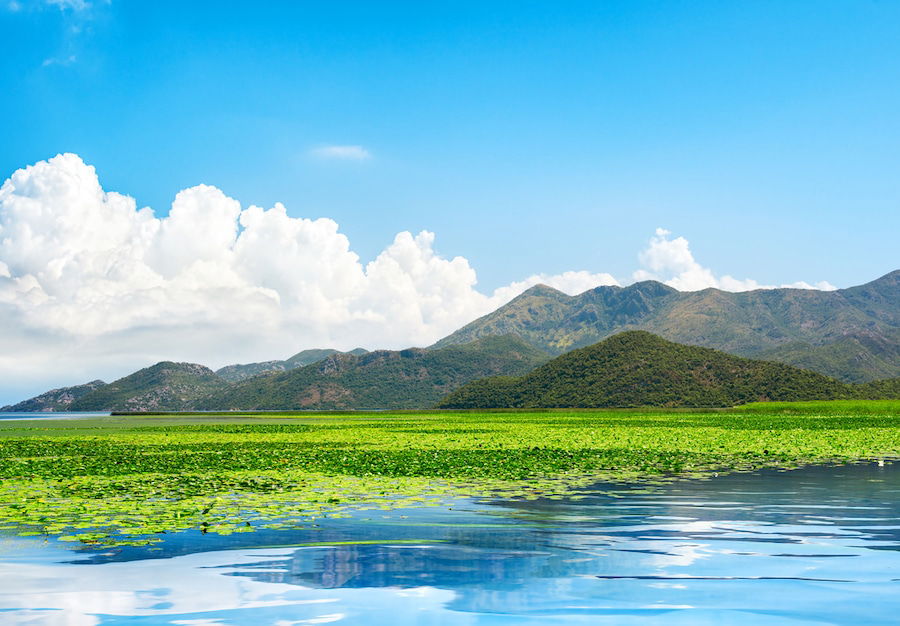
Prices in Montenegro are competitive and, therefore, relatively low compared to western Europe. The same vibe fits across the Balkan region, but if you avoid the main towns and tourist resorts , you’ll find a very low cost of living, including accommodation options.
The Bay of Kotor is probably the most expensive area, simply because, in the summer months, this is where the tourists head to. Check out these accommodation options for any budget in Kotor Bay to keep costs down.
- Three-course meal for two – 25 Euros
- Local beer – 2 Euros
- Coffee or cappuccino – 1.40-2 Euros
- Litre bottle of water – 1 Euro
Check out these beaches for an inexpensive activity.
Food in Montenegro is very similar to its neighboring countries, and you’ll find many nods to Mediterranean dishes and Middle Eastern flavors. Duvec is a must-try, especially if you’re visiting during a cold month. This is a type of stew that is very flavorsome. Musaka od Krtola is a potato moussaka dish, and cufte are meatballs with a slightly spicy kick.
Most food in Montenegro is quite palatable for fussy eaters, making it an easy destination for the whole family to visit . There is nothing too ‘out there,’ and it implies a case of figuring out what dishes are.
For instance, there is nothing scary about meatballs! Western foods are also widely available, especially in Kotor and the capital.
Montenegro is super-safe , and you should have no issues traveling around this beautiful country. Be careful of pickpockets in the main towns and cities, as you would do anywhere else.
There should not be an issue regarding possible landmines while driving around Montenegro, as the country declared itself free of mines over the last few years.
Most towns, cities, and resorts in Montenegro are pretty small, so getting around domestically can easily be done on foot. This is the best way to explore , but this is entirely possible if you want to take a taxi. Most drivers will insist on using the meter and, in that case, check how much the journey should cost you ahead of time. Always use marked taxis and remember that the fare might be slightly higher in the resorts and capital.
You can travel around the country by rail , but it’s not the most comfortable or quickest service around. It is far better to use the long-distance bus network, which is comfortable and very cheap if you book your ticket in advance. Most towns and cities have large bus stations with English-speaking staff.
Check out our favorite travel paths between Kotor, Montenegro, and Dubrovnik, Croatia.
Backpacking macedonia.
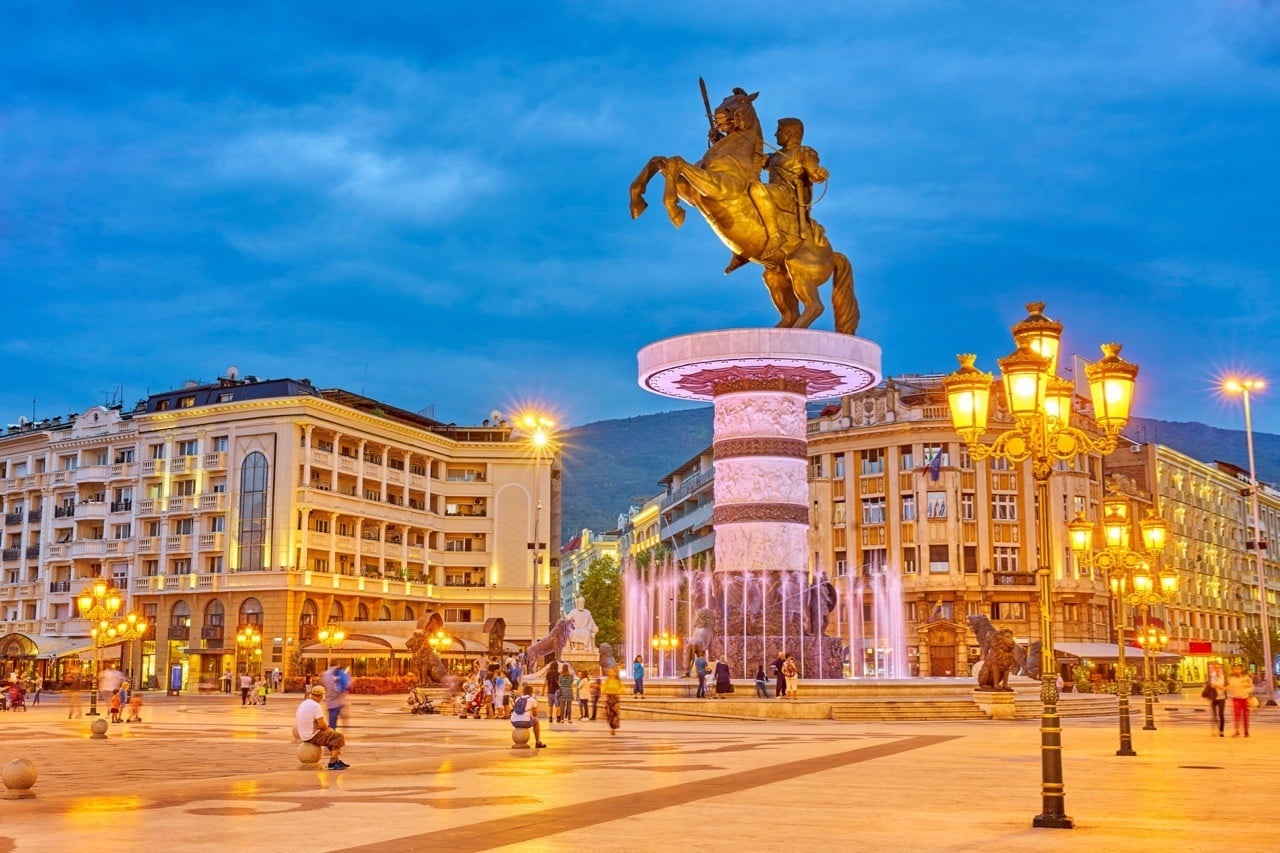
Macedonia is a landlocked country within the Balkan region and is one that will show you some of the best natural sights in the area.
With stunning villages, mountains, lakes, valleys, and hills, you can get some seriously Instagrammable pictures here. While you might think Macedonia is a little less forward-thinking than the other Balkan countries because of its lack of western tourism, you’d be wrong!
We’ve put together a list of things to know before visiting Macedonia to get you up to speed!
You’ll find everything you need here, and the capital city, Skopje, has plenty for visitors to explore and discover history and culture. The architecture here is also quite magnificent and dates back to the Ottoman Empire in many areas . The country’s west also has three large national parks , which will make your jaw drop in terms of nature and wildlife. And you can find a few beaches to frolic in, too (no, really!).
Officially Macedonian, but you will find English speakers in Skopje and other main towns and cities.
Macedonian Denar is the official currency of Macedonia.
Many currency exchange offices and ATMs are in the main towns and cities.

Macedonia is not part of the Schengen Zone, but it does recognize the visa if you hold one. It is worth checking your Embassy website, as with other Balkan countries, as these subtly differ according to your country of origin.
Generally speaking, most people are allowed to visit for up to 90 days.
WiFi is widely available across the whole of Macedonia. However, as you near the national parks, you may notice gaps in coverage. In this case, purchasing a SIM card will allow you to connect to the 3G network.
The most common SIM cards in Macedonia are Telekom and VIP. You can purchase these from the airport or supermarkets/phone shops in the capital and large towns.
The main religion in Macedonia today is Orthodox Christianity, although you will find a range of minority religions, including Islam and Catholicism.

Prices in Macedonia are very affordable for backpackers, provided you steer clear of major restaurants in the capital and other main towns. Eating locally will cost you very little, and you can try several street food options too.
- A meal for two, including drinks (three courses) – 900 MKD
- Coffee or cappuccino – 62 MKD
- Local beer – 80 MKD
- Litre bottle of water – 38 MKD
Find our favorite accommodations for all budgets in the capital of Skopje here.
Don’t forget to save some cash for a few traditional souvenirs too.
Macedonia food is a real mixture of Mediterranean and Middle Eastern flavors. This means you can pretty much find anything you like, and all of it tastes great.
Turli Tava is a great dish to try and is also packed with vitamins and flavors. This is mixed vegetables with meat (usually lamb or beef). Polneti piperki are stuffed bell peppers with a real kick, and sarma hints at the Middle Eastern take on food: cabbage leaves rolled around rice and meat.
While western-style food is available in Macedonia, it isn’t as widely available as in other Balkan countries. You’ll have no problems finding fast-food chains in the capital, but they might not be as available everywhere else. Again, this isn’t an issue if you’re keen to try local food and eat relatively cheaply as a result.
Don’t miss these restaurants when visiting Ohrid!
As with all other Balkan countries, Macedonia is a safe country to visit, provided you always keep your usual common sense with you.
If you notice demonstrations, particularly in Skopje, avoid them and move on. If you are traveling near the border with Kosovo (in the north), be aware that some groups are active here, but attacks on tourists are infrequent.
Traveling around Macedonia is relatively easy, and there are high-quality bus links that will transport you in comfort and are cheap.
You can use the rail network; however, it can be a little slow, and you have to bear in mind that much of Macedonia is mountainous, which limits things somewhat. There are some towns which are inaccessible via train.
The capital has two large bus stations with domestic buses and long-distance options. You can purchase tickets from the bus station or book online for the best deals.
Traveling via taxi in Macedonia is quite a common thing. Only use marked cabs for your safety, and avoid getting in taxis that hang around outside train and bus stations, as these are much more expensive. You can get the number of a reputable taxi company from your hostel or hotel, which will always be the cheapest and safest way to travel by taxi. Fares are also by the meter.
In Skopje , you will find shared taxi minibusses, which will wait at the bus station and shout the destination’s name. The taxi will leave when the vehicle is full. This is a super cheap way to travel. The capital city also has car rental options if you prefer to travel at your own pace.
These small towns are perfect for weekend getaways!
Backpacking serbia.

If you’re visiting during the winter months, a ski break in Serbia is a must-do! A genuinely natural country with some fantastic scenery, Serbia isn’t one of the most visited countries, but that makes it special in many ways.
Belgrade is a very diverse and unique city , with plenty of history to explore and architecture dating back to the communist era in history. Kalmegdan Park is a must-visit, and this is where the former fortress was situated. This has nods to Byzantine, Roman, and Ottoman history, and if you venture further to Stari Grad or the city of Novi Sad , you will find even more historic buildings to explore.
Don’t miss exploring the Serbian countryside!
Serbian. You will hear other Balkan languages widely spoken around the various destinations and English in Belgrade especially.
Serbian Dinar. ATMs are widely available in Belgrade and major towns and cities.

Most visitors can stay for up to 90 days but check with your embassy for specifics relating to your country of origin. Serbia isn’t currently within the Schengen Zone. If you have a stamp from Kosovo in your passport, you may have issues entering Serbia so keep that in mind when planning your route.
There are no issues with access to WiFWiFi in Belgrade and the main towns across Serbia. The most common type is VIP, Telenor, and MTS. You must purchase a SIM. IM card if you want to access 3G and use your phone freely. You can also buy a dongle that attaches to your laptop or tablet.
The Serbian Orthodox Church is the main religion in the country.
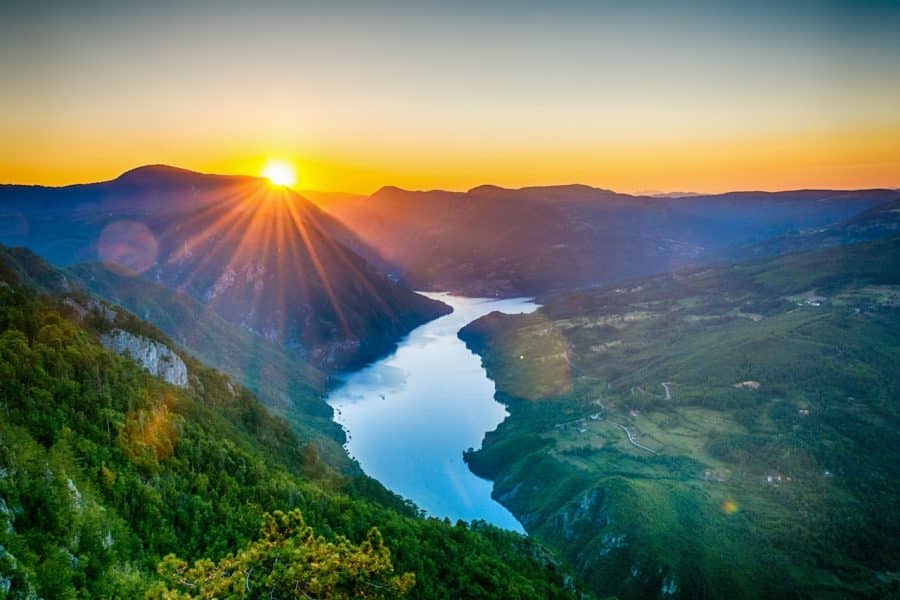
Serbia is a very budget-friendly country for visitors, and even in Belgrade, you will find low prices for food and drinks. This is another hotspot for those seeking cheap weekends away and stag parties, so nightlife prices are pretty low compared to other nearby places.
- Meal for two with drinks (three courses) – Around 2300 RSD
- Coffee or cappuccino – Around 130 RSD
- Local beer – Around 150 RSD
- A liter bottle of water – Around 85 RSD
Find the best deals on Belgrade accommodation here!
Food in Serbia is influenced by every country around it and hints of the Middle East. Very meat heavy, it is also hearty and truly delicious, so be sure to try a few local dishes to give you a ‘taste’ (pardon the pun) of the country’s heart.
Sarma is commonly found in Serbia , e.g., vine leaves filled with meat and rice. You’ll also find something called karadjordjeva snicla, which is a schnitzel served with tartare sauce. Prebranac is also a favorite during the winter months and is a hearty bean soup/stew.
Again, western-style foods are everywhere, especially in Belgrade , but they will cost you considerably more. If you’re trying to keep costs low, stick with traditional foods and follow the locals.
Skadarlija, Belgrade has some great food spots!
Very safe, Serbia is ideal for any traveler , backpackers included. If you encounter these, it is likely to be somewhere in Belgrade; however, they aren’t common. Again, keep your wits about you, use common sense, and avoid demonstrations if you see them.
Serbia’s transportation network is very well developed, and getting around is no issue . You will find the Beovoz, the urban railway network in Belgrade, but you can also use local buses for a meager price. The Beovoz is best because you don’t have to deal with traffic, which can be high in Belgrade during rush hour.
Getting around the country is relatively easy, as there is a well-established rail network and long-distance buses. The buses usually work out a little cheaper than the trains, but it is possible to get discounts and bargains if you shop around and book online.
As with all other countries mentioned so far, have an idea of what the journey should cost, and make it known that you have this knowledge. If you use a taxi, consider that prices are considerably higher in Belgrade. It is also essential to check you are getting into an official taxi for your safety and cost-effectiveness.
Backpacking Bulgaria
Ohhhhh Bulgaria . Ideal for ski holidays during the winter and beach breaks during the summer , Bulgaria is also home to great history and architecture while being a friendly and welcoming country.
Sofia is the capital , a fascinating city, no matter your interests. Prices are pretty low here regarding eating out and nightlife, which is why so many people choose to head here for the weekend, at least. Overall, Bulgaria is known for being low-cost .
The Black Sea coastline is stunningly beautiful, and you also get to check out the Danube River and those huge mountains we mentioned earlier. Packed with influences from all major empires throughout history, even the capital city has a major history dating back to the 5th century BC.
Looking for more reasons to visit Bulgaria?
Officially Bulgarian, you will hear many other languages, including Turkish and English. English is widely spoken in tourist resorts, ski resorts, and Sofia .
The Bulgarian Lev is the official currency. Again, you will find ATMs quite widely. You may also find that the Euro is accepted in certain places, but don’t rely on this as a certainty, as it is pretty hit-and-miss.

Bulgaria is currently not in the Schengen Zone, and while there are a few anomalies, most visitors can stay for up to 90 days in 180 days. Be sure to check with your embassy for specifics on your country of origin.
WiFi is available widely across Bulgaria, and all restaurants, resorts, hotels, hostels, etc., will have access. If you want to purchase a SIM card for your cell phone, then Telenor, Vivacom, and A1 Bulgaria are the leading choices for you to look at.
Bulgarian Orthodox is the main religion found in Bulgaria . However, you will also easily find Catholics, Christians, and Muslims across the country.
Don’t miss these beautiful monasteries on your travels through Bulgaria!
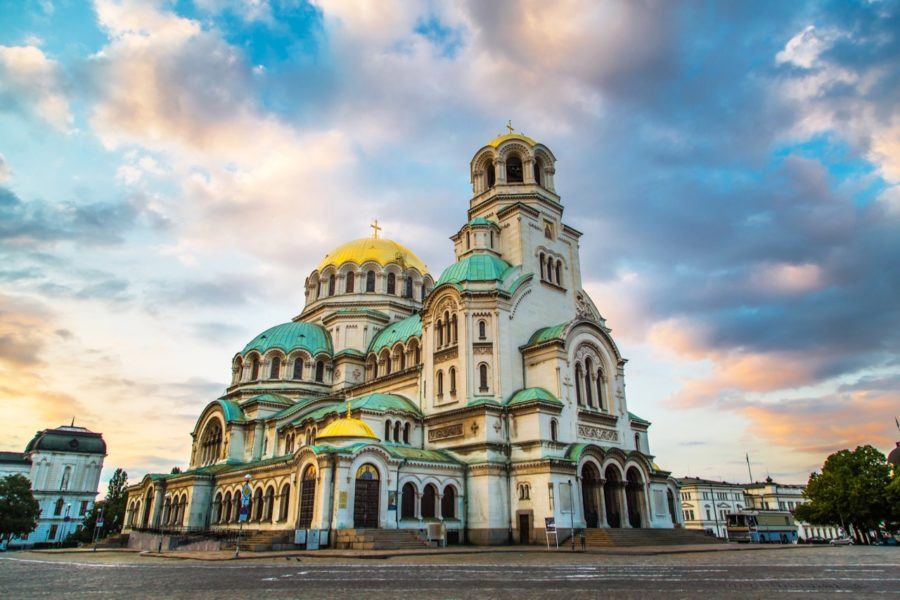
Prices in Bulgaria are very low , and they have been for many years. For this reason, Bulgaria remains a holiday hotspot for many people and another of those city break places that everyone loves for cheap beer! Sofia is low-cost for eating out and nightlife, and while the main holiday resorts , such as Sunny Beach, are higher regarding tourism costs, if you avoid the main restaurants and stick to local places, you should find price tags are far less.
- Three-course meal for two people – 40 BGN
- Local beer – 2 BGN
- Coffee or cappuccino – 2 BGN
- One liter bottle of water – 1 BGN
Bulgarian food, at its heart, is very meat-orientated and hearty, making it delicious!
Of course, western-style foods are very prevalent in the main tourist resorts and Sofia itself, but you will pay more if you choose them. Instead, opt for local dishes. Kebabce is a long, grilled kebab that is as filling as it is delicious. If you love moussaka, be sure to try the Bulgarian version, called musaka . This is made of pork, potatoes, and eggs and is a national treasure, but if you’re feeling adventurous, try shkembe chorba, a spicy tripe soup!
Bulgaria is super-safe , so you should have no issues, provided you keep your common sense to the fore. Again, the biggest problem is pickpocketing in the main resorts and cities, especially in Sofia. Don’t flash the valuables; always keep your bag close to you.
Getting around Bulgaria is very easy and relatively cheap in many ways. You can cut down on time if you want to fly, and there are airports in Sofia, Burgas, Plovdiv , and Varna. Of course, this will cost you more cash , so you should stick to long instance buses or trains. These are cost-effective and very comfortable.
All major towns and cities have bus and railway stations so that you can find the best option for you. Rail will show you the best scenery; however, it will be slower than the bus. The bus also runs much more frequently.
If you’re going for taxis around short distances, be aware that the main tourism problem of taking the scenic route is alive and well in Bulgaria, especially across the tourist resorts and Sofia. You should ask for the price before you get in, but if they insist on the meter, ensure you know how much the journey should cost. Stick to marked taxis, and have the number of a reputable company in your phone for extra safety and low prices.
Make sure to travel to these UNESCO sites in Bulgaria!
Backpacking slovenia.

The natural beauty you will see in Slovenia is second to none, and the lack of major crowds will be such a refreshing change if you’ve visited Croatia first!
Slovenia is known for its nature, and we’re talking about excellent ski resorts, mirror-like lakes , and huge mountain ranges. Balkan backpackers who love nature photography, hiking, or gazing in wonder will love it here!
Be sure to head to Ljubljana , where you can check out medieval architecture and history. A few highlights include Triglav National Park , Postojna Cave, and Lake Bled . The latter is home to hot springs and a huge medieval castle. If you want to soak up the sun on a beach, it has to be Portoroz Beach, on the Adriatic coast.
Here are great places to stay all around Slovenia.
Officially Slovenian, but you will find Hungarian and Italian also widely spoken. In large towns and cities, English is also ubiquitous.
Euro. ATMs are very widely available in large towns and cities.
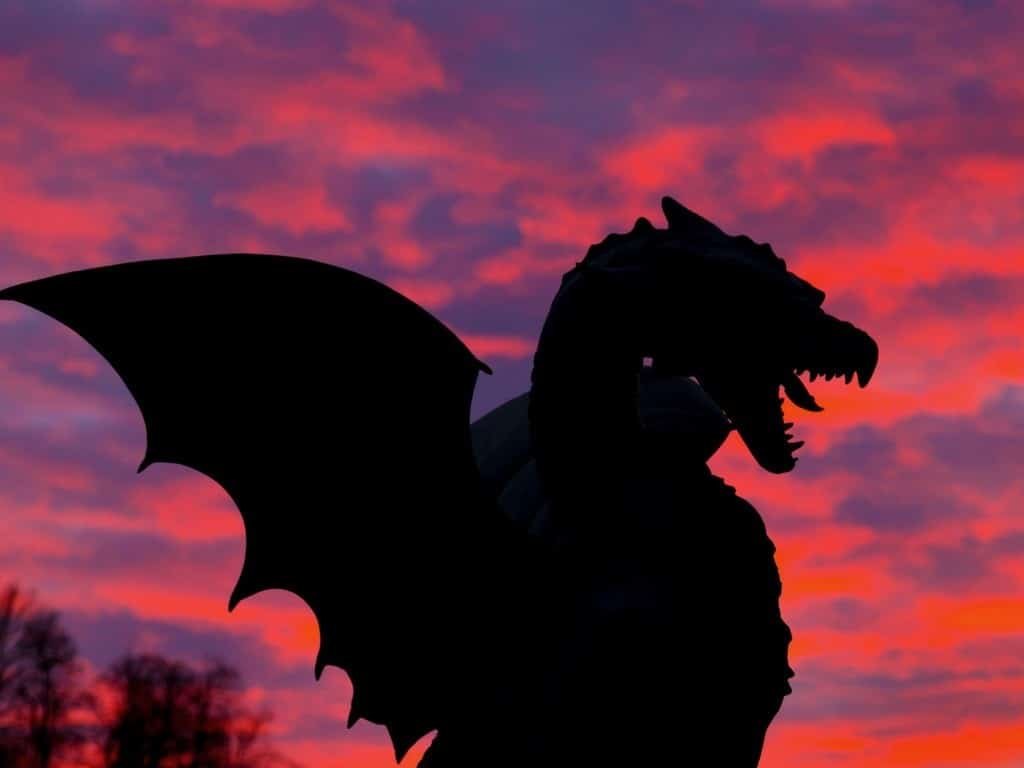
Slovenia is part of the Schengen Zone, and to check the specific visa requirements for your country of origin, it is best to head to your Embassy website.
WiFi is easily accessible in Ljubljana , Bled, and the other major towns; however, you might struggle to find widespread WiFi coverage in smaller, off-the-beaten-track towns. For this reason, many backpackers purchase a pay-as-you-go SIM card to use 3G coverage.
There are several options, but your main options are Telekom Slovenije, A1, and Telemach Mob. You will see T2 cards, but these do not offer pay-as-you-go.
There are many different religions in Slovenia, but the main ones you will find are Christian-based.

Ljubljana is known for its cheap alcohol prices and is a stag party hotspot . If you’re considering partying it up, that is probably the best option for a cheap night out!
Traditionally, Slovenia is quite a low-cost country and much lower in price than Croatia. The capital is more expensive than the rest of the country. However, you may come up against some pricey restaurants with views over Lake Bled .
- Lunch in a city with a drink – Around 9 Euros
- Basic dinner for two – Around 25 Euros
- Coffee of cappuccino – Around 2 Euros
- Local beer – Around 2.50 Euros
Ljubljana will show you a wide range of western choices should you want them, but local cuisine is there to be enjoyed. Slovenian dishes are hearty and meat-based , with Carniolan sausage (krajnska klobasa) a favorite.
This sausage is made of pork and seasoned with garlic and other spices before being smoked. Delicious. Bleki is a pasta dish you should try, and struklji is a favorite you will see everywhere. Depending on your taste, this kind of dough is stuffed with sweet and savory choices. If you have a sweet tooth, be sure to try Bled cream cake , for sure.
Overall, Slovenia is a very safe place to travel , other than the usual petty theft and pickpocketing issues that arise in all countries, especially when backpacking around the world across large cities.
We mentioned demonstrations and gatherings before, and these do occasionally happen. If you see one, avoid it, and you should be fine. For that reason, keep your bag and belongings close to you wherever you are, especially in Ljubljana and Bled.
Don’t miss our guide on what to do in Bled!
Types of transportation options.
Getting to major towns and cities is relatively easy, thanks to several long-distance coach services that run between destinations. There are also rail links if you prefer a more scenic route, as trains will generally take you across some rather jaw-dropping landscapes.
Of course, if you prefer to rent a car , you can certainly do that, and the roads in Slovenia are very high-quality. You may notice congestion during summer, especially if you head towards the Adriatic coastal section or around Lake Bled .
Hiring a bicycle is an excellent way to get around towns and cities, and Slovenia has a real push to go ‘green’ and be more cycle-friendly . You can hire a bike from many local companies or your hotel/hostel reception in many cases.
If you choose to use taxis in Slovenia , be aware that these can be expensive, and there can be the odd tourism con, e.g., taking tourists on the long route and charging them more. Have an idea of how much your route should cost you (ask a server or a receptionist in your hostel), and secure the price before you get in. If the driver insists on using the meter, make it quite clear that you know how much it should cost and how to get there. Taxis in Ljubljana and Bled are plentiful, but always make sure you use only official, marked taxis.
Backpacking Greece

Greece is a vast country; people don’t realize the sheer size. Not only do you have the mainland to explore but also the islands.
Getting around is also very easy as Greece has a great network of roads and high-quality public transport. To get to and from the islands, you have a very comprehensive ferry network – many people island hop throughout the summer months to get a taste of the distinct way of life on each island – don’t think they’re all the same; they’re not!
Of course, Athens is the capital and the starting point for most people, yet during the summer months, you’ll find flights into Greece at various points. Perhaps you prefer to start backpacking on an island and head up to the mainland, or vice versa. The choice is yours.
Archaeological sites you’ve got to see to believe!
Greek is the official language, but English is widely spoken across the country, especially in Athens and on the islands, where tourism is the primary source of income.
Greece uses the Euro; however, you can easily use ATMs around the country and pay with a card in the most prominent restaurants and bars .
Of course, having a small amount of cash with you is always helpful when backpacking.
Visa Rules & Regulations

Greece is part of the Schengen Zone, and you can therefore stay for up to 90 days in any 180 days. There is also a digital nomad visa available in Greece , which may be helpful to some people.
Greece’s internet is good in the main cities, e.g., Athens in particular, but away from there, you may find it a little slow, especially on the islands. However, WiFi is widely available.
Greece has four main phone networks – Cosmote, Vodafone, WIND, and Q Telecom. You can get a SIM card for around 20 Euros and then top up your phone with credit from stores and markets.
Officially, Greece is secular; however, it is heavily influenced by the Greek Orthodox Church.
We highly recommend visiting the Meteora Monasteries!
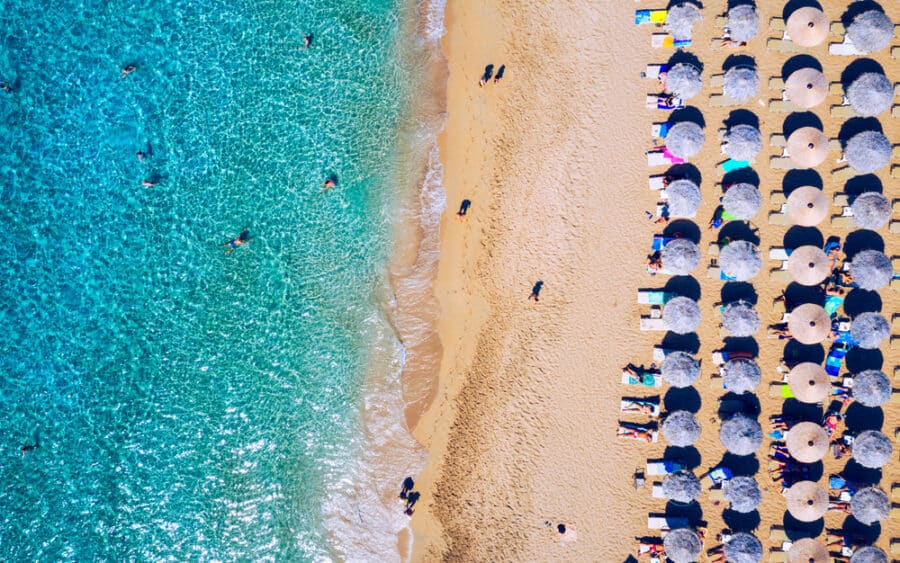
Greece isn’t the cheapest country in Europe, but it’s certainly not the most expensive either. It’s perfectly possible to backpack around the country on a budget and still see and do everything on your list. It would be best if you were mindful of where you’re staying and what you’re spending your money on. You can avoid problems and keep cash in your pocket by making careful choices.
- Meal for one in a regular restaurant – 12 Euros
- Cappuccino – 4 Euros
- Domestic beer – 4 Euros
- Soft drinks – 1.50 Euros
Eating locally in Greece is a must because the food is delicious ! You’ll find grilled meats and salads everywhere, especially souvlaki. This favorite fast-food consists of chunks of pork on the grill served with onions and tomatoes on bread. It’s often covered in tzatziki too.
Gyros is another firm favorite, while you should check out moussaka, local olives, fresh fish, feta cheese, and baklava .
There are no significant safety concerns in Greece other than regular common-sense issues. Athens can be a little dangerous at night in some parts, so it’s not a good idea to walk around on your own after dark. However, for the most part, Greece is a very safe country for traveling solo and backpacking.
Greece has an excellent public transport network, and you can get around by road, bus, or train; there is a comprehensive network of ferries between major islands all year round.
Here’s how to rent a car in Greece.
Backpacking turkey.

Many people don’t realize how big Turkey is – it’s enormous. While most of the main cities and resorts are in the country’s west, you should certainly check out the central region and the southeast for major history, landscapes, and delicious food.
While Turkey’s train network isn’t the best, you can get around by bus very quickly, and there are also many domestic flights between major cities too.
Backpacking around Turkey will allow you to see the major differences between regions and say you’ve explored and immersed yourself in the culture and traditions.
The official language is Turkish, and English is widely spoken in major cities and resorts. As you venture further away from the main tourist resorts, you may find that fewer people speak English, but you will never have a real problem because there will always be someone around who does. If not, Google Translate is always a winner!
The Turkish Lira is the currency in Turkey . However, you can often pay in Dollars, Euros, or Pounds in the major tourist resorts during the summer months. Away from there, you can also pay with international debit or credit cards in large bars and restaurants.
ATMs are very plentiful.
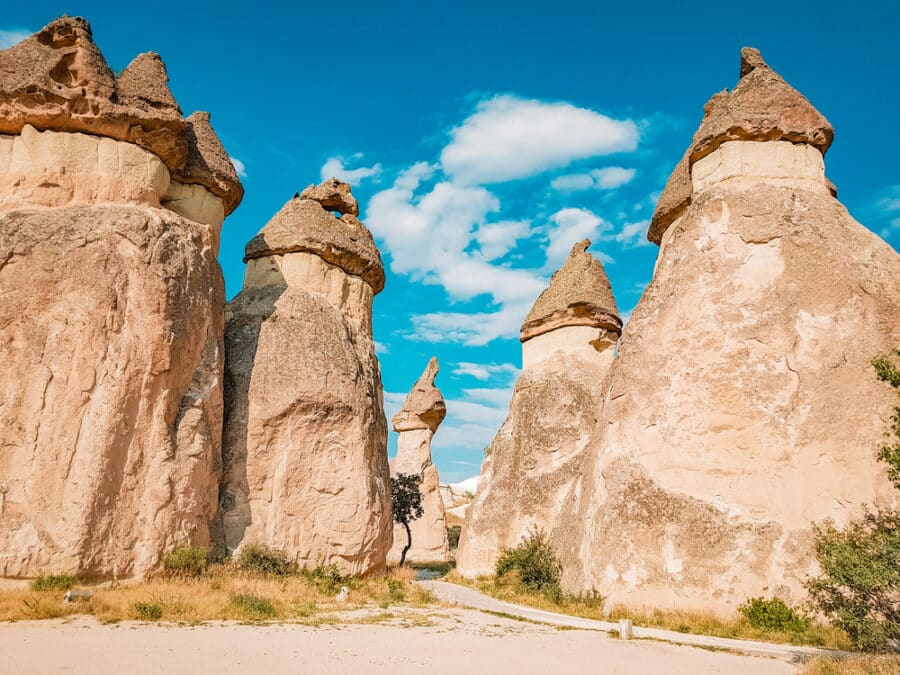
Turkey is not part of the Schengen Zone, but the rules are generally the same. You can stay for 90 days in any rolling 180 days. Those who want to stay longer should then apply for a residency permit.
WiFi is available widely in Turkey and is mostly of a good standard. Major phone networks allow you to purchase a SIM card for an unlocked phone, namely Turk Telekom, Turkcell, and Vodafone.
Turkcell also has a tourist package that allows you to have a certain amount of data and call allowance during your stay.
Turkey is a Muslim country.
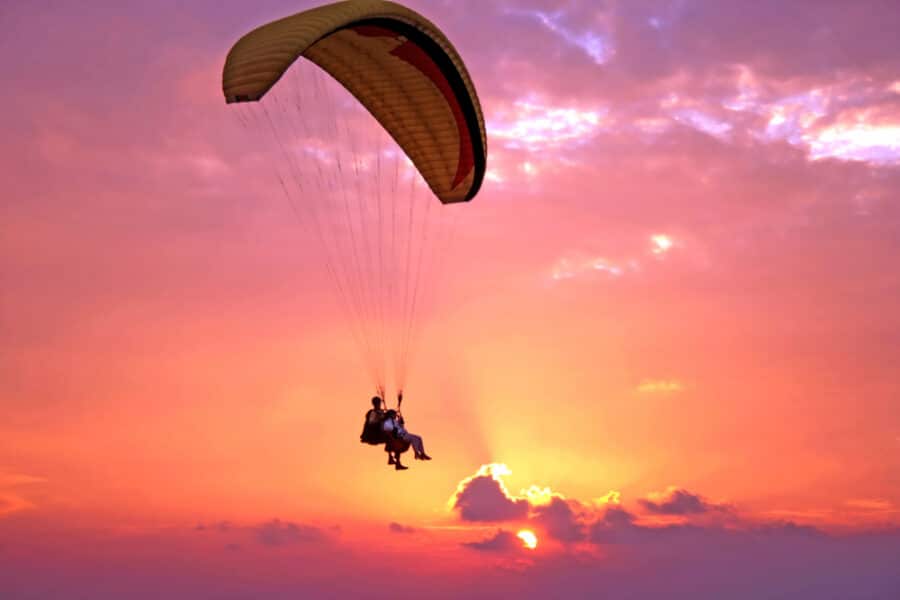
Prices in Turkey have risen over the last year or so, in line with global rises, but it is still a very affordable country for those visiting. Istanbul can be expensive if you’re not careful with where you stay and eat, but if you make sensible decisions and eat where the locals eat, you can explore this huge city on a budget without any problems.
- Turkish breakfast – 100 lira
- Coffee – 35 lira
- Imported beer – Between 50-90 lira
- A meal in a standard restaurant for one person – 100 lira
Avoid tourist restaurants and eat local food – you won’t be disappointed ! Grilled meats, salads, huge Turkish breakfasts , and meat-filled flatbreads are the order of the day.
It would be best if you also tried to visit a traditional restaurant and try one of the many different types of stews on offer – guvec is exceptionally delicious and filling, yet cheap at the same time.
Of course, there is also the famous doner kebab on every street.
Don’t miss these Istanbul breakfast spots!
Turkey is a safe country to travel around, but like anywhere in the world, you need to use your common sense, especially if you’re traveling in quieter areas, away from tourist spots.
Istanbul can be a little dangerous at night in certain places, but if you are sensible, use your common sense, and don’t walk around on your own during the late hours, you will have a safe and enjoyable time.
Please read up on common scams in Istanbul here to avoid them.
Turkey’s bus network is exceptionally high quality and covers the vast majority of the country. You can also take domestic flights to cut down on long distances, and these can often be found at reasonable prices if you book ahead of time.
If you want to rent a car, here’s how.
Move this adventure to your inbox & get an instant freebie.

No spam. Unsubscribe at any time.
Backpacking Romania
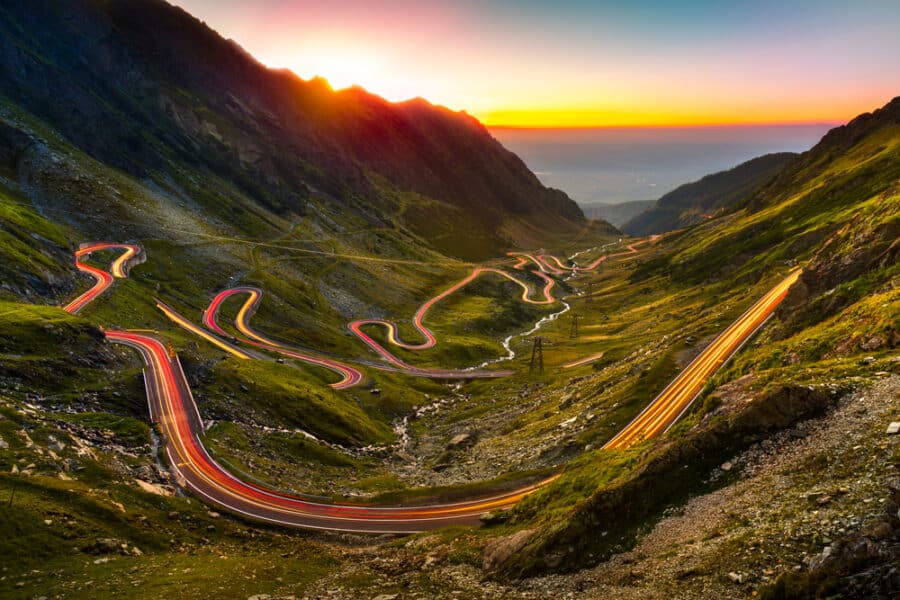
Backpacking around Romania will show you some of the most breathtaking scenery you’ve ever set your eyes on . From high hills to the fantastic countryside, history everywhere you look to Dracula’s castle , what more could you want?
Bran , Bucharest , Sibiu , and Sighisoara are must-visits, but the rural spots also show some hidden gems you’ll be glad you took the time to check out. The Danube Delta will show you nature in abundance while hiking in the center of the country will be an experience you’ll never forget.
History, nature, delicious food , and amazing experiences – backpacking around Romania is a true rite of passage.
Romanian is the official language. If you’re in the south of the country, you’ll find that English is widely spoken; however, outside of that area, you may find learning a few words of Romanian helps you get around.
The Romanian leu is the official currency in Romania, and it’s advisable to change your money when you arrive. You can use your debit or credit card in Bucharest , but outside of that, you are best to pay in local currency.

Romania is not part of the Schengen Zone, but visa requirements aren’t that difficult for most nationalities.
Most countries only require a valid passport to visit, allowing you to stay for 90 days. It’s a good idea to check online for your country of origin to ensure it falls within this category list.
EU citizens can show an ID card at border crossings to enter Romania , but other countries will require a passport. It’s always better to have your passport with you anyway, in case of extra checks.
WiFi is good quality throughout the main cities of Romania, but in rural areas, you may find it more difficult to find quality connections. In that case, you could purchase a SIM card and top up on data whenever you need it.
The leading operators are Orange, Vodafone, Telekom Romania, and Digi Mobil. All offer pre-paid sim packages for an unlocked phone.
81.9% of the population identify as Romanian Orthodox Christians. Romania is quite a religious country, and you’ll see many churches.

It’s possible to spend around $30-40 per day, but if you want to reduce that by staying in hostels and cooking daily, you may get by on around $20. It depends on what you want to do.
- Kebab from a street food cart – 20 lei
- Coffee – 7 lei
- A dorm bed in a hostel – 50 lei per night
- Museum admission – 10 lei
Here’s where to stay in Brasov on any budget.
Romanian food has many commonalities with other Balkan countries. The bulk of Romanian food is made of meat and potato stews, which are healthy, filling, and warm. They’re also relatively cheap if you can find a local restaurant. You can also find fresh fish if you’re around the Danube Delta, but meat-wise, it’s often chicken, pork, or tripe. Vegetarians may struggle, but you may find vegetable stew in some places. In Bucharest , however, you’ll be well-catered, no matter your dietary requirements.
You’ll also find doner kebabs from street vendors quite easily; these can be a cheap way to fill up on the go.
Don’t miss our guide to traveling as a vegan in Romania.
There are no significant safety issues when backpacking around Romania other than the usual points to bear in mind. However, in Bucharest , you may find many stray dogs, and it’s best not to pet them as they can become quite aggressive in some cases.
Backpacking around the south of the country is extremely easy on a budget, and the train is your friend here. You can buy your train ticket at the station. Avoid intercity trains if you want to keep costs low, as these are the most expensive types. However, Inter Regio trains offer good quality and a lower price tag.
Outside the main tourist areas, you may find that trains are unpredictable and don’t always run to schedule. There is an excellent quality bus network, but again, in the north of the country, you may find that they’re more uncomfortable and unpredictable than you would like.
Due to the difficulties in getting around outside of the main touristic areas, many people choose to hire a car and drive. This is relatively cost-effective as long as you shop around for deals, and it’s relatively easy to drive in Romania.
Chase Dracula on this 4-day road trip from Bucharest to Transfagarasan!
Backpacking kosovo .
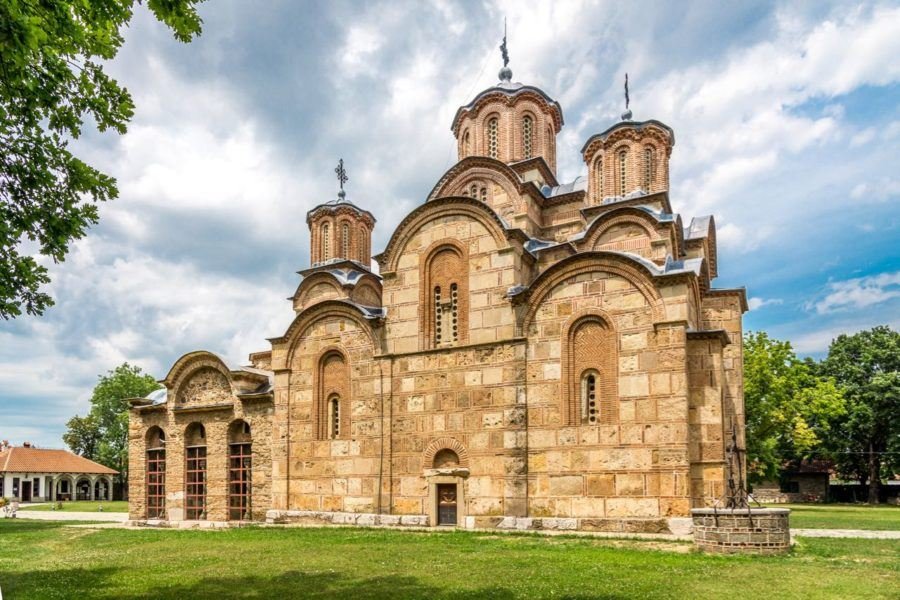
Kosovo is growing in tourism , but it’s not quite there yet – making it the ideal place for authentic backpacking experiences! This is a stunning country with history and nature to explore. It’s also low cost due to the lack of tourism compared to its neighbors, so you can get around much easier and enjoy a great time for little cash.
Pristina is a beautiful capital city , and you can experience local life in just a few hours here. However, that shouldn’t stop you from seeing more of the country, such as Peja , as just one example.
Don’t miss Kosovo’s National Parks!
Albanian is the official language in Kosovo; however, you will also hear Serbian. English is spoken in the capital, but you should learn a few words and phrases in Albanian to help you get around.
Currency
The Euro is the official currency of Kosovo. You will find ATMs in the capital, but outside of that, you should have local currency with you.
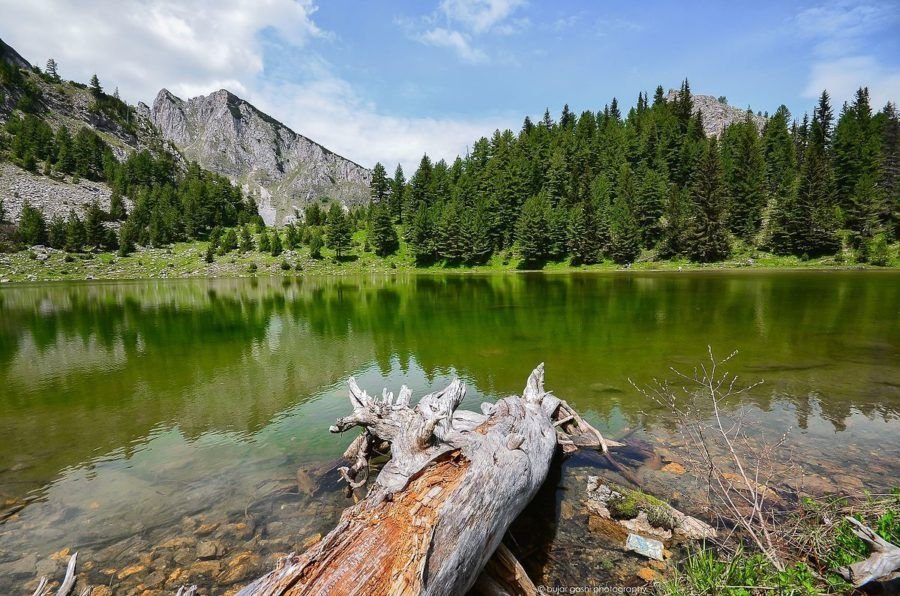
Kosovo is not part of the Schengen Zone; however, most nationalities will have their passport stamped upon arrival and can stay for 90 days. However, it is best to check online to find your specific visa requirements for your country of origin.
WiFi is available throughout the major towns and cities in Kosovo; however, if you’re traveling off the beaten track, you may struggle. In that case, you can purchase a SIM card and use data as long as your phone is unlocked. The leading providers in Kosovo are Kosovo Telecom, ArtMotion, Kujtesa, and MTS.
Religion
95.6% of the Kosovo population is Muslim.
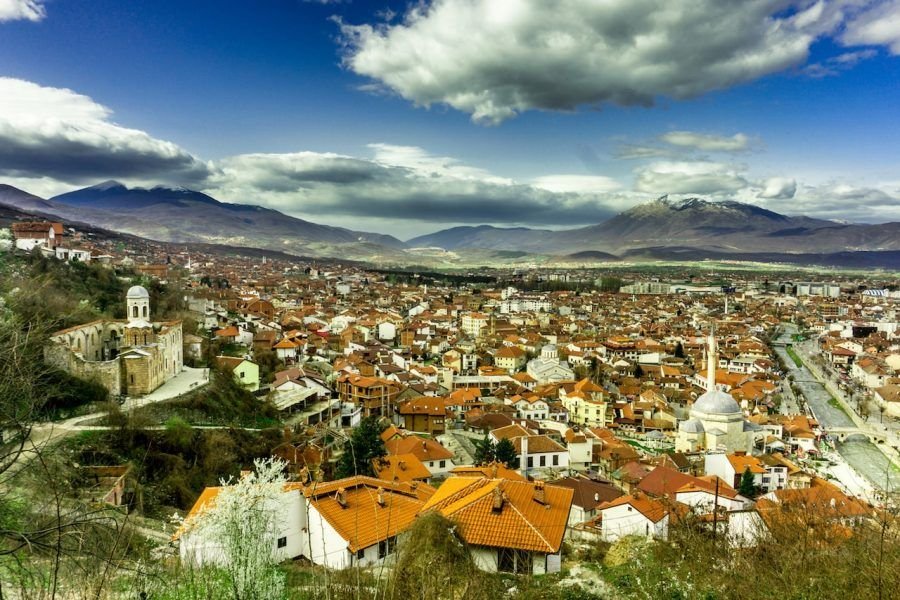
Kosovo is a cheap country to visit, and you can get around and enjoy a relatively high quality of life for little money.
- Domestic beer – 1.50 Euros
- Cappuccino – 1 Euro
- A meal in an inexpensive restaurant for one person – 4 Euros
- A one-way ticket on local public transport – 0.40 Euros
Check out these hotels in Kosovo for all budgets!
The great thing about traveling around Kosovo is that you can try all manner of local food for very little money, and you’ll enjoy every mouthful!
Kebabs, burek , flija pie, sarma, and stuffed peppers are some of the most likely dishes you’ll come across, as well as stews and grilled meats.
Traditional food varies from region to region, and you should try local wine!
Overall, Kosovo is a safe country as long as you use your common sense. However, it’s best to avoid some parts of the country, namely the north.
Many countries advise avoiding all but essential travel to areas such as Leposavic, Zubin Potok, Mitrovica, and Zvecan. This is due to heightened tensions in these areas, and flashpoints of violence may occur occasionally.
Infrastructure around Kosovo has improved over the last few years, and efforts continue as a push to increase tourism takes place. The best ways to get around the country are by road or rail, and while roads aren’t of the best quality, you will see a huge amount of beautiful scenery as you go.
Railway journeys can be unpredictable and don’t always run to timetables, but if you have the time to be a little more leisurely, it’s a cheap way to get around.
How to get from Skopje to Pristina (and vice versa).
Ready to backpack in the balkans.
We’ve covered a tremendous amount of information for backing the Balkans, and by now, you should be chomping at the bit!
To check out the best Balkan hotels, click here!
Are you ready to backpack around this stunning part of the world?
- All About Traveling In The Balkans
- Best Beaches In The Balkans
- Top Places To Go Hiking In The Balkans
- One Month Itinerary For Traveling Through The Balkans
- Ultimate 5-Day Balkans Travel Itinerary
- Two-Week Road Trip Itinerary Through The Balkans
- Balkan Cruises – Where You Can Cruise To In The Balkans
- Southwestern Balkans Road Trip
- Driving In The Balkans – Everything To Know
Comments (7)
Hiya, was wondering how much would you say to budget for 4 weeks?
Your blog was absolutely fantastic! Great deal of great information and this can be useful some or maybe the other way.
So good information…
I’m going to be traveling the Balkans this spring. Do you know if there is a SIM and plan that works in multiple Balkan countries? Thanks!
good article for travlers.
Thanks that was great :-)
Thanks that was great and Very helpful
Leave a Reply Cancel reply
Your email address will not be published. Required fields are marked *
Save my name, email, and website in this browser for the next time I comment.
This site uses Akismet to reduce spam. Learn how your comment data is processed .
Subscribe To Unlock Your FREE Customizable Travel Packing List & All Our Best Tips!
Unlock Your FREE Customizable Travel Packing List!
Subscribe Now For Instant Access To Stress-Free Packing

The Complete Guide to the Peaks of the Balkans Trail
Have you ever wondered what some of the world’s most iconic long-distance hikes were like before they became the popular (and crowded!) destinations they are today? If you’re looking for Europe’s best hidden-gem trek, the Peaks of the Balkans (POB) might just be it.
The 192 km trail visits three countries, traversing breathtaking mountain scenery and overnighting in welcoming villages along the way. And even though the trek will take you into some remote and unspoiled areas, you can always end each day with a shower, warm meal, and a soft bed.
Because it is a bit more off the beaten path (pun intended), it’s important to do some advance preparation before embarking a Peaks of the Balkans trek. This guide provides all of the need-to-know information and our top advice to help you plan your best possible trip. Let’s get started!
In this guide…
- About the Peaks of the Balkans Trail
- How Long is the Peaks of the Balkans Trail?
- When to Hike
How Difficult is the Peaks of the Balkans Trail?
- Do I Need to Hike the Peaks of the Balkans with a Guide?
Accommodation, Food, and Water
Camping on the peaks of the balkans, getting to and from the peaks of the balkans.
- Detours & Shortcuts
- Maps & Guidebooks
- Budgeting & Money
- What to Pack
- Suggested Itinerary for the Peaks of the Balkans
Everything you need to to plan your Peaks of the Balkans Trek – all in one place.
Whether you prefer guest houses or tents, fastpacking or meandering, or something in between, we’ve got you covered. Our Guide to Trekking the Peaks of the Balkans Trail is the ultimate tool to help you plan your perfect trip.
When you purchase a guide, you’ll get instant access to all the information you need to plan your trip in our planning portal as well as in a downloadable PDF eGuide.

Your in-depth guide contains resources you won’t find anywhere else, including:
- Instant access to our online trip planning portal
- Downloadable eGuide to the Peaks of the Balkans Trail
- Complete 7-day, 10-day, and 11-day Peaks of the Balkans itineraries with video fly throughs
- Accommodation options as well as booking information
- Detailed maps for every stage
- Custom GPS data for each itinerary
- Video walk through on difficult to navigate sections of the trail
- The ultimate packing list
- Information about getting to and from the trail
- 15-week training plan
- Video tutorials on how to use your GPS files to navigate on the trail.
We truly believe this is the best guide available for the Peaks of the Balkans. Pick up your guide below and if your not satisfied for any reason we’ll give you a full refund!
About the Trail
The Peaks of the Balkans Trail makes a loop through Albania, Kosovo, and Montenegro in the Prokletije, or “Accursed” Mountains . A newcomer to the long-distance hiking scene, the trail was created as a collaboration between local organizations and the German Development Cooperation in an effort to increase tourism and unify the region after a challenging history.
The trail climbs high over spectacular mountain passes and finishes most stages in peaceful valleys. The landscape is varied, featuring old-growth forests, high alpine meadows, glacial lakes, and green pastures.
Although the trail can be hiked in either direction, we highly recommend sticking to the classic counterclockwise progression. This will allow you to avoid some very punishing uphill sections and get to know fellow hikers, as you’ll see them multiple times throughout your trek.
Check out our virtual fly through video below to get a sense of the trail:
How long is the Peaks of the Balkans Trail?
The Peaks of the Balkans Trail is officially 192 kilometers (119 miles) long. Throughout the course of your trek, you’ll almost certainly walk further than the official distance, adding on kilometers as you detour to reach guesthouses or backtrack after a wrong turn.
Most hikers take 10 days to complete the entire circuit, although it’s possible to extend it to 12 or 13 days . Those looking to hike the Peaks of the Balkans in less than 10 days can do it in as little as 7, but should be prepared for a real challenge and consider arranging transport to cut out some sections and make it more manageable.
There are a few options for completing an abbreviated Peaks of the Balkans hike. One option is to hike from Dobërdol to Babino Polje on Stage 4, effectively cutting out the three stages of the trail that mostly pass through Kosovo. Another popular option is to only complete the section from Theth to Valbona. Although this is quite different from hiking the entire Peaks of the Balkans, it does allow those with limited time to experience some of the region’s spectacular scenery.

When to Hike the Peaks of the Balkans
The best time to hike the Peaks of the Balkans is late June through early October. While it may be possible to complete much of the trail in May and early June, many of the major passes and higher sections of the trail will likely be covered in snow and unsafe to navigate without proper equipment and experience. Additionally, some of the guesthouses do not open until later in June. Here’s what to expect in each month of the hiking season:
May : Detours required to avoid snow and some guesthouses not yet open. Mild temperatures, but typically quite rainy.
June: Plenty of snow remaining, especially in the first half of the month. Most guesthouses will be open and more hikers are out on the trail. Incredible wildflowers in bloom. Warm temperatures with less rain, although thunderstorms are common.
July & August: Expect mostly snow-free trails and hot temps. These are the driest months, although unsettled weather is always a possibility in the mountains. This is the busiest time on the trails, so it’s a good idea to book your accommodation in advance. Wild blueberries are at their peak during these months.
September: This is a lovely month to hike, with cooler temperatures and minimal snow on the trail. Expect more moisture than in the summer months.
October: This month brings beautiful fall colors. Expect chilly nights, and an increasing likelihood of rain and snow as the month progresses. Check in advance to ensure that your accommodation will still be open.
The Peaks of the Balkans is a challenging trek, but it should be manageable for most reasonably fit hikers. With the exception of navigating early-season snow patches, the hike does not require any technical skills or equipment. Additionally, no stage is longer than 28 km, and most tend to be closer to 20 km or less. That being said, it shouldn’t be underestimated. Here are some of the most challenging aspects of the Peaks of the Balkans and our best advice on how to deal with them:
While it’s true that the POB isn’t too technical, the trail can be quite rugged in many places. There are some sections that are extremely steep, which can be hard on both the uphills and the downhills. Additionally, be prepared to encounter plenty of rocks and mud, as well as some exposed areas. Sturdy, well-fitted footwear and trekking poles will help enormously with all of the terrain that the Peaks of the Balkans throws at you.
Route-Finding
By our estimation, about 80% of the Peaks of the Balkans Trail is well-marked and easy to follow. However, the other 20% is not at all straightforward. There are sections with no markings at all, as well as some that have markings leading the wrong direction.
We found that the trail was most difficult to follow on the stages that went through Kosovo, and that the Montenegro and Albania portions were much better. We highly recommend using a GPS app on your phone and bringing along a guidebook. Unfortunately most of the paper maps tend to be outdated and/or incorrect, so make sure you choose wisely before purchasing one.
Read more: Peaks of the Balkans | Maps & Routes
If you’re looking for some support in navigating on the trail, then check out our Guide to Trekking the Peaks of the Balkans Trail . It comes with three itineraries, complete with custom GPS files for each. You’ll also get access to a video walk through of difficult to navigate sections, as well as a video tutorial on how to use your GPS files on the trail!
Just like any good romp in the mountains, weather is an important variable on the Peaks of the Balkans. Regardless of when you hike, be prepared for thunderstorms, especially when heading to higher, more exposed elevations.
For those hiking in June, July, and August, it can get quite hot on the trail. Long days in the heat and the sun can be very tiring, so it is important to stay hydrated and take frequent breaks. It’s a good idea to adjust your time estimates, knowing that the heat might slow you down.

Do I Need to Hike With a Guide?
Many people choose to hire a guide or join a guided group to hike the Peaks of the Balkans. While there are some benefits to this, it is definitely not essential. When deciding whether or not to hike with a guide, it is helpful to think about the type of experience you’re hoping to have on the POB.
If you don’t mind being more self-sufficient and doing a bit of route-finding in places, you’ll probably enjoy hiking on your own. This allows you more solitude and flexibility throughout your trip. You can still purchase meals and meet other hikers at the guesthouses along the trail. We hiked on our own and we were happy with our decision.
On the other hand, if you don’t want to worry about navigating or other logistics and you enjoy the social aspect of hiking with a group, going with a guide might be a good choice. Additionally, most guided tours provide baggage transfers, a helpful service for many hikers.
You can read all about planning your own trip in our How to Hike the Peaks of the Balkans self-guided post.
Accommodation
Nearly all of the accommodation along the Peaks of the Balkans route is provided at family-run guesthouses, which are an undeniable highlight of the trek. These vary quite a bit from place to place, from private en suite rooms to basic dormitories. All of the guesthouses provide hot showers, delicious home-cooked meals, and welcoming hospitality. Most offer wifi and electronics charging. Bed linens are typically provided, but it’s a good idea to bring your own towel and a backup sleep sheet. Staying at guesthouses is one of the best ways to support the local economy, experience the culture, and make the most of your trip.
Be sure to check out our Peaks of the Balkans Accommodation Guide for more information and guesthouse recommendations!
Food and Water
As mentioned above, guesthouses are the main source of food along the Peaks of the Balkans. Dinner, breakfast, and a packed lunch are all typically provided as part of your stay. Soda, beer, wine, coffee, and tea are also available for purchase. The food is delicious and the portions are generous. The guesthouse hosts tend to be very accommodating of vegetarians, although vegans and those following a gluten-free diet might have a harder time finding enough to eat.
Plav and Theth are the only places along the trail with shops for resupply. Even if you plan on eating at the guesthouses, it’s a good idea to pack plenty of snacks, as you won’t find much elsewhere along the route. If you prefer to cook your own meals, be advised that you’ll only find puncture-top stove fuel along the route, as well as in most shops in Tirana and Podgorica. Our best advice is to purchase an adapter that allows you to use your screw top stove with a puncture-top fuel canister.
Generally speaking, it is safe to drink the water at all of the guesthouses along the POB. Be sure to ask where the drinking water source is when you arrive, as different taps might come from different sources. There are springs along the trail on many stages of the hike, but certainly not all of them, so make sure to check your map/guidebook and pack enough water before setting out for the day. While some sources along the route might be safe, many others are downstream of livestock or other contaminants. It’s a good idea to carry a lightweight filter and use it when filling up in the backcountry.

We’re huge fans of camping for the flexibility, privacy, cost savings, and close-to-nature experience it provides on long-distance treks, and this was definitely the case on the Peaks of the Balkans. Camping is quite easy throughout the hike, as there are tons of great options.
Nearly every guesthouse will allow you to pitch your tent outside for a small fee, which includes access to the shower, wifi, and other facilities. Campers can choose to purchase meals at the guesthouse or cook their own. In addition to guesthouses, there are also a few campgrounds in Plav, Theth, and Valbona.
For those looking to get a bit more off the grid, it is also possible to wild camp along the Peaks of the Balkans trail. It will be helpful to have a good map and some flexibility in order to find a suitable campsite each night.
Additionally, you’ll need to carry a lot of food and water with you, given that you won’t find much of either in most places along the trail. Finally, keep in mind that (technically, at least) camping is not permitted in any national park or nature reserve.

Given that it’s a loop trail, it’s possible to start/finish at a few different points along the Peaks of the Balkans. All of these are good options, and it’s best to choose the one that gives you the easiest travel to and from the region. As most travelers will be traveling through one of the major cities in the area, we’ve organized the options accordingly.
Tirana, Albania>Theth, Albania
If you’re traveling through Tirana, the best place to start your trek is in Theth. To get there, you’ll need to take a minibus first to Shkodër (2 hours) and then get on another minibus from there to Theth (2.5 hours). While it may be possible to navigate the bus system independently, if you are short on time and don’t speak Albanian we recommend arranging your transportation through a tour company like Choose Balkans or Zbulo . Expect to pay about €60 per person for a return trip.
Podgorica, Montenegro> Plav, Montenegro
Traveling through Podgorica is arguably the easiest way to get to and from the Peaks of the Balkans. There are several daily buses that leave for Plav from the main bus station in Podgorica. The journey takes about 4 hours. It is also possible to arrange a taxi or transfer between the two.
Pristina, Kosovo>Pejë>Rugova Valley
It is a bit less straightforward to get from Pristina to the trail, but still a decent option for those coming from that direction. First, you’ll need to take a bus from the main bus station in Pristina to Pejë (2 hours). Buses run about every 20 minutes and tickets cost €5 per person one way. From Pejë, it’s possible to take a bus to the end of the road in the Rugova Valley, where you can walk about 5km to join the trail in Rekë e Allagës.
Detours and Shortcuts
Whether you’re short on time or faced with an unexpected challenge along the way, it’s good to know your options for modifying the trek. As mentioned earlier, there are a couple of ways to shorten your hike. One option is to hike from Dobërdol to Babino Polje on Stage 4, effectively cutting out three stages of the trail that mostly pass through Kosovo. This allows most hikers to complete the trek in about 7 days instead of 10.
In addition to modifying the route, there a few sections where you can take a transfer to skip some of the walking:
Valbona to Çeremi: It is possible to arrange a transfer to effectively cut out this entire stage.
Milishevc to Rekë e Allagës: It is possible to arrange a transfer to cut out 6km of road walking on this stage.
Drelaj to Restuarant Te Liqeni: It is possible to arrange a transfer through a tour company or at Shquiponja Guesthouse in Drelaj to cut out about 13km of road walking.
Babino Polje to Plav: It is possible to take a taxi from Babino Polje to Plav, cutting out this entire stage. Any of the guesthouses in Babino Polje will help you call a taxi.
Plav to Vusanje: It is possible to arrange a jeep transfer to cut out the first 10km section of uphill road walking.
Many of the tour companies that offer guided POB treks will also be able to help you arrange transportation along the route. If you’re interested in setting it up in advance, we recommend contacting a few different tour companies to see what’s possible and compare prices. If you need transportation while on your trek, start by asking the guesthouse hosts if they can help you arrange it.

Maps and Guidebooks
If you would like to carry a paper map with you, this option from Huber Kartographie is likely your best bet. However, this map is outdated and contains some pretty significant inaccuracies at some points in the route. It’s a good idea to bring another navigation tool, such as a GPS app and/or guidebook, as a backup.
We highly recommend using the Gaia GPS app to navigate on the Peaks of the Balkans Trail. Gaia allows you to download maps for offline use and has a variety of layers that provide helpful information. Use this link to get 20% off your subscription.
In terms of guidebooks, we recommend Cicerone’s Trekking the Peaks of the Balkans Trail . Although a few things have changed since it was published in 2018, it is still an immensely helpful and informative resource.
Finally, our own Guide to Trekking the Peaks of the Balkans Trail is an up-to-date resource that makes planning for and hiking the trail a breeze! Check it out below:

Budgeting and Money
Make sure you read this section carefully, as there are a few tricky aspects when it comes to money on the Peaks of the Balkans. If you put a little thought into it ahead of time, you can spare yourself the unpleasant headache of running out of cash on the trail.
Which currency do I need to carry?
As you’ll be traveling to three different countries on your trek, you might be wondering about which currency to bring. Albania uses the Lek, while Montenegro and Kosovo use the Euro. However, you can often use Euros in Albania, particularly for larger purchases. Most of the guesthouses on the Albanian section of the trail will quote prices in Euros.
Therefore, we recommend that you bring mostly Euros to pay for all of your meals and accommodation, as well as a small amount of Lek for less expensive transactions (i.e.; buying a drink at a café).
Keep in mind that the only stop along the route with an ATM is in Plav. Additionally, most guesthouses do not accept credit cards. That means that you’ll need to estimate how much money you’ll need for each day of your trek and make sure you bring enough cash to get you through.
Here’s what you can expect to pay for common purchases along the trail, keeping in mind that prices vary from place to place:
- Night at a guesthouse: €15-30 per person
- Camping: €3-5 per tent
- Meal at a guesthouse: €5 per person
- Coffee/tea/beer/soda: €1.50
- Transfer along the trail: €15-60 per vehicle
- Transportation to/from the trail: €20-60

What to Pack for the Peaks of the Balkans
Packing for the Peaks of the Balkans is a balancing act between ensuring you have everything you need while also not carrying more than you need. For those staying in guesthouses, you can avoid the extra weight of a sleeping bag, tent, and other camping gear.
Below are a few essential items for the POB:
- Lightweight water filter
- Insect repellent
- Trekking poles
- Travel towel
- Sunscreen / Sun hat
- Compeed Blister Pads
- Cross-border permits *
For a complete list, check out our Peaks of the Balkans Packing List post.
*Because the Peaks of the Balkans Trail crosses the borders of three different countries, hikers are required to carry a permit with them throughout their trek. There are no official checkpoints at the borders, but there is a chance that you could be stopped and asked for your permit, so it’s a good idea to have it with you. You must apply for your permit at least two weeks before you begin your trek. By far the easiest way to get a permit is through the tour company, Zbulo . Complete a quick online form and they’ll email your permit in a few days.

Suggested Peaks of the Balkans Itinerary
The classic itinerary described below takes 10 days to complete and is well-suited to most hiking paces and abilities. Although we describe it starting in Theth, you could Be sure to check out our interactive map and elevation profile for the route to get a comprehensive understanding of all of your options!
10-Day Peaks of the Balkans Itinerary
Day 1: Theth to Valbona Day 2: Valbona to Çeremi Day 3: Çeremi to Dobërdol Day 4: Dobërdol to Milishevc Day 5: Milishevc to Rekë e Allagës Day 6: Rekë e Allagës to Drelaj Day 7: Drelaj/Restuarant Te Liqeni to Babino Polje Day 8: Babino Polje to Plav Day 9: Plav to Vusanje Day 10: Vusanje to Theth

Day 1: Theth to Valbona
Distance & Elevation: 16.7 km // +1100 m, -900 m Recommended Accommodation: Guesthouse Jezerca Description: This stage begins with a solid ascent to Valbona Pass, with increasingly beautiful views of both valleys and the surrounding peaks as you climb. The descent is very steep at first, but then mellows out and continues for a long walk to Valbona. Keep in mind that your distance will vary based on where you choose to stay in the Valbona Valley. Guesthouse Jezerca offers dormitories, private cabins, and camping in all with fantastic views, delicious food, and excellent service. It is located at the far end of the valley, setting you up for a quick start the next morning.

Day 2: Valbona to Çeremi
Distance & Elevation: 12.6 km // +1200 m, -950 m (high route) Recommended Accommodation: Kujtim Gocaj Guesthouse Description: There are two possible routes to Çeremi, a high route over Prosllopit Pass and a lower route that mostly follows roads. The high route is challenging, but definitely worth the effort if the weather is good. It features spectacular high mountain scenery and lots of wildflowers. Kujtim Gocaj Guesthouse is a wonderful place to spend the night either in one of the dormitories or camped in the small tent area. The hosts are very welcoming and the food is plentiful.

Day 3: Çeremi to Dobërdol
Distance & Elevation: 17 km // +1100 m, -500 m Recommended Accommodation: Bujtina Leonard Description: Stage 3 brings a mellower but no less beautiful day on the trails. The undulating trail takes you through shady woodlands, occasionally opening up to allow for great views in all directions. The lovely settlement of Dobërdol sits in a steep-sided valley, with the Tromedja (three border peak) towering above. Bujtina Leonard is the first guesthouse you’ll see when you arrive in Dobërdol. We recommend it for the great facilities, friendly hosts, and atmospheric setting. There’s plenty of room for tents.

Day 4: Dobërdol to Milishevc
Distance & Elevation: 18 km // +1000 m, -1050 m Recommended Accommodation: Chalet Rrusta Description: This stage is extra special because you’ll get to walk through three different countries all in one day. A steep climb at the start of the day is rewarded by some spectacular walking along a high ridgeline. From there, the route becomes quite tricky to follow, so be prepared to pay close attention to your GPS. You’ll need to ascend again at the end of the day, either stopping at the lovely Guesthouse Lojza , or continuing on to Milishevc. Chalet Rrusta is a great option in Milishevc, as the facilities are clean and modern and the accommodations are quite comfortable.

Day 5: Milishevc to Rekë e Allagës
Distance & Elevation: 16 km // +900 m, -1300 m Recommended Accommodation: Bujtina Ariu Description: This is another day where you can expect to put your route-finding skills to the test. The day begins with a steep and poorly marked hike up to a pass, after which you’ll need to continue to pay attention to make sure you’re on track. The trail passes through a pretty alpine meadow before beginning a long and steep descent and one final uphill road walk to reach Rekë e Allagës. Bujtina Ariu is a friendly accommodation that serves up delicious meals in a homey environment. If you plan on camping, be advised that there’s only room for a couple of tents.

Day 6: Rekë e Allagës to Drelaj
Distance & Elevation: 10.4 km // +550 m, -750 m (to Drelaj), 23.5 km // +1400 m, -1200 m (to Restaurant Te Liqeni) Recommended Accommodation: Shqiponja Guesthouse Description: This is a pretty straightforward day of walking, much of it on roads. There are a few options for where you can end your hike on this day: Drelaj, Restaurant Te Liqeni, or somewhere in between. Although stopping at Drelaj makes for a pretty short day, we recommend this option for a few reasons. First, it eliminates several kilometers of road walking (get a ride to Restaurant Te Liqeni from the guesthouse owners in the morning) and allows you to get a bit of a break in between several long days of walking. Shqiponja Guesthouse is also wonderful- welcoming, beautiful, clean, modern- and a nice place to spend a night. It is also possible to continue all the way to Restaurant Te Liqeni or stop at one of the guesthouses along the way.

Day 7: Drelaj/Restuarant Te Liqeni to Babino Polje
Distance & Elevation: 15 km // +1050 m, -1020 m Recommended Accommodation: Triangle Woodhouse Description: This stage will take you up to the highest point along the trail, followed by a spectacular ridge walk with views of rugged mountains all around. The descent to Babino Polje can be a bit unclear in places, but it is otherwise pretty well-marked. Triangle Woodhouse is a lovely accommodation, with nice facilities and friendly hosts. Some campers choose to continue on to wild camp at Lake Hrid, but if you’re considering that option make sure you have good bug spray!

Day 8: Babino Polje to Plav
Distance & Elevation: 20 km // +680 m, -1250 m Recommended Accommodation: Ema Guesthouse Description: This day begins with a nice wooded hike up to Hridsko jezero (Lake Hrid), although the mosquitos can be quite bad on this stretch of the trail. From the lake, it’s a relatively mellow hike towards Plav, much of it on roads. As you get closer to Plav, the views of the town and the lake are wonderful. Plav is the largest town that you’ll pass through on the POB and a great opportunity to resupply. If you have the time, it’s a good place to take a rest day. Ema Guesthouse is one of the best accommodations in Plav, offering a variety of comfortable rooms and apartments, some with lake views.

Day 9: Plav to Vusanje
Distance & Elevation: 22 km // +1250 m, -1220 m Recommended Accommodation: Guesthouse Vucetaj Description: This is a long and challenging day, but the beautiful and rugged views are well worth your effort. The hike starts with an increasingly steep climb (bring your bug spray), then summits Bajrak Peak and follows a ridge before a long descent towards Vusanje. There are several nice guesthouses in Vusanje, but we recommend Vucetaj for its excellent facilities and amazing views down the length of the Ropojana Valley. The guesthouse has plenty of flat spaces to pitch a tent, if needed.

Day 10: Vusanje to Theth
Distance & Elevation: 20 km, +950 m, -1180 m Recommended Accommodation: Bujtina Tinari Description: The final day of the Peaks of the Balkans trek is certainly a memorable one. The day begins with good walking up to Fusha e Ruinicës, a beautiful and expansive high alpine meadow, before climbing higher to Pejë Pass. Enjoy the views of the incredibly jagged peaks from here before beginning a long and steep descent towards Theth. Upon arriving in Theth, be sure to grab a treat or a cold beverage to celebrate the remarkable accomplishment of completing your POB trek!

When it comes long distance hiking in Europe, the Peaks of The Balkans Trail is one of the best kept secrets . If you’re looking for a true mountain adventure while still enjoying the local culture and a few creature comforts, you will love this hike. We hope this guide has left you excited and prepared for your Peaks of the Balkans trek. As always, leave us a comment if you have questions or to tell us about your trip!
What’s Next?
- Peaks of the Balkans Packing List
- Peaks of the Balkans Accommodation Guide
- Peaks of the Balkans | Maps & Routes
- How to Hike the Peaks of the Balkans Self-Guided
Leave a Comment Cancel reply

We’re Emily and Ian, outdoor lovers and trip planning nerds who live in Boulder, Colorado. We’ve explored over 30 countries, mostly on two feet or two wheels. When we’re not adventuring abroad, we spend our time enjoying the amazing camping, hiking, and biking destinations in our home state of Colorado. Learn More About Us
Tour du Mont Blanc
West highland way, laugavegur trail, walker's haute route, coast to coast walk, national parks.
TOP 5 CAMPING FAVORITES FOR 2023
1. Rumpl Puffy Blanket - The coziest camp blanket out there.
2. Solo Stove - Elevate your campfire with this smoke-free fire pit.
3. Solar Power Bank Charger - Keep your gadgets charged with the power of the sun.
4. Yeti Tundra 45 Cooler - The ultimate camping cooler.
5. Gaia GPS - Download offline maps for easy navigation! Get 20% here .
Take Control of Your Route Planning

Learn how to plan your route, create GPS files, navigate offline, and even print you own maps.
- Meet the Team
- Work with Us
- Czech Republic
- Netherlands
- Switzerland
- Scandinavia
- Philippines
- South Korea
- New Zealand
- South Africa
- Budget Travel
- Work & Travel
- The Broke Backpacker Manifesto
- Travel Resources
- How to Travel on $10/day
Home » Europe » Backpacking the Balkans – Travel Guide For 2024
Backpacking the Balkans – Travel Guide For 2024
Stretching from the far shores of the Meditaranean and leading into the far reaches of Europe’s precipice, the Balkan peninsula has long served as a cultural crossroads. This is where east meets west, old meets new and until recently, where capitalism faced off against communism in a war of modern ideologies.
When you visit the Balkans, you can see all of this and more for yourself. In Bosnia you can smoke hookah pipes in traditional Ottoman style cafes and just next door in Serbia you can dance to techno in dilapidated communist warehouses. The region’s modern history is tortured and tumultuous and you can still see the scars at every twist and turn. Nevertheless, the Balkans retains an optimism and lust for life which is a refreshing antidote to the weary Western Europe.
In this guide we will look at the individual countries of the Balkans which are Croatia, Bosnia, Montenegro, Slovenia, Macedonia, Serbia, Kosovo, Albania, Bulgaria and Romania and provide as much information as possible about Balkans travel.
Why Go Backpacking in The Balkans
Whatever you are seeking from your trip to the balkans, you can find it in here. Croatia offers glamorous island hopping, Romania boasts gorgeously forested mountains, and Serbia quietly conceals one of the best rave cultures I have experienced.
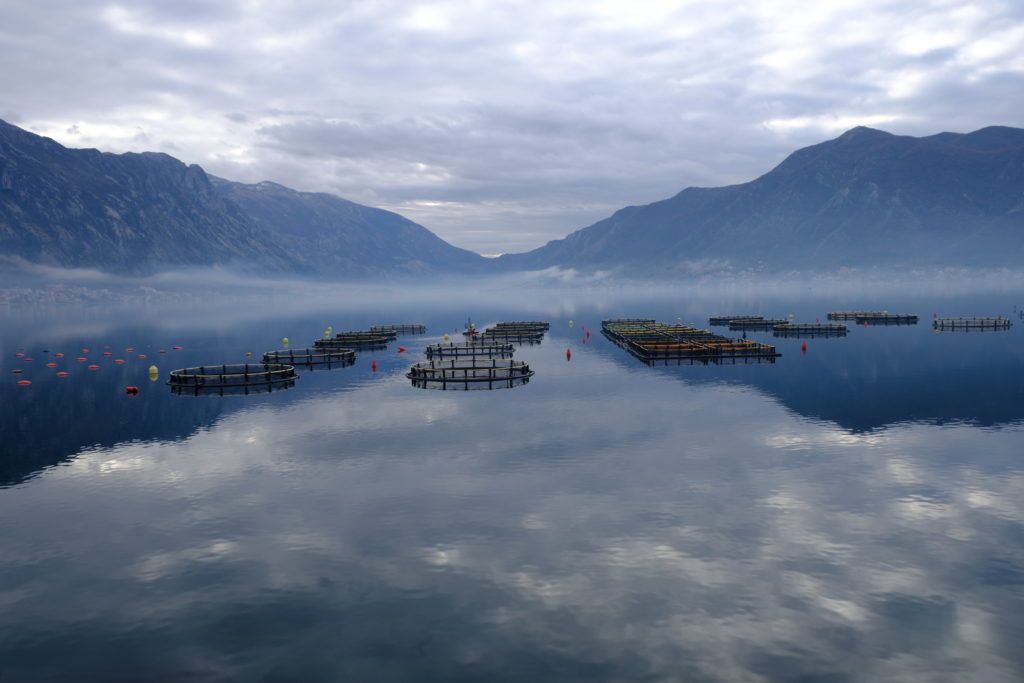
Then, there is a solid bus network to connect the regions, minimal borders between them, and affordable prices compared to Western Europe. All of this makes travel the balkans one of the best backpacker adventures on earth.
Best Travel Itineraries for Backpacking The Balkans
Places to visit in the balkans, top things to do in the balkans, backpacker accommodation in the balkans, the balkans backpacking costs, best time to travel to the balkans, staying safe in the balkans, how to get into the balkans, how to get around the balkans, working in the balkans, what to eat in the balkans, the balkans culture, some unique experiences in the balkans , final advice before visiting the balkans.
Here are a few Balkans road trip itinerary’s to get you started. They all presume that you will be using public transport and my recommendation is to stick with the bus.
Balkan Itinerary 1 – The Med on a Budget – Duration – 8 Days
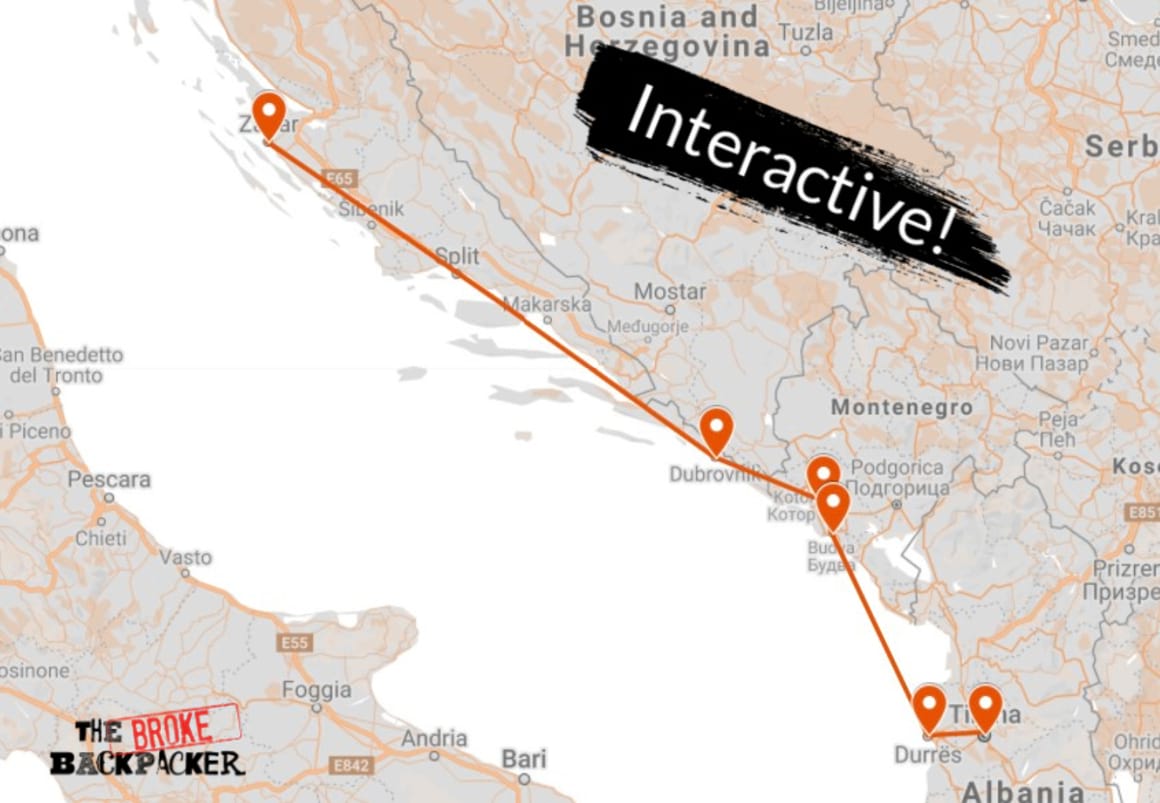
This itinerary focuses on the Balkan peninsula’s Western Mediterranean shoreline and takes in Croatia, Montenegro and Albania. The first 2 are definitely the regions most popular, “poster boy” destinations and the latter is more of an adventurer’s paradise of untapped potential.
Start by flying to either Zadar or Split and getting settled in by the ocean. From here we head to Dubrovnik, the real life Kings’ Landing from Game of Thrones and undisputed jewel in the crown of Balkan tourism.
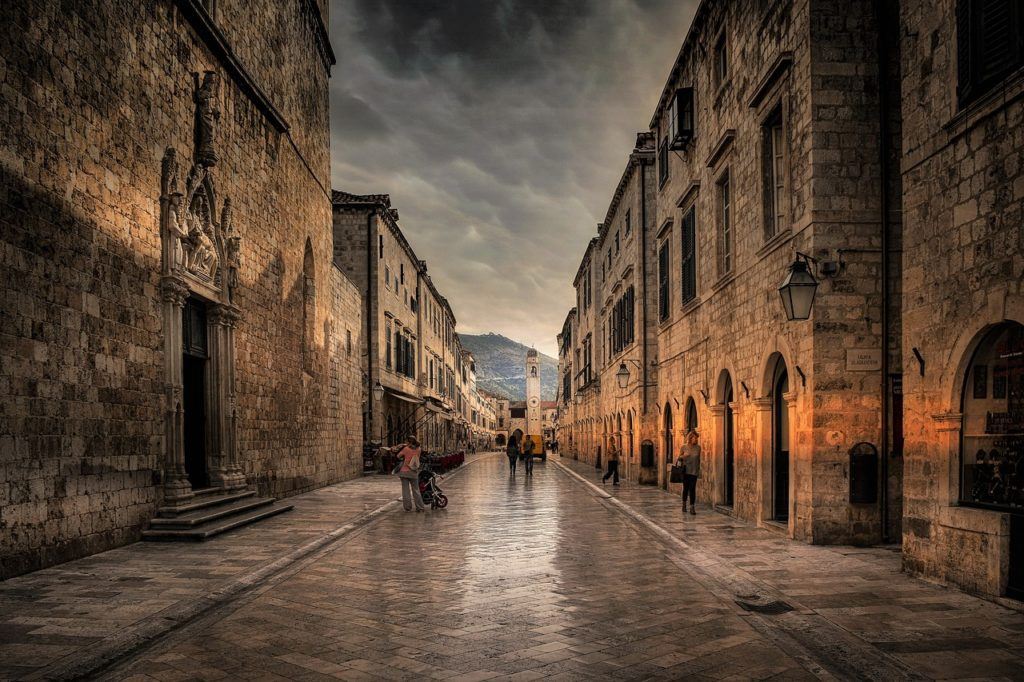
After a few nights, jump on the bus to Kotor in Montenegro. Often described as “Balkan Fjords”, the bay of Kotor itself is utterly stunning and the medieval town is truly charming. After a night or 2, head to Budva just down the way and get some sunbathing done. Afterwards, get the bus towards Albania. If you are short on time or tired of travel, make for the port city of Durres. Otherwise, do venture a bit further and go all the way down to Sarada on the Albanian Riviera; a vibrant tourist town and one of the country’s most popular destinations.
To fly home you will probably need to head inland towards the capital city of Tirana.
Balkan Itinerary 2 – The Former Yugoslavia – Duration – 2 weeks
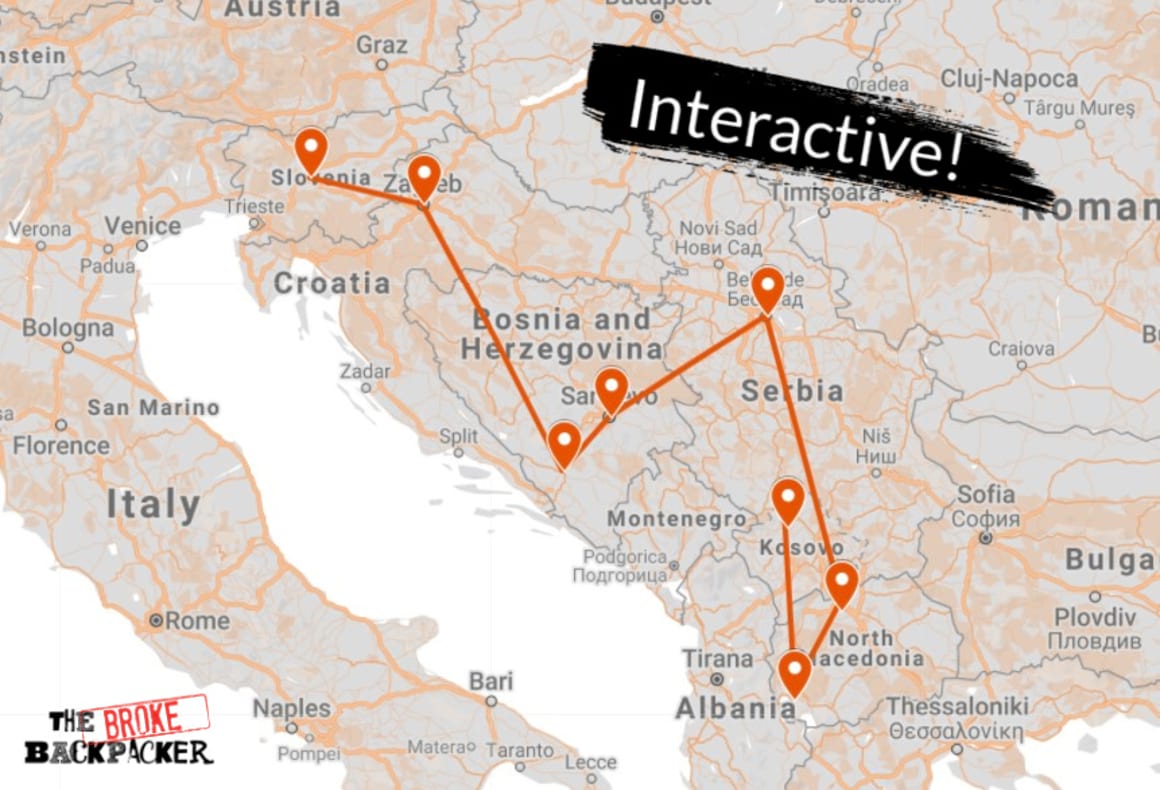
At the (some would say dark) heart of the Balkans sit’s the former republic of Yugoslavia. Yugoslavia was a conglomerate of 5 loose nations which joined together under Communism following WWII united by the enigmatic “Tito” who led the country for nearly 30 years. The disintegration of Yugoslavia, was not pretty and several of the nations descended into tribal wars which lasted throughout the 90’s.
This itinerary begins in Slovenia’s capital of Ljubljana . If you can work out a way to get to stunning Lake Bled then go for it, but note that our itinerary is headed the other way! From Ljubljana it’s eastwards and onwards to Croatia’s capital of Zagreb .
Zagreb is a cool city but a few nights here is plenty before we move onto Bosnia .

You have 2 options here, if you can find a car or private bus, Sarajevo is 4 hours drive. Otherwise, take the overnight bus towards Medieval Mostar – one of the most underrated backpacking spots in Europe. Be sure to check out it’s stunning bridge and then spend a night in one of Mostar’s great hostels before going to Sarajevo.
Sarajevo is a true marvel. From here get the bus to Belgrade in Serbia and try to find a Psytrance or Techno party to gate crash. The bus from Belgrade to Skopje in Macedonia is an afternoon’s ride. In Skopje, check out the notorious statue’s and wander in the old town before making for Ohrid and it’s serene lake. From Ohrid, we go back on ourselves to Skopje before heading into Kosovo . There are international flights to the rest of Europe from the capital of Pristina.
Balkan Itinerary 3 – The Whole Thing! – Duration – 4 Weeks
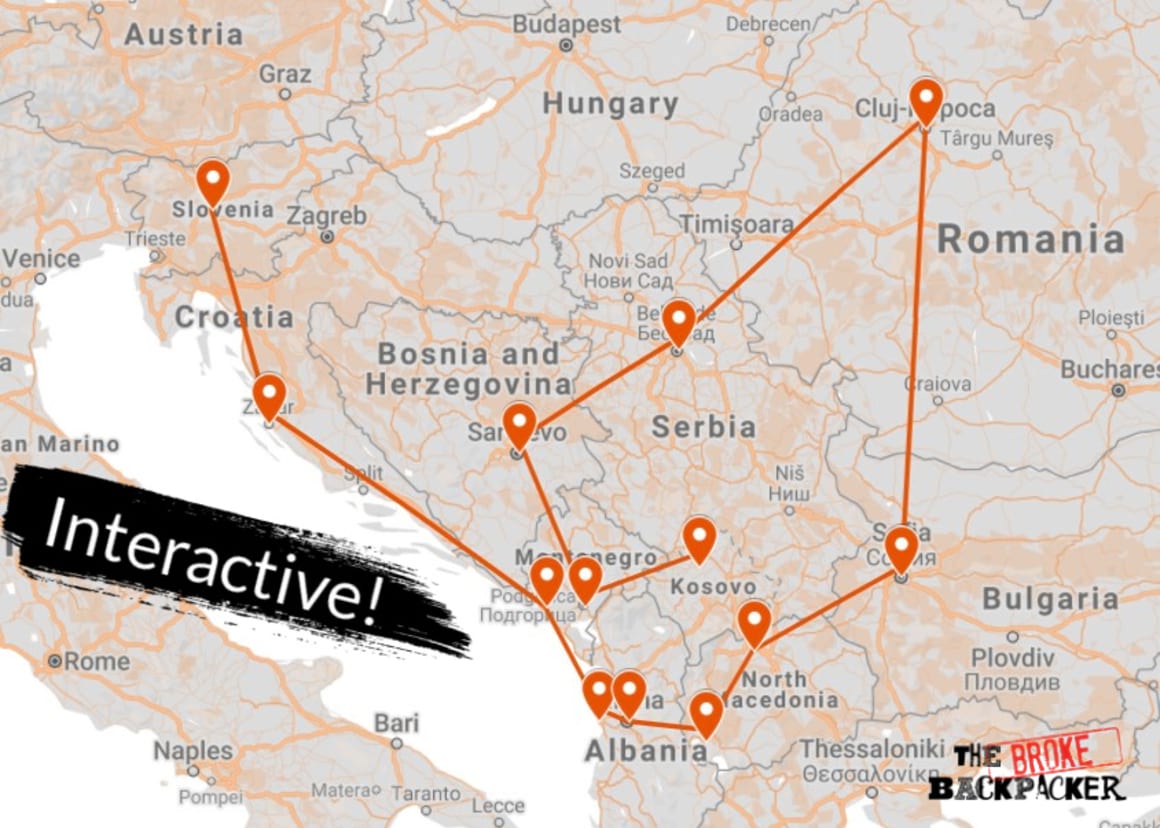
Whilst it would be a rush, you can certainly see the entirety of the Balkans in just 3 weeks. However, with all the zig-zagging I would suggest 4. There are a few different ways you can attack it.
Try this, from Ljubljan head south to Zardar i n Croatia and then follow the coast down to Kotor in Montenegro. From here head towards Durres or go straight Tirana in Albania. Albania borders Macedonia at Lake Ohrid and then, head to the capital of Skopje.
From Skopje , make your way to Bulgaria aiming for the charming capital city of Sofia. If you can take the time to visit Varan on the Black Sea then you will not be disappointed, but it will mean a switchback in order to continue with this itinerary.
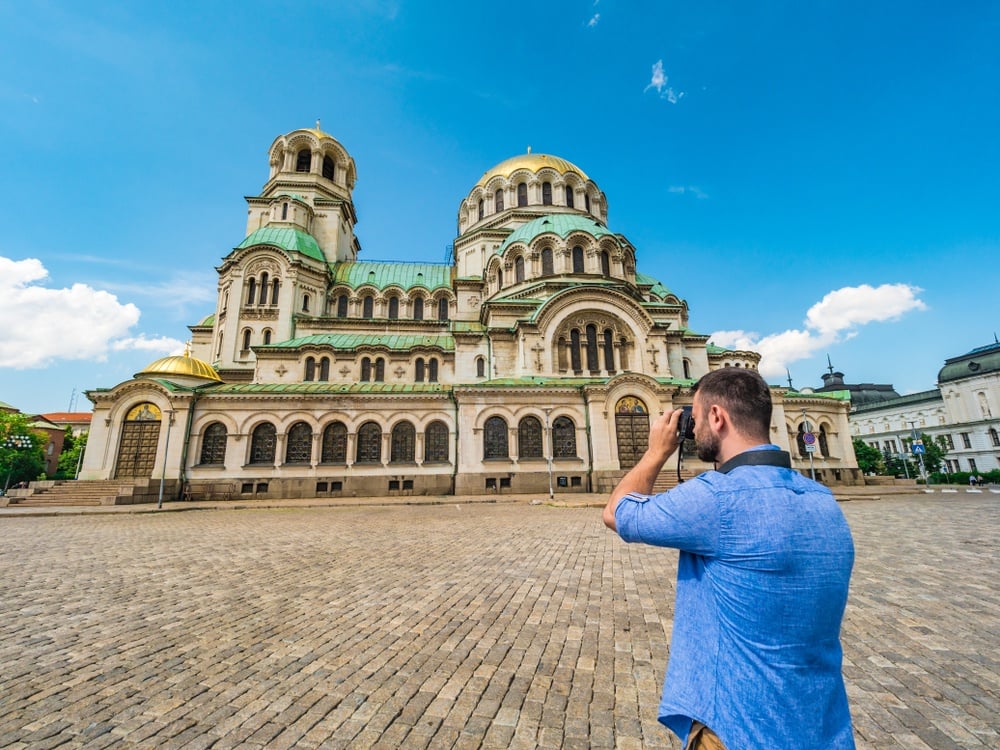
Brace yourself for a looong journey up to Cluj-Napoca (trust me, the long journey is better than stopping of at Bucharest) and enjoy this cool student city. If you have time, then do explore the beautiful, beguilling Transylvania region. Otherwise go towards Timisoara near the border and from there, cross into Serbia and aim for Belgrade ( Nis is however also nice).
From Belgrade, go to Sarajevo and back down to Montegran capital and Podrica , then down to Kosovo where this itinerary ends. Aim for the capital of Pristina to catch your flight home.
Backpacking Croatia
Croatia is by far the most popular Balkan country attracting city-breakers, stag-weekenders and sun-seekers alike. A trip to Croatia mixes Mediterranean charm and a leisurely pace tinged with tiny hints of former Yugoslav quaint.
The headline sight is definitely the marvellous city of Dubrovnik which get’s crowded to fuck during summer months. Split is a close second offering the sea & and old castles but with the added bonus of being a jumping off point for some island hopping.
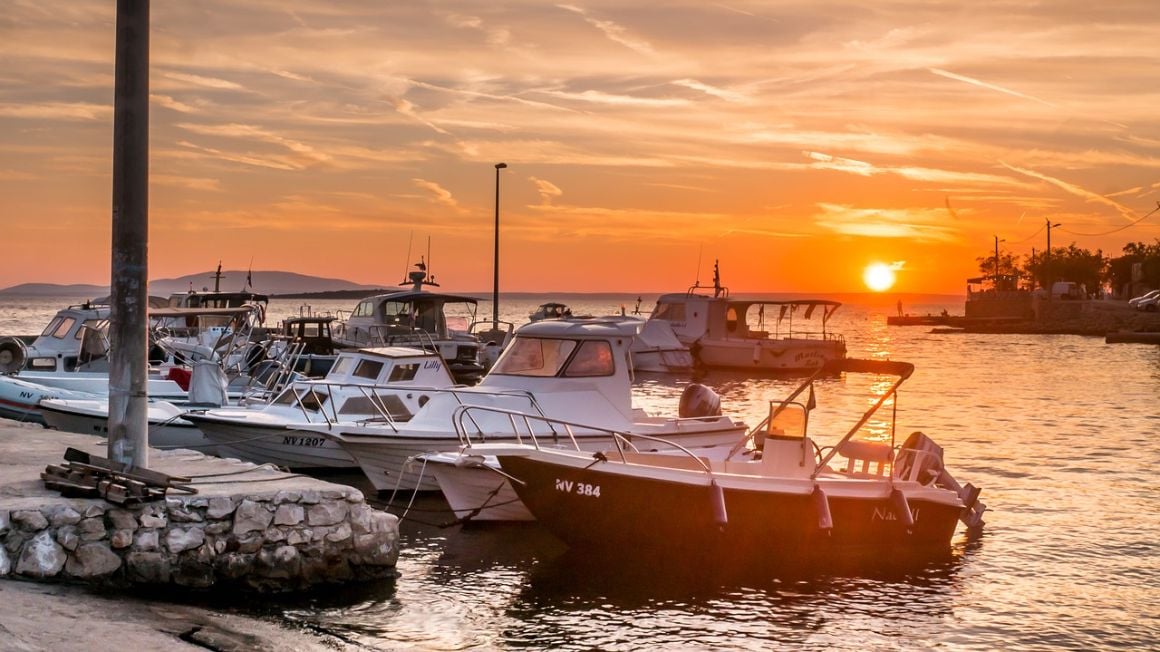
Croatia’s islands are where the decadent and vacuous head to party and are fast beginning to rival Ibiza as hedonistic mecca’s. However, in my view the parties you will find here are amongst the worst in the region whilst also being the most expensive by far.
There are some fantastic national parks to be explored, and they host some of the best hikes in Croatia . A visit to Krka National Park is a must — the waterfalls and cool pools reminiscent of a scene in Southeast Asia have begun to put the country on the backpacking map.
Despite Croatia’s obvious charm, I am not a massive fan of it. It’s popularity means it can often feel like a package holiday destination which is the antithesis of what I, and many backpackers, want from this region. Croatia can be expensive as well so you might be better of visiting the other Balkan countries.
What to Know Before Visiting Croatia
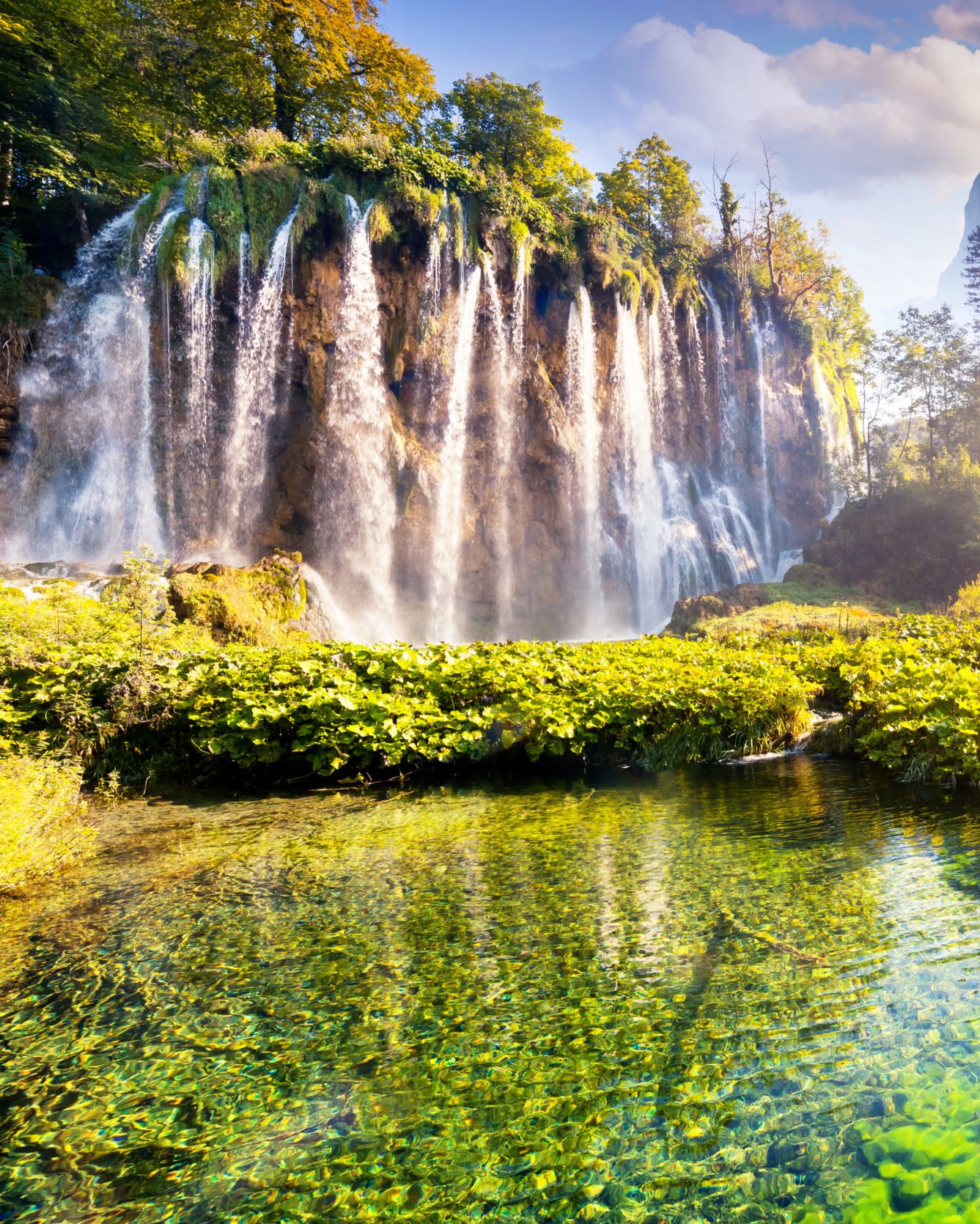
- Don’t miss out on …a road trip! The Croatian coast as well as the interior are best explored with your own set of wheels. Book a car here .
- You know what’s overrated… going on a boat cruise to stay on Hvar island . The food and drink are often triple the price here.
- The coolest hostel is… Hostel Angelina – it’s the most stand-out hostel in the Old Town of Dubrovnik and makes for an excellent base for exploring the amazing city.
- The best food is found in …All along the coast, you can find delicious seafood, fresh produce, and tasty, flaky bakeries.
Backpacking Bosnia and Herzegovina
Troubled Bosnia was a true revelation to me. Its summer landscapes are like a fairy tale of green meadows, flowing rivers dotted with charming old towns. The old city of Mostar is a popular draw, it’s UNESCO protected bridge was destroyed during the Ballkan wars but has been lovingly re-constructed.
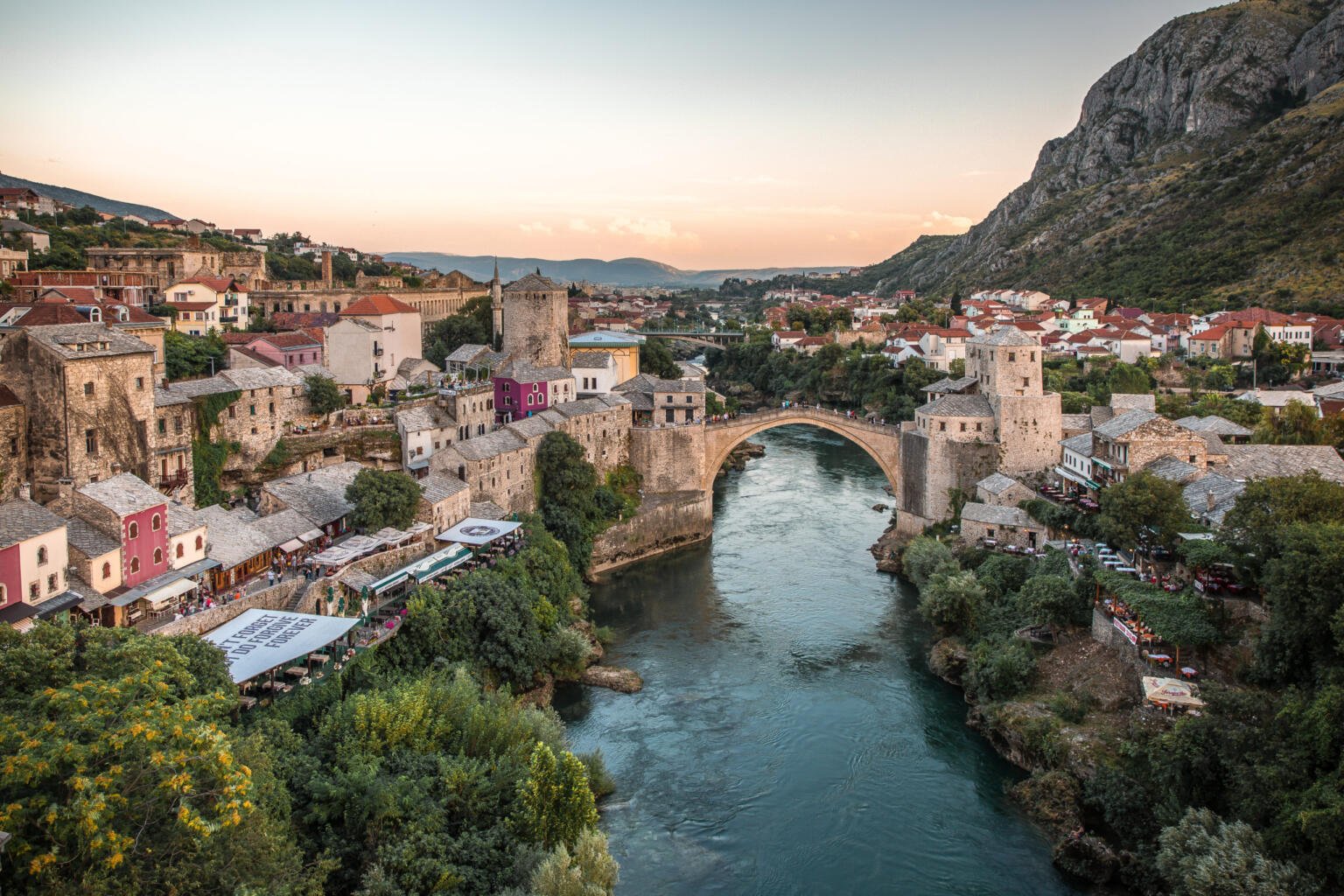
The capital city of Sarajevo was cruelly besieged for 4 years by Serbian forces and bombarded daily. This traumatic episode is both scarred onto the facade of the city buildings and into the minds of its inhabitants. Sarajevo’s streets is a fascinating education into the darker side of humanity and into modern european history. The old town offers a lighter take on things mixing cobbled streets with Ottoman cafe’s.
What to Know Before Visiting Bosnia
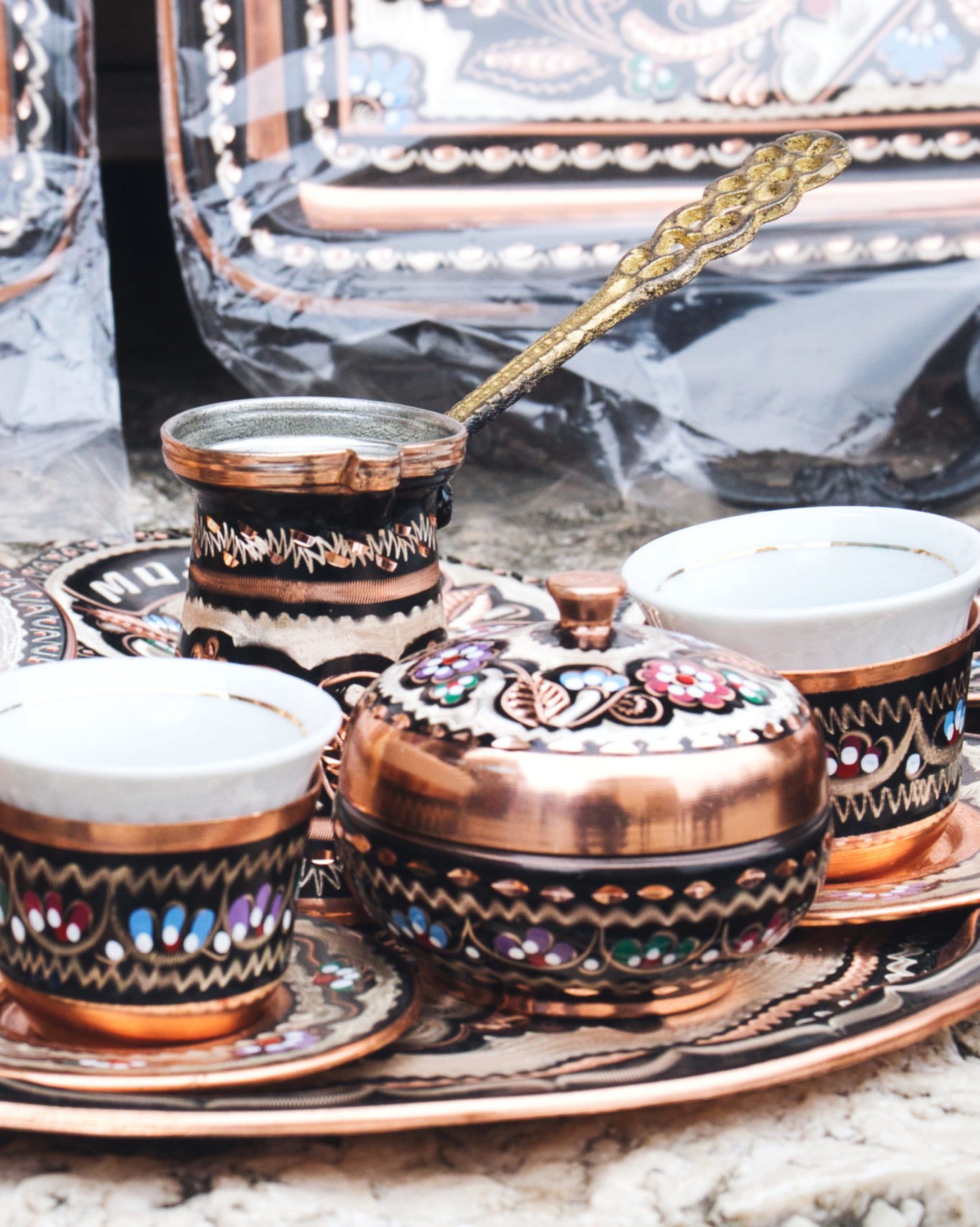
- Don’t miss out on …The bus ride from Montenegro to Mostar is beautiful. Grab a window seat (either side) and enjoy the epic journey!
- Keep an eye out for?. .. There are telltale signs of the Balkan wars at every twice and turn, from bullet holes in buildings to active mine-fields…
- The coolest hostel is …The War Hostel in Sarajevo . A hostel that seeks to recreate life under the Siege of Sarajevo. You sleep on roll mats in blacked out rooms.
- The best food is found in …Sarajevo’s old town cafes. They do delightful Turkish, Balkan and Bosnian food.
Backpacking Montenegro
Little Montenegro is like a milder version of Croatia. It also offers lush coastline, lovely old cities and a leisurely pace of life. For now, Montenegro is less densely crowded and still a good bit cheaper than big brother Croatia so get here soon before that changes!
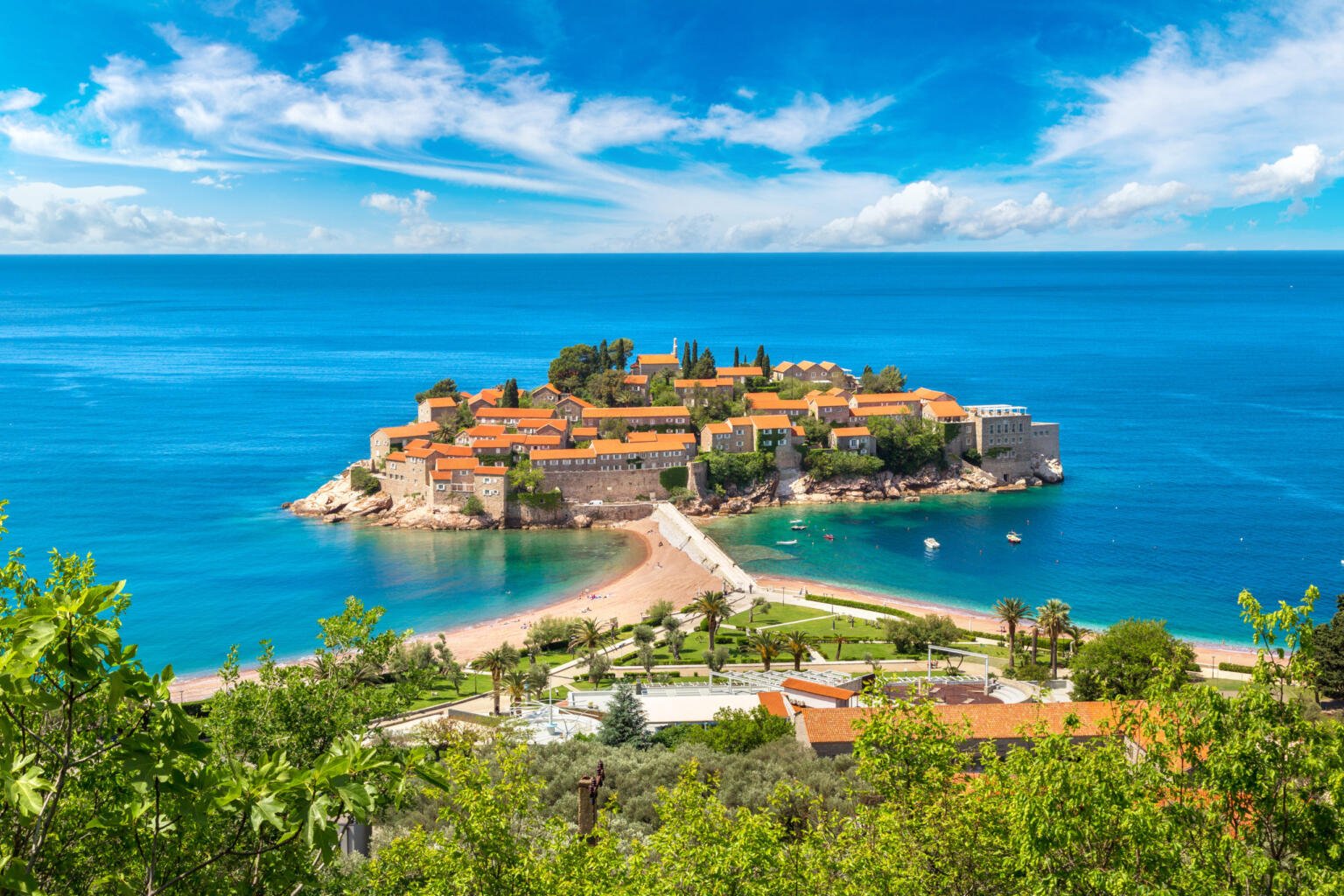
Kotor is a true wonder and well worth a few nights (so do book Kotor accommodation in advance). It gets very crowded during summer day times when the cruise liners pull up but does quieten again once they leave. Be sure to climb up to the fortress that sits atop the hill – you cannot miss it.
Budva is another popular spot whereas further down the coast the little city of Bar is a port town where you can catch ferries to Italy. The capital of Podrica is nice enough if not somewhat unremarkable – best used as either an airport, or as a transmission point into Kosovo or Albania.
What to Know Before Visiting Montenegro
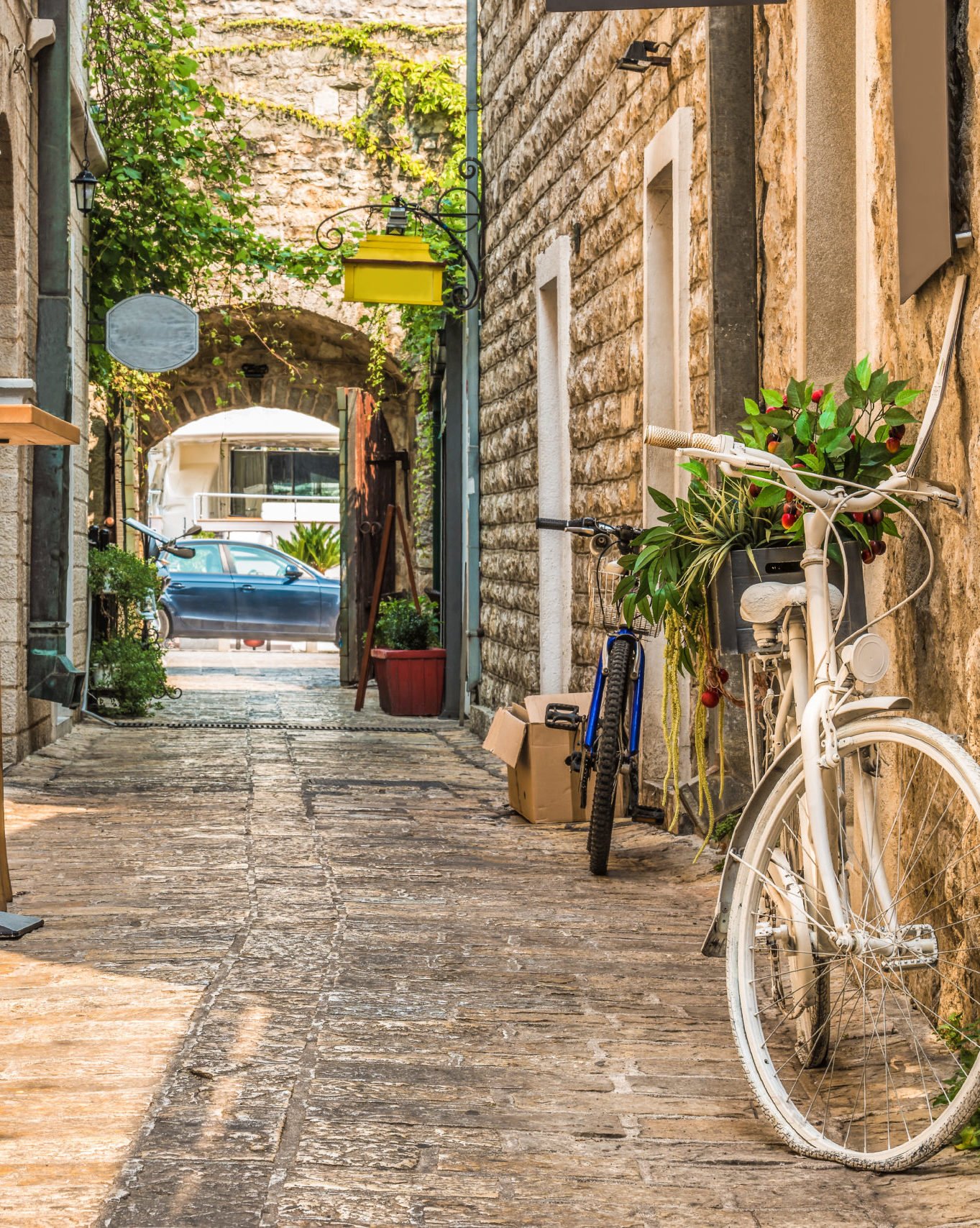
- Don’t miss out on …Kotor Bay. The old town is UNESCO listed and the view from the top of the hill is phenomenal. This place could compete with ANYWHERE in Europe in terms of natural beauty.
- You Know What’s Overrated?. .. Budva and Sveti Stefan. These towns are admittedly nice but really busy and not worth the crowds, hassle, or expense.
- The coolest hostel is … Old Town Homestel in Montenegro. Nice and small but friendly.
- The best food is found in …The little bakeries do amazing Burek. Wash it down with Kefir milk drink.
Backpacking Slovenia
Bordering both Italy and Austria, Slovenia is as much routed in classical, Western Europe as it is in the Balkan’s. Perhaps it is more than coincidence that Slovenia was the first of the Yugoslav nations to break from the union as well as the first to join the EU by nearly a decade. Slovenia is often regarded as being substantially more stable, mild and perhaps sleepy than it’s Balkan brothers.
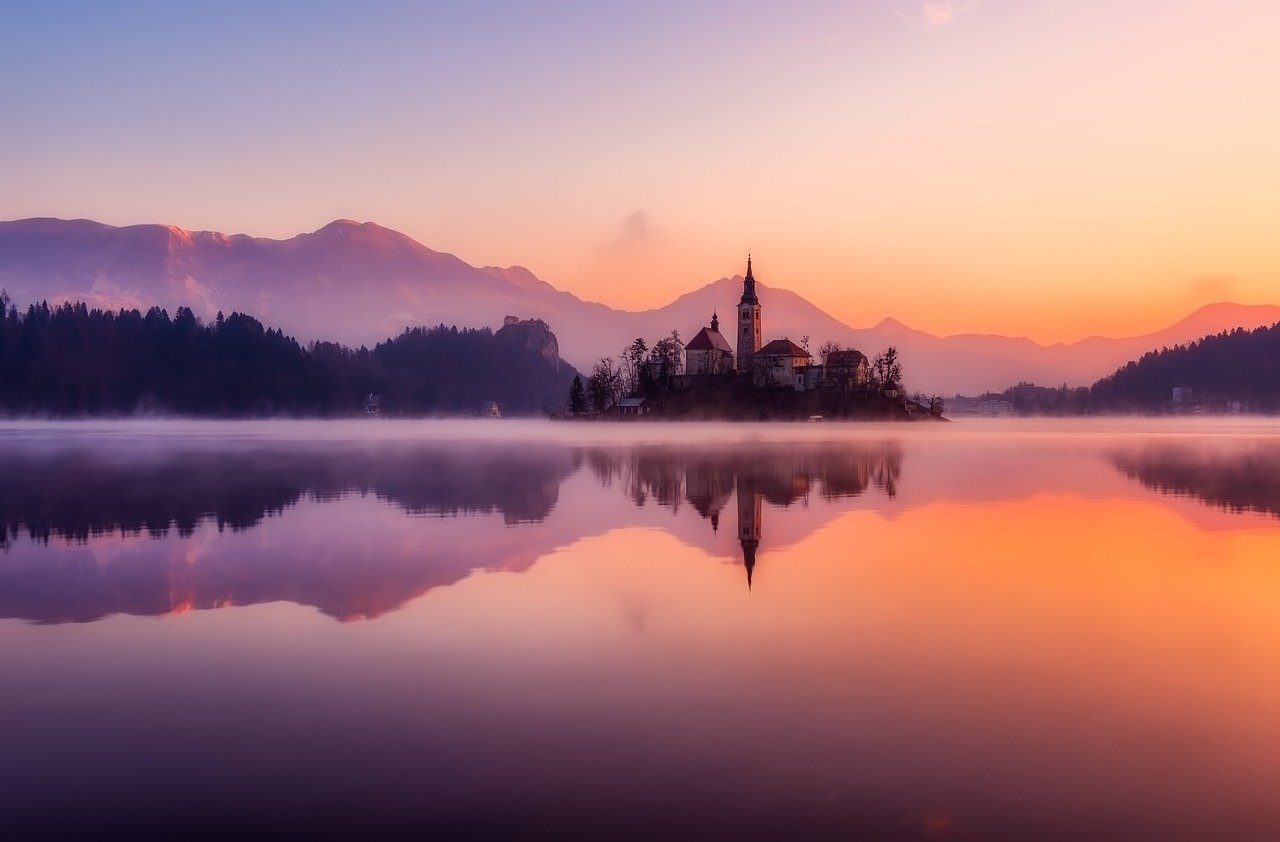
That said, the capital of Ljubljana is quite charming and a perfect spot for a weekend break. The big draw however is the stunning Lake Bled which is a fairytale, picture post somehow packed into reality.
Backpacking Slovenia on a budget is easily done. You’ll be pleased to know that there amazing hostels in Slovenia, but the best ones are located in Ljubljana .
What to Know Before Visiting Slovenia
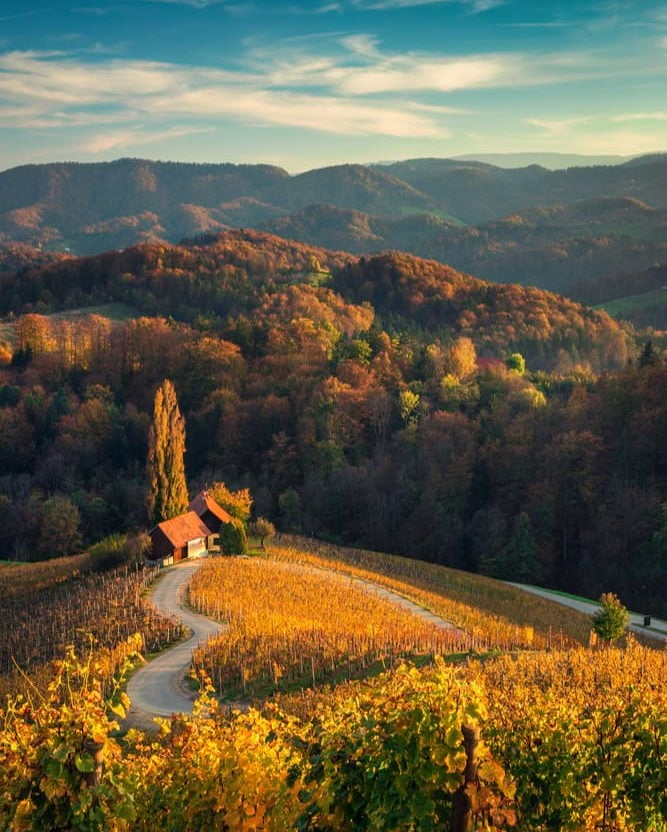
- Don’t miss out on …Triglav National Park; Slovenia’s only national park . Home to the highest mountain in Slovenia, this park features Dolomite-esque peaks with half the crowds. Backpackers can stay at Lake Bled too if they like.
- Keep an eye out for. ..things to do in Ljubljana. For a European capital, this city is frustratingly boring at times.
- The coolest hostel is … 1A Adventure Hostel Lake Bled – These guys will help organize all kinds of activities and even give you a lift to Lake Bled.
- The best food is found in …the gostilnas . These are local diners that cater mostly to the working class, like osterie in Italy.
Backpacking North Macedonia
North Macedonia was previously known simply as Macedonia but was forced by the European Court to add the identifier to it’s name at the behest of Greece. Furthermore, the little nation was also ordered to stop declaring Alexander The Great to be it’s premier famous son-done-well! Ouch!
Politics aside, this is a very quirky and cool little country. It is often overshadowed by its neighbours and doesn’t get that many visitors. The capital city of Skopje under-went an expensive restoration and infamously blew the nation’s savings on neo-classical architecture and a lot of statues.

The premier draw is most definitely the lake side city of Ohrid with its photogenic lake-side monastery, roman ruins and cobbled streets. There are some cool hostels and the city attracts a decent crowd.
If you have the time, Bitola is also a worthwhile stop with some very impressive roman ruins of its’ own. There are also some neolithic standing stones near to the Serbian border which you can hitch-hike to.
What to Know Before Visiting North Macedonia
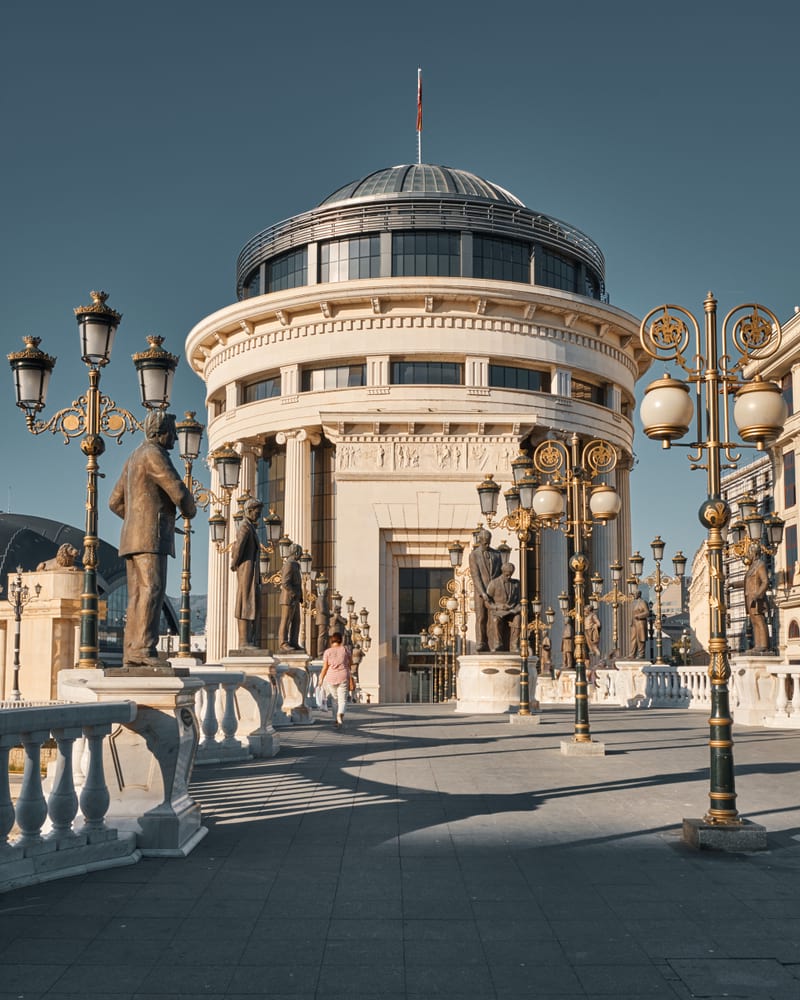
- Don’t miss out on …Ohrid. Lovely vibes. The lake is serene and the city has lots of history.
- Keep an eye out for?. ..The statue of the Hermit in Skopje! In fact all of the statues.
- The coolest hostel is … Sunny Lake Hostel . It’s my favourite hostel in the balkans and attracts lovely people – say hello to Psymon for me.
- The best food is found in …The supermarkets sell enormous, juicy, organic tomatoes.
Backpacking Serbia
Occupying the heart of the old Yugoslavia and debatably the entire Balkan peninsula, Serbia is a thoroughly complicated nation. Serbia was at the core of the Balkan wars that plagued the 90’s and is widely regarded as being the aggressor. In fact, the nation was bombed by NATO in 1999 as a consequence of genocides in Kosovo and Serbia was forced into a peace treaty which it has never forgotten.
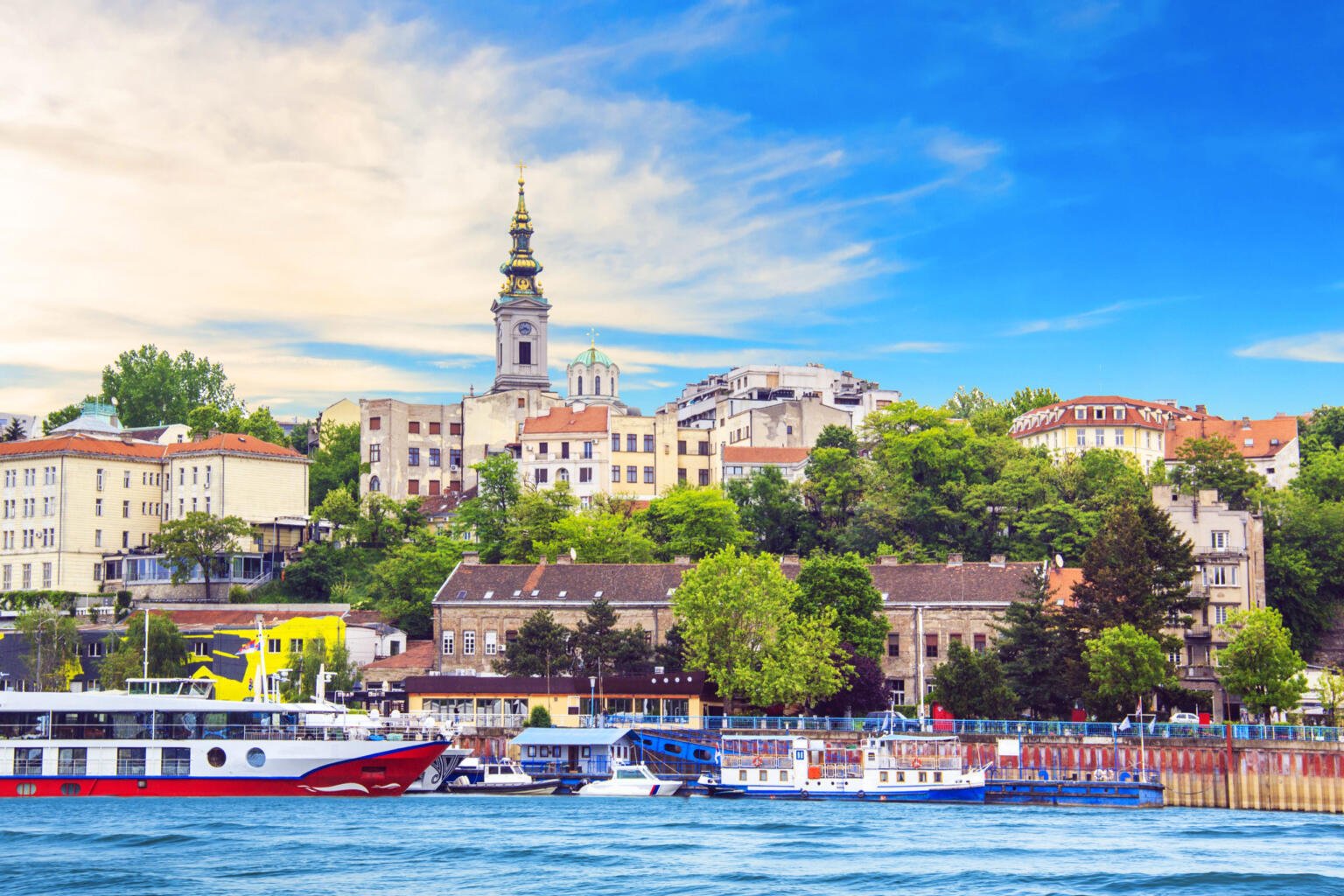
As a tourist, you can expect a more lukewarm welcome from the Serbian people as well as perhaps the strongest language barrier in the region. The country is less beautiful than most of its neighbours and doesn’t house quite as many points of interest.
Still, the country did get under my skin and there is something unique about it. Belgrade’s neighbourhoods are a mad mash up of architectural styles, Nis and Novi Sad are fine 2nd tier cities and pretty much every town has an Ottoman era fortress. Perhaps as a reaction to the recent trauma’s it suffered (and caused), there is also a truly raging party scene – you can find Serb’s getting drunk and dancing on barges 7 nights a week or you can seek out the authentic and awesome Techno and Trance scenes.
What to Know Before Visiting Serbia
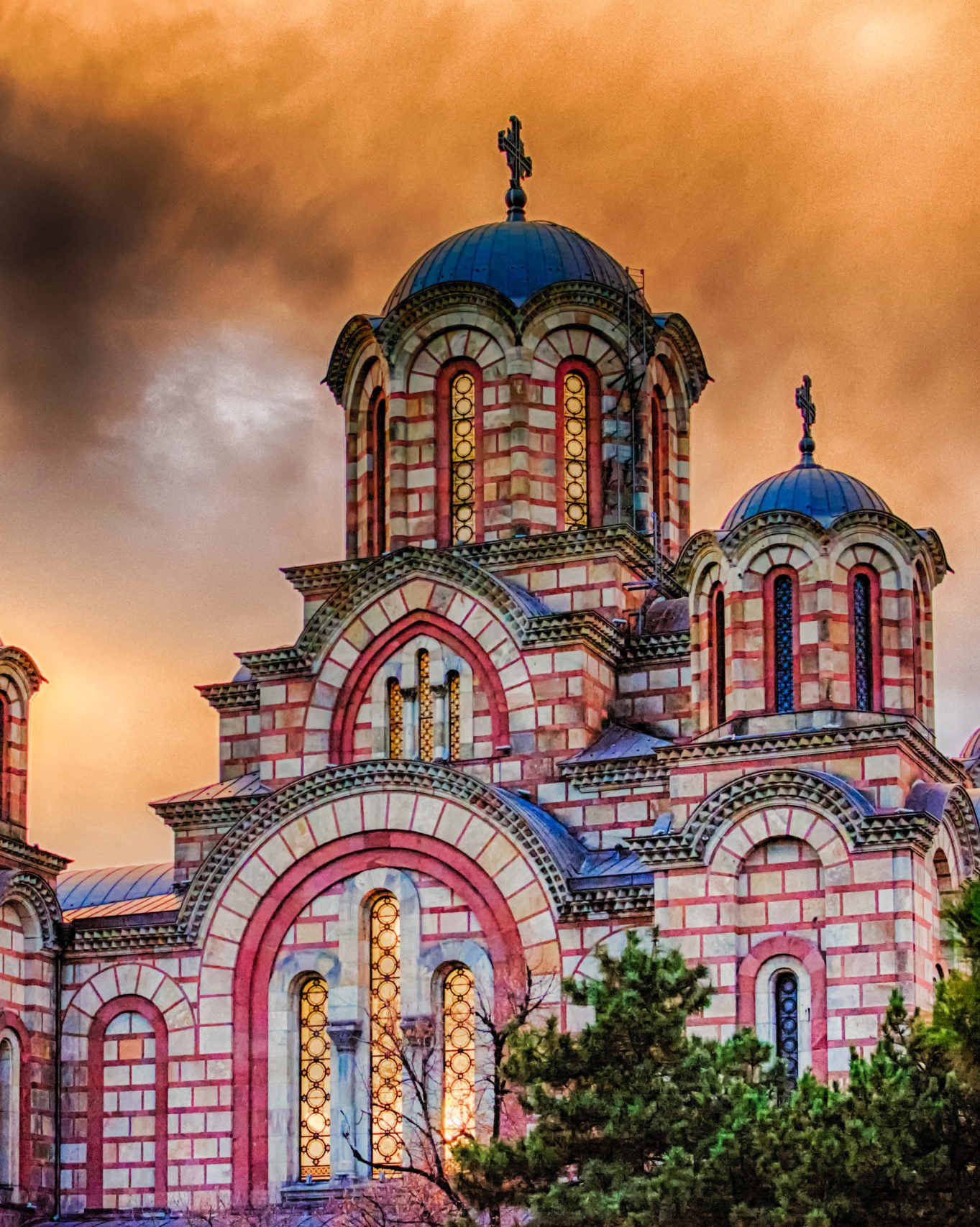
- Don’t miss out on …A rave! Serbian’s electronic music and rave scene are some of the world’s best. Belgrade is the epicentre and is the easiest place to find a party.
- Keep an eye out for?. ..The hottest women you’ve ever seen in your life; and also the coldest. Steel yourself lads! You’ll need to be on your A-game here…
- The coolest hostel is … Balkan Soul in Belgrade. It’s central an does good bar crawls.
- The best food is found in …Italy. No seriously as a vegetarian I struggled in Serbia…
Backpacking Kosovo
Kosovo is the Balkans newest nation and declared independent from Serbia following the NATO invasion in 1999. Kosovo is demographically made up of native Albanian’s – Muslims descended from the Ottoman empire – and it was these ethic tensions which spilled into war and genocide.
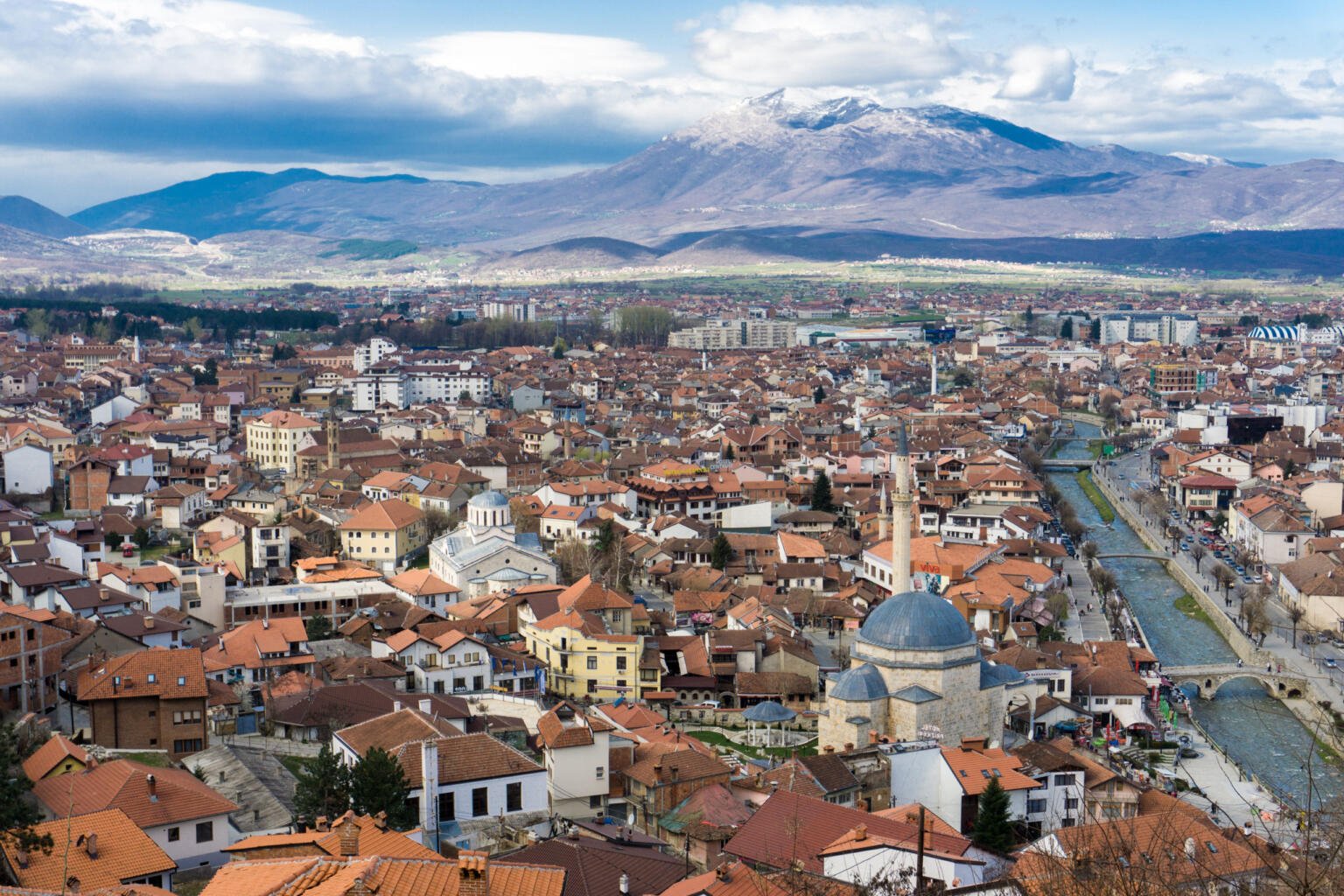
Kosovo may be small but it’s quirky and cool, and should DEFINITELY be on your list if you love all things off-beat. The capital Pristina has a lively central avenue with an amazing coffee shop culture and some awesome strange architecture. How about visiting the National Library, AKA “the ugliest building in the World”, or Bill Clinton’s statue? End the night at M Club, the best nightlife spot that’s basically an all-invited house party.
You should also check out picture-pretty Prizren, a historical Ottoman city; and Peja which is your gateway to awesome hiking trails.
Since Serbia still considers Kosovo to be a part of their area, you might get in trouble if you try to visit Serbia after Kosovo. It’s also best to avoid the northern border areas – otherwise it’s safe to travel.
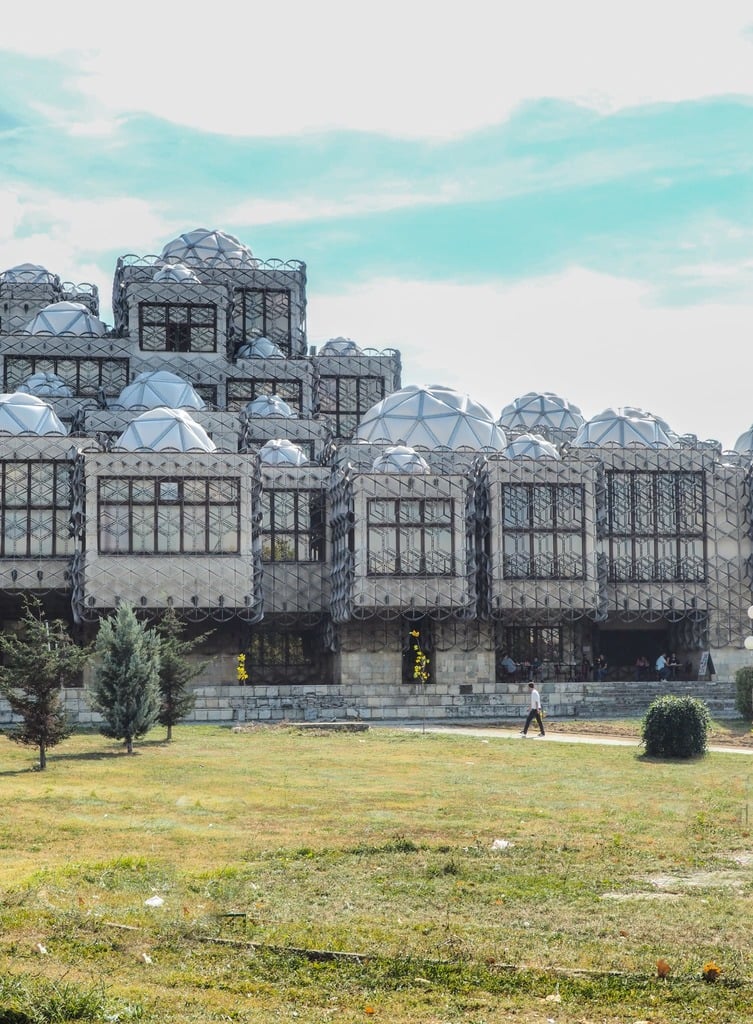
What to Know Before Visiting Kosovo
- Don’t miss out on… grabbing a cup of coffee in Pristina. Young people sit around in the capital’s cafés for hours chatting and sipping away.
- Keep an eye out for… the independence monument, “Newborn”. It gets re-painted every year with different motifs.
- The best food is found in… mountain huts. The guesthouses along the Peaks of Balkans route put up a true feast complete with Peja beer and rakia.
- The Best Hostel is… Oda Hostel in Pristina. Backpackers give it almost full 10/10 for cleanliness, staff, AND location!
Backpacking Albania
Albania is the least developed and least discovered of the Balkan nations and emerged from the collapse of communism with pretty much 3rd world infrastructure and endemic political corruption. The nation is still recovering and is widely regarded as a Mafia state where horse and carts remain the main mode of transport in some villages! Some of the poverty you will encounter here is seriously punishing.

That said, the country does seem destined for better things and has a hell of a lot of backpacker potential. Prepare for mountain towns where you can travel back in time, stunning nature and some resort towns on the med which rival even Greece.
Albania is definitely not for the average tourist (at least yet) but for backpackers seeking to get off the beaten path , it is absolute gold. Oh, and it’s perhaps THE budget destination in Europe.
What to Know Before Visiting Albania
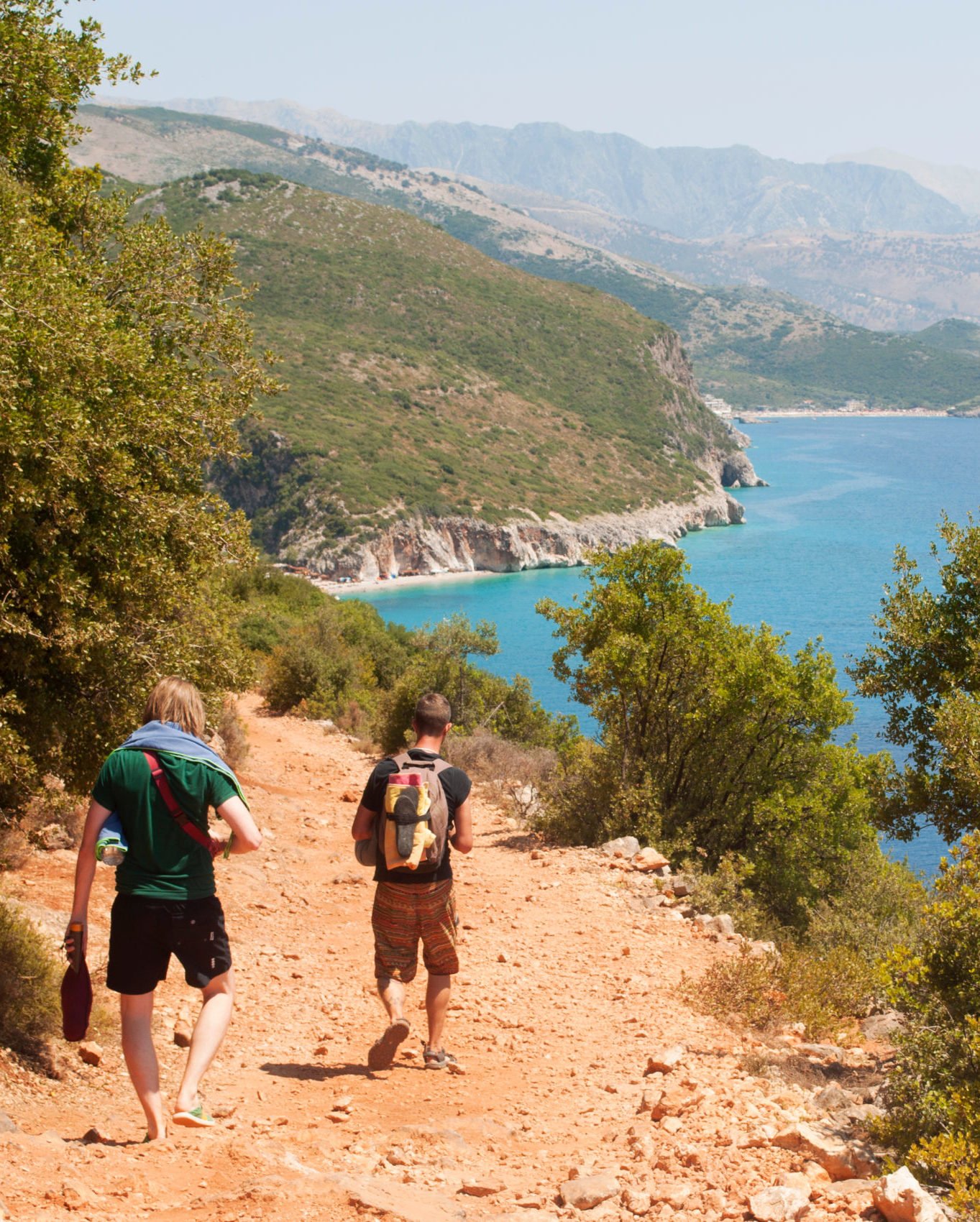
- Don’t miss out on …The Albanian Riviera. The med coast has also the charm of backpacking thorugh Greece and none of the crowds.
- Keep An Eye Out For?. ..Horses and carts! The way of life in Albania is very traditional and old world outside of the capital and cites.
- The best food is found in …The UNESCO town of Berat. Some of the restaurants are sublime.
- The Best Hostel is …Check out Tirana Backpacker Hostel in Tirana. Well located and offers walking tours.
Backpacking Romania
Squatting at the far side of the Balkans, stretching onto the Black Sea, Romania is mostly known as the home of Dracula and for it’s Roma population.
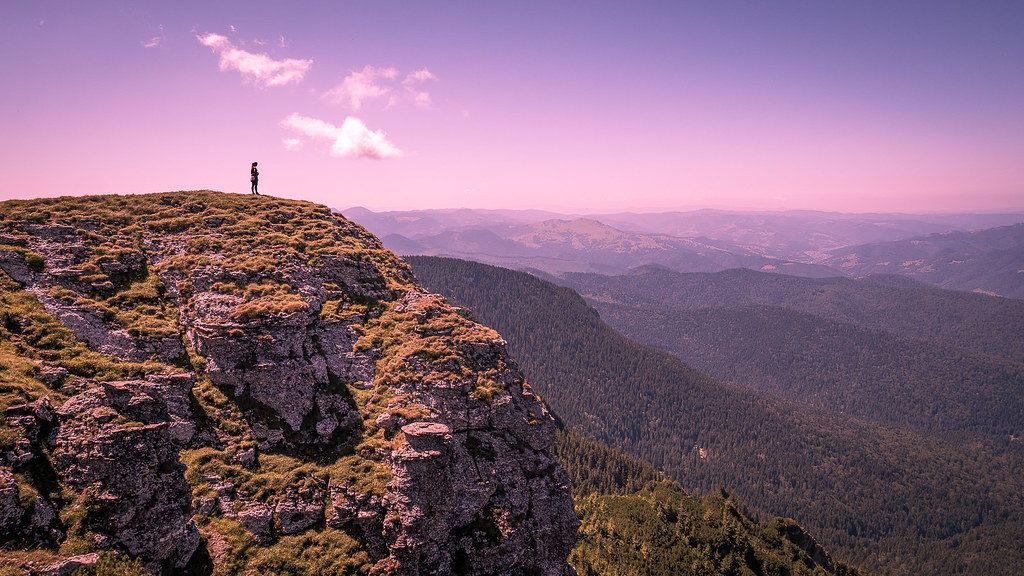
Romania is actually one of my favorite countries and every time I visit I find something wonderful. The people are friendly and the youth very curious about the world and welcoming to visitors. The Transylvania region is utterly lovely with lush green mountains. Medieval towns and yes, Dracula’s castle. Brasov is insanely pretty, Sighisoara a living fairy tale and Cluj-Napoca is a hip student city.
The capital of Bucharest is a bit of a monstrosity and I can’t really recommend it too much unless you happen to love communist architecture. The Romanian share of the Black sea shore is also home to some lovely holiday towns which get very busy with locals during the summer.
What to Know Before Visiting Romania
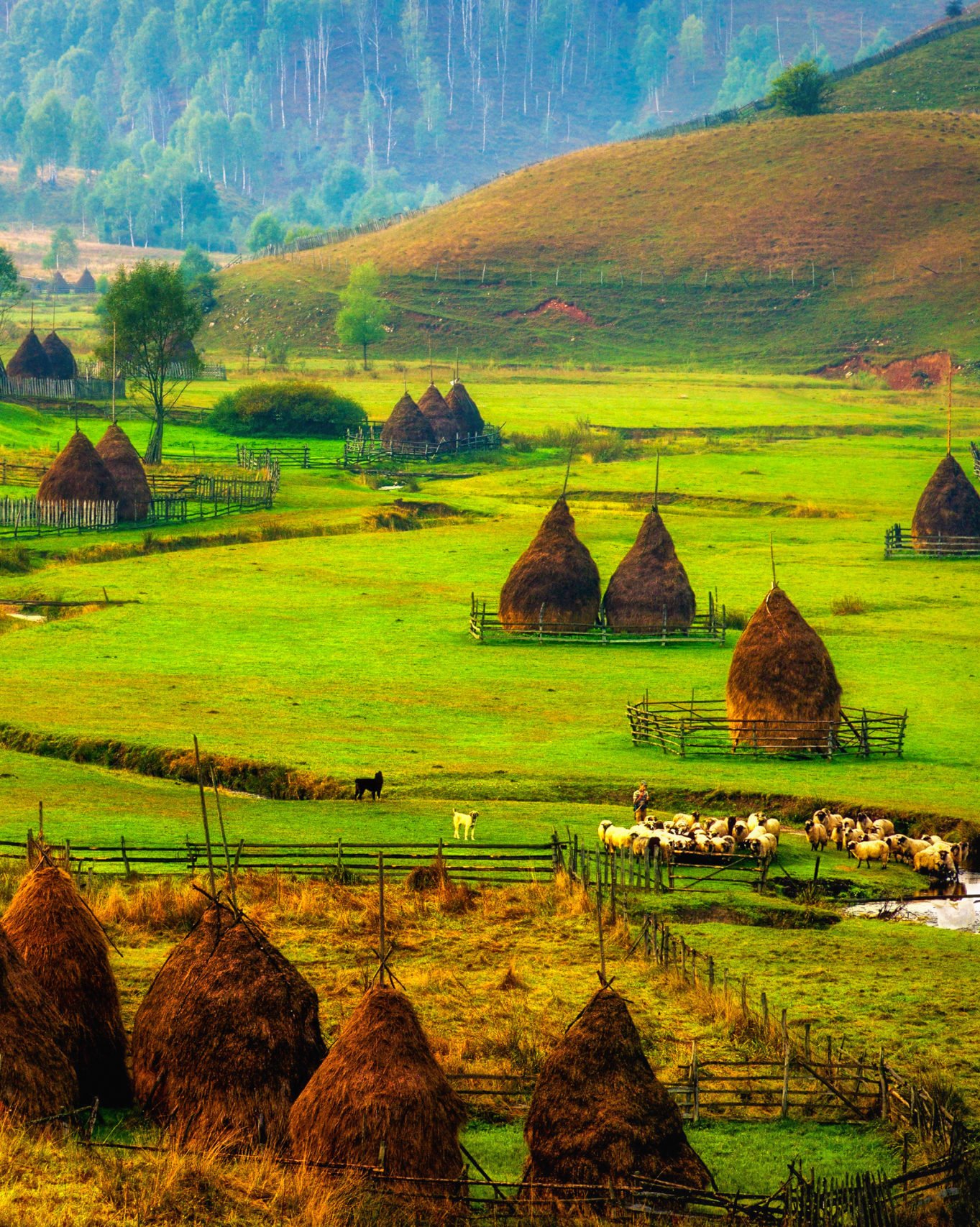
- Don’t miss out on …Transylvania. The region is mountainous, naturally beautiful, and offers lots of medieval charm. No vampires either.
- You Know What’s Overrated?. .. Bran Castle. There are much better castles to see around Romania although, if you are near, then yeah swing by.
- The coolest hostel is … Centrum House in Brasov. Nice vibes and a good selection at the (free) breakfast
- The best food is found in …Head for the traditional, cellar restaurants. Romanian food is simple, stodgy and filling.
Backpacking Bulgaria
Last but not least, we have the Bulgarian adventure . Sharing the Black Sea short line with Romania, Bulgaria has made efforts to fete itself as a budget answer to Greece package tour destination, and has suffered for it.
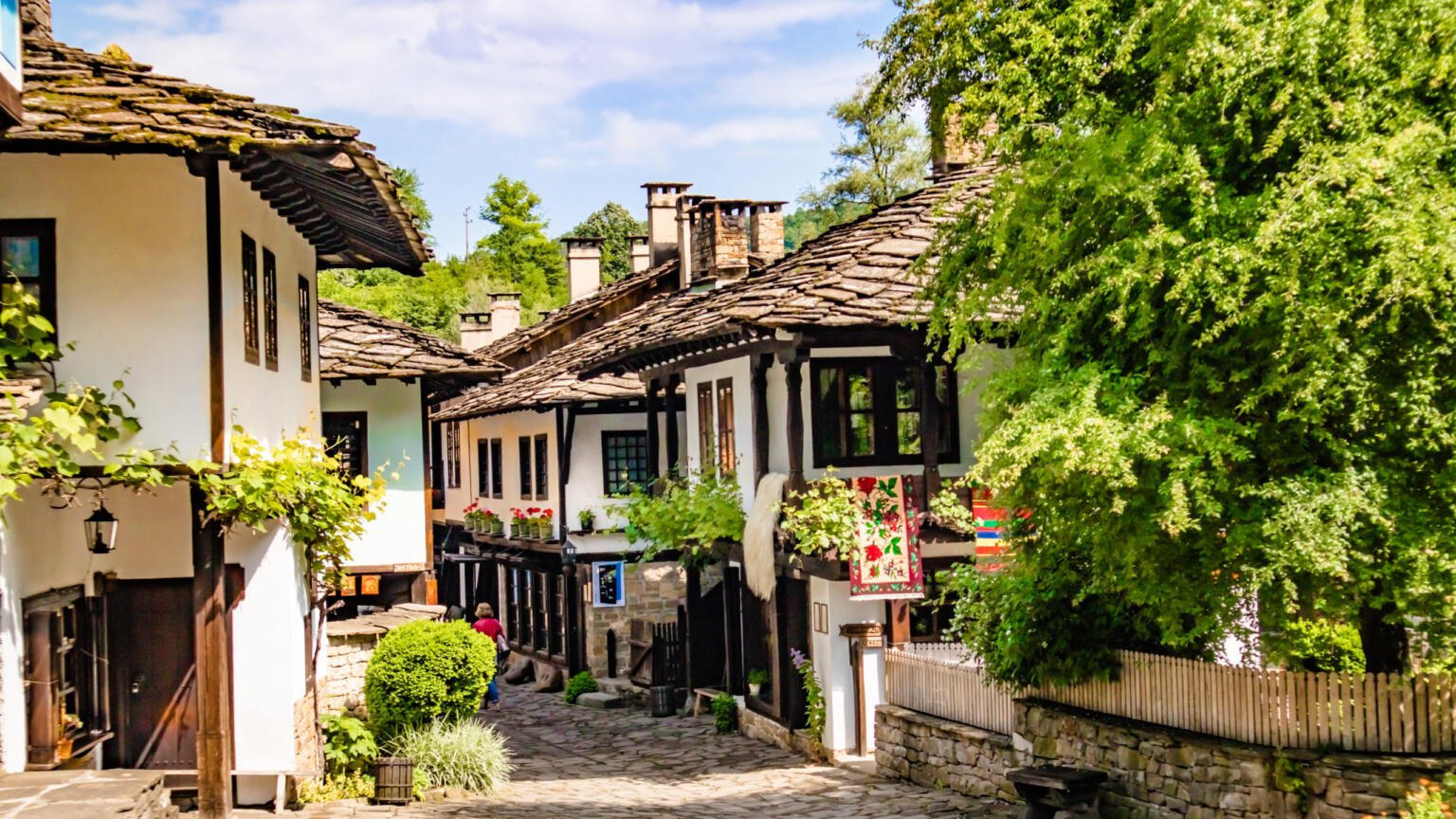
That said, stay away from the resorts and the nation has a lot to offer. The city of Sofia has some great Byzantine architecture as well as some truly horrendous communism examples. The Black Sea town of Varna is fun and there are quite a few under-ground, hippy festivals going on during the summer.
What to Know Before Visiting Bulgaria
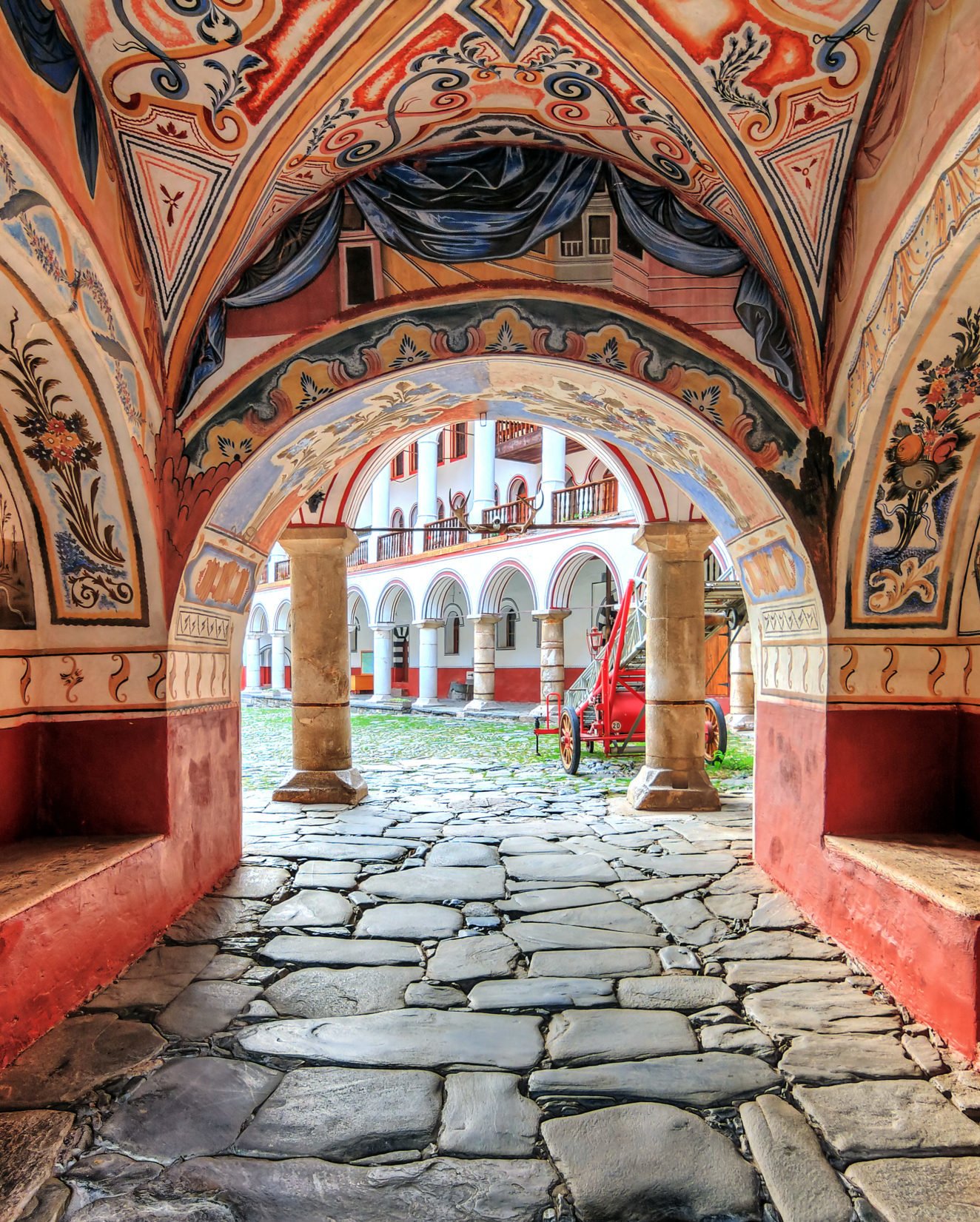
- Don’t miss out on …The garish communist monuments. Buzludzha and Shumen have to be seen to be believed.
- You Know What’s Overrated?. ..the package tour resorts, particularly around the coast. They are the definition of Hell and should be avoided at all costs.
- The coolest hostel is … The hostel scene here is really taking off but check out Sofias Orient Express .
- The best food is found in …By the Black Sea. The Bulgarian sea food is well impressive.
Getting Off the Beaten Path in The Balkans
Getting Off the Beaten Path in The Balkans is ridiculously easy. Simply aim for any non-capital city and you may well find you are the only tourist in town. In Serbia I headed to Nis, in Macedonia I spent a night in Bitola and in Romania, I didn’t come across many westerners at all outside my hostel.
The only real exception is the Med coast – Croatia and Montenegro get a bit thronged – and to a lesser extent the Black Sea coast which is popular with local tourists all summer long.

We’ve tested countless backpacks over the years, but there’s one that has always been the best and remains the best buy for adventurers: the broke backpacker-approved Osprey Aether and Ariel series.
Want more deetz on why these packs are so damn perfect? Then read our comprehensive review for the inside scoop!
Whatever you want from a backpacking trip or holiday, you can find it in the Balkans. From Island hopping to partying down to vampire hunting, let’s take a look at some of the definitive things to do in the Balkans.
1. Island Hop in Croatia
Croatia’s islands, dotted along it’s Dalmatian coast, are well established as top tourist hotspots offering visitors the chance for some island life. There are a lot of them and the more popular ones tend to be a bit overpriced and soulless. Still, if you keep on searching you will find an Island that is just right for you.
Most of them are best reached from Split and some are near enough to be done on a day trip – in fact on some trips you can visit multiple islands in one day if you are happy to keep on moving and never dwell too long.
The largest, Sveti Klemen t, is a real back-to-nature escape, whereas Hvar is trendy, vibrant and popular for parties although it does pale in comparison to Pag which is a Slavix-spring break duche-a-thon. Vis is the place to head if you need to moor your yacht. Our personal favourite is Korcula .
2. Visit a Romanian Castle
Romania’s history has been fraught and bloody. In fact, the region seldom enjoyed real peace from the medieval times right up until the 1940’s when it was stabilised under the boot of the corrupt puppet Dictator Nicolae Ceau?escu.

As such, the nation is peppered with castles many of which have been maintained remarkably well. Wherever in Romania you are, you should be within day tripping distance of one. The most famous is of course Bran Castle near Brasov, one time home of real life Dracula Vlad the Impaler. That said Peles Castle near Sinaia, in Prahova County is perhaps the most magnificent and is also within reach of most Transyvalia cities if you have a car (the Romanian castles make for a great Balkan road trip ).
3. A War Tour in Sarajevo
Bosnia is by far amongst the best places to travel in the balkans. Now, some would call this inclusion an instance of “ dark tourism ” but personally, I simply find it fascinating and educational. Between 1992 – 1996 the city of Sarajevo was besieged by Serb militants who shelled it daily whilst the world looked on.
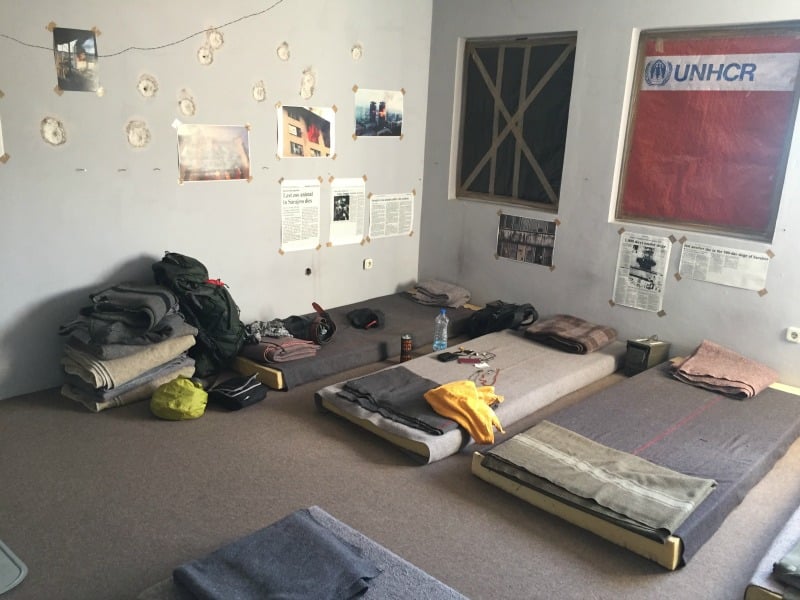
There are now plenty of walking tours in Sarajevo which you can join to learn the tale of the Balkan wars and of life during the siege. The shell marked buildings are still there to see bringing the darker side of modern history chillingly to life. Also be sure to check out the Sarajevo “Siege Tunnels”.
4. Lake Bled in Slovenia
Slovenia is often considered to be the older, wiser and boring of the brothers Balkan which is actually as much a complement as it is an insult. Still, Slovenia does have some truly stunning nature and the (justifiably) most famous example is Lake Bled.
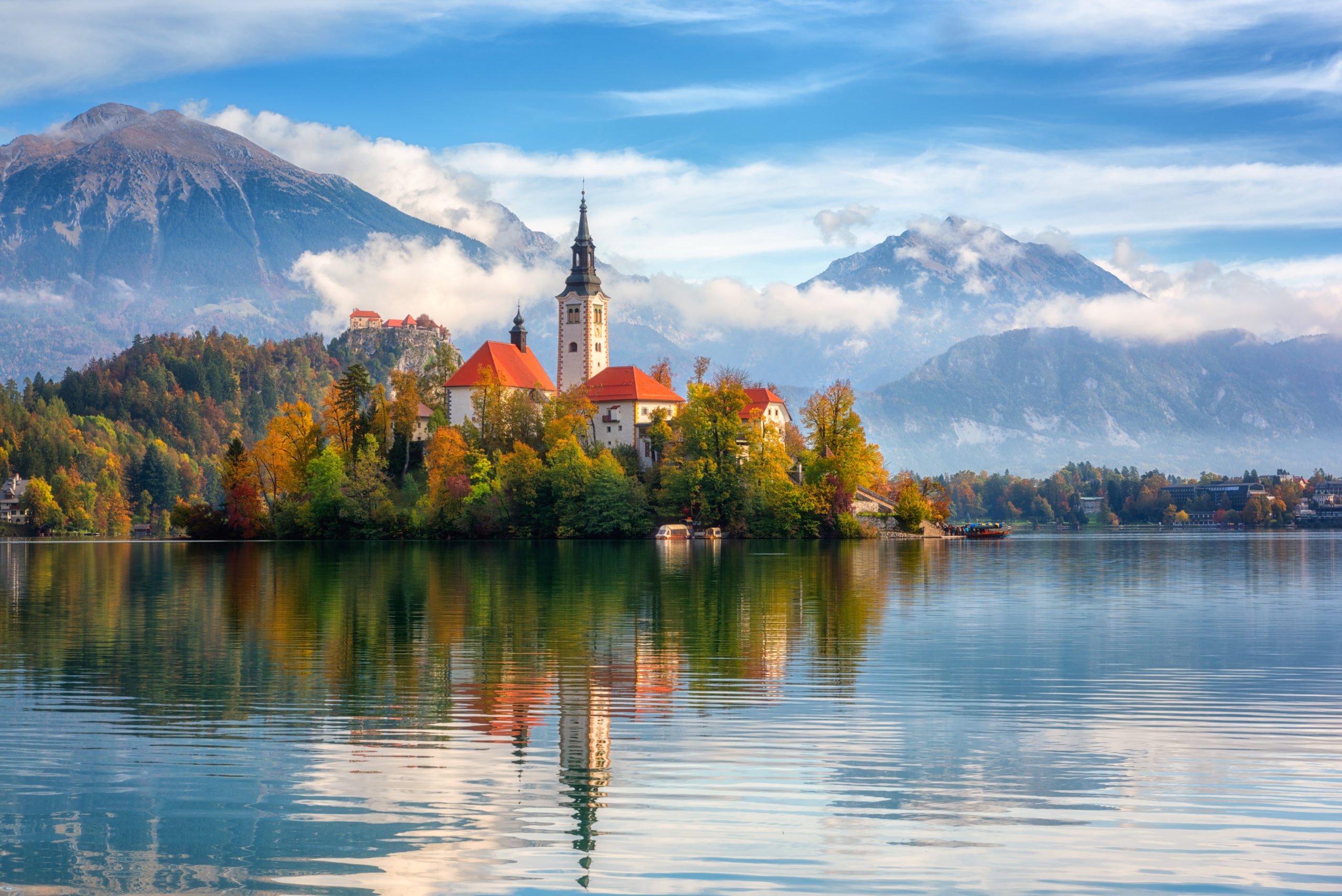
You have probably already seen images of Lake Bled so why not take the chance to visit this fairy tale for yourself? Bring a good camera.
5. Party in Serbia
Sociologists concur that whenever a nation emerges from trauma, it then tends to party hard. After WWII the west had the rock n roll and the hippy counter-culture, Israel and Lebanon both emerged as rave centres during the 1990’s and now the entire Balkan region is cementing its reputation as a capital of hedonism.
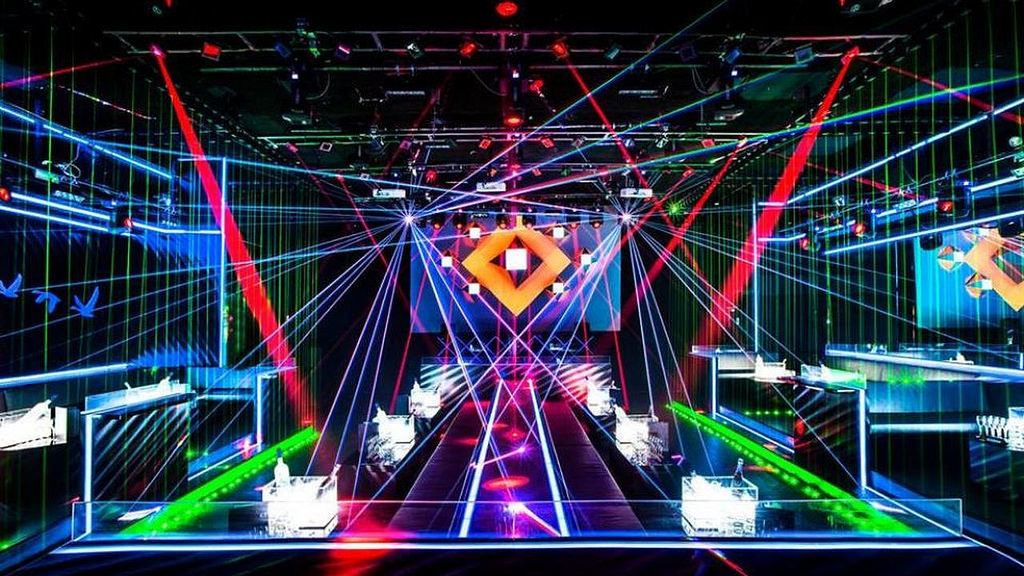
Nowhere did I find this to be more apparent than in Serbia. Belgrade’s nightlife is relentless from Barge-pubs playing Turbo-Folk (nationalistic folk songs set to euro pop beats) and the cool kids make ther way to semi-underground Techno parties. It is no coincidence that many of the best Psytrance producers in the world today hail from Serbia.
Novi Sad hosts the Outlook Techno festival each summer and the city of Nis throws giant outdoor parties every summer weekend in an Ottoman era fortress.
6. Hike Up To The Castle in Kotor Bay – Montenegro
The old city of Kotor is a UNESCO listed wonder and the bay into which it is built is truly stunning. The city does attract a fair amount of tourists but it is with good reason. Anyway, if you do visit then the definitive things to do in Kotor is to hike up to the old, ruined fortress and explore the ancient defensive walls. You literally cannot miss it as it looms over the town.
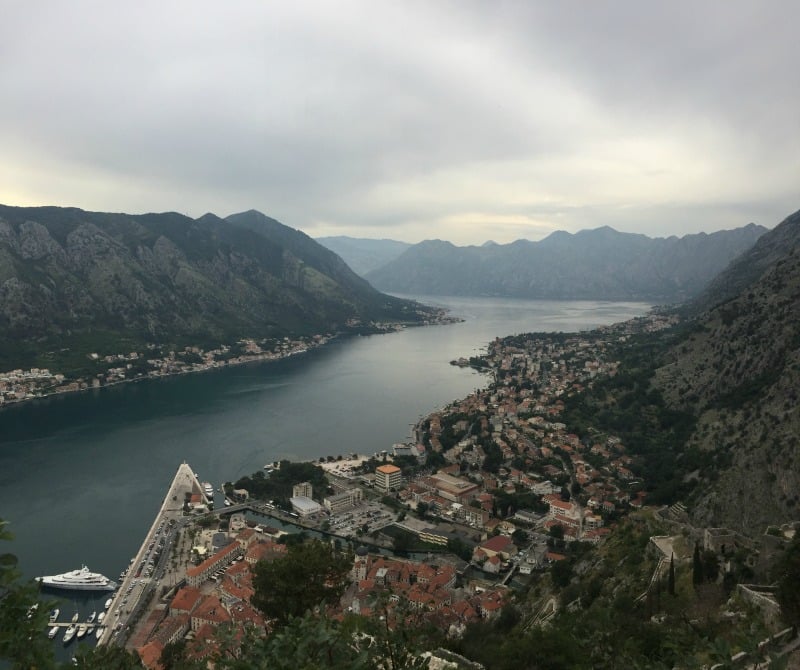
There are 2 ways you can approach it – you can hike up following the paths and marked trails and pay the $3 admission price, or you can go rogue and find the secret “free” entrance. The views are truly rewarding, bring a cold beer and plenty of bug spray.

Wanna know how to pack like a pro? Well for a start you need the right gear….
These are packing cubes for the globetrotters and compression sacks for the real adventurers – these babies are a traveller’s best kept secret. They organise yo’ packing and minimise volume too so you can pack MORE.
Or, y’know… you can stick to just chucking it all in your backpack…
The good news is that the backpacker trail winds across the Balkans and you can find some manner of hostel in most cities. However, if you decide to get off the beaten path at all then you will need to search for guest-houses and hotels instead.
There are camp sites and wild camping is tolerated even in areas where it may not be entirely legal.
Couchsurfing i s also alive and well in the region especially in the lesser frequented destinations.
Airbnb has also arrived in the Balkans and is pretty reasonable. For example, I picked up a stunning apartment in Nis Serbia for just $25 per night.
The Best Places to Stay in The Balkans
Whilst prices do vary between Nations, the Balkans is typically a damn site cheaper than the rest of Europe. This makes it one of the best places to travel in Europe on a budget .
Croatia is the most expensive and can actually be as pricey as Italy during the summer (so why not just go to Italy?). Albania is the cheapest by far and it’s basic infrastructure is happily reflected in some very low prices.
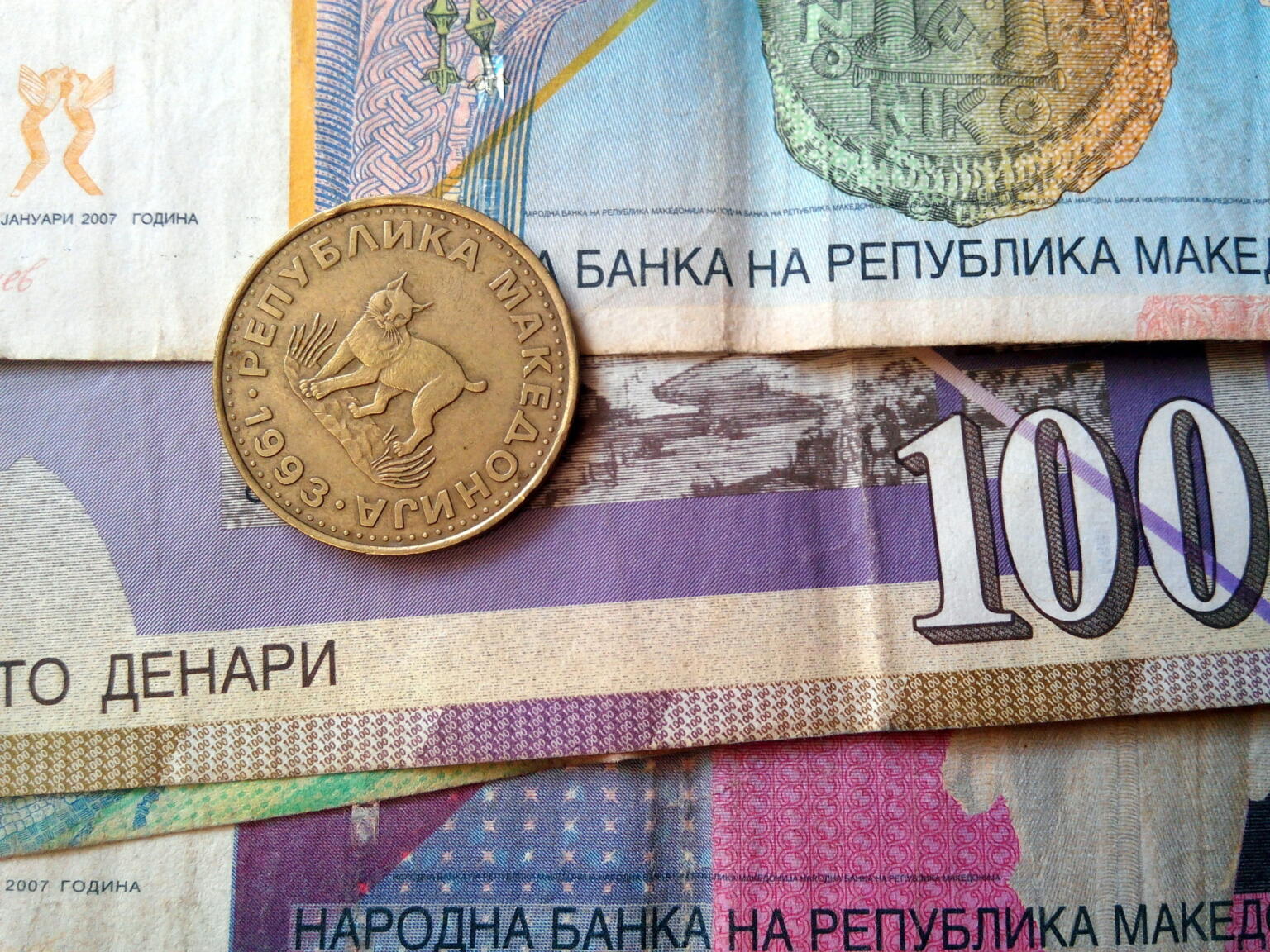
Still, all across the region you can usually expect to get a couple of beers for under $5 and find a dorm bed for under $8. Whatever your Balkans travel budget, there are always ways you can reduce costs.
A Daily Budget in The Balkans
Money in the balkans.
There are 9 different currencies in the Balkans so prepare to visit a lot of money changers and to occasionally present the wrong note when trying to pay!
Albania: lek (lekë)
Bosnia & Hercegovina: convertible mark (KM)
Croatia: kuna (KN)
Kosovo: euro (€)
Montenegro: euro (€)
North Macedonia: denar (MKD)
Serbia: dinar (RSD)
Slovenia: euro (€)
Romania: Lei (li)
Bulgaria: Lev (Lv)
The good news is that ATM’s are abundant across the region except for in remote areas and to some extent, in Albania. Money changers are also found in most bus stations and in all stations that deal with border-crossing busses. You may also occasionally get away with paying in the wrong currency if you are near the border.
As a rule, bring a supply of Euros as these are always welcome, and your bank or travel money card.
Travel Tips – The Balkans on a Budget
The Balkans is a seriously budget friendly destination and I didn’t really stress all that much about what I was spending. Still, some basic cost saving tips are in order! Supermarkets and markets are cheap unless you buy imported goods. Stick to local produce, cook your own and drink only local beer.
Whilst busses are pretty cheap, you can usually hitch-hike in the region very easily. As I said earlier, Couchsurfing is also alive and well if you want to save some cash on flop’s. You can camp in most semi-rural areas without getting into too much trouble.
Your biggest (needless) expense will probably come from changing currency so try to manage this as carefully as you can.
Oh, and if you are on a broke backpacker budget then be sure to avoid Croatia altogether.
Why Should You Travel to The Balkans with a Water Bottle?
Plastic washes up on even the most pristine beaches… so do your part and keep the Big Blue beautiful!
You aren’t going to save the world overnight, but you might as well be part of the solution and not the problem. When you travel to some of the world’s most remote places, you come to realise the full extent of the plastic problem. And I hope you become more inspired to continue being a responsible traveller .
Plus, now you won’t be buying overpriced bottles of water from the supermarkets either! Travel with a filtered water bottle instead and never waste a cent nor a turtle’s life again.

Drink water from ANYWHERE. The Grayl Geopress is the worlds leading filtered water bottle protecting you from all manner of waterborne nasties.
Single-use plastic bottles are a MASSIVE threat to marine life. Be a part of the solution and travel with a filter water bottle. Save money and the environment!
We’ve tested the Geopress rigorously from the icy heights of Pakistan to the tropical jungles of Bali, and can confirm: it’s the best water bottle you’ll ever buy!
The Balkans is in Southern Europe and gets proper seasons. Whilst the weather does vary greatly, you can still expect very pleasant summers and cold winters. If you are visiting in winter, note that Romania, Serbia & Bosnia and even parts of Bulgaria can get VERY cold and snow laden so be sure to pack and dress accordingly.
I visited in early June and spanned the entire region. The weather was warm to hot most days, the nights were pleasant, and it only rained a few times for a short while.
If you visit in summer, then the popular Croatia and Montenegro can get horrendously packed. The Black Sea also gets busy with local sunseekers.
Festivals in The Balkans
If you can, then why not try to make your visit to the Balkans coincide with one of the many festivals that happen around the region each year?
EXIT Festival – Novi Sad, Serbia
EXIT Festival was born in the year 2000 on the campus of the University of Novi Sad and staged as a positive act of defiance against authoritative regime then (and back) in power in Serbia. Since then, the festival had grown to global fame and recognition.
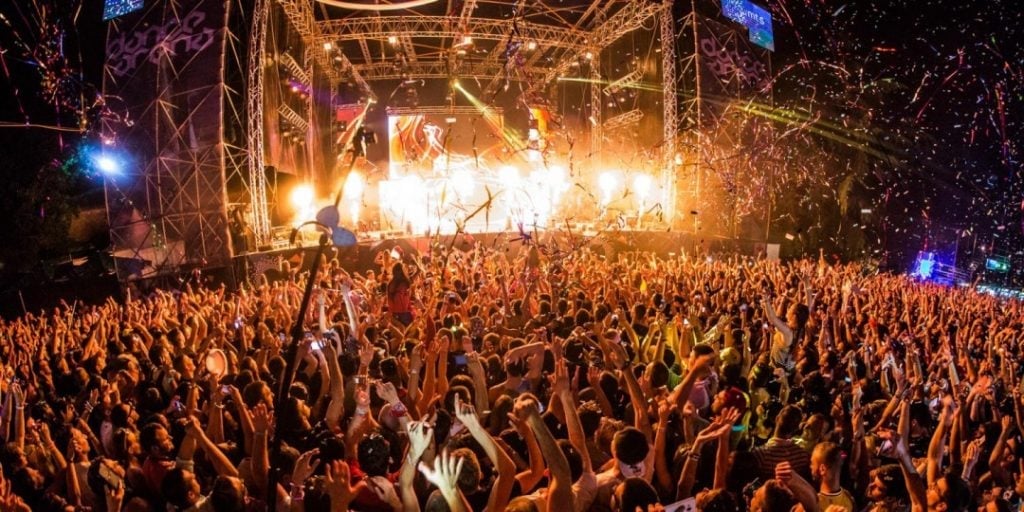
Over the past two decades, it hosted the biggest names in the dance music industry including David Guetta and Prodigy. One of the biggest attractions of EXIT is the venue itself – 18th-century fortress of Petrovaradin, the second in size in Europe.
Goulash Disko Music Festival -Komiža, Vis, Croatia
Throughout the summer months, the isles of Croatia are alive with the sound of (mostly bad) music so I gues I had to include one.
This is by the top pick offering the most unique combinations of global underground music, the Goulash Disko Music Festival combines a mixture of traditional music and electronic beats. This is an ad-free, crowdfunded festival which retains its welcoming, and authentic vibe. It is the perfect antidote to the other shit going on here.
Traditional Romanian Festivals
Romania is in many ways frozen in time and still holds fast to it’s folk traditions. As such there are loads of traditional semi-pagan festivals happening around the country across the year. There is an autumn festival celebrating the grape harvest and one celebrating the return of the sheep in the mountains. My favorite is spring’s fertility festival – I am sure you can imagine the connotations this one has.
Expect townsfolk sporting traditional dress, folk dancing and plenty of wine and polenka.
Ohrid Summer Festival – Ohrid, Macedonia
This is one of the biggest, bestest and most important festivals held in Macedonia. It happens each year between July 12 – August 20 and utilises the towns outdoor (roman) theatre as well as the striking Church of Sofira to stage musical events and plays (in Macedonian Slavic).
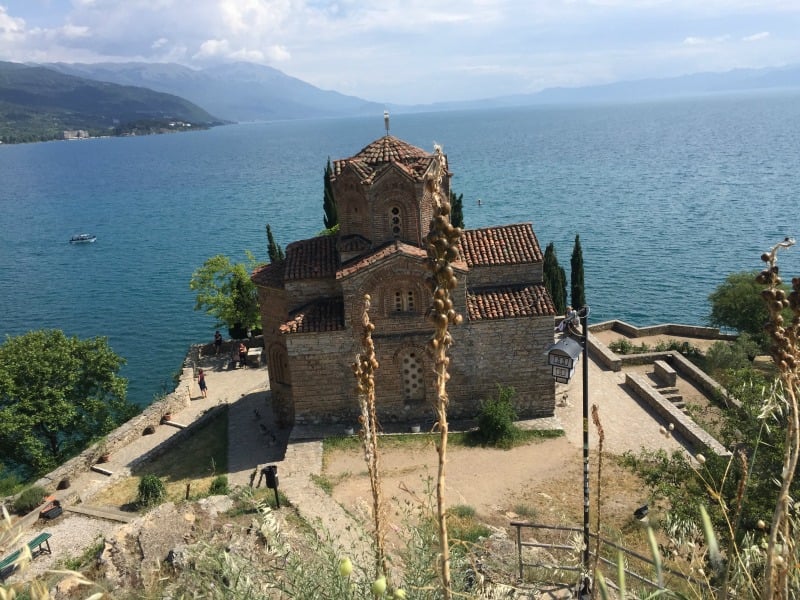
The festival attracts about 20,000 visitors so be sure to book accommodation well in advance.
What to Pack for The Balkans
What you pack for the Balkans will really depend on the season in which you are visiting; summers are hot and winters bitter. Dress standards are very similar to those in Western Europe so wear jeans, shorts or whatever – just do note that some areas (particularly Albania & Kosovo) observe Islamic values of modesty.

Snoring dorm-mates can ruin your nights rest and seriously damage the hostel experience. This is why I always travel with a pack of decent ear plugs.

Hanging Laundry Bag
Trust us, this is an absolute game changer. Super compact, a hanging mesh laundry bag stops your dirty clothes from stinking, you don’t know how much you need one of these… so just get it, thank us later.

Sea To Summit Micro Towel
Hostel towels are scummy and take forever to dry. Microfibre towels dry quickly, are compact, lightweight, and can be used as a blanket or yoga mat if need be.

Monopoly Deal
Forget about Poker! Monopoly Deal is the single best travel card game that we have ever played. Works with 2-5 players and guarantees happy days.

Grayl Geopress Water Bottle
Always travel with a water bottle! They save you money and reduce your plastic footprint on our planet. The Grayl Geopress acts as a purifier AND temperature regulator. Boom!
Despite a very fraught past and a somewhat lawless air, the Balkans are not an especially dangerous region to visit. In fact, there safety is typical of Europe . Crime levels are on a par with Western Europe and right now the region is politically stable.
There is a chance of petty crime and as a tourist, you may be a target to thieves. Note that Bosnia does have some very run down areas where thieves can operate and take great care in and around the bus station in Sarajevo. On the subject of Bosnia, remember that it is one of the most mined (as in landmines) countries on earth. Take care when out walking in the countryside, stay to marked trails and always pay attention to land mine signs.
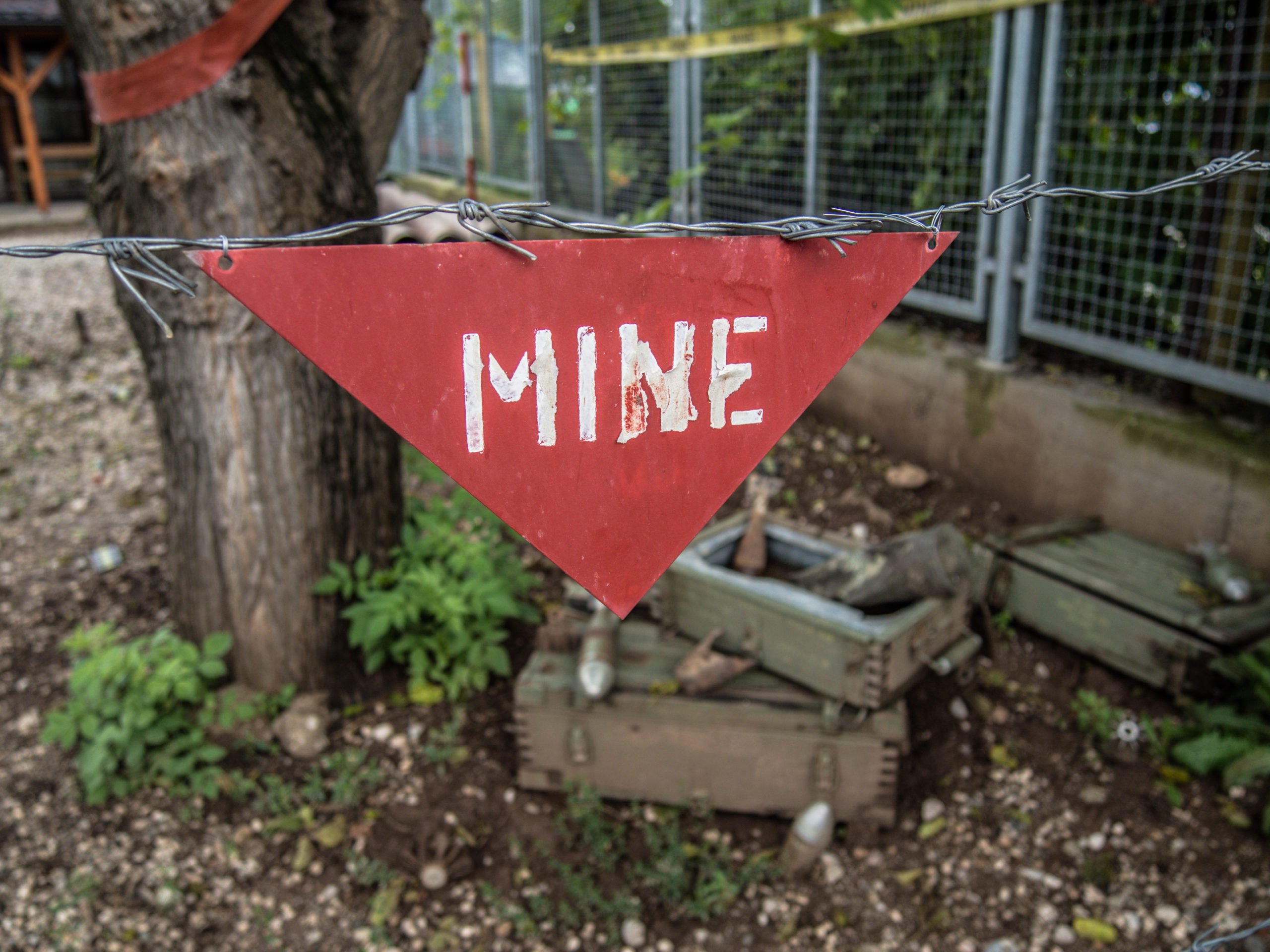
Also be aware that Roma children are sometimes sent out to work as pick-pockets particularly in nightlife areas of Romania where revelles tend to be a bit drunk.
Driving standards can be a bit haphazard compared to Western Europe and so far, the Balkans remains the only place I have visited where I saw a bus driver doing shots of schnapps before work…
Other dangers in the Balkans are the ones you can do to yourself. Which brings us nicely to the next section.
Sex, Drugs, and Rock ‘n’ Roll in The Balkans
Balkanites do love to party and by god do they love a drink. As soon as I disembarked the ferry in Montenegro (at 8.00am) the dock-side cafe was awash with sailors sipping beer, and Bosnia is the only place I have been where I saw a bus station attendant drinking beer inside the sales booth (it was a Saturday).
Locally made lager is cheap and abundant and most families have a recipe for polenca or rajika (vicious schnapps made from fruit) .
There is a lively bar scene in most parts of the region (and you can smoke inside!) as well as a truly buoyant rave culture. Croatia is rivaling Ibiza as the capital of steroid fuelled island bop-up’s, Romania has the most Trance music festivals out of any other country in Europe and Serbia is a true underground mecca for raves – in fact KPTM in Belgrade even has a “daily rave”!
This brings us to the subject of drugs. Weed is fairly easy to find but not as ubiquitous as in other parts of Europe and the quality not quite as high. Party stimulants are also widely available but do note a strong trend for amphetamine sulphate (speed) in lieu of cocaine or ecstasy. I have been warned about the quality of amphetamine based drugs in the region but do not have any personal experience. Psychedelic substances are also reportedly hard to find unless you attend the right festivals – however, the abundance of mandala artworks I saw tells me they must be doing the rounds.
Also note that the Police shamelessly profile and harass anybody who looks like they “might” be carrying drugs – if you have dreadlocks then be ready to empty your bag at border crossings.
Finally, let’s discuss the matter of sex (trigger warning – outragouse stereoptyoing coming up) . The people of the Balkan’s are generally quite striking. Women tend to be tall, slim and exquisitely beautiful. I previously held Romanian women as being the sexiest in Europe until I reached Serbia where it seemed that every other women I saw was a supermodel. In fact, their beauty was rivalled only by their sheer hostility – if you are looking for an “easy win”, look elsewhere.
The men are built like towers and tend to look like they have just been involved in a fight. But they’re actually quite friendly.
Travel Insurance for The Balkans
ALWAYS sort out your backpacker insurance before your trip. There’s plenty to choose from in that department, but a good place to start is Safety Wing .
They offer month-to-month payments, no lock-in contracts, and require absolutely no itineraries: that’s the exact kind of insurance long-term travellers and digital nomads need.

SafetyWing is cheap, easy, and admin-free: just sign up lickety-split so you can get back to it!
Click the button below to learn more about SafetyWing’s setup or read our insider review for the full tasty scoop.
There are multiple points of entry into the Balkans depending on whether you intend to arrive by land or sea. Frankly there are way too many to list them all. However, one popular entry point is by ferry from Italy to Croatia, Montenegro or even Albania.
If you are coming by air, then Croatia’s airports handle a lot of (budget) flights from Europe as do Bucharest & Cluj-Napoca în România and Sofia în Bulgaria. At one point, Ryanair were also doing £20 flights from London to Skopje in Macedonia although they may not emerge from the post Covid wreckage.
Note that you will need to pay attention to the visa requirements of your chosen port of entry as they do vary a bit from country to country.
Entry Requirements for The Balkans
Slovenia, Croatia, Romania and Bulgaria are all EU members. This means that EU passport holders are welcome to come and go as they please. Everybody else though, will need to qualify for and obtain a Schengen Visa. You may also notice that the border crossings into EU nations tend to take longer than in other Balkan states.

Other Balkan nations set their own rules on immigration although they do often tend to resemble EU requirements almost uncannily.
If you own an EU passport, you can get a Visa stamp on arrival for free in every Balkan country and in most cases can stay for 3 months. There are however 2 things to note regarding Serbia. (1) You need to register with the police when you arrive. Your accommodation host will most probably take care of this and will need to borrow your passport whilst they do it. (2) If you enter Kosovo after Serbia, you may well not be allowed back into Serbia until you change your passport.
Citizens of the US, Canada, Australia and NZ also have very little to worry about.

Get 15% OFF when you book through our link — and support the site you love so dearly 😉
Booking.com is quickly becoming our go-to for accommodation. From cheap hostels to stylish homestays and nice hotels, they’ve got it all!
The Balkans are pretty well connected by road and public transport. Most border crossings are also fairly quick. The bus network is the best way to go as it is affordable and busses run regularly. If you are going long distance or visiting at high season, it is wise to buy your bus ticket in advance – otherwise you can usually get away with turning up at the station 15 minutes before departure.
There is a train network in the Balkans but I found it pretty slow and less comprehensive than the bus network. International flights are also an option if you are covering a big distance (say Bulgari to Croatia) and can be very cheap if you only travel with carry-on luggage.
Traveling by Bus in The Balkans
There are multiple different bus companies operating in the region. Some are private and some are public and some only cover very specific routes. For example, “Nis Bus” in Serbia operates only a handful of routes to and from Nis.

Nevertheless, the system is not complicated. Simply go to the bus station and ask at the desk. The attendant will probably not speak much English but state your destination. In some cases it is worth booking your ticket ahead of time (long distance, overnight, or in high season) but usually this is not necessary.
Onwards Travel from The Balkans
Backpacking the other Eastern Europe is always a great idea. Where you choose to go from the Balkans will depend on where your trip ends. If you finish in Croatia, Montenegro or Albania then you can catch a ferry to Italy. If you finish in Slovenia there is a land border with Austria and from the black sea you can catch ferries to Turkey, start backpacking Ukraine or (Visa permitting) try to get into Russia.
And then of course, every capital city in the region has modern, busy airports handling international flights around Europe and the world.
The Balkans are not exactly economic megaliths and tend not to attract many migrant workers. In fact, the traffic tends to run the luther way with vast swathes of Romanian, Bulgarians and Slovenes seeking better employment prospects in Western Europe.
If you are coming to work in the Balktans from “the west” then expect a stark pay-cut. That said, living costs are also lower and the quality of life has a lot of appeal.
If you are able to work online or remotely and get paid in USD, then you can live very nicely out in the Balkans. Skopje in Macedonia, Varna în Bulgaria and Cluj-Napoca in România all have a little digital nomad scene going on.

A new country, a new contract, a new piece of plastic – booooring. Instead, buy an eSIM!
An eSIM works just like an app: you buy it, you download it, and BOOM! You’re connected the minute you land. It’s that easy.
Is your phone eSIM ready? Read about how e-Sims work or click below to see one of the top eSIM providers on the market and ditch the plastic .
Work Visas in The Balkans
If you are an EU citizen, then you have the right to live and work in any other EU member state (Slovenia, Croatia, Romania, Bulgaria).
Otherwise you will need to obtain a work visa. Anecdotally, I heard that the bureaucracy around this can be difficult and an Englishman I met was finding it very hard to get a Macedonoian work and residency permit.
Of course, visa requirements from country to country but typically, you will need to have a job offer lined up before you can apply and in some cases will need to demonstrate you are fulfilling a role that cannot otherwise be filled by a native.
Teaching English in The Balkans
One evergreen option for ex-pat’s seeking work is English teaching. All of the Balkan states value English proficiency and welcome good, native speakers. Note that in most Balkan countries, you will also need a Bachelor’s Degree and a TEFL in order to find work in a school or university.
As I said above, pay standards are lower than in Western Europe but lower living costs should even this out.
Despite the size and cultural differences within the region, there is a definite culinary style occurring throughout the region and I think it fair to say there is such a thing as “Balkan cuisine”. Of course, each region has its own variations and native dishes but there are some recurring trends.
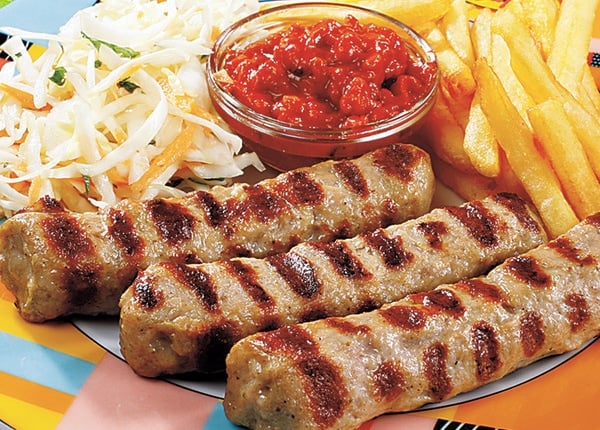
Firstly, the food is generally very carnivorous and as a vegetarian I struggled at times. The food also tends to be quite rich and is rarely spicy. There is also a massive Turkish influence on food in the region.
Borek – Pastry stuffed with either meat, cheese or spinach. Sold in bakeries across the region (though it varies) and typically eaten for breakfast.
Kefir – Also best enjoyed at breakfast. This is a fermented dairy based drink sometimes flavored with mint or fruit. Perhaps an acquired taste.
Saganaki – Greek inspired dish served as starter. Basically cheese cooked in a frying pan.
Tavce Gravce – Macedonian baked beans served with thick toasted bread. Filling and suitable for vegans!
Varci – Pork rind with the fat melted of. Flavoured with garlic and salt.
Evapi – Ottoman inspired balkan take on the kebab. Flatbread packed with sausage eat and doused in feta, cream or mustard.
Of course, 9 different countries, as many languages and a set of different ethnic group means that Balkan culture is pretty diverse. Still, there are some common traits running throughout the region.
As a European, Balkan culture feels quite familiar and yet there is still something strange about it and the disparate Ottoman and then Soviet influences have certainly left their mark. The cities can feel like western europe with citizens dressed in jeans and eating from McDonalds but head into the country and you will still find country folk working the fields in more traditional dress. The Roma and Albanian’s throughout the regions have retained their own unique way of life.
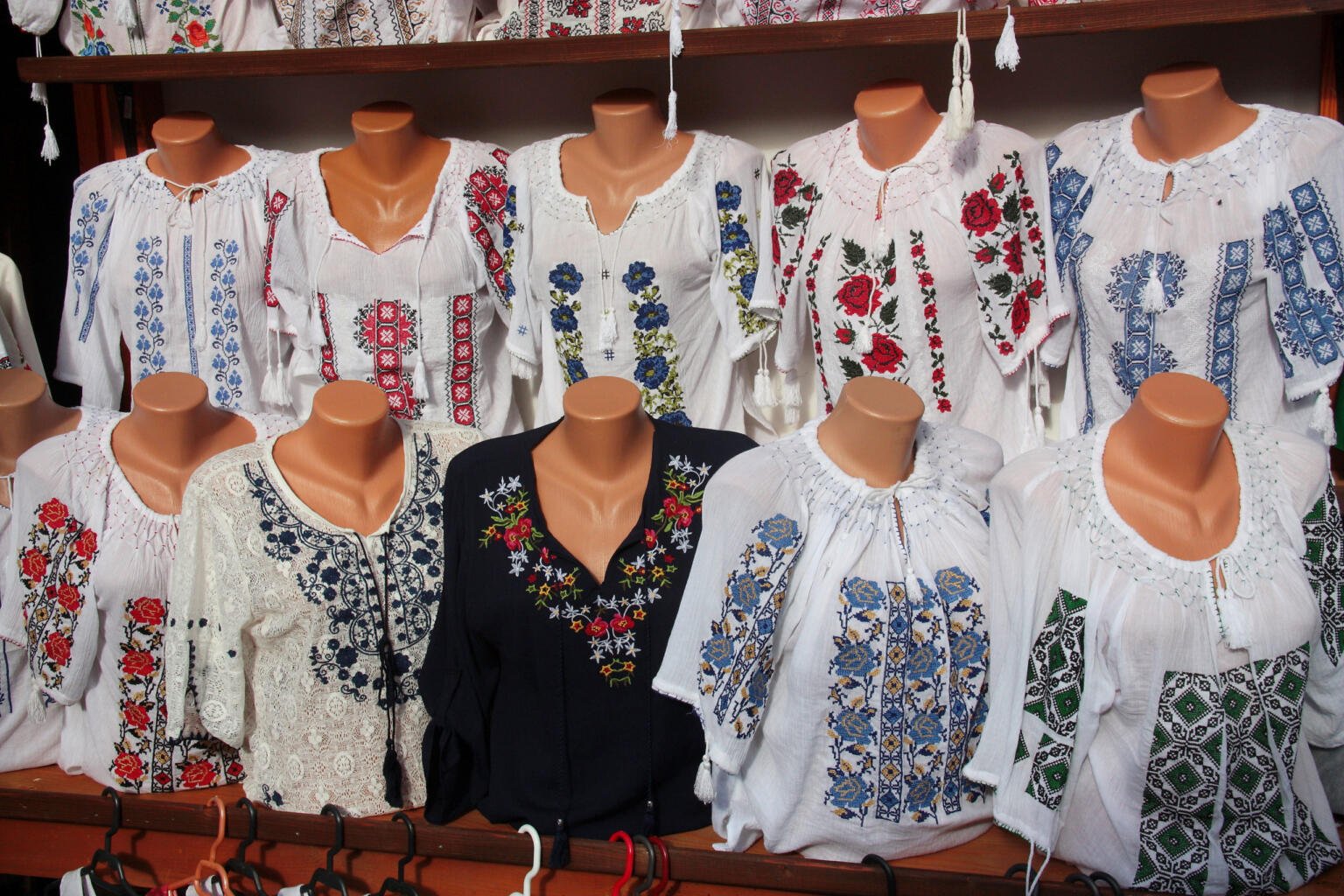
Also, Balkan people can seem more reserved than their western European counterparts and smiling at strangers is less common. Please do not construe this as unfriendliness though, I frequently found myself being invited to random parties by people I just met!
Gender roles are noticeably more “traditional” than in the West particularly in the non-EU states. In particular, in Serbia I was surprised to learn that the gender pay-gap is accepted as being perfectly natural and that reducing it would hurt men’s pride!
Language in the Balkans
There are several different languages spoken in the Balkans all of which are a mix of Romance, Slavic and Tukic influences. The former Yugoslav countries each have their own national language but all speak variants of “Slavic” and can generally understand one another perfectly well. Bulgarian is also a variant of this.
Romanian language is often likened to “bad Italian” and in Albania and Kosovo they speak Albanian. If you are the kind of traveler who likes to learn some of the local language everywhere you go, good luck with this one.
Fortunately, English is kind of widely spoken amongst the younger generations but not so much by anybody over 40 (they may speak some Russian instead). Get used to gesturing and pointing a lot when dealing with bus and taxi drivers and in supermarkets.
The table below sets out some common Russian travel phrases which you can try should English not work.
- Hello! – Zdravstvuyte!
- How are you? – Kak dela?
- Please. – Pozhaluysta.
- Thank you.. – Spasibo.
- I’m sorry. – Proshu proshcheniya.
- Excuse me. – Izvinite.
- No Straw Please – bez solomy, pozhaluysta
- Could you help me, please? –– Vy ne mogli by mne pomoch?
- Where is the toilet? – Gde tualet?
- Where is the bus station, please? – Skazhyte pozhaluysta, gde avtobusnaya ostanovka?
- Two Beers Please – 2 piva, pozhaluysta
- No Plastic Bag – Pozhaluysta, bez polietilenovogo paketa
Books to Read About The Balkans
- Cafe Europa: Life After Communism : In this brilliant work of political reportage, filtered through her own experience, we see that Europe remains a divided continent. In the place of the fallen Berlin Wall, there is a chasm between East and West, consisting of the different way people continue to live and understand the world.
- The Establishment of the Balkan National States, 1804-1920 (A History of East Central Europe) – An excellent overview of the last 200+ years of the region. Covering the transition from peasantry to nationhood, communism and the bloody ballan wars of the 1990’s.
- Dracula – Bram Stoker – Utterly fictitious but nevertheless gripping, victorian vampire novel, Essential reading to get you in the mood to visit Romania.
- The Balkans by Lonely Planet : Lonely Planet always has something helpful to contribute to any adventure.
A Brief History of The Balkans
Most of the countries in the Balkans are relatively young and few have existed for longer than 100 years. Following the collapse of the Roman Empire, the region became a hopscotch of kingdoms, princedoms and tribal regions who were regularly at war with one another, with the Ottomans and occasionally with invaders from Western Europe. As such territories, boundaries and cultural mores regularly changed hands during the first 2 millenia of Christendom.
In many ways, the modern Balkan story begins in the 19th century following the creation of Yugoslavia after WWI and the (flawed) geographical categorisation of the region which took place.
After World War II, all of the Balkan states fell into the Russian sphere of influence and adopted communist dictatorships which lasted until the fall of the USSR in 1989.
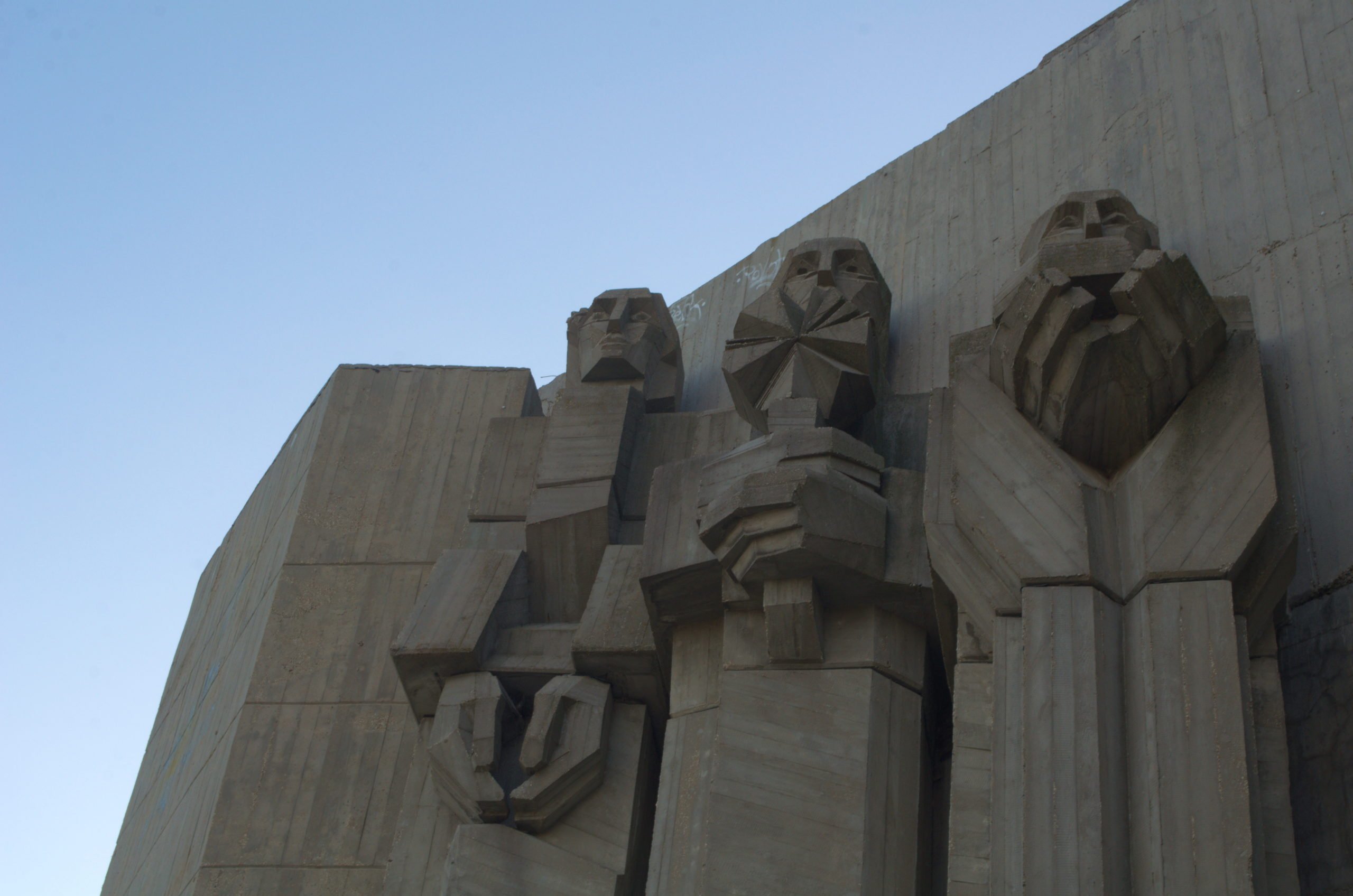
It is important to point out that none of the Balkan states were ever a part of the USSR but were all to some degree members of the “Soviet Union”. Still, differences between the states varied and for example, Yugoslavia was widely regarded as being the least repressive and most successful example of communist rule in Europe. Even to this day, you will find plenty of “Yugo-Nostalgia” in the region.
Whilst some states transitioned from communist rule relatively painlessly, others experienced severe birthing pangs. In Romania, the brutal Dictator Nicolai Cesarcu was violently overthrown and executed by the people, and shortly after the collapse of communism, Yugoslavia disintegrated into terrible ethno-tribal wars that primarily affected Bosnia, Serbia and Kosovo.
The Balkan Wars
Now we come to the modern, tragic history of the region. Following the collapse of communism, Yugoslavia disintegrated with a number of states declaring themselves independent from the Republic. Slovenia was the first to break away and managed to do so relatively painlessly owing in part to its proximity to Western Europe.
Ethnic tensions at the heart of the republic (which had been quiet under Yugoslav, comminist rule) began to surface between Bosniak, Kovovan Albanian’s and ethnic Serb’s. This spilled over into all out war in 1992 when Serbian forces laid siege to the Bosnian capital of Sarajevo and committed a number of atrocities in the region. It was this conflict which gave the world the term “ethnic cleansing”.
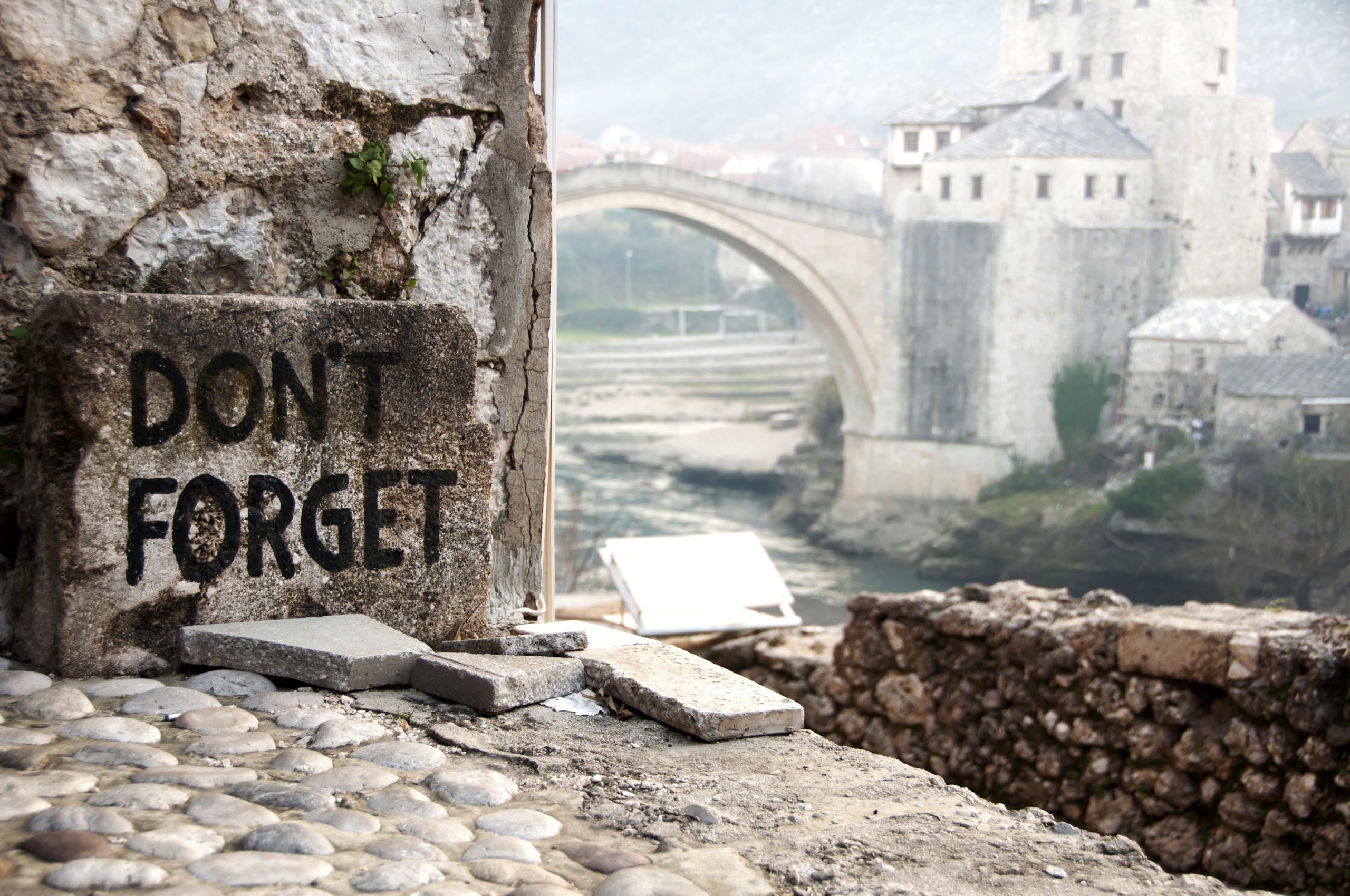
The siege of Sarajevo ended in 1995 when Serbia was forced into an uneasy truce by the US. The truce broke in 1999 when Serbia began persecuting Kosovan-Albanian’s leading to Nato invasion and the arrest of Serb leader Slobodan Milosovic.
Whilst the region has enjoyed peace and stability ever since, the legacy of the Balkan wars lives on. In Serbia there is widespread distrust of NATO, the US and the EU, and in order to placate ethnic-diversity Bosnia-Herzegovina has adopted a farcical system of government which is further forcing the country into a deep economic abyss.
So what makes the Balkan unique? If you are after some special, memorable experiences from your Balkan backpacking trip then I suggest the following;

Things go wrong on the road ALL THE TIME. Be prepared for what life throws at you.
Buy an AMK Travel Medical Kit before you head out on your next adventure – don’t be daft!
1. Spot the communist monuments in Bulgaria
The communist regimes in eastern Europe loved big pointless monuments almost as much as the capitalist regimes in eastern Europe today love pointless monuments (see 2). In Bulgaria, this is on steriod and the landscape and cities are peppered with some truly garish, enormous and frankly eerie examples of concrete statemaking that needs to be seen.
2. Count The Statues in Skopje
In 2014, in a bid to modernise the country ahead of a bid for EU membership, the Macedonian Government undertook a huge project to renovate he city. The upshot, is that they spent pretty much everything they had on Statues.
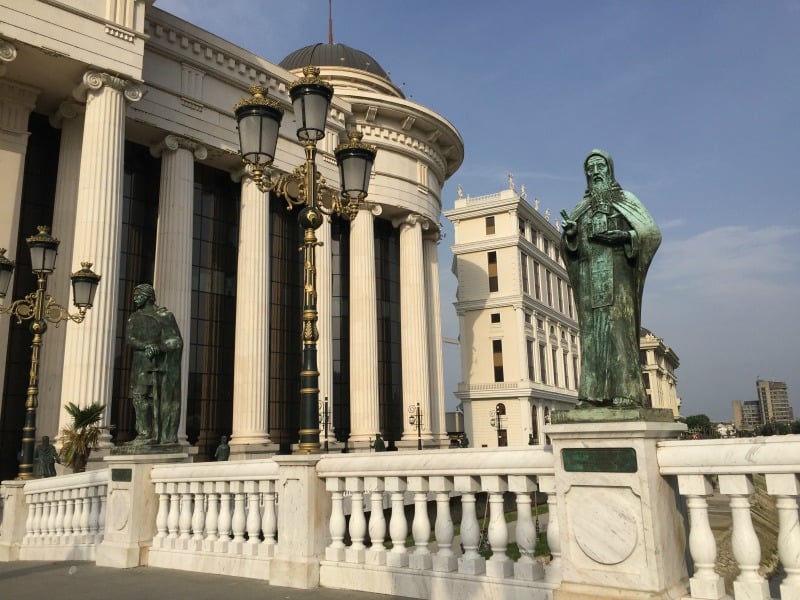
The Skopje Statues have been often been labelled the most pointless tourist attraction in history and is also often joked that there are more statues in Skopje than there are people. So who are these statues actually of? Well anybody ever anybody and everybody who was nobody in Macedonian history/ My personal favorite is the hermit
So there we have it.
Writing this guide was true labour of love and I am very happy to share my insights (and unwanted opinions) with you all. Whether you are intending to sun seek in Croatia, walk the war in Sarajevo, or climb the Carpathian mountains, you are pretty much guaranteed an awesome time out in the Balkans.
Have you visited any of the Balkan countries before? If you think I missed anything or want to share your own travel stories, head down to the comment section below!
- Hostels in Mostar
- Hidden gems in Europe
- Where to stay in Bansko
- How to travel Europe cheaply

And for transparency’s sake, please know that some of the links in our content are affiliate links . That means that if you book your accommodation, buy your gear, or sort your insurance through our link, we earn a small commission (at no extra cost to you). That said, we only link to the gear we trust and never recommend services we don’t believe are up to scratch. Again, thank you!
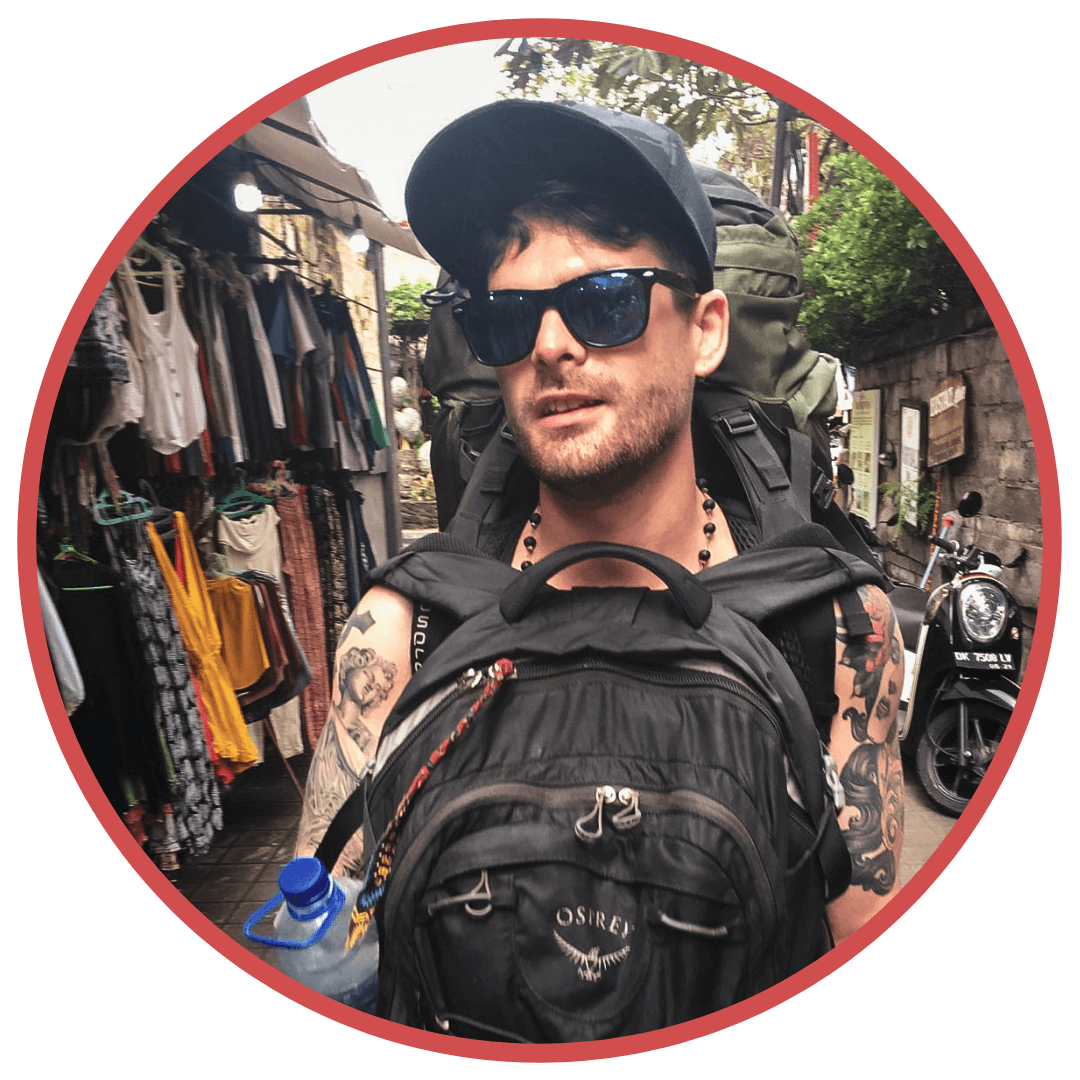
Aiden Freeborn
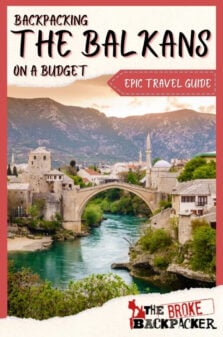
Share or save this post

Your article is informative. I learn many things by reading your article.
Did Will and his twin tandem jump Mostar Bridge?
This is so useful!!! Last summer, we did approximately your first itinerary but we had to stop before Albania as we were in the middle of the pandemic and the borders were shut. So we took the ferry to bring us to Greece from Dubrovnik via Italy. But we plan on trying again this year! In the meantime, we met some lovely fellow travel bloggers from Romania and we absolutely want to meet them in person so your itinerary 3 looks SO appealing!! Absolutely going to save this and I’ll make sure to let you know how it went.
I’m very glad you found the post useful. I also hope to get back to the Balkans as soon as I can.
Leave a Reply Cancel reply
Your email address will not be published. Required fields are marked *
Save my name, email, and website in this browser for the next time I comment.
Notify me of followup comments via e-mail.
Trek Balkan
- Book a Trip
- Border Permits
- The Highest Peaks
- 049-601-007
- Booking Conditions
- Privacy Policy

PEAKS OF THE BALKANS SELF GUIDED TOUR
Experience the best of Kosovo, Montenegro & Albania with the Peaks of the Balkans self guided tour. This 192-km trail explores remote, wild mountainous regions, reaching up to 2300 m. Despite historical barriers, the trek is now popular worldwide, offering a must-do adventure for hikers.
Peaks of the Balkans trail is a 192-km cross-border trekking trail through the Accursed Mountains of Albania , Kosovo, and Montenegro. Considering the region’s turbulent history and once tightly controlled borders, especially during the communist period, it was impossible to move across these places. No longer. Nowadays, the trek has become very popular and people around the world are coming to visit this very remote area.
Considered a must-do for any avid hiker, the trail’s difficulty levels range from easy to moderate+, demanding a good level of physical fitness and the appropriate mountain equipment.

The Peaks of the Balkans self guided tour is a trekking route spanning Kosovo, Montenegro, and Albania, covering around 200 km. The itinerary begins in Albania, but you have the flexibility to choose your starting and ending points when booking.
PEAKS OF THE BALKANS SELF GUIDED TRAIL
DAY 1 Meet your fellow travelers in Shkoder and drive to Thethi National Park.
Meet and greet with the driver in Shkoder, followed by a scenic drive towards Theth, passing through the beautiful Valley of Boga, the gate to the Albanian Alps.
Enjoy a free afternoon to explore Thethi National Park, and note that your Peaks of the Balkans self guided trail both starts and ends in Theth. Dinner is included.
Accommodation: Guesthouse Meals : Lunch, Dinner Drive: 2hrs 10min.
DAY 2 Hike from Theth to Valbona via Spectacular Valbona Pass
Today our trail heads towards spectacular Valbona Pass. It's not a particularly hard walk and is one that is attempted by many first-time mountain walkers. For the next couple of hours, the trail climbs slightly more steeply towards higher ground and we walk over a pass known as Valbona Pass. After several hours hiking uphill, you can stop at the Zefi’s housing for a hot mountain tea.
Resuming our hike for another 45-min, we continue ascending to the Valbona col (1792m) where we have outstanding views of the Albanian Alps and the Valley of Valbona.
After lunch, you make you way down to the valley. Of course, you can choose whether to independently continue our walking down on the main wide dried up riverbed road or take a bus to avoid it. All meals included.
Trek : 16.3Km; Uphill: 1040m, Downhill: 945m; Maximum altitude: 1759m; Time: 6-7hrs Difficulty: Moderate/Challenging Accommodation: Guesthouse Meals : Breakfast, Lunch, Dinner
DAY 3 Hike up the epic and remote “Prejsllopi Pass” trail. Overnight in Cerem
After a hearty breakfast and a cup of hot mountain tea with honey, you will start ascending the steep zig-zag trail to the epic and remote Prejsllopi Pass. Having several hours of hiking, you'll reach the highest point of your today’s trek (2000m) as you hike a series of switchbacks over a pass that offers outstanding views of the snowcapped peaks of the Alps Range in every direction.
After crossing the border and thrusting into Montenegro, we will stop for lunch at Bori Pass, a flat spot with grass, a meadow for many shepherds from Cerem and Vuthaj.
Note: On this trail, optional is climbing Zla Kolata (2534m) peak; the highest peak in Montenegro.
Trek : 13.5Km; Uphill: 1150m, Downhill: 870m; Maximum altitude: 2150m; Time: 7-8hr Difficulty: Moderate/Challenging Accommodation: Guesthouse Meals : Breakfast, Lunch, Dinner
DAY 4 Trek from Cerem to Doberdol, a vast alpine pasture
Today’s hike is a relatively long hike with lots of ups, downs and mostly is into the forest. This day involves a transfer hike from Çerem to Doberdol, a remote shepherd’s village accessible only by mule tracks and populated only during the summer time by shepherds. From Çerem, the hike climbs up to the Montenegrin border, passes the beautiful summer shepherd’s village of Balqin, and continues through the Gashi valley (protected area) to the shepherd’s village of Dobërdol.
Trek : 15.6Km; Uphill: 1025m, Downhill: 440m; Maximum altitude: 1922m; Time: 6-7hr Difficulty: Moderate Accommodation: Guesthouse Meals : Breakfast, Lunch, Dinner
DAY 5 Hike Doberdol to Milishefc via Three Border Point
This is a long trail which involves a hike from the remote shepherd’s village of Dobёrdol to another less remote shepherd’s village in Kosovo (Milishevc).
After an early breakfast, today's hike begins through bilberry covered meadows of Dobërdol in the direction of the mountain ridge, which forms the border between the three countries. The highlight of this trail is the magical Triple peak 2266m, with a view of the Albanian Alps behind where we walked days before. After a photo brake you walk slowly through a beautiful alpine meadow to Milishefc. All meals included.
Trek : 18.2Km; Uphill: 990m, Downhill: 1015m; Maximum altitude: 2236m; Time: 7-8hrs Difficulty: Moderate Accommodation: Guesthouse Meals : Breakfast, Lunch, Dinner
DAY 6 Trek from Milishefc to Rugova Camp – transfer to Reka Allages
The interesting transfer hike to Reka e Allagёs begins with an ascent to the Lumbardhi ridge, a vantage point which offers breathtaking views towards the surrounding mountains and Milishevc. It then continues with a steep descent to Rugova Camp/Restorant Gryka Hotel before continuing up along gravel roads to Reka e Allagёs.
At the Camp, there is a good restaurant, Restorant Gryka, – very good local fish – you can relax before a short transfer to Reka Allages.
Trek : 11.8Km; Uphill: 607m, Downhill: 1430m; Maximum altitude: 2136m; Time: 5-6hrs Difficulty: Moderate/ Accommodation: Guesthouse Meals : Breakfast, Lunch, Dinner Drive: 15min
DAY 7 A great trek leads us to the summit of Hajla peak 2403m
The hike starts with an ascent northwest through the meadow behind Mustafa’s guesthouse. After walking a few hundred meters, we reach a meadow with beautiful views towards Reka e Allagёs and the surrounding mountains. From here, we have great views of the mountains, as well as the top of Guri Kuq which marks the highest peak in the Rugova mountains.
After about three hours of gradual ascent, we reach Era's hut where we have a break before reaching the top. Well rested, we begin a challenging but relatively short hike to the summit 2403m. On reaching the top of the Hajla 2403m, we stay high and contour around to the other side, enjoying spectacular views as we go.
After relaxing on the top, we enjoy a good descent to the beautiful village of Drelaj.
Trek : 15.8Km; Uphill: 1020m, Downhill: 13320m; Maximum altitude: 2403m; Time: 7-8hrs Difficulty: Moderate Accommodation: Guesthouse Meals : Breakfast, Lunch, Dinner
DAY 8 Trek from Kuqishte to Babino Polje through two glacial lakes
Today’s trek starts with an early breakfast before we head off on our first full day of trekking. A short transfer from the guesthouse to the starting point. This is a relatively long hike which passes the border between Kosovo and Montenegro. It goes through beautiful mountain areas with many water sources, glacial lakes, and mountain passes featuring breathtaking views. After passing the lakes we go gradually up to Lugu i Shkodrёs for a very beautiful landscape.
Trek : 15.8Km; Uphill: 1140m, Downhill: 1050m; Maximum altitude: 2276m; Time: 7-8hrs Difficulty: Moderate Accommodation: Guesthouse Meals : Breakfast, Lunch, Dinner Drive: 20min
DAY 9 Babino Polie – Plav. Explore the old town of Plav
This is a long transfer hike from Babino Polje to Plav. The hike ascends up from beautiful Lake Hrid and finishes at the city of Plav. After breakfast, you set out on beautiful lake Hrid Jezero for a cool swim in the middle of a forest
The mostly off-trail route passes through typical patches of forest with panoramic views of the Prokletije including the Albanian Alps off in the distance.
Trek : 20.4Km; Uphill: 607m, Downhill: 1190m; Maximum altitude: 2048m; Time: 7-8hr Difficulty: Moderate Accommodation: Guesthouse Meals : Breakfast, Lunch, Dinner
DAY 10 Hike to Vusanje via Bori Peak for the epic Accursed Mountain views
After another healthy breakfast to start your day, we trek to Vusanje for the last night in Montenegro. You hike through dense beech forest encountering flowering plants before reaching the open meadows of Bori ridge. The final approach to the high pass begins here with a steep ramp leading to the peak of Bori 2106m. At the top, the views of the surrounding peaks of the Accursed Mountains are spectacular. The trail then descends steeply and passes through a meadow then forest to Vusanje. All meals included.
Trek : 17.6Km; Uphill: 744m, Downhill: 1174m; Maximum altitude: 2098m; Time: 6-7hrs Difficulty: Moderate Accommodation: Guesthouse Meals : Breakfast, Lunch, Dinner Drive: 25min
DAY 11 Walk overlooking the spectacular of Karanfili's massif
This trail is not officially in Peaks of the Balkans but it considers as the most beautiful views of the Albanian Alps/Prokletije. It is a daily hike which involves a transfer to the trailhead and back to the guesthouse.
Trek : 9.9Km; Uphill: 744m, Downhill: 960m; Maximum altitude: 2056m; Time: 6-7hr Difficulty: Moderate Accommodation: Guesthouse Meals : Breakfast, Lunch, Dinner Drive: 35min both ways
DAY 12 Spectacular hike from Vusanje to Theth – Drive to Shkoder
Today’s hike into Prokletije National Park is certain to be a memorable one. This is a relatively long hike that crosses the border between Montenegro and Albania. A border military post, some bunkers, and the border crossing pyramid sign still remains by the crossing. The hike finishes in Theth, where it all started.
Transport from Theth to Shkoder is provided.
Note: We can also organize a local transport to avoid 4x4 drive – 5km walking – from Okol Village where you drive straight to Shkoder.
Trek : 21.2Km; Uphill: 1110m, Downhill: 1431m; Maximum altitude: 1734m; Time: 7-8hrs Difficulty: Moderate Meals : Breakfast, Packet Lunch Drive: 2hr 10min
Note: The Self guided Peaks of the Balkans trail can be adapted based on your requests: as many days as you want. The classic route can be booked for a single traveller, two people, or up to 12. We can also adapt the trail from 5 days to 14 days hiking.

Albanian - English words
Peaks of the balkans map.
Customized tour
We can adapt the trail based on your requests: as many days as you want to hike, transport, local 4x4 transport, luggage transport as well as transport from and to Tirana, Podgorica etc.
Opening hours Telephone CET Mon-Fri : 08-20:00 Sat-Sun : 14-17:00
Opening Hours Chat Mon-Fri : 08-23:00 Sat : 10-18:00 Sun : 13-21:00
Chat +383 49 601 007 Say hello
Support 24/7
Nonstop support by phone and local staff around the Peaks of the Balkans trail.
HOLIDAY INFORMATION
- Transport from Shkoder to Theth and back - Private accommodation during the trek - All food during the hike - All land transport required by the itinerary - Border permits - GPX files and nonstop support
- Hotels before or after the trek - Alcoholic beverages or soft drink - Tips for local staff - Luggage transport - Other transport not required by the itinerary
CONSIDER AS YOU BOOK UP
TRAVEL DOCUMENTS: Airline Tickets (Confirmation and Itinerary) & Passport
The unit of currency in Albania is the Lek (ALL). However, the Euro is accepted. The unit of currency in Kosovo and Montenegro is the Euro. Note: Buying Lek is possible only in Albania
ATM Availability (While Trekking)
- Bajram Curri (17Km away from Valbona)
LOCAL TIME: Time zone: GMT +1
ELECTRICITY: Electric supply and plugs: 220V, 50 Hz, two-pin round plugs.
- Western Balkans - Lonely Planet
- The Accursed Mountains - Robert Carver
- Kosovo: Gillian Gloyer - Bradt
- Albania: Gillian Gloyer - Bradt
- Broken April - Ismail Kadare
- High Albania - Edith Durham
Albania No visa is required for most nationalities, including UK passport holders, most other EU nationalities, US, Canadian, Australian, and New Zealand.
Montenegro Check out if you need a visa to enter Montenegro .
Kosovo No visa is required for most nationalities, including UK passport holders, most other EU nationalities, US, Canadian, Australian, and New Zealand.
Vaccinations
Kosovo - Albania - Montenegro
There are no specific health risks.

BACKPACKING ADVENTURE IN ACCURSED MOUNTAINS

From €1,150.00
HIGH SCARDUS TRAIL
Albania, Kosovo, N.Macedonia


GJERAVICA SUMMIT, 2656M

BACKCOUNTRY SKI TOURING IN KOSOVO & ALBANIA
Please contact us if there are any questions:

Backpacking the Balkans – the travel guide for your Balkan Tour
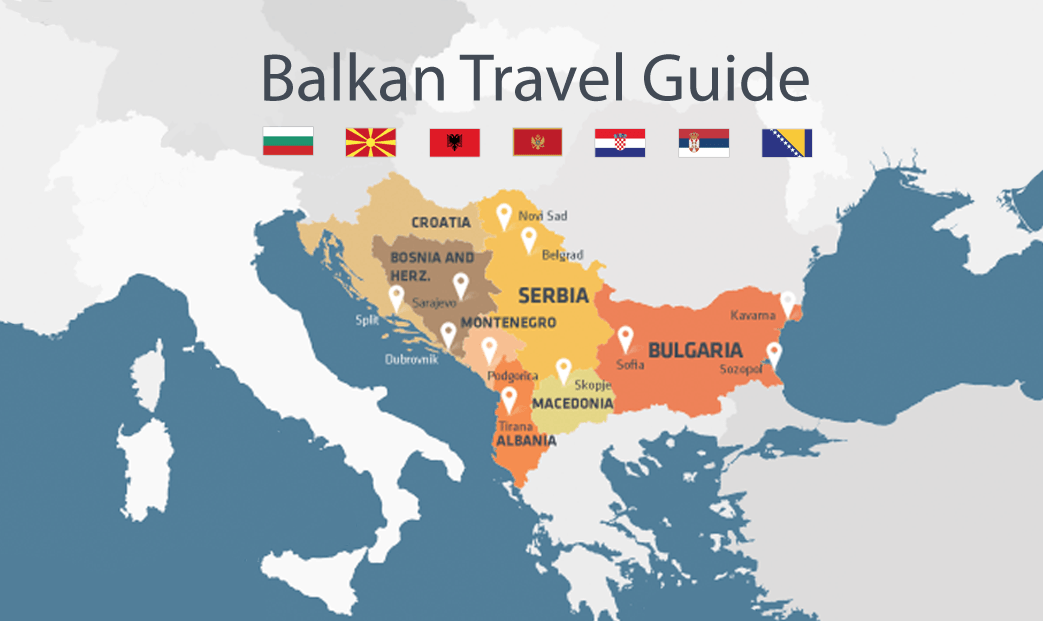
In this post I put together all information you need for Backpacking the Balkans based on my own experience of 6 months living and traveling this region in the South East of Europe.
I moved to Sofia in Bulgaria for 6 months and used it as my base to explore altogether 7 countries in the Balkans: Bulgaria, Macedonia, Albania, Montenegro, Croatia, Bosnia & Herzegovina and finally Serbia.
1) Why should you travel the Balkans?
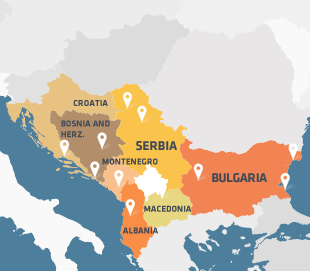
A lot has changed since those darker days and most of the countries are back on track, the reconstruction is in its final stages and the tourism is on the rise . Changes can also be seen in the countries which haven't been affected by the wars – Bulgaria became part of the EU, developed it's infrastructure and is seeing an economic growth, even though this growth decreased recently. Due to the fact that only a few regions in the Balkans are affected by mass tourism a Balkan Tour is very attractive as most of the beauty is still totally off the beaten European tourist paths : low prices, warm-hearted Locals, tasty food and loads of beautiful landscape is just waiting to be discovered by you. The best time to travel the Balkans is in most cases the spring and summer season – especially if you want to go for a swim at the coast. Nevertheless you can also spend your winter in one of the winter resorts like Bansko in Bulgaria. City Breaks are an option all year round: the capital cities are great spots in all countries mentioned (except Podgorica in Montenegro!).
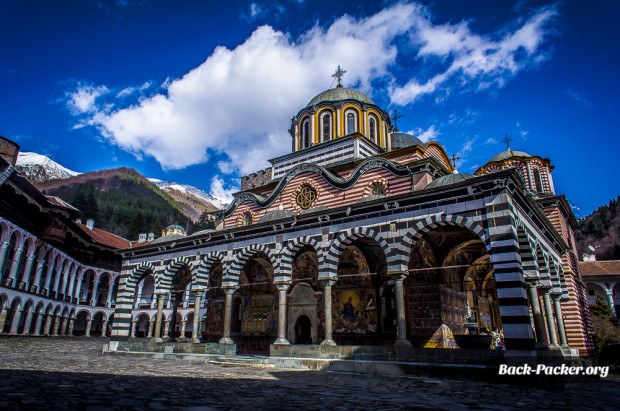
2) Language & Communication
Unfortunately the countries within the Balkans don't have a common language and it can sometimes be quite hard to get around with English. Moreover you should consider learning the Cyrillic alphabet for Serbia, Macedonia and Bulgaria. Like in many other European countries you are fine with English in Hotels/Hostels and with Tour operators – often also basic English is spoken by Locals , most likely in touristic hot spots. In general people in the Balkans are very welcoming , friendly and will help you getting around if you are running into problems. I often used gestures and hand signs to communicate and have been quite successful with it – in my case I could even use German to communicate. As the Locals are very hospitable they sometimes even invite you for drinks or dinner after you met them!
3) Budget & Prices
The Balkan region is very budget friendly compared to Western Europe, though there are huge differences between the countries and the popular tourist destinations (the places off the tourist paths are much cheaper).
To get an idea: one night in a dorm is around 8-10€ (Bulgaria/Macedonia/Bosnia/Serbia), 12-14€ (Montenegro), 16-20€ (Croatia); a proper meal in a restaurant will cost you 4-6€ (Bulgaria/Macedonia/Bosnia/Serbia), 8-10€ (Montenegro), 10-15€ (Croatia); a long-haul bus ticket is between 20€ – 30€. In hotels and restaurants at touristic hot spots the prices are usually higher. I withdrew money with my german DKB credit card which always worked out very well and without any costs. Given the fact that each country has its own currency you should also focus on using a credit card and only withdraw the amount of money you'll need for the day.
4) Local cuisine
Given the number of different cultures in such a small area you can expect to have a big selection of various food to try on your trip. One thing all countries have in common: they love meat and hearty food . Nevertheless you shouldn't miss the local food, also Vegetarians will find good options as the Balkans are also well known for their fresh salads. The most common dishes are: stews, salads, cevapcici, grilled meat (preferably pork) and Ottoman influenced cuisine such as börek, köfte and baklava. If it comes down to drinks the Rakia/Rakija (brandy) is a common drink but also the tasty wines (especially red!) are recommendable. Apart from this the local beers are good, too.
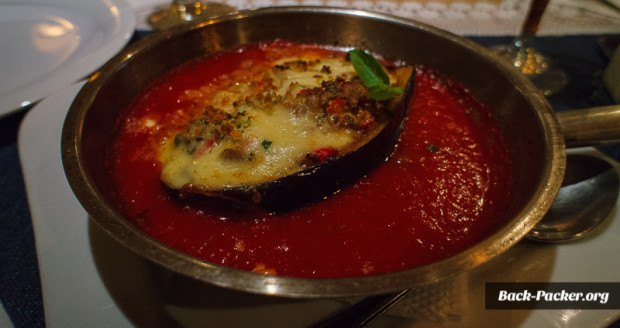
5) Safety & Visa
In general the Balkans aren't more dangerous than other European destination – be aware of pickpocketing and other petty crime.
During the 6 months down there I never had bad experiences – maybe also because I followed the general safety rules. Please follow the instructions given in the following article to travel more safely, too:
- 30 Tips and Ways to Stay Safe While Traveling
Regarding the entry requirements you usually don't need a Visa for the countries in the Balkans if you're planning to stay less than 90 days. Of course you'd need a valid passport and at least one free page left for stamps. Please always check the official Foreign travel advice for your country of residence in matters of safety and the entry requirements:
- Foreign Travel Advice (UK citizens)
- Country Information (U.S. citizens)
- Country Travel advice (Canadian residents)
6) Health & Insurance
In some areas of the Balkans the medical and dental facilities are very poor, there you shouldn't drink water from the tap (especially in countries like Albania). Make sure you have adequate travel health insurance and accessible funds to cover the cost of any medical treatment abroad, evacuation by air ambulance and repatriation. I highly recommend to get a good travel insurance as in almost every case your current health insurance won't work in most of the countries. The Balkans are a beautiful region with plenty to see and explore, but unexpected situations can arise. With SafetyWing , you'll have coverage for medical emergencies, trip interruptions, and even emergency medical transportation. Plus, their affordable and flexible plans make it easy to find the coverage that fits your needs and budget:
2 months before you leave you should consult your doctor to check your vaccines. The earlier you take care of this the better as some vaccinations need a few months to have the full protection. Find more information about recommended vaccines for the country you intend to visit:
- Country Information by CDC
7) Transportation & Luggage
The common mode of transportation for long distances is the bus. In cities taxis are another fairly cheap option. The travel times within the countries are sometimes quite long as the infrastructure isn't the best , you also need to plan some waiting time for the border crossings (especially during holiday season and on the weekends).
a) Public Transport: Bus
Bus tickets can be purchased at the terminals or in the offices of the bus companies – the following website helps you to research most of the connections within the Balkans (consider that only major connections are listed!):
- Balkanviator
b) Car Rental
The most flexible option would be to rent a car. For this you need to make sure that you choose a package where you are allowed to take your rental car across the border. Furthermore consider to do a round-trip as it is cheaper to drop-off the car at the same spot where you picked it up in the first place.
Makes sure to check the meta-search of RentalCars (best to choose the airport where you fly into as the pick-up location) for prices and availability of the different local providers:
c) Air Travel
Sometimes it is worth looking into flights if you want to cover longer distances and save some time. Some routes are quite cheap as there are already quite a few low-cost-carriers offering good prices on eastern Europe.
What to pack for your Balkan trip
Regarding your luggage: try to pack light, a 44-70l backpack is totally enough for your trip. I put together a universal Packing List especially for longer trips (even though its for South America it can be easily used for the Balkans as well):
- My Universal Packing List (not only for South America)
If you need recommendations for outdoor & camping gear you're able to find it here:
- Packing List for Trekking & Camping (not only for Patagonia)
8) Bulgaria: World Heritage Sites, Mountains, Beaches
I spent most of my time in Bulgaria which changed the image and the stereotypes I had in my mind before arriving. There are many great places apart from “Sunny Beach” and “Golden Sands”. Do you still need reasons to convince yourself? Here you have 12:
- 12 reasons your next trip should be to Bulgaria
Particularly in-country you will find many great places to visit: the Rila monastery, the beautiful old town of Plovdiv, the fortress and old town of Veliko Tarnovo, the seven Rila lakes, the ski resort of Bansko and last but not least the multifaceted capital Sofia :
- My ultimate Sofia Travel Guide
- 24 Photos that will Convince You to Visit Sofia
- Graffiti in Sofia (Photo Essay)
- Video: erlebe Bulgarien (German with subtitles)
The Bulgarian Black Sea coast also has more to offer than the mentioned beaches, cheap alcohol and party – Sozopol & Nessebar are amongst the oldest cities of the country and their location as well as their old towns are stunning. Varna is one of the biggest cities and very urban – if you drive out of the city you can find some true gems such as Raponggi Beach. Furthermore the coast north of Varna is recommended as you can find more places off the path: Cape Kaliakra, the Thracian Cliffs (inside the Thracian Cliffs Golf & Beach Resort) and the botanical gardens in Balchik:
- Video: Things to do at the Black Sea Coast of Bulgaria
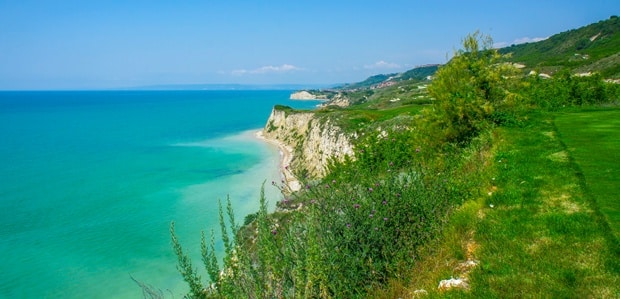
9) Macedonia: Small & Proud
Skopje is located just a few hours by bus east from Bulgaria. There is a daily bus connection to Sofia, tickets are very budget friendly. The territory of Skopje has been inhabited since at least 4000 BC and offers sights from different stages of this long history:
Things to do in Skopje, Macedonia (Travel Guide)
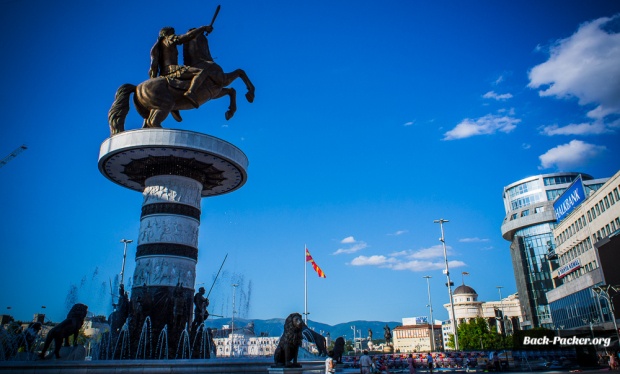
10) Albania: Undiscovered, Wild & Beautiful
Are you searching for a place which is really off the beaten path? Albania is your pick then! The food is great, the prices are super low and the capital is known for it's lively nightlife. Tirana is located in the center of the country and has a direct bus connection to Skopje (the journey takes 8h). Beside the sights in Tirana you should consider a visit to the Mount Dajti where you can enjoy the best views to the city:
Things to do in Tirana, Albania in 48h (Travel Guide)
In Albania you are also able to discover great beaches – they are wild and less crowded as there is almost no touristic infrastructure. The following articles are from other good Blogs and offer more information on Albania and some great photographs to get an impression of the country:
- Albania Travel Guide by Andrea (external)
- “Long Story Short – Albania is The Biggest Secret in European Tourism” by Nate (external)
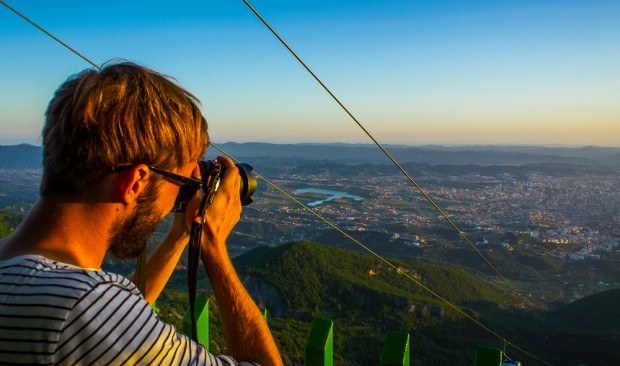
11) Montenegro: Fjords & Picturesque Old Towns
Alright let's move west and to the Mediterranean: the coast of Montenegro is simply mind blowing! The coastal villages and towns are well connected and easy to get to via bus or car, the official currency is the Euro. If you stay away from the popular spots and stay in one of the smaller villages nearby you should be able to get some good deals:
- The 5 Most Impressive Places to Visit in Montenegro
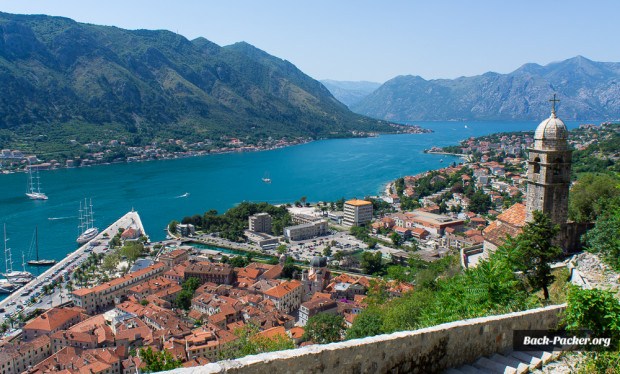
12) Croatia: Medieval Shooting Locations
Croatia is without a doubt the most expensive country of the Balkans but also one of the most beautiful. This is why I only went for a short visit to Dubrovnik which is located in the very south. There is a reason why so many tourists from all over the world are visiting this place:
- 10 Cool Things to do in Dubrovnik, Croatia
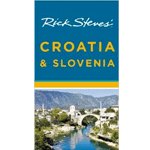
As host and writer of the popular public television series Rick Steves’ Europe, and best-selling author of 40 European travel books, he encourages Americans to travel as “temporary locals”. Rick’s candid, humorous advice will guide you to good-value hotels and restaurants. He’ll help you plan where to go and what to see, depending on the length of your trip.
buy it on Amazon >>
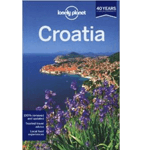
Lonely Planet Croatia is your passport to all the most relevant and up-to-date advice on what to see, what to skip, and what hidden discoveries await you. Colour maps and images throughout. Highlights and itineraries show you the simplest way to tailor your trip to your own personal needs and interests
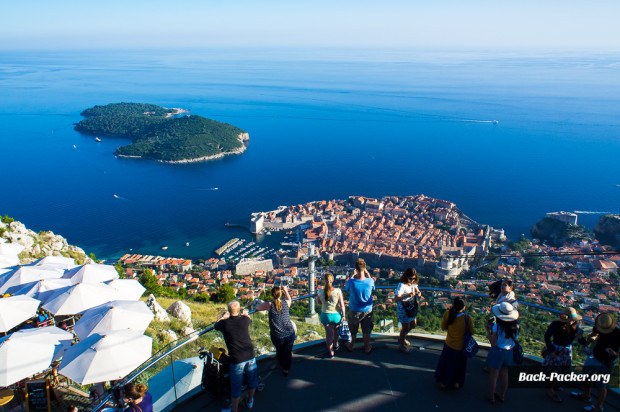
13) Bosnia & Herzegovina: Moving History
In comparison to its neighbors Croatia and Montenegro the country of Bosnia & Herzegovina is not really high up on the list of many tourists. Time for a change! Sure: in the 90s Sarajevo hasn't been a good option due to the Siege of Sarajevo. It took a long time for the city to recover from those dark years. Recently more and more tourists rediscover the city and are fascinated from the historic old town, the rich history and the hearty food.
History up close: Things to do in Sarajevo, Bosnia and Herzegovina
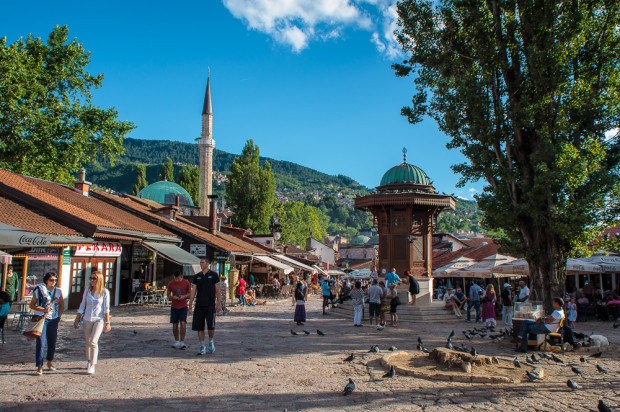
14) Serbia: Party at the Danube
Also Serbia has an eventful history and its capital Belgrade played a major role in the Yugoslav wars. Present-Day Belgrad is characterized by dynamic and change resulting in an interesting, vibrant mixture:
What to do in Belgrade, Serbia in one weekend
Novi Sad is the second largest city and also THE student city which leads to a lively nightlife. Once a year this is where the popular EXIT Festival takes place at the Petrovaradin fortress, also one of the biggest summer music festivals in Europe!
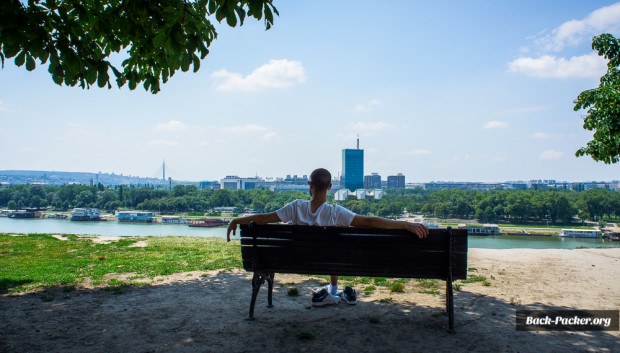
15) Guided Tours & Sailing
If you don't know where to start you can easily combine your independent trip with a guided tour. This way you don't need to bother about the organization, you get to know more about the country and you can travel with like-minded people.
After working with G Adventures in South America I can highly recommend their tours as their philosophy and focus on sustainable travel are in line with my personal values. With many years of expertise you can expect well organized, fun trips in small groups:
- Croatia & the Balkans (15 days) – with this tour you combine cultural experiences with outdoor adventures. Starting in Budapest it'll take you to Hungary, Serbia, Bosnia & Herzegovina and finally Croatia. Accommodation, breakfast, guides, transfers, as well as equipment (kayak), are included.
- Eastern Europe, Croatia & the Balkans (28 days) – the ultimate package mixing cultural experiences & the highlights in Eastern Europe with the landscapes and historic towns in the Balkans. Accommodation, breakfast, guides, buses, trains, admissions, boats as well as equipment (kayaking) are included.
- Montenegro Sailing (8 days) – the absolute dream trip along the Adriatic coast! With this sailing trip, you combine cultural highlights with the area's best beaches. Accommodation, guides, sailing yacht incl. skipper & crew, as well as snorkeling equipment, are included.
- Discover the Balkans (12 days) – if you prefer more comfort this National Geographic Journey combines rich history with beautiful coastal landscapes taking you from Croatia to Bosnia & Herzegovina and Montenegro. Accommodation, meals, guides, exclusive NatGeo tours, private minivan, boat and admissions are included.
16) Video Documentary “The Balkan Road Trip”
- Episode 1: Sozopol, Nessebar & Varna (Bulgaria)
- Episode 2: Skopje (Macedonia)
- Episode 3: Tirana (Albania)
- Episode 4: Budva & Kotor (Montenegro)
- Episode 5: Dubrovnik (Croatia)
More about Backpacking the Balkans?
I wrote this guide for you based on my 6 months traveling the Balkans – if you have any questions or additional tips feel free to comment below. If you found this guide to be useful it would be awesome if you could share it or if you would link to it from your website! Disclaimer: This post contains Affiliate Links for services and products I’m using on my travels – therefore I can highly recommend using them. By using this links you won’t pay any additional fees!
Helpful? Pin Me!
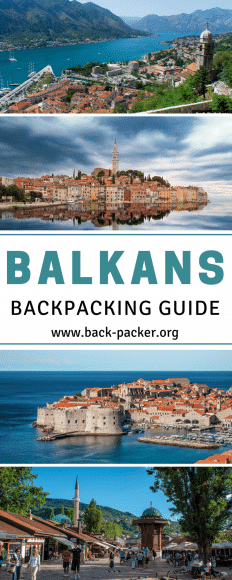
About The Author
Steve Hänisch
Verwandte beiträge.
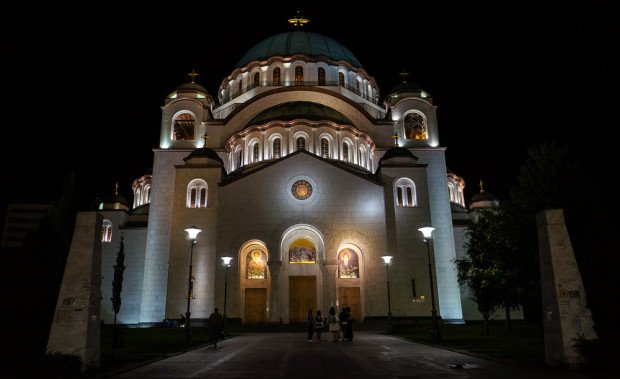
Answering the question “what to do in Belgrade?” isn’t that hard as the capital of Serbia has a long history, dating back to the 4th…

I highlight the most important things to do in Sarajevo with this practical city guide featuring sights as well as restaurants and accommodation – this…

This handy travel guide highlights the most important things to do in Tirana and features tips for restaurants and accommodation. I’ve been to the capital…
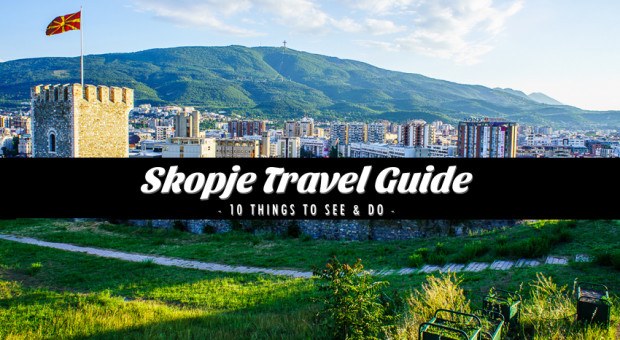
(Updated: 30.05.2015) With this travel guide I show you the most important things to do in Skopje including sights, tours and restaurants. Skopje is a…
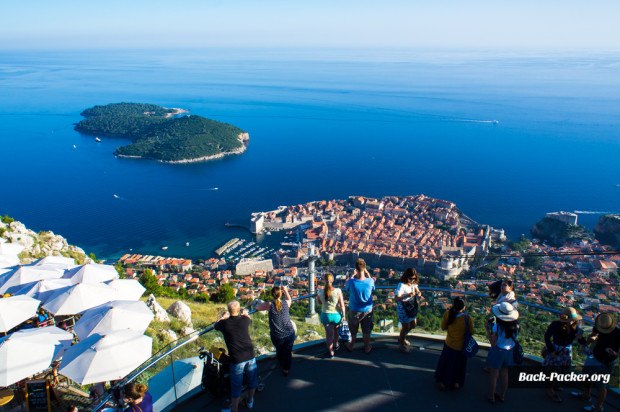
10 Cool Things to do in Dubrovnik, Croatia – Travel Guide
In this travel guide I list the most recommendable things to do in Dubrovnik. Moreover I point out some cool restaurants and places to stay…
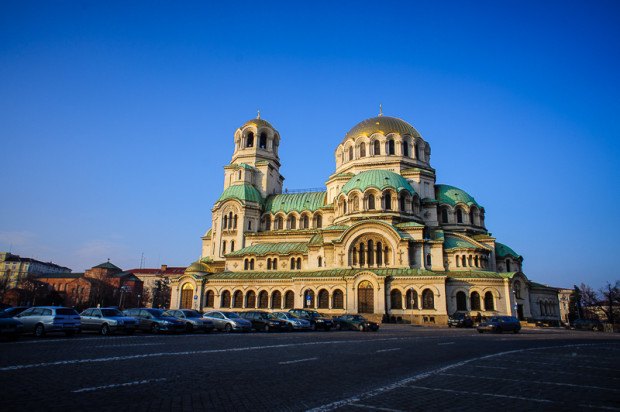
Cool Tips & Things to do in Sofia, Bulgaria (travel guide)
The capital of Bulgaria rocks! Beside low prices there are a lot of cool things to do in Sofia and the tours you’re able to…
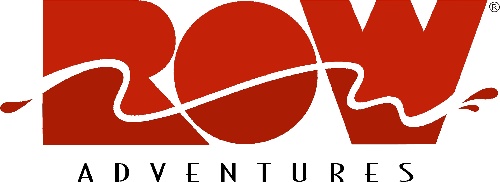
Peaks of the Balkans Hike
Peaks of the balkans - albania & montenegro hiking tour.
A hiking & cultural adventure through Montenegro and Albania including trekking on an international peace trail in the Dinaric Alps.
Come to a Europe that few people know. Montenegro and Albania are wild, mountainous, and home to still-untouched forests, rugged rivers, and a rich tapestry of culture. The high peaks of the mountains fall to verdant valleys and eventually to the azure waters, steep cliffs, and pebbled beaches of the Adriatic coastline. With an intense history of centuries of Ottoman occupation, we find a colorful and intriguing mix of European and Eastern cultures and religion.
Our Peaks of the Balkans trekking and cultural adventure takes us to the border triangle area of Albania, Kosovo, and Montenegro where a new International Peace Park has been established. Along our way, we meet with various local leaders who join us as special guests to enrich our understanding and appreciation for this part of the world. At the heart of this grand adventure is a difficult and extremely rewarding trek in the Dinaric Alps . Luggage is transported by local pack animals during the trek through this area of spectacular mountain scenery that is home to rare flora and fauna. Rugged peaks rise from alpine lakes and lush green meadows, piercing a cobalt sky. The trek is bookmarked on each side by visits to fascinating areas in Montenegro (including a day of lake kayaking) and Albania.
This fascinating region where the borders of Montenegro, Albania and Kosovo merge together amidst towering mountain peaks is one of the least-known areas of Europe. It is sparsely inhabited and through the twists and turns of history, has managed to preserve its authentic character and much of its traditions. People have lived for centuries in the mountains where we trek, surviving as shepherds and farmers. Famous for their hospitality, and challenged by a changing world, this trip promotes sustainable, nature-based tourism that gives hope and real economic benefit to the local population. During our trek, we spend each night in rustic inns or guest houses that have been established along the route and provide simple accommodations in shared rooms with two to six beds. The local innkeepers provide our meals, prepared from locally sourced and traditional foods.
The "Peaks of the Balkans" project was designed to create sustainable tourism development in a region where local traditions are getting lost and there is an out-migration to larger towns and cities. It is part of an International Peace Park meant to create economic stability and stronger ties between the three countries of Montenegro, Kosovo and Albania, all of which are already linked through history and family ties. To make all this a reality, local and national tourism organizations, as well as local hiking clubs, joined forces with the German Development Cooperation to develop the "Peaks of the Balkans" region as a globally-known destination for mountain tourism. Over the past few years, traditional trails have been mapped and improved, creating a transnational hiking trail network, one of only a few in the world. The trail and peace park concept was a nominee for the 2013 World Tourism Awards, and with this new project, border-crossing procedures for hikers have been simplified and a mountain security system has been established. Our local guides are trained according to international standards. This is truly a cutting-edge adventure and we invite you to join us to support the people of this magnificent and intriguing corner of the world.
ROW Adventures' ran a pioneering trip on this trail in 2012 , supporting local partners and helping to introduce the concept and region to the adventure travel market. It is with great pleasure that we bring this exceptional adventure to you.
This trip combines perfectly with our Albania Discovery kayaking trip making for a fantastic journey of immersion in the southern Balkans.
Images & Videos

Arrive in Podgorica (formerly Titograd), the capital of Montenegro
We transfer you to a small hotel in nearby Virparzar, in the National Park of Skardarsee. In the early evening we have a brief orientation meeting then head out to enjoy dinner at a traditional local restaurant. Food in Montenegro has been influenced by the historical 400+ years of occupation by the Ottomans and is simple, fresh and healthy.
MEALS INCLUDED : D
Kayaking Skadar Lake & Exploring Virparzar
We drive a short distance through stunning landscapes to our launch for a day of kayaking in Skadar Lake, the largest lake of the Balkans. Two thirds of the lake lies within Montenegro and the other third in Albania. Surrounded by mountains comprised of limestone karst, it is a wonderful wildlife refuge for some 260 species of birds including the pygmy cormorant, storks, egrets, the rare Dalmatian pelican and many others. Our paddle is suitable for beginner kayakers as we explore the shore and a few small islands. It makes for a relaxed and beautiful day. We return to Virparzar by early evening with time to stroll around town for those who desire. A local resident artist or member of a local environmental group, joins us for a dinner of fresh lake fish (and other choices) to share stories of life in Montenegro.
MEALS INCLUDED : B, L, D
Scenic Train Ride (including Mala Rijeka viaduct) & Gora National Park
After breakfast we board the only train system in Montenegro for a spectacular ride on tracks perched high above the Moraca river canyon. Construction for this railroad started in 1901 under the Austrian-Hungary empire and was later expanded during the Yugoslavia years. A highlight of our ride is the Mala Rijeka viaduct which is the highest railraod viaduct in the world! We disembark after a three hour ride and transfer to Biogradska Gora National Park for lunch and a one hour hike through one of the last stands of ancient woodlands in all Europe. After our hike we continue about two hours to the small town of Gusinj, set at the base of the Prokletije (Forbidden) Mountains.
This evening a representative of the National Park, which has been established only for a year, meets with us to tell us about the challenges and hopes for the Park. Dinner and overnight.
Hiking the Dinaric Alps & Village of Thethi
After a hearty breakfast we start a difficult and ultimately rewarding hike on trails that are part of the newly established Peaks of the Balkans trail system. We transfer a short distance from Gusinje and hike through the Ropojana valley, climbing uphill gradually. We pass through a dry lake bed and at the border of Montenegro and Albania our luggage is transferred from one set of horses to another. The gradient increases as we near the summit, passing by the odd bunkers built during the years President Hoxha was in power in Albania. He generally isolated the country from the rest of the world, and built these bunkers all over to defend against any possible invasion.
Our summit at the pass is rewarded with spectacular views of the mountains and into the valley of Theth. A steep descent takes us to the village of Thethi, the most historical alpine village in Albania. It has traditional stone houses covered with wood tiles built on natural balconies. Dinner and overnight in Thethi in a simple guesthouse with shared bedrooms. Our hosts tell us about their family's history in the valley and how the new Peaks of the Balkans Trail is having a positive impact on the valley's inhabitants.
Hiking Details:
Exploring the Thethi Valley
So remote that the Ottomans left it alone, the people in the valley are predominantly Catholic. In 1908 the English traveler Edith Durham visited Thethi and wrote in her book High Albania: “Life at Thethi was of absorbing interest... I forgot all about the rest of the world, and... there seemed no reason why I should ever return.“
Little has changed since her time other than the addition of electricity, running water and other comforts. We spend a relaxed day exploring the valley, gazing upon houses of wood and stone and learning about the area's history and legends while on a five mile hike to hidden waterfalls and swimming pools. Others may choose to explore on their own. We return to our lodging in a vehicle to help make this a relaxing day.
Hiking to Valbona
After breakfast we start another serious and rewarding hiking day, leaving our accommodations and heading towards Valbona. There will be horses and mules to carry our baggage. The morning hike is a continuous ascent through an ancient beech forest, shaded and lovely. Up, up we go until we reach the pass with views down to Valbone, our next destination. The descent is on a rocky path of switchbacks down the mountain. At the end of our hike, we drive about an hour to the small town of Bajram Curri where we find accommodation in a hotel.
Explore Lake Drin, Shkodra & Kruje
We rise early (4.30 am), have breakfast, and transfer 30 minutes to Lake Drin for a relaxing two-hour boat ride through a beautifully scenic gorge. We then transfer two hours to the second biggest city of Albania, Shkodra where we visit the mountaintop castle of Rozafa followed by lunch. We continue by vehicle to the mountainside town of Kruje, the center of Albanian resistance to the Ottoman invasion of the 15th century. This resistence was led by Gjergj Kastrioti, known as Skanderberg, who remains a national hero. Within the castle walls is a bazaar where you may enjoy some shopping, as well as a most excellent historical museum and an ethnographic museum. We stay in a local hotel with expansive views.
A member of the staff of the local history museum meets with us before dinner to help us better understand the complex, colorful history of Albania.
Depart from Tirane or Continue on Kayaking
Note: The hiking on days four and six is strenuous and previous conditioning is necessary. While the elevation is not particularly high, the amount of elevation gain and loss is significant. The descents are hard on knees and joints and walking poles are a must. Much of the trail is loose limestone that gets slippery when wet. If you have any questions about your suitability for this trip, please call our office. For groups this itinerary may be modified with easier hikes which also changes the order of places visited.
Note: This trip combines perfectly with our Albania Discovery kayaking trip making for a fantastic journey of immersion in the southern Balkans.
Dates & Rates
Supplementary information.
Prices above reflect the lowest tiered price.
4-7 guests = $3390 8-12 guests = $3190
Tiered Pricing Explained
Our trips are budgeted for full or near full sign-ups which enables us to offer trips at the lowest possible price. Because of numerousfixed costs, it is more expensive to operate a trip for a small group. Therefore, on some of our trips, in order to avoid having to cancel a trip, we have a “tier-pricing” system to avoid canceling a trip with a low number of sign ups. We have found that most people also prefer this alternative to having a trip cancelled. Thus, you will note on our trip prices there may be different price for 6-8 people versus 9-10, versus 11-12, etc...
We may initially invoice you at the higher tier price, and refund the difference depending on the final group size. Trip costs quoted are based on foreign exchange rates current at the time of this printing. We reserve the right to raise the trip fee if there are exceptional cost increases beyond our control.
Includes: Accommodations as noted. All meals as indicated. Professional, local guides including a Montenegrin lead guide from day 1 until day 7 and an additional Albanian guide from the border on. All transfers and transportation as indicated.
Does not Include: Airfare; personal expenses such as alcohol, laundry, etc.; gratuities for guides.
Add your review
Faq & more, you may also be interested in....
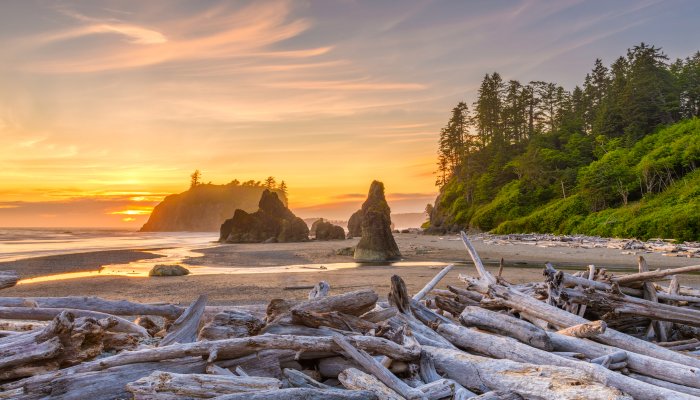
Olympic Peninsula E-Bike Tour
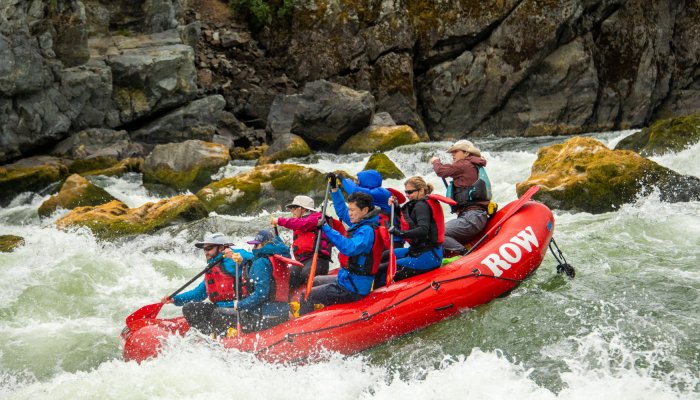
Snake River + Lochsa River Whitewater Rafting
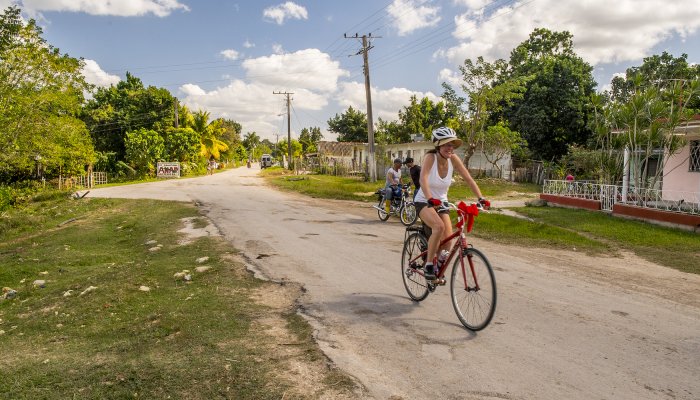
Western Cuba Cycling Tour
Back to top
Subscribe & get your free guide to going abroad!!
3 Perfect Balkans Itinerary Options: 10 Days, 1 Month, and More [+PDF]
Traveling and backpacking in the Balkans is an extraordinary experience that offers the best of Europe on a backpacker budget. This Balkans itinerary will deliver the best of Europe. Delicious, Italian and Turkish-inspired food and drink. World-class beaches and Rivieras. Towering alps and the southernmost fjords in Europe. The Balkans backpacking experience offers so much to love in such a small area and at a great price that it should be top of every traveler’s list.
Read on to discover the best of the Balkans, the essentials for a perfect experience wandering the Balkans, including the best route and itinerary for 10 days, 2 weeks, 3 weeks, and 4 or more weeks.
My experience exploring Croatia, Montenegro, Albania, Bosnia, Serbia, and more was one of the highlights of my European backpacking experience. Amazing food, plenty of great drink (wine and Rakja), never-ending parties, captaining a boat, extraordinary nature of towering mountains in bays, fantastic beaches, plenty of friends and friendly locals, and more. In this Balkans itinerary, I’ll share the must-see sights and experiences and how to make them happen to help you craft the perfect Balkans backpacking experience for you.
CONTENTS OF THIS PERFECT BALKANS ITINERARY
- Quick Balkans Itinerary for 10 Days to 14 Days
- The Full Balkans Travel Itinerary (3+ Weeks)
- Why The Balkans
- Balkans Tour Options to Consider
- Slovenia : Fairy tale like nature, lakes, and forests
- Croatia : Castles, Game of Thrones, wine, Italian inspired cuisine, an exquisite coastline
- Bosnia and Herzegovina : History, Ottoman influenced culture and cuisine
- Serbia : Never ending parties on the riverfront, fusion foods, rakija culture
- Montenegro : Norwegian styled fjords in warm, welcoming waters
- Albania : The Albanian Riviera’s amazing beaches and the Albanian alps
- Bulgaria : Artsy neighborhoods, nature, and gourmet locavore food culture for cheap
The Additional Balkans Destinations
- Kosovo (Optional)
- Macedonia (Optional)
Logistics of Traveling the Balkans
- Balkans Travel Budget & Tips
- Visas and Crossing Borders in the Balkans
- Travel Insurance: Do You Need It In The Balkans?
- When To Visit The Balkans
- Tips for Staying In The Balkans On A Budget
- Balkans Packing List Essentials
- How To Get Around The Balkans
- Balkans Travel FAQ
BALKANS ITINERARY HIGHLIGHTS: THE TOP 10 THINGS TO EXPERIENCE IN THE BALKANS
- Montenegro: The southernmost fjords in Europe and beautiful waterways
- Albania: Undiscovered escapes, beautiful rivieras that rival the Greek isles, Albanian Alps
- Croatia: Medieval architectural beauty and a “Balkans meets Venetian Italy” vibe
- The Albanian Riviera
- The Albanian Alps
- The fjords of Montenegro
- The castles of Croatia
- National Parks throughout
- World-class beaches in Albanian, Croatia, and Montenegro
- Scandinavian style fjords and towering mountains in Montenegro
- Rich food and amazing wine influenced by the Italians, the Ottomans, and Eastern Europe
- Medieval castles and city centers along the entire Balkans backpacking route
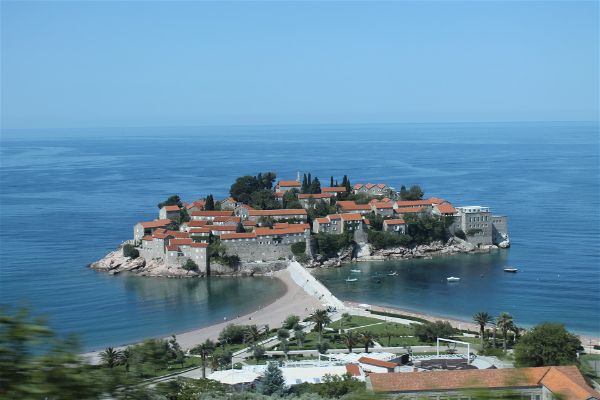
WHAT TO SEE AND DO WHILE YOU’RE IN THE BALKANS

KEY BALKAN ITINERARIES
THE TWO PERFECT BALKANS ITINERARY OPTIONS FOR YOUR TRIP: 10 DAYS AND MORE
The Balkans is such an impressive destination for backpackers and travelers because it offers so much for every type of traveler – and it just so happens to be budget-friendly too. Any one of the core Balkan countries could easily be a multi-week destination.
To balance maximum experience with enjoyment, we’ve created 2 separate itineraries.
The first option is the Balkans itinerary for 10 days , which focuses on the highlight destinations and experiences of the Balkans that no one can miss and skips the countries with redundant views or experiences.
The second is the full Balkans itinerary for 2-3 weeks or more , the itinerary achieves the same (maximum enjoyment and unique experiences), but at a slower, more enjoyable pace and more sites in each country added to ensure constant enjoyment. This itinerary includes everything you need to see in the Balkans if time is no issue and you’re one of the lucky backpackers on the long trail. If you’re backpacking in the Balkans, this full Balkans itinerary is the option you need.
CLICK HERE TO DOWNLOAD A FREE PDF OF THIS GUIDE!!
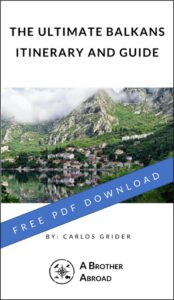
BALKANS ITINERARY (10 DAYS)
Balkans travel is something that every traveler should experience, but not all travelers have the full month necessary to backpack and slow travel the Balkans. This Balkans itinerary for 10 days packs the best sites, tastes, and experiences of the region into a smooth, 10-day jaunt.
With this 10 day Balkans itinerary, every single day will be mind-blowing and enjoyable and leave you wanting to return to the Balkans very soon.

If you are pressed for time, this 10-day itinerary delivers the best of the Balkans – beaches, food, Roman ruins and architecture, and more. However, if you have more time to spare, I highly recommend spending a month or more moving slowly through the Balkans and staying a little longer anywhere that catches your interests.
Read on to discover the places I recommend for a full Balkans itinerary of a few weeks or more.
THE FULL BALKANS TRAVEL ITINERARY (2 TO 6 WEEKS)
The Balkans has just as much richness, beauty, and culture as much more popular and crowded Western Europe, without the crowds and at a far cheaper price tag – fjords, mountains, and national parks as good as any in Scandinavia, wine that rivals Italy and France, rich hearty food that is unmatched, ruins that rival Rome, beaches that are on par with the islands of Greece, Spain, and France, and nightlife that puts Barcelona and Majorca to shame.
If you have a month or more to spare, I highly recommend backpacking the Balkans with this full Balkans travel itinerary.
This itinerary traces a trail through the Balkans, traversable by bus with manageable stops along the way every few hours, giving you a “best of the Balkans” tour, doable on a budget easily by bus.
For those travelers with more time for wandering and backpacking the Balkans, this itinerary shares every place you need to visit and see.

HOW TO USE THESE ITINERARIES
Both of the itineraries above, the Balkans 10-day itinerary and the itinerary, are perfect. Which itinerary you choose obviously depends on how much time you have to travel. For the longer itinerary, you should choose or eliminate destinations based on your own travel style – backpacker, budget traveler, outdoorsy, or party hungry.
If you only have ~10 days, stick to our 10-day itinerary, and you’ll hit the highlights of the regions and the best thing that each country has to offer.
If you’re traveling for 2+ weeks or backpacking, use the full itinerary omitting Kosovo, Macedonia, and Macedonia if you need to save time. Otherwise, hop the bus and enjoy each destination on our list.
If you find a city or country that you particularly enjoy, you should absolutely stay longer in that city or country.
Stay longer in countries where you love the sights, food, people, and lifestyle. As you travel, if you find a country/culture you love, stay longer and add more cities from that country to your itinerary (I recommend a few for each country).
The experience will change drastically once you leave each country as each Balkan country is very unique, so soak it up while you’re there – food, drink, people, architecture, and nature.
Plus , you can always go back and explore other destinations, so live in the moment as much as possible when you travel.
WHY I HIGHLY RECOMMEND THE BALKANS
If you’re looking for some of the most diverse (in culture, religion, language) and untouched parts of Europe, Balkans is a great place to go. The Balkans region has seen it all: from Macedonia’s Roman ruins and stunning mountain ranges in Kosovo to Croatia’s stunning shades of blue lagoons and epic beaches. What attracted me and my experience backpacking the Balkans
- European experience on a Southeast Asia travel budget
- Plenty of “ vacation nature ” and natural beauty – fjords, rivieras, waterfalls, and alps – within a short ride
- The best beaches in Europe for extremely cheap
- “Old World” and medieval cities and architecture bring Game of Thrones to life with castles and walled city centers.
- The varied and rich food : everything from Italian-inspired Istrian, hearty Slavic, and Ottoman/Middle Eastern -inspired Bosnian.
- The drink: Croatian, especially Istrian, wines are underrated, and world-class thanks to Italian influence, and the Rakija (local firewater) is interesting, complex and varied across the Balkans
- Compact and accessible traveling : most of the adventures are hours away from each other by an easily booked and cheap bus or train
- Easy visa situation: whereas the rest of Europe in the Schengen zone only allows 90 days per six months in all of the European Union, each Balkan state offers easily renewable and free visas from 30 days to 6 months
- Less crowded than the rest of Europe with all of the experience
- Plenty of history intact with cities built by Roman emperors , recent wars, and recently opened borders (Albania)
The Balkan region – Croatia, Montenegro, Albania, Slovenia, Serbia, and Bosnia & Herzegovina – offers amazing food, hearty and rich, that will satisfy any taste buds and wine as good as anywhere else in Europe. If you are looking for a “European vibe” but want an experience that’s cheaper, less crowded, and less touristy than the typical destinations, then the Balkans is a perfect place to visit.
The Balkans will give you an unforgettable experience – just make sure to pack your swimsuit, hiking shoes!
BEST BALKANS TOUR OPTIONS
If you’re not in the mood for indie travel, or if you’re pressed for time and want to see all of the Balkans in two weeks but want to skip the logistics planning, I highly recommend attending one of these reputable Balkans tours.
THE FULL BALKANS ITINERARY
Click to Jump to The itineraries
| SLOVENIA | | CROATIA | | MONTENEGRO | | BOSNIA AND HERZEGOVINA | | SERBIA | | ALBANIA | | BULGARIA |
———-
THE ADDITIONAL BALKAN TRAVEL ITINERARY DESTINATIONS
| MACEDONIA | | KOSOVO |
Quaint European towns and Insta-worthy lakes, forests, and caves
For nature lovers and sober travelers, Slovenia is a picturesque and green destination that may be worth adding to your itinerary.
Ljubljana, Slovenia’s capital and Europe’s greenest city, is a charming and quintessentially European city – walkable with cobblestone streets and a Riverwalk with plenty of coffee shops to enjoy the cool weather and peacefully picturesque views.
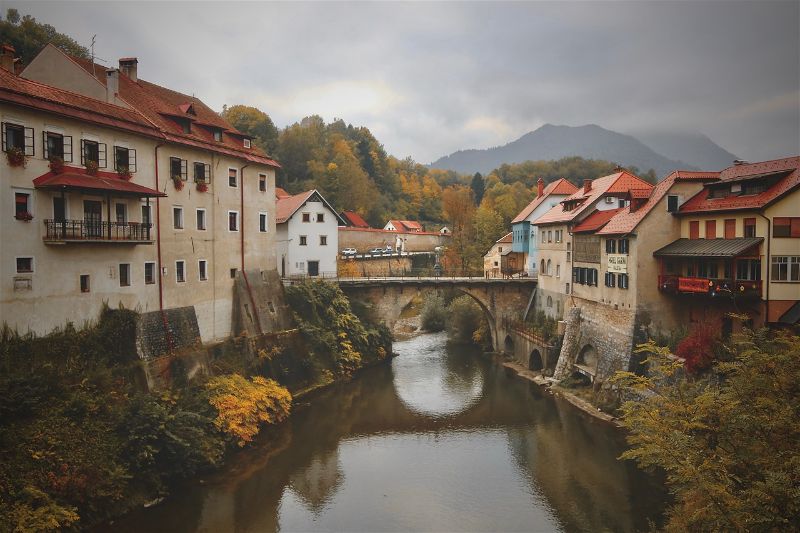
One hour away from the capital Slovenia’s biggest tourist destinations – Bled and Lake Bled – are nestled in the Julian Alps and deliver tons of Insta-worthy views. Hike up to Bled castle, boat to a church on an island, visit the charming village of Ribcev Laz on the shore of Lake Bled and take a cable car ride to the top of Mount Vogel for a panorama view.
End this leg of the trip by visiting the most toured cave in Europe (Postojna cave) and seeing the castle built into it (Predjama Castle) on your way to Croatia.
If you want to jump right into sunny beaches and lively nightlife, I suggest going straight to Croatia.
TIME NEEDED:
3 Days (1 Day in Ljubljana, 1 Day in Bled, 1 Day visiting Postojna Cave And Predjama Castle)
ESSENTIAL FOOD & DRINK
- Kremna rezina
- Kranjska klobasa
- Bograč
- Idrijski žlikrofi
- Pogača
- Štruklji
- Prekmurska gibanica

SLOVENIA VISA
Slovenia is part of the Schengen zone, so the Schengen visa applies – 90 days in a 180 day period, shared with all of the Schengen zone / EU countries
BUDGET/PRICES: ~$50 per day
- Hostel Dorm: $25/night
- Budget Hotel: $45/night
- Food: $15/day
- Transportation: $10 to $15 per day average, to visit attractions
- Attractions: ~$25
MOVING ON: From Ljublana, or anywhere else in Slovenia, if you are on a shorter itinerary (2 weeks or less), hop a bus (~8 hours) or a train (~10 hours + $38) to Split, Croatia, from Ljublana . If you are on a longer itinerary, hop a 5-hour bus or train (~$15) to Pula, Croatia and enjoy Istria .
GETTING THERE: As Slovenia is the start of many travelers’ and backpackers’ trails in the Balkans, the cheapest option is to fly into Bupadest, Hungary, enjoy the beauty of Budapest for a few days and then travel from Budapest, Hungary, to Ljublana, Slovenia by 7-hour train (~$30) or 7-hour bus (~$30) .
SLOVENIA ITINERARY

Slovenia has some amazing natural beauty that is world-class and that travelers rave about – but so do Montenegro, Croatia, and Albania, without being as far from the central Balkans backpacking route. Additionally, Slovenia offers very little outside of nature – while the rest of the Balkans offer rich food, drink, entertainment, and history.
Though Slovenia is remarkably beautiful, if you’re short on time traveling the Balkans, I recommend skipping Slovenia and starting your tour further south, closer to the action.
The Ljubljana city center was planned like an old baroque town, with cobbled streets and a Roman-style canal, catering to a day of walking and a leisurely lifestyle. This is a city that has been preserved in its original form, with buildings from all periods represented, all the while still moving forward. In 2014, Ljublana was awarded the Greenest City in Europe for its dedication to and advancements in sustainability, proving that Ljublana’s soul matched its surrounding beauty of turquoise lakes and sprawling forests.
Ljubljana also has a rich literary and artistic tradition, possibly cultivated by its welcoming cafes, with writers such as Nobel Prize winner Ivo Andric and poets like France Preseren make it their home for much of the 19th century. These literary giants influenced not just Ljublana but also much of the Balkans region as well through their work and by inspiring other writers.
WHAT TO DO IN LJUBLJANA
- Preseren Square and Tromostovje Triple Bridge
- Ljubljana Old Town, walking its two main streets
- Visit the Ljubljana Castle by funicular or hike
- Dragon Bridge
- Walk the riverfront
- Visit Congress Square
- Tivoli Park
- Museum of Illusions
TIME NEEDED: 1 Day
RECOMMENDED RESTAURANTS LJUBLANA:
WHERE TO STAY IN LJUBLANA
The hostel or hotel standards in Slovenia are great, so just choose one that fits your style. However, be choosy about the location to maximize your experience – either the Old Town or the Modern City Center are where you should look for accommodation. H20 Hostel comes highly recommended.
LAKE BLED / BLED
Bled, Slovenia, is a charming little town tucked up in the Julian Alps with the farily tale like Lake Bled situated right beside it. For those backpackers and travelers that love calm, pristine outdoor beauty and just the experience of strolling through a new place, Bled (just like the rest of Slovenia) will capture your heart.
Visitors can enjoy a stroll through the historic and beautiful city center, eating traditional Slovenian cuisine at one of many cafes or restaurants, or just picnic on flat rocks that jut out into the lake. Bled’s historic core is the winding castle on the hill on one side of the lake and the church on top of the hill on the other side of the lake. There are also many tours to take to explore the tiny, hidden, and less well-known, but still equally if not more stunning, parts of Slovenia that are offered by many different tour operators.
On the other side of the lake, on an island in the middle of the Krasna zalza (beautiful grove), stands a small, beautifully constructed church. It is said to be one of the most photographed churches in all of North-Eastern Europe.
Bled Castle was built in the 13th century by the Habsburgs as a summer residence. It has medieval turrets, and its view can be seen from throughout Slovenia. The castle is richly furnished and houses many treasurers; one that should not be missed is called “Prince Luitpold’s Treasure.” The treasure becomes more interesting because it contains some of Napoleon’s personal effects, including a memento made for the French emperor by a craftsman from Bled.
- Postojna Cave and Predma Castle inside
- Visit the town of Piran – full of Venetian architecture and coastline the rivals Italy and Croatia + Tartans Square, Saint Georges Church, and amazing seafood.
WHAT TO DO IN BLED, SLOVENIA
- Boat to the Church of the Mother of God on Lake Bled
- Hike to Bled castle
- Cable car to the top of Mount Vogel
RECOMMENDED RESTAURANTS AND CAFES
Sun-soaked beaches, Game of Thrones-style walled cities, and Venetian influence culture
Croatia’s Dalmatian coast is filled with countless amazing beaches and medieval-style cities worthy of Game of Thrones. The Croatian islands are party havens in the summertime that give you the must-experience opportunity to rent and captain your own boat for about ~$50 per day.
Between wanderings in Croatia, the rich food inspired by Italy just across the Adriatic Sea, and the great wine a rakija culture will keep you entertained. You could easily spend an entire trip in Croatia alone.
Croatia’s capital city, Zagreb, is a contemporary wonder. Its pedestrian-friendly streets lined with galleries and interesting shops hold fantastic treasures to be discovered at every turn. Foodies delight in the wide array of restaurants where one can sample everything from the old regional delicacies (try ćevapčići Slavinski) to original Southeast Asian fusion combos.
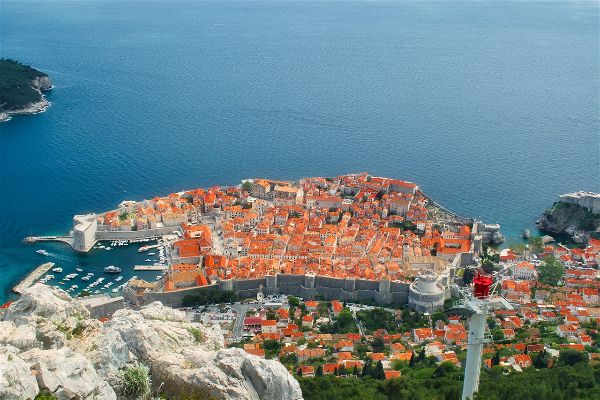
Endless nightlife options throughout Croatia offer partying high atop skyscrapers, in underground subterranean nightclubs nicknamed ‘catacombs,’ to islands that exist solely for nightlife and run until sunrise when they morph into normal beaches.
From its regal castle in Dubrovnik on the coast to modern marvels like The House of Croatian Parliament (Sabor) by architect Vjenceslav Richter, Croatia is filled with cultural riches that dance along pristine, unspoiled coastlines.
The Balkans are not only about wild mountains and alpine vistas – but they’re also home to some of Europe’s most spectacular coastline – the Dalmatian Coast of Croatia. The Dalmatian Coast, with its countless islands (think Hvar or Vis), packs in everything from laid-back fishing villages to cosmopolitan beach resorts. And did we mention the water? Well, it’s just turquoise, but it’s warm, clear, and everything you hope for in a riviera paradise.
No matter what kind of traveler you are, Croatia has something for you.
CROATIA ITINERARY
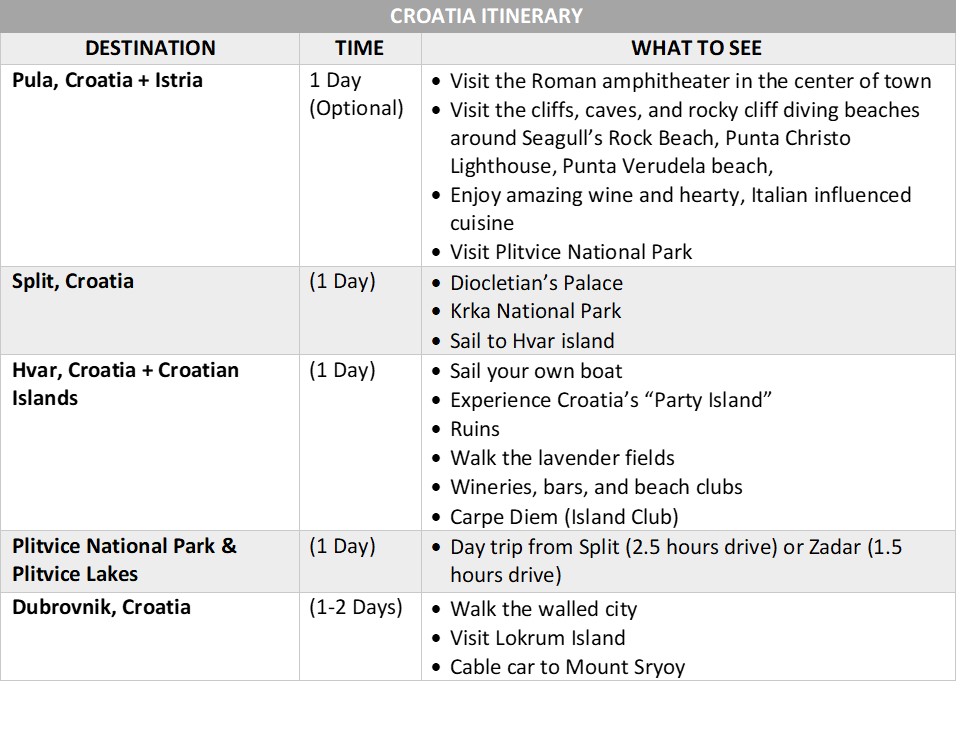
CROATIA TRAVEL INFO
HIGHLIGHTS OF CROATIA
- Cheap truffles
- Great wine in Istria inspired by the Italian style, and heavier, “Balkan style pasta.”
- Castles and medieval cities
- Rocky beaches with warm, clear water
- Never-ending nightlife
ESSENTIAL FOOD & DRINK ACROSS CROATIA
- Istrian cuisine
- Raznijci (meat skewers),
- Zagrebacki odrezak (veal stuffed with ham and cheese)
- Janjetina (lamb and herbs)
- Istrian wine
- Raznijci (meat skewers)
GETTING AROUND CROATIA:
Throughout Croatia, your travel mode of choice will be either by bus or rideshare. https://www.buscroatia.com/ is your best option for researching bus routes, and Rome2Rio.com is your second best option for researching routes, times, and prices. In both cases, book your ticket at the bus terminal as listed times can change and there are usually more routes and times listed than on these sites.
MOVING ON FROM CROATIA
From Croatia, I highly recommend going into Montenegro then Albania if you are on a shorter trip (less than two weeks). If you are traveling for longer (more than two weeks), travel by bus into Bosnia and Herzegovina (Mostar, then Sarajevo), up to Belgrade, Serbia, then back to Croatia, and continue south into Montenegro and Albania.
Leaving Croatia, you are perfectly situated in the Balkans to go anywhere – Slovenia, Bosnia, Montenegro, or a little further to Albania. If you travel to one of the adjacent, nearby countries (Bosnia, Montenegro, or Albania), traveling by bus is your best option, and you can research routes on Rome2Rio and book accordingly. Be sure to read the country sections in this guide to find out visa guidelines for each country.
For travel to Slovenia (Ljublana) and Serbia, a flight (~$90) is your best bet, as the bus to Ljubljana is 14 hours and the bus to Belgrade is 8 hours.
VISA: No visa is required for tourist visits less than 90 days – Croatia is not part of the Schengen zone
BUDGET/PRICES:
- €10-15 for a dorm bed in a hostel, ~25 per night for a private hostel room or budget hotel room
PULA, CROATIA
Pula is a low-key highlight of Croatia. Whereas the rest of Croatia boasts Game of thrones vibes and never-ending nightlife, Pula has a uniquely Istrian feel, heart food that combines Italian influence with Croatian traditions, fantastic wine (in the Italian tradition), low key beaches, and plenty of ruins.
Pula has been occupied by exactly 22 countries, and each has left its mark, although now the area feels very much like forgotten Italian countryside as the city was part of Italy up until 1942. Many of the residents do still speak Italian.
The colosseum that sits in the middle of town, a remnant of the Roman Empire’s occupation, is one of many ruins and archeological sites to explore. Last, there is a vast, still unmapped underground tunnel network beneath the city.
HIGHLIGHTS OF PULA, CROATIA
- Roman ruins and restored Roman empire era structures
- Rocky Beaches and cliff diving
- Food: Cheap truffles, great wine in Istria inspired by the Italian style, and heavier, “Balkan style pasta”
- Malvasia – The local white wine – normally the house wine
WHAT TO DO AND SITES TO SEE IN AND AROUND PULA
- See the Roman Coliseum (The Amphitheater), walking distance from downtown Pula.
- Pula – Built in the 1600s by the Venetians, designed by a French architect
- Roman Temple in Town
- The Triumph Arch
- Pula Daily Market from 7am to 3pm
- Archeological Museum of Istria
- Hop a bus and take the Nr1 line to Stone for 11 Kuna (1.5€) or take an Uber for 5€. Take the bus from the bus station is in front of Corso Kavana & Tapas Bar / Your Private Kingdom Cocktails.
- Go to the café in the campground behind the bus station in Stoja for decent Calamari (60 Kuna) and cocktails.
- Rt Kamenjak – rent a bike in the city at the last bus stop in the city of Premantura. Pick a bike shop at any place in that city.
WHERE TO EAT IN PULA
- Jupiter: Delicious, hearty, Istrian cuisine at an amazing price. Great wine selection too. The Local Wine (Malvasia), Istarski odrezak, and gnocci were the highlights
- Vodnjanka: Great seafood
- Parabuto: Call for reservations as it books up quickly each night
- Tappo: Next to the coliseum. Great for wine and tapas
- Hook & Cook: “Sea to table” restaurant
- Kod Kadre: Meat Restaurant. LOTS of meat
BEST CAFÉ’S IN PULA Have coffee in the main square, in view of a Roman Temple and Ruins. These were my favorite café’s
- Cjvajner Café
- Bistro Nonno
- Caffe Djana
GOING OUT AND NIGHTLIFE IN PULA If you’re planning to party, then you may want to skip Pula. This mellow town is wonderful, filled with great food and wine and plenty of rocky beaches, but the nightlife is scant compared to the rest of Croatia. However, if you plan to go out, these places are your best bet:
For the local scene, go out Thursdays. Start with drinking in the park until about 1 and then move to Uljanik, the local club that specializes in Electronica and Croatian Rock.
For more excitement, go out on the weekends. Pietras Julias – Pizzeria by day, club by night. The music can be a toss-up, depending on the DJ, but this is still the place to go during the weekend.
BARS AND NIGHTLIFE IN PULA
- The Shipyard
- Old City Pub
- Click (the James Joyce Bar)
- Enoteca Istriana – A bar near the Amphitheater that showcases regional wines
- Tapos – next to the amphitheater. Stylish and creative Tapas bar with a very cool/chill vibe
Drinking Tip: Check if the house wine is local; if it is, go for it. It’s usually delicious and always cheap.
PULA WALKING TOUR PATH
- Amphitheater
- Hercules Gate
- Arch of the Surgai (for a family that ruled for 1600 years, the family that won the battle that arose after the death of Julius Ceasar).
- Roman Mosaik – hidden underground House. Punishment of Darci
- Forum (City Center)
- Temple of Augustus
- Front wall from the Middle Ages
- Back Wall from The Temple of Dianna (Goddess of Hunting)
- Sidewall – 1970’s
WHERE TO SLEEP IN PULA
- Crazy House Hostel
- Antique hostel
OTHER TIPS ON PULA
- Summer is the best time to visit, and the most popular restaurants generally close between October and May.
SPLIT, CROATIA
Travelers should visit Split, Croatia, to explore Roman ruins, beautiful beaches, and amazing architecture.
Split is the second-largest city in Croatia, the main port on the Adriatic Sea coast of Dalmatia. The entire town is listed as a UNESCO World Heritage Site, and its most famous landmark is Diocletian’s Palace, a centuries-old historical site that was once one of the most important sites in the Roman Empire. Interesting fact – Roman Emperor Diocletian was the only Roman emperor to leave his station peacefully and avoid being murdered after. He did this by dividing the Roman Empire into fourths appointing a ruler over each so that they may quarrel with each other and leave him in peace. While Diocletian was executing this plan, he built the walled fortress of the palace in Split to retire peacefully and live out the remaining years of his life – as he did – and defend it if necessary. You will see when you arrive that this “palace” is the size of a small town and remained just as peaceful.
A guided tour will take you through its awe-inspiring corridors to some of the highlights, like its vast peristyle with an intricate mosaic floor and golden four-headed animal symbol of old imperial power.
Besides exploring this incredible palace, there are a number of other must-see sights in the area, like the ancient Titus’ Arch on its main promenade and Marjan Hill—a popular park that offers great views of the town.
Moderate to low-budget travelers can still enjoy Split by simply strolling along the seafront promenade where you will see all different kinds of cafes and shops, as well as many outdoor activities including volleyball, table tennis, star gazing or just hanging out on one of many sandy beaches. For those more interested in historical sites or some nightlife and partying, there are plenty of clubs where nightly events featuring both local DJs and international acts. The city’s Old Town is also jam-packed with restaurants offering some great Dalmatian cuisine; however, it can be for the more expensive side.
After soaking up the history and views of Split, hop a boat to the island Hvar to purely soak up the sun, party through the night, and captain your own boat…literally.
WHAT TO DO IN SPLIT, CROATIA
- Visit Diocletian’s Palace
- Enjoy a great, local lunch or dinner on the oceanfront boardwalk – aim for the north end for better prices.
- Specifically, eat at Konoba Matejuska or Hvar Harbor Restaurant
- Explore the city on foot and see all the sights of Split or with a free walking tour
- Visit Paskval Street in the old town for local jewelry and souvenirs.
- Visit the nearby Paklenica National Park for a little fun in nature (2 hours away)
- Take a boat to one of many Croatia islands like Korcula, Mljet and Vis for a day trip, or overnight to Hvar or Brac.
- Firstly, hop a ferry (1 hour, ~$8) to Hvar island to the sun and sip in a place that exists solely for pleasure. Hvar is a Croatian highlight not to be missed. After Hvar, continue by ferry (3.5 hrs, ~$30) from Hvar to Dubrovnik , or return back to Split and travel from Split to Dubrovnik by bus (~4 hours, ~$25)
HVAR, CROATIA
Hvar is a beautiful island in the Croatian Adriatic with amazing architecture, beaches, outdoor activities, and calm urban centers.
Hvar is a Croatian island located in the Adriatic Sea with some of Croatia’s most incredible scenery.
Hvar is also famous for its wines, handcrafted jewelry made out of volcanic stone & silver sea urchins. Tourists can visit different wineries to sample local wines by the glass. The island is very well known for its jewelry, made from the rare Lapis lazuli stone found in nearby mines all over the Balkans, which was highly prized by ancient societies as well as today’s fashion designers.
The vibrant nightlife scene is not necessarily as chaotic as other party islands, but it has its moments – especially if you make your way to the legendary “Carpe Diem.” There are plenty of bars and cafes that have live music every night of the week, and there is also an annual cultural event called “Cherry Night” held every July, during which Hvar celebrates the first sour cherries harvest every year. Local restaurants offer up amazing Mediterranean dishes that will make any foodie happy, including fresh fish and traditional Croatian cuisine like a filet of beef served with a delicious truffle sauce.
WHAT TO DO IN HVAR
- Visit the day bars, Hula Hula Hvar (bar) and Majerovica
- By night visit the never-ending party island of Carpe Diem
- Visit the beaches to the east and west of the main harbor. Beaches in the east rent kayaks for cheaper
- Rent a boat and motor you and your crew around the islands surrounding Hvar
WHERE TO STAY IN HVAR
- Villa Skansi
- The White Rabbit Hostel (Party centric)
MOVING ON FROM HVAR
After Hvar, continue by ferry (3.5 hrs, ~$30) from Hvar to Dubrovnik , or return back to Split and travel from Split to Dubrovnik by bus (~4 hours, ~$25)
DUBROVNIK CROATIA
Known as the Pearl of the Adriatic, Dubrovnik offers more sights and activities than any other city in Croatia. The “Game of Thrones” esque old town is a prime destination for anyone looking to explore some Croatian history and culture and enjoy some amazing views from up high. The city was nearly destroyed during the 1992 war. Since then, Dubrovnik was rebuilt impeccably, maintaining a look that conjures feelings of a “Slavic Venice” considering Dubrovnik (and much of Croatia) were once ruled by the Venetian Empire.
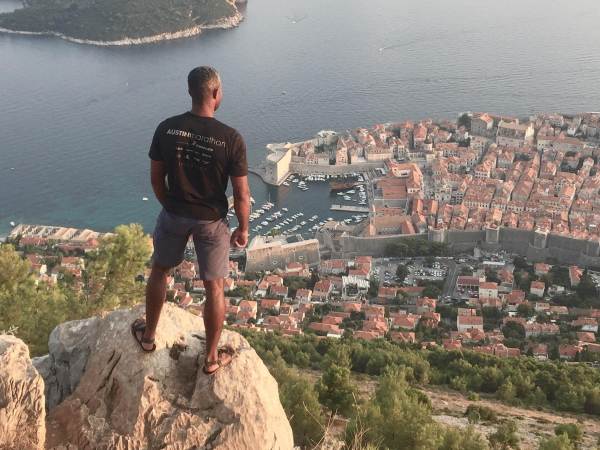
Along with walking along the old city’s high walls and exploring fortifications (complete with cannons), there are also plenty of beautifully secluded beaches not too far away by car or public transportation from Dubrovnik. Just minutes outside of Dubrovnik, you can take it easy lounging on a beach that feels worlds away from busy Old Town. There are smaller gems like Ston where you can see some beautiful medieval architecture, go diving off its limestone rocks nicknamed “The Rocks,” and peaceful Lokrum island, littered with tons of peacocks.
Top your Dubrovnik experience with a sunset towering over the city after a cable car ride up Mount Sryoy, and you cap an epic experience before moving on to even better Balkans destinations.
WHAT TO DO IN DUBROVNIK
- Walk Stradun street, the main street in the Old Town, flanked by Venetian style buildings and Game of Thrones backdrops, ending at the clock tower
- Walk the Old Town city walls
- Old Town sites to see: Rector’s Palace,
- Hop a boat to Lokrum Island for the view, the experience, and peacocks
- Cable car ride up to 412 meters tall Mount Srdj for a birds-eye view of Dubrovnik
- Do a Game of Thrones walking Tour
- Enjoy the beaches that flank the city
TIME NEEDED: 1 to 2 days
ISLANDS NEAR DUBROVNIK TO CONSIDER
- Korcula: Beautiful Venetian architecture and the childhood home of Marco Polo, Princeton Beach, and winemaking
- Elite archipelago of 14 small islands: orchards and fruit groves, white sands beaches, more beautiful architecture and each island has a character all its own
COOL NOTES ON DUBROVNIK:
- The Old Town was a set for Star Wars as well as Game of Thrones
GETTING AROUND DUBROVNIK: On foot is your best and easiest bet as the best parts of Dubrovnik are walkable
WHERE TO STAY: The Old Quarter is a highlight and a great place to stay but pricey. Budget travelers should aim for the surrounding neighborhoods of Pile, Ploce, and Lapad. I highly recommend Hostel Angelina , and there are plenty of options on Airbnb
After you’ve finished exploring Dubrovnik, you’ve likely reached the end of your adventures in Croatia if you are taking the “from north to south” route through the Balkans. If you are in the Balkans for less than two weeks, hop a bus from Dubrovnik to Kotor, Montenegro (~3.5 hours, $8), for insanely beautiful fjords, towering green mountains, and warm, deep blue waters.
If you are on the extended tour through the Balkans, hop a bus on to Mostar, Bosnia, to begin the tour through Bosnia & Herzegovina and Serbia.
BOSNIA & HERZEGOVINA
Ottoman food, culture, and heritage in the Balkans, with dense European history
Bosnia and Herzegovina deliver a unique experience in the Balkans thanks to heavy Ottoman influence in their culture, food, religion, and architecture, and due to the Bosnian history of war – from the assassination of Archduke Franz Ferdinand in Sarajevo, which started World War I, to the Bosnian War in the mid-1990s.
Bosnia used to be a small, medieval kingdom (and existed before Sarajevo); however, in the late 15th century, the Ottomans conquered the Bosnian kingdom, destroying much of the original history and leaving behind much of the culture and architecture we observe today.

Beyond the history-laden walking tours, Sarajevo delivers a rich experience of “Little Vienna meets Little Istanbul.”
Whereas other Balkan destinations deliver pure sunshine and pleasure, Bosnia and Herzegovina deliver culturally enriching and educational experiences in a way any travel will appreciate.
INTERESTING BOSNIAN FACTS: WHY THE BOSNIAN COASTLINE IS ONLY 17 KM LONG
Bosnia &Herzegovina have only 17km of coast: During the period of the Ottoman and Venetian empires, the Venetians controlled present-day northern Croatia. The Ottomans controlled Bosnia (without a coast at the time). Croatia (south of Bosnia) was the Dubrovnik republic. The Dubrovnik republic agreed to give the Ottomans the 17km of coastline to aid trade via access to the oceans, under the conditions that they would fight the Venetians if they ever attempted to invade. This is why present-day Bosnia has this coastline

BOSNIA AND HERZEGOVINA ITINERARY

BOSNIA & HERZEGOVINA TRAVEL INFO
- Mostar: Cliff diving and a small-town feel
- Sarajevo: Vienna meets Istanbul, intense history (Balkan wars, WW2), unique foods,
ESSENTIAL FOOD & DRINK OF BOSNIA & HERZEGOVINA
- Dolma: Served many ways, but stuffed in onion and stuffed in peppers are the most common ways.
- Bey’s Soup or Begova Corba – slow-cooked chicken or beef and vegetables make a thick, slightly creamy, but extremely (simply) delicious soup.
- Klepe: Bosnian meat dumplings served with a creamy yogurt-like cream infused with garlic
- Cevapi: Simple, grilled rounds of minced meat served with a traditional bread somewhat like pita. Simple, yet filling. Good for an uneventful but tasty lunch
- Burek: A savory pastry filled with cheeses, meats, spinach, and the like (comes from Turkey and was brought to the Balkans by the Ottomans). Try it for a quick breakfast.
- Baklava: A layered pastry of flaky bread covered in honey and sugary sweet sauce. Common in many Middle Eastern countries and Greece. Absolutely delicious! Similar to everywhere else in the Balkans and the Middle East, it’s no less enjoyable here. Perfect with a cup of coffee
VISA: Most nationalities can stay for 90 days free without a visa but need to have at least 6 months validity on their passport on arrival
BUDGET/PRICES: $45/ Day for hosteling backpackers and ~$75 for budget travelers staying in budget hotels
CONNECTIVITY: HT Eronet SIM cards for 3G coverage
MOSTAR, BOSNIA
The famous Old Bridge, built-in 1566 over the Neretva River, is one of Mostar’s most recognizable features. It was destroyed in 1993 when Croat forces bombed it in order to create a dividing line across the Balkans. Reconstruction began in 2002 and ended ten years later; today, it is again one of Bosnia and Herzegovina’s top tourist attractions.
But there isn’t just cultural significance here–this city also has plenty of natural beauty: nearby peaks can reach 3,000 meters high (10,000 feet). Take a hike through Medjugorje (30 minutes away) or its surrounding hillsides for some epic views that are rarely seen by anyone but locals–as well as perhaps sightings of wild animals like deer.
Also, check out Kravice waterfalls – some of the tallest in the Balkans at 80 feet tall – between Split, Croatia and Mostar, 45 minutes away from Mostar. There is a swimming pool at the foot of these falls, and you can take a walk along a path that goes behind them to see where it all comes from. Many day hikers picnic along the shores and enjoy the paradise.
If you need one more destination around Mostar and in Bosnia, consider experiencing some local cuisine on Pliva Lake’s shore, featuring plenty of fresh fish and other delicacies, but expect a 2+ hour drive to get there.
The Balkans are known for their hospitable locals–and this is no different in Mostar! Take the time to talk with some of the friendly people who help run shops and cafes. You’ll be able to get a taste of local life that you wouldn’t otherwise see as a tourist.
HIGHLIGHTS OF MOSTAR BOSNIA
- The Stari-Mos Bridge: The iconic bridge, the “stari most” (meaning “old bridge”), has existed since the 1400s. The bridge was used to connect the commerce and residential neighborhood sides of the river. Now, you can jump from the Stari Most after getting certified by the local coaches – or jump from the lower platform. During my time in Mostar, Red Bull was running a cliff diving competition from the Stari Most Bridge.
- Terrace café by Day and Ali Baba disco by night
- Central mosque
- Top of Franciscan Church
- Heavy Ottoman influence
- Fantastic rich food with strong Turkish notes
- Do the free Mostar walking tour
AROUND MOSTAR
- Kravca Waterfalls
- Roman Ruins
- Pocitjeli: A medieval fortress and walls surrounding a town that dates back to 1444. 30 minutes from Mostar.
TIME NEEDED: 1 Day for Mostar, an additional ½ day today for each day trip out of town
WHERE TO EAT
- Restaurant Sadrvan – a plethora of local, Bosnian cuisine at great prices despite the touristy location and feel. Perfectly situated next to the UNESCO heritage bridge ” Stari Mos.”
GETTING TO MOSTAR
- From Dubrovnik or Split, go to Mostar, then Sarajevo, then depart to Serbia (east) or Montenegro (South)
- Traveling by bus, booking on the GobyBus site is your bet
The capital city of Bosnia and Herzegovina is one of the most varied and historically significant cities in Europe. The heritage of the rule of the Ottoman empire remains clear in the cuisine, architecture, and half of the city’s downtown. Museums host the memories of the Yugoslav wars, a product of the splitting of Yugoslavia, as well as the assassination of Franz Ferdinand by student revolutionaries that kicked off World War 2.
The highlight of the Sarajevo is absolutely standing at the border of east meets west in the downtown border between little Vienna and little Istanbul.
HIGHLIGHTS OF WHAT TO DO IN SARAJEVO
- Monday night party at the “unofficial bar.”
- Walking tour (hopefully with Neno)
- A museum (there are so many)
- Crimes against Humanity Museum (I had no idea of the atrocities, genocide, and torture that took place in Bosnia & Herzegovina
- Sarajevo Tunnel
- Latin Bridge – site of the assassination of Franz Ferdinand and the start of WW2
- Walk the Main Street
- “The cultural meeting point” is the line between mini Istanbul and mini Vienna
BEST RESTAURANTS IN SARAJEVO AND WHAT TO EAT:
- Dalmatinska.
- Amazing Burgers
- Walnut Rakija Aperitif
- Stuff peppers and Zucchini
- Gastro Pub Vucko
- Sarajevo eating tip: Stick to the Old Town for cheap, authentic, and delicious food
GETTING AROUND
- Unofficial shuttles 8, 12, 5 for 25 Euros or 50 Marks
WHERE TO SLEEP
- Hostel Kucha
- Doctors Hostel – comfy private beds, clean facilities, and a relaxed yet welcoming atmosphere
- 6:00AM bus to Belgrade from the east bus station
A proud country with a very Eastern European feel, robust history, and intense nightlife.
Serbia is a Balkan country that, through the countless empires and booms of tourists, has been able to hold on to its history and culture more than its neighbors. At times Croatia feels consumed by summering Europeans and GoT tours, and other cities can feel more Ottoman than Balkan at times. Serbia, on the other hand, feels 100% Slavic and 100% Serbian in a unique way for the Balkans. Serbia offers travelers a chance to experience the Balkans untouched, so it is nearly impossible not to have an amazing time during a trip there.
A uniquely Serbian experience awaits in Belgrade and beyond – from Rakia bars to floating nightlife to college-style warehouse parties, then waking the next day to absorb and discuss culture; Serbia will surprise you with its variety and uniqueness.
Serbia, formerly part of Yugoslavia, has a long tradition of hospitality and welcoming people epitomized by the Balkan proverb: “Whoever visits Serbia in wintertime knows what hospitality is.”
If you’re looking to get away from the tourist traps that can sometimes make traveling feel less personal, Serbia is one of the best places to go.
SERBIA ITINERARY
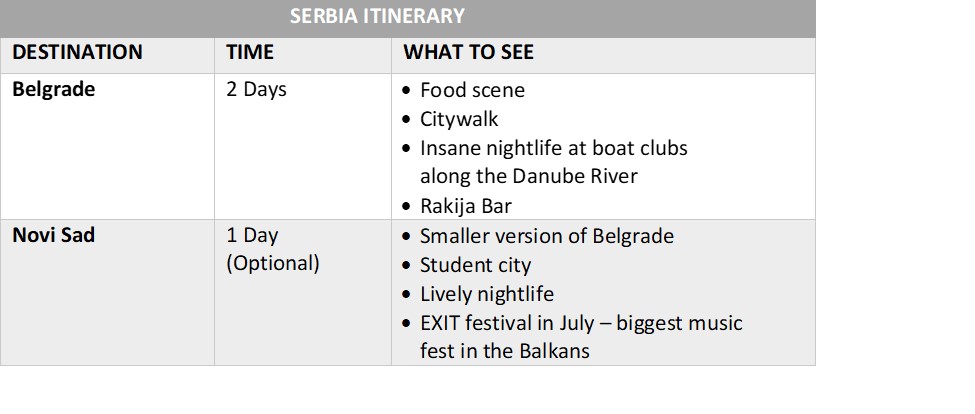
SERBIA TRAVEL INFO
- Insane Nightlife
- Deep History
- Experiencing a Slavic country that remains very true to its culture, unbent by tourism and other invaders
TIME NEEDED: 2 Days
- Ćevapi
- Karađorđeva šnicla
- Punjena Paprika
- Čvarci
VISA: Serbia is not part of the Schengen zone and offers a free 90-day visa for most visitors
- Hostel: $12/night
- Budget breakfast: $1
- Diner or Café Meal: $5
- Coffee: $1.50
- Beer: $1.50
- Inter-city Train: $4.50
- $60 for budget travelers staying in budget hotels
CONNECTIVITY: SIM Card from VIP, Telenor, or MTS for best 3G connectivity
BELGRADE, SERBIA
Belgrade has a rich history, ranging from Roman times to the Ottoman occupation and Serbian Christianization when Serbs converted to Orthodox Christianity in order to counter moves by Catholic clergymen coming from Rome. It was later captured by Turks in 1459, conquered briefly by Habsburgs in 1688, taken by Austrians in 1717–39 during the Great Turkish War, when it was known as “Belgrad” (Turkish: “Novo Brdo”), and liberated by the Serbian army in 1876 during the Serbian–Ottoman War of 1876–78.
Belgrade was also the capital of several Yugoslav states until the dissolution of the former Yugoslavia in 1992. Belgrade is still the capital and largest city of Serbia. It is the only major Serbian city with a population above one million.
- Do the free Belgrade walking tour, hosted by Hostel Hedonism
- Visit the Belgrade Fortress and hang out at the Park in front of it
- Visit old town (Zaman)
- Visit Sajmiste (remnants of a concentration camp)
- Walk Belgrade’s “Stari Grad” (Old Town), seeing the main walking
- The main pedestrian walk of Kneza Mihaila and plenty of places to eat, drink, and people watch
- Visit Republic Square, at the end of Kneza Mihaila
- The Belgrade Fortress, which has never been overtaken
- Kalemegdan Park surrounding the fortress, which includes the military museum and a zoo
- Walkthrough Skadarjila, Belgrade’s most stylish and bohemian neighborhood
- Enjoy the never-ending nightlife at the riverfront bars and clubs
- Visit Zeleni Vanac farmers market
- Visit the Nikola Tesla Museum
- Visit the neighbors of Zemun and Novi Beograd for a taste of what local life is like outside of the city center.
- Noteworthy landmarks to see: National Assembly, Church of St Mark, Church of St Sava
- Belgrade is the largest city in the Balkans
- The Belgrade fortress has never been captured by a rival
TIME NEEDED: 1-2 Days
ESSENTIAL FOOD, DRINK, AND WHERE TO EAT
- Fabrika (Restaurant)
- Leila Records (Radio-Televizija Beograd) – A café, bar, and record located a 10 minutes walk from the tourist strip but authentically (hipster) Serbian.
- Go to new Belgrade or Zamun for food
- Cafeteria (coffee bar in tourist center)
- Fabrika Restaurant
BARS AND NIGHTLIFE
- Go to Passenger Café (have a Kas beer) next to Hedonism Hostel
- Rakia Bar – The name says it all!
- Splavoli (floating clubs built into houseboats on the Rivershore)
- Drugstore (Warehouse District – Bus 16), Old factory clubs complex
GETTING AROUND: Most of the parts of Belgrade you’ll want to see are situated in the downtown and historic areas, so you’ll be able to explore the entire city on foot
- Bongo Hostel
- Hostel Hedonism
- Take the train (11 hours) or fly back to Podgorica, Montenegro and continue on the Balkans backpacking route.
Novi Sad is the second-largest city in Serbia. It’s known for its significant role at the end of World War I, when it was occupied by Serbian troops and became an important anti-Bolshevik base. This great deed earned it a reputation as a Christian bastion that turned out to be undefendable against merciless Ottoman forces.
The dynamic atmosphere attracts many visitors and workers from abroad, who come to experience this Mediterranean Balkans feel during their Balkans tours. Novi Sad is also famous for its thriving art scene as well as the annual jazz festival attracting celebrities and musicians from around the world every October.
As one of the youngest European capitals, Novi Sad’s restaurants, bars, galleries and concert halls all reflect its cultural diversity, which in turn gives the city an alluring nightlife that is often described as unique.
Novi Sad’s strategic position on the Danube River makes it a natural hub for inland waterway transport, and there are good road connections to all major cities around the Balkans.
- Smaller version of Belgrade
- Student city
- Lively nightlife
- EXIT festival in July – biggest music fest in the Balkans
WHAT TO DO IN NOVI SAD
- Visit the Petrovaradin Fortress
- Walk Dunavska pedestrian street
- Enjoy peace and quiet in green Danube park
- Visit the Museum of Vojvodina which documents 8,000 years of history in the region
- Enjoy the architecture: Name of Mary Church, Novi Sad Synagogue, Vladičanski Dvor (the Bishop’s Palace), St. George’s Cathedral
- Enjoy Strand, the sandy beach on the shore of the Danube
- Visit the Matica Srpska Gallery housing 7,000+ pieces of Serbian art from 1500 to present
- Visit Fruška Gora 30 minutes from town, a National Park of vineyards, pastures, and woodlands that was the shores of an island in the Pannonian Sea 90 million years ago
- Drive 35 minutes away to the vineyard laden small town of Sremski Karlovci
TIME NEEDED: 1 day
MONTENEGRO (HIGHLIGHT OF THE BALKANS)
The southernmost fjords in Europe tower above pristine, beautiful waterways and castles
Montenegro is a small yet intensely beautiful country dominated by the southernmost fjords in Europe, waterways, and towering mountains with centuries-old, medieval-style cities dotting in between. Montenegro’s views and stories feel unreal, whether walking a cobblestone road in the afternoon, taking a cheap boat tour through the waterways with the captain narrating the hidden history, or hiking to a monastery.
For many travelers, Montenegro is the highlight of their Balkan itinerary.
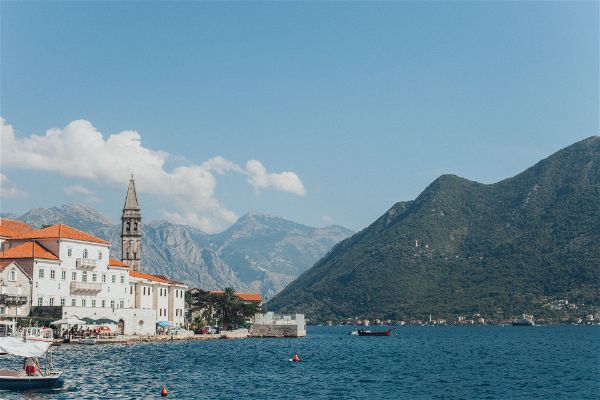
You’ll find the popular sites, Kotor and Budva, frequented by cruise ships and locals (Croatians and Serbians). Montenegro delivers all of the enjoyment of Croatia at about 1/3 the price.
MONTENEGRO ITINERARY
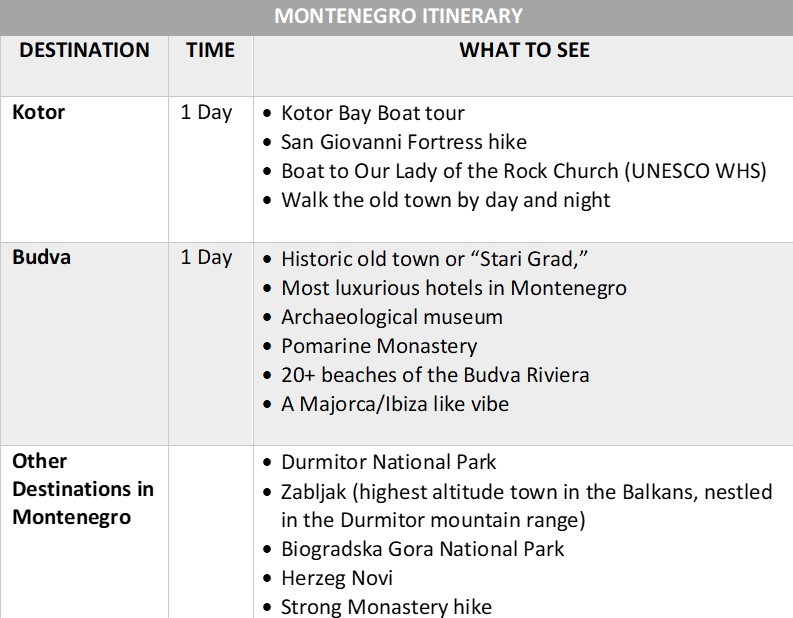
MONTENEGRO TRAVEL INFO
TIME NEEDED: 2 to 3 days for the essentials
- Moussaka (in general)
- Musaka od Ketola

GETTING TO MONTENEGRO
- International travelers coming from outside the Balkans will need to fly into Dubrovnik and then bus to their destination in Montenegro.
- No matter where you come to Montenegro from (within the Balkans), traveling by bus is your best bet.
- From Dubrovnik to Kotor, take a 3-hour bus ($10) .
- From Albania, bus from Skoder (3 hours) or Tirana (6 hours).
- From Mostar, Bosnia, or Sarajevo, taking the bus will be your best option.
- From Belgrade, take the train from Belgrade to Podgorica, and hop a bus from Podgorica to your next destination in Montenegro
VISA: Montenegro is not part of the Schengen zone, and a free 90-day visa is offered on arrival
CONNECTIVITY: Telenor SIM Card best for 3G access countrywide
- Hostel: $12/day
- Transportation: $7 between cities, most cities are walkable and need no transport
- Tours: $35 for Kotor Bay and Lady of the Rocks Tour
- $75/night for budget travelers option for hotels
KOTOR, MONTENEGRO
Kotor is one of the most picturesque cities in Montenegro and a popular destination to visit for people all over the Balkans and beyond!. It’s located on a dramatic bay where the Adriatic crashes into towering limestone walls, forming cliffs and caves. Kotor is home to UNESCO World Heritage Site Old Town, which begins at the foot of Stari Grad (Old Town) and ends at Lovrjenac Rock in the center of the bay, and is considered one of the most beautiful places along the Adriatic Coast. Nearby seaside villages include Tivat, Budva, and Sveti Stefan. With its beautiful beaches, magnificent fortresses and interesting history, Kotor is perfect for travelers of all ages.
Roman Emperor Augustus spent time in Kotor in the 3rd century BC and praised it as a “city defended by strong walls” back then.
If you are planning a Balkans itinerary, be sure to put Kotor on your list. The beauty of this coastal town, as well as its historical significance, will not disappoint.
HIGHLIGHTS (BLURB)
- Kotor Bay Boat Tour
- Visit Our Lady of the Rock Church (UNESCO Site)
- The Kotor Bay Boat tour (€35) is a must-do. 3 hours on a boat spent cruising the crystal clear, blue waters up to the border with Croatia, visiting some interesting sites in between (includes lady of the rock church, underwater tunnel)
- Beaches abound around Kotor , walking distance with water so warm and calm. I went for midnight, moonlit swims every night in Kotor.
- Two fishermen found a picture of the Virgin Mary on a rock in the middle of the water. It was gone the next day but reappeared a week later. The locals decided to build a church on the rock but needed to build an island first. For 100 years, sailors in the bay would drop small rocks from their boats each time they went out, and the town sank enemy ships over the rocks to build the island. Today, the church and the island are UNESCO world heritage sites.
- Old Town and the Castle: The old town is an ancient, walled complex and castle that crawls up the steep mountain behind the city. This complex houses most of the nightlife in Kotor and caters to partiers and backpacker life.
TIME NEEDED: 1 to 2 days for the essentials
GETTING THERE: The destinations in Montenegro are close together, so, anywhere in Montenegro you go, travel by bus. Rome2Rio will be your best tool for planning bus travel, but be smart and book at the train station beforehand.
GETTING AROUND: Kotor is a small and beautiful town that is tightly packed and very walkable. Plan on just walking to get anywhere you’d like to go.
WHERE TO SLEEP IN KOTOR
- Hostel 4 U Montenegro : A hostel on the beach and an anomaly. When I stayed, they had 2000+ reviews and a rating of 9.9 out of 10. On arrival, you won’t check-in. Instead, you’ll be handed a shot of homemade Rakia.
- Old Town Hostel
- Use www.getbybus.com to find your bus out
LOGISTICS VISA: Montenegro is not part of the Schengen zone, and a free 90-day visa is offered on arrival
BUDGET/PRICES: (1 NIGHT ACCOMMODATION, 1 MEAL, 1 BEER)
NOTES : Next to the old town is Kotor’s only shopping complex with a grocery store and anything else you’ll need
BUDVA, MONTENEGRO
Budva is a coastal town with great nightlife and vibrant atmosphere, long sandy beaches, beautiful residences, hotels and hostels. Its off-season city is charming as well – not too big yet numerous things to see and do. The city’s old town centers around its signature pedestrian street, which is the center of activity for visitors, lined with shops, restaurants, bars, and cafes. The Old Town is bordered by the site of a 14th-century Franciscan monastery on one side and a 17th-century Orthodox church on another. A walk through this picturesque area also gives a breathtaking view of mountainside villages and the shores leading up to the Adriatic Sea.
- Soak up the sun on the Budva Riviera
- Walk the Budva Old Town
- Visit the Cathedral of Saint Stephen
- Sail the bay and view Kotor fjord
GETTING AROUND: Just like Kotor, Budva is tightly packed and walkable, so plan out using your feet to get around for the best experience
Undiscovered and packed with experience: the Albanian Alps and the Albanian Riviera are Balkan highlights
Albania is one of the highlights of the Balkans – “young,” undiscovered, and filled with some of the best beaches (the same coastline as you’ll find on the Greek Riviera) and Alpine views in all of Europe, at a travel price that is easily the lowest in the Balkans and Europe.
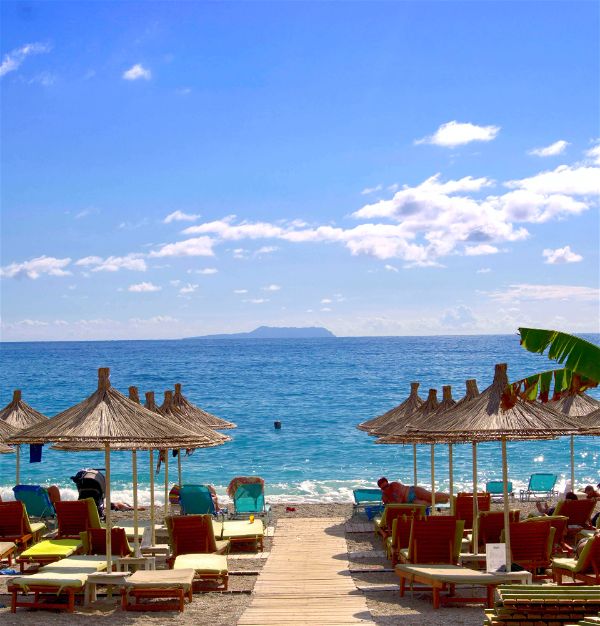
Albania opened up to the west and abandoned communism much later than its neighbors, leaving Albania with a very young and “new” and somewhat adventurous feel as a country. Though traveling through Albania can be slightly more difficult than its neighbors, the natural beauty you get in return makes Albania a highlight of the region thanks to two things – the Albanian Riviera and the Albanian Alps. As you travel through this country, you will experience the highs of travel and the calamity of “adventure travel.” Some parts will feel like the Greek isles and riviera or Alps of other countries, while other places will feel as chaotic as urban India – in all situations, though, the experience is exquisite and worth the trip.
The Albanian Riviera is the coastline shared with Croatia (to the north), but more interestingly, it is shared with Greece to the south. This is the same immaculate beaches and coastline that would cost 5x as much to travel in Greece, but (in Albania) you experience it with a more authentic, less touristy feel, and without the crowds.
The Albanian Alps are tucked just across the Albania-Montenegro border, near the Albanian towns of Theti, the Valbona River Valley and deliver sights as amazing as the Swiss Alps and Dolomites, surrounded by charming rural towns, yet just a few hours drive from warm beaches. All of this is still under traveled, undiscovered, and perfect for budget travels.

INTERESTING FACTS ABOUT ALBANIA
- Albania was the first atheist country in the world in 1967
- The clock tower in Tirana has been rebuilt several times because, at the start of wars, it was usually the first thing destroyed, and after wars, it was usually the first thing rebuilt
- Albania has over 170,000 bunkers strewn throughout the country
- Albania is the international name based on the first tribe that was found here.
ALBANIA ITINERARY
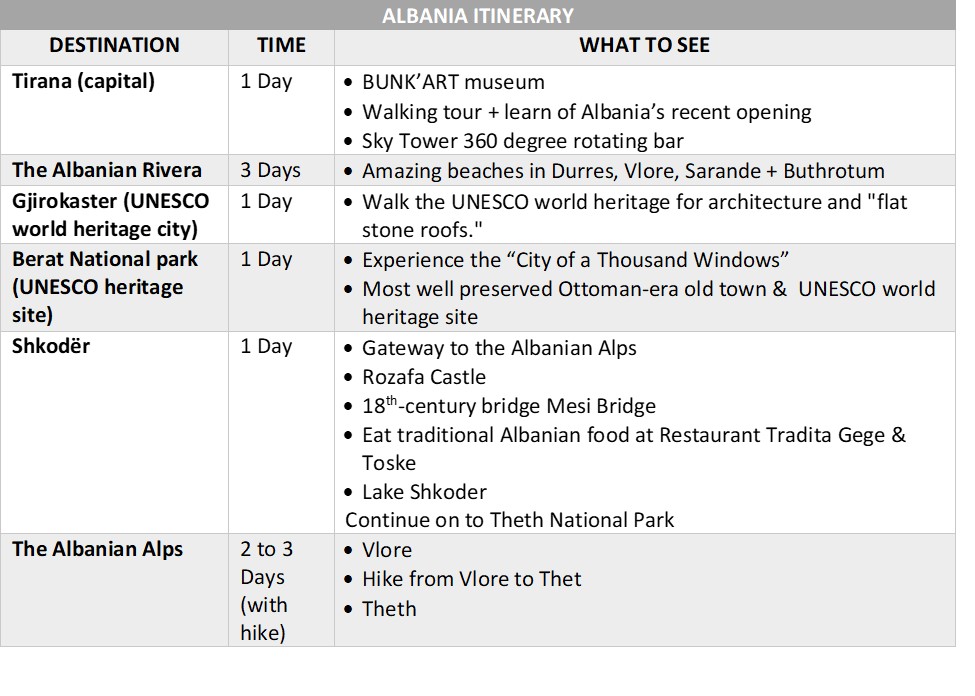
Consider Albania route –> Tirana –> Shkoder –> Albanian Alps –> Albanian Riviera (Vlore, Sarande, Himare) –> Berat –> Gjirokaster –> Tirana to do the adventurously strenuous experiences (trekking) first, and end the trip on the beachy riviera
Or reverse the route if you would prefer to get adventurous first and then end on the beach.
HIGHLIGHTS ALBANIA
- Tirana (capital) and learning of the country’s history
- The Albanian Riviera and exquisite beaches for insanely cheap
- Sarandë (Best coastal destination)
- Rough camping on the beaches of Albania
- Shkodër
- Berat and Berat National park (UNESCO heritage site)
ESSENTIAL FOOD & DRINK IN ALBANIA
- Byrek: Savory pastry
- The Mediterranean Staples: Olives, cheeses, fresh fruits, fresh vegetables, baklava, byrek
- Stuffed Peppers
- Fried Eggplant
WHEN TO VISIT: Shoulder seasons of April to June and September to October are best, with great temperatures and thin crowds. July and August are great, too but expect heavier crowds.
GETTING THERE: From within the Balkans, international busses connect to Tirana from Montenegro, Kosova, Greece, and Macedonia. From outside of those countries, expect to fly in. Momondo is your best bet for finding cheap flights.
GETTING AROUND: Albania is small and easy to get around. You can travel from north to south in a single day, all via public transport (no need to rent a car). Fulgoni and busses are your best options for travel.
Fulgoni are shuttle buses or minivans that run between cities in Albania. They’re accessible and cheap but often only leave when full. To find them, it is best to ask your hostel or hotel where to find the appropriate one for your next destination.
Long-distance busses are another great option, more reliable, easier to book, and my preferred option.
If you are pressed for time and don’t want to waste time sorting transport, consider a tour from G Adventures or Intrepid Travel.
MOVING ON: From Albania, take a cheap flight into Bulgaria (Sofia and Bansko) for great food adventures, a Bohemian café scene, low-key yet engaging nightlife, and some great day hikes.
VISA: 90 days free with no visa required for citizens of EU countries and 59 other countries, including the US, Australia, Canada, and the United Kingdom ( Source )
ALBANIAN BACKPACKING BUDGET/PRICES: Albania is the cheapest country to travel in the Balkans
- $35 per day total
- Hostel: $11/night
- Good meal: $5
- Transport: $75 to $100 for bussing the entire loop of Tirana to the Riviera to the Alps
WIFI AND CONNECTIVITY:
- Vodafone SIM for 3G is best, also Eagle Mobile, Telekom
- Larger, chain cafes will have wifi, don’t expect strong wifi in small cafes
RECOMMENDED TOURS: (G Adventures, Intrepid, Contiki)
TRAVEL INSURANCE: Albania is adventurous enough that I recommend travel insurance, and Safetywing and World Nomads both suffice
Tirana is the Albanian capital and full of history in Tirana, dating back to about 3000 BC. Tirana was once the crown jewel of the Balkans and was considered Europe’s newest and most modern city. But the Balkans lost a lot of its charm following World War 1 which destroyed major portions of the Balkans, including Tirana and many other cities in Albania.
After the war, a communist government was established, and Albania became a communist state, isolating itself from not but the west, but even China, the Soviet Union, and neighboring Yugoslavian countries.
In 1992, Albanians voted to end communism and instead embrace democracy. Since then, Albanian has been gradually reopening and recovering from decades of isolation.
Tirana is the perfect place to learn about, experience, and absorb this history from walk tours, wherein guides share the history that they lived through, museums, and daily life that has eery remnants of a time passed.
- The City Square: Has a plant from every region of Albania and has 100+ small fountains, so the square stays cool in summer.
- The National Museum located next to the square
- A Free Walking Tour for a firsthand account of Albania’s history
- Block Ware (former place of the elite – now a place to go out)
- Sky Bar – a bar that rotates completely every hour, giving a 360-degree view of the city
- The Bunker Museum
- Visit the Bunk’Art 2 museum: A nuclear bunker turned Albanian dictatorship history museum.
- Take a free walking tour to discover the history
- Visit the National Museum
- Visit Skanderberg Square
- View Et’hem Bej Mosque in the Square
- Cable car up to Dajti Mountain for sunset after bussing to Daytime National Park for a panoramic view of Tirana
- Visit Tiranas New Bazar for food and people watching.
RECOMMENDED RESTAURANTS IN TIRANA
- Oda Restaurant
- Sofra Beratase Restaurant
- Head to Himare, on the Albanian Riviera
- By bus from the south bus station (1000 Leke) at 5:45, 6:15, 1:00pm, 6:00pm
- From center to bus station ~700 Leke
RECOMMENDED TOURS
- Any free walking tour
- The Bunk’Art Tour
The gateway to the Albanian Alps and an ancient city that was home to Illyrian tribes that ruled Albania, Kosovo, Montenegro, Croatia, and Bosnia and Herzegovina. Later, this city was ruled by the Serbs, Romans, Byzantines and Ottomans, and the remnants of these cultures still remain today.
A prep town before heading into Theth and the Albanian Alps. One of the oldest cities in the Balkans.
When not prepping gear and planning transport for the Theth to Valbona hike, walk the city streets to absorb the vibe. The main street (G’juhadol), the shopping street (Kole Idromeno) are great places to walk through.
- Hike up to Rozafa Castle
- Prep for the Theth to Valbona hike (food and equipment are best gathered here)
TIME NEEDED: 1 Night
SHKODER LOGISTICS NOTES
- Plan on going to the SPAR Market in town to stock up on everything you’ll need for the hike
- Bring enough cash for your time in the Alps because there is no ATM in Shkodra.
- Transport to Theth will be best arranged through your hostel or hotel, including transport back from Valbona.
THE ALBANIAN ALPS
The Albanian Alps is a high-altitude mountain range in southern Albania, with the highest peak, Mount Korab towering at 2,764m above sea level. The range spans 100km from north to south and rivals the beauty of the alpine regions elsewhere in Europe, making for the same amazing outdoor experience at a fraction of the price and with a fraction of the crowds.
You already know Albania is already a country that has maintained its beauty with charming rural villages untouched natural landscapes. A relatively small Balkans country, to begin with, having an area of only 28,750 km2, the Albanian Alps continue to be an unexplored gem tucked in the northeast corner of Albania. The Albanian Alps stand as a national park immaculate and pristine trekking and hiking by summer and international ski resorts to explore by winter. Throughout your wanderings here, you’ll find scenic views of snowy peaks surrounded by green pine forests as backdrops to crystal blue watering holes and waterfalls. Tourists choosing to hike and make the most of their time in the region here, around Theth and Valbona, can choose from different levels of difficulty in treks, from easy to difficult, making the adventures here suitable for everyone.
The Albanian Alps offer many activities beyond just hiking, such as sightseeing, kayaking, horse trekking, and skiing. This destination is a perfect escape where you will get to travel throughout the Balkans but have the feeling that you are far away from civilization.
An Alpine Mountain town with hiking as its main draw, and that’s plenty.
- The Theth to Valbona hike through the Albanian Alps (7 hours)
- Hike the trail to Danielle (5 hours)
- Hike to the Blue Eye (7 hours) + Grunas Waterfall on the route
TIME NEEDED: 3 Days
The destination city of an amazing, 7-hour one-way hike from Theta to Valbona. You will complete the hike with a walk through the town with a beautiful view on both sides, ending with dinner at your guesthouse.
Be sure to go out after sunset and take in the night sky. Then rest up and prepare to go back to Shkodra the following day.
- Arrange transport back to Shkodra through your guesthouse for the following day.
- The travel back will require a furgon from Valbona to Fierce, a ferry across Loman Lake to Koman, and another Furlong from Koman to Shkodra.
A central town on the Albanian Riviera surrounded by beautiful beaches and a great base for comfortably exploring as many as your trip allows.
- Gjipe Beach (accessible by kayak)
- Jala Beach (accessible by kayak from Himara)
- Filikuri Beach (accessible by rented kayak)
- Rent a kayak and explore the coastline by day, visit the beaches and coves that dot the shoreline.
RECOMMENDED RESTAURANTS & ESSENTIAL FOOD & DRINK
- Sunset Restorat Bar (more for sunset than the food)
UNESCO World Heritage site and city of 1000 windows and home to Ottoman era homes and fortresses on the route to the Albanian beaches
- Berat Castle
- Holy Trinity church, and Byzantine church from the 13th century
- Walk the Mangalem Quarter (home to Muslims) and Gorica Quarter (home to Christians)
- Make the hour-long hike up the hill behind the Gorica quarter for sunset
- Walk Bulevardi Republika just after sunset to experience “xhiro hours” when friends and family come out to walk and socialize
- Two buses daily run from Berat to Gjirokaster from the Berat Bus Terminal, one at 8 am and the second at 2 pm for ~200 LEK. The ride will be ~3 hours.
GJIROKASTER
A UNESCO world heritage site known as the “Stone City of a Thousand Steps.” One of the Balkans’ oldest cities, Gjirokaster, is worth a visit for its architecture, ancient ruins, and abundant Ottoman-era houses.
WHAT TO DO AND SEE IN GJIROKASTER
- Gjirokaster Castle, a beautiful Ottoman-era fortress sitting atop a hill
- Gjirokaster Museum
- Explore the hundreds of bunkers in Gjirokaster
- Gjirokaster Old Bazar
- Do the Free Walking Tour hosted by Stone City Hostel if staying there
- Hike to the Ottoman era Ali Pasha Bridge
WHERE TO STAY
- Stone Coty Hostel
Calm, quiet, and potent for foodies and lovers of pub culture
Quaint, calm, and charming in a peaceful way, Bulgaria is a wonderfully relaxed destination in the Balkans that is less about natural beauty, architecture, and nightlife than its neighbors and more about food and absorbing culture by osmosis. Additionally, you will constantly be surprised by the history, culture, and cuisine of Bulgaria that you’d never even heard of. At night, the restaurants and nightlife make Sofia and Bansko places that a nomad could hang their hat.
Food in Sofia, Bulgaria is surprisingly amazing ; a strong locavore food scene encourages restaurants to commonly experiment with the foods of the region in a gourmet way. The yogurt you commonly eat started here. My favorite meal in Bulgaria was local wild boar that fed on a particular berry in the forest, served with greens and salad foraged from the same forest, paired with a wine made from the same plucked berry from that forest, and finished with ice cream made from the same berry – and this was a standard meal for my entire time in Sofia for cheaper than an average meal in a western European country.
Bulgaria’s history can be explored with day trips (to Plovdiv) and walking tours wherein you’ll discover ruins and remnants from the Ottoman Empire’s former footprint, as well as how the Bulgarians protested the deportation of Bulgaria’s Jews to concentration camps and came up with a scheme to save the Jews in Bulgaria.
Bulgaria’s pub and local bar is an adventure on its own. Whereas Croatia’s nightlife rivals Barcelona’s, Bulgaria’s dark pubs seem reminiscent of Game of Thrones pubs. As contrasted and low-key as the vibe is, the locals are welcoming, and a few beers on the town in Sofia can be a great time.
All in all, Bulgaria is a less exciting destination, but calmly pleasing in many ways and a great way to end a trip through the Balkans.
BULGARIA ITINERARY

- Shopska Salad
- Tarator Soup
- Shkembe Chorba
- Chushka Biurek (Stuffed Peppers)
- Madradjisko (Egg & Cheese in Clay Pot)
- Palačinka (Bulgarian Pancakes)
BULGARIAN VISA: You can travel in Bulgaria for up to 90 days every 180 days. Visits to Bulgaria do not count towards your 90-day visa-free limit in the Schengen area.
CONNECTIVITY and SIM Cards: Telenor, Vivacom, A1 Bulgaria
- Accommodation: $11/night
- Transportation: $10 between cities, $17 to taxi across the entire city
- Attractions: $10
- Accommodation: $25/night
- Food: $25/day
- Attractions: $10
Sofia, the capital and largest city of Bulgaria, is a fascinating blend of European and Slavic styles with architecture that encompasses many different periods. The Balkans itinerary would be incomplete without at least a short stopover in Sofia.
This city may seem dull on the surface, but it is actually cultured, entertaining, and has a heavy hipster influence beneath the surface.
A strong gourmet and locavore food scene at insanely low prices (as expected in the Balkans), a great pub and dive bar scene, tons of kitsch coffee shops, and more add up to a destination that doesn’t quite blow your mind but is a perfectly enjoyable and relaxing stopover for backpackers, digital nomads, and anyone who can appreciate artsy and “low key.”
WHAT TO DO IN SOFIA
- Food Tour with Balkan Bites
- Free walking tour with Sofia free tours
- Go on a graffiti tour or simply wander the town and admire the street art
- 10 pm pub crawl every night from Hostel Mostel
- Consider day use of the spa and sauna at Central Hotel Sofia if you’ve been running too hard.
- Wander and explore the countless cafes as there’s a strong bohemian scene in this city
- Hike up Vitosha Mountain, just outside the city
- Visit “ The Red Flat ” for a peek into what life was like under communism
- Do the Seven Rila Lakes Hike, glacial likes high in the surrounding mountains
- Day trip outside the city to the colorful Rila Monastery
- Landmarks and architecture to see: Alexander Nevsky Cathedral
TIME NEEDED : 1 day for Sofia proper, 2 days including hikes
GETTING THERE:
- Fly in as Sofia is one of Europe’s most affordable cities to fly into. I paid $32 for my flight in and $1.50 to get from the airport to my hostel.
WHERE TO STAY:
- Hostel Mostel: At $11, I got a dorm bed, made tons of friends, and all-you-can-eat breakfast and free dinner. The crowd here was the best part.
- Consider heading to Turkey as a train ticket to Istanbul is only $29.
- Balkan Bites Walking Tour
- Sofia Free Walking Tour
- Free Sofia Graffiti Tour (or just wander on your own)
Bansko is best known as a budget-friendly ski location and mountain town for digital nomads. If you’re traveling to Bulgaria in the winter, stop off for some snowboarding and skiing. Outside of winter, your trip to Bansko will be filled with hikes and day trips to nearby cities.
If you’re on the long trail, backpacking for months, Bansko is worth stopping at for some outdoorsy relaxation. If your schedule is tight, skip this destination and allocate more time for other Balkan cities.
WHAT TO DO IN BANSKO
- Ski-in the wintertime
- Hike to Vihren Peak
- Rila Monastery Day Trip
- Pirin National Park Day Trip
TIME NEEDED: 1 Day + 1 day for each of your chosen hikes/day trips
RESTAURANTS
- Hadjidragana Tavern
- Skaptoburger
- Salted Cafe
ALTERNATE DESTINATION: THE BULGARIAN BLACK COAST
City 1: Varna – The Marine Capital of Bulgaria (1 Day)
- The Retro Museum
- The Stone Forest
- Cathedral of the Assumption of the Virgin
- The Butterfly House
City2: Sunny Beach – A sunny vacation spot filled with nightlife (1 Day)
- Erma Turkish Bath
- Church of Saint Sophia
THE ADDITIONAL BALKANS DESTINATIONS
Kosovo (optional).
Honestly, many other countries in the Balkans have more to offer, but the act of visiting this formerly war-torn country will help you open your mind and shed stereotypes that will enhance your travels down the road. Though Kosovo lacks the sights to see that its neighbors do, Kosovo is very safe to travel to, and visiting can open your mind.
If you are traveling the region for less than three weeks, skip Kosovo and save the travel days for another highlight destination (Albania, Montenegro, or Croatia).
If you are backpacking in the Balkans and have plenty of time, stop through Pristina, Kosovo and walk the town, and be sure to read the history of Kosovo to truly appreciate how far this country has come.
KOSOVO ITINERARY
WHAT TO DO IN PRISTINA
- Take the cathedral elevator up for a good vantage point of the new city
- Check out the statue of Bill Clinton
- Walking tour – 11 AM daily from the steps of the National (Library)?
- Walk down the main drag (??name and Mother Theresa road) in the evening to see normal life.
- National Museum
VISA: For most nationalities, no visa is necessary for up to 90 days
MACEDONIA (OPTIONAL)
With all of the other amazing sights to see in the Balkans, it is difficult to justify detouring to Macedonia instead of spending extra days in one of the country’s neighbors.
Skopje’s Bazar, reminiscent of Turkey, is topped by Little Istanbul (and Little Vienna) in Sarajevo, Bosnia. The countless statues in Skopje’s downtown are interesting but more reminiscent of Las Vegas than a Balkan backpacking adventure and are one-upped by the old walled cities in Croatia and Montenegro.
At the same time, Lake Ohrid’s, and Ohrid’s, beauty are topped by that of Kotor Bay in Montenegro and Lake Shkoder/Shkodra on the Montenegro /Albania border.
Plus, all of these other options above are a shorter distance to other worthwhile sites.
If you are traveling or backpacking the Balkans for less than three weeks, skip Macedonia and spend more time in the other, highlight locations.
If you are traveling the Balkans for more than three weeks and want to include Macedonia, do a quick layover in Skopje and add Ohrid and Lake Ohrid if you are enchanted enough.
MACEDONIA ITINERARY
- Poletti Peperki
VISA: Visas are not required for tourist or business trips of less than 90 days within a six-month period.
VISA INFO FOR THE BALKANS
General: For most borders in the Balkans, you can show up to the border and easily get a 90-day visa or a 90-day entry, visa-free as long as you have 6 months validity on your passport. Slovenia is the only Schengen zone country in the Balkans, sharing its 90 visa with the entire Schengen zone.
Country by Country Balkans Visa Information:
- Slovenia: Schengen Zone country meaning 90 days in a 180 day period, shared with all of the Schengen zone / EU countries
- Croatia: No visa is required for tourist visits less than 90 days – Croatia is not part of the Schengen zone
- Montenegro: Montenegro is not part of the Schengen zone, and a free 90 day visa is offered on arrival
- Bosnia & Herzegovina: Most nationalities can stay for 90 days free without a visa but need to have at least 6 months validity on their passport on arrival
- Serbia: Not part of the Schengen zone and offers a free 90-day visa for most visitors
- Albania: 90 days free with no visa required for citizens of EU countries and 59 other countries, including the US, Australia, Canada, and the United Kingdom
- Bulgaria: You can travel to Bulgaria for up to 90 days every 180 days. Visits to Bulgaria do not count towards your 90-day visa-free limit in the Schengen area. Bulgaria is an EU country but is not in the Schengen zone.
- Macedonia: Visas are not required for tourist or business trips of less than 90 days within a six-month period.
- Kosovo: For most nationalities, no visa is necessary for up to 90 days
CROSSING BORDERS IN THE BALKANS
Border crossings in the Balkans are fairly easy, for the most part. Just be sure to have at least 6 months validity on your passport.
The only border crossing difficult will happening attempting to travel from Kosovo into Serbia. You will have no issues traveling from Serbia into Kosovo, however, traveling from Kosovo to Serbia is forbidden and you will not be allowed through the border.
MONEY AND CURRENCIES ACROSS THE BALKANS
With the exception of Slovenia, Kosovo, Montenegro, and Greece, each country in the Balkans uses its own currency, so be sure to limit the amount of cash you convert to avoid losing too much on the exchange when you exit.
Better yet, aim to keep the bulk of your cash in Euros or US dollars and only exchange as necessary.
The respective currencies for each country in the Balkans are:
- Euros are the standard currency in Slovenia, Greece, Kosovo, Montenegro
- Croatia – Kunas/HRK
- Bosnia and Herzegovina – Bosnia Herzegovina convertible mark/KM –
- Serbia – Serbian Dinar
- Bulgaria – Bulgarian Lev
- România – Romanian Leu
- North Macedonia – Macedonian Denar
- Albania – Albanian Lek
You will receive the best exchange rate at ATMs, so avoid exchanging at money changers if all possible.
TRAVEL INSURANCE: DO YOU NEED IT IN THE BALKANS?
If you can’t afford travel insurance, you can’t afford to travel.
As often as this saying is repeated, it doesn’t make it any less true.
Despite the fact that most of the travel in the Balkans is slow-paced and far from danger, it is wise to pick up travel insurance just in case you get a stomach bug, have an unexpected accident, or fall victim to something related to the recent pandemic.
I normally recommend World Nomads for adventurous travel and high-risk travelers, thanks to World Nomads’ robust coverage.
However, the Balkans is low-risk enough that I recommend inexpensive (yet still reliable) Safetywing travel insurance, as that is the insurance I currently use and have had for the past two years. At ~$40 a month, you can’t afford not to.
GETTING TO THE BALKANS
Budapest Ferenc Liszt International Airport and Dubrovnik’s Čilipi Airport are the cheapest airports in the region with the most flight options per day.
If you are flying into the Balkans, where you should fly into depends on whether you plan to travel from south to north or north to south through the Balkans.
If you plan to travel from the north (Slovenia, northern Croatia) to the south, I recommend flying into Budapest’s international airport. Budapest will have the cheapest inbound international flights in the region.
If you plan to travel south to north, beginning in Albania, fly into Dubrovnik’s international airport (this will be the cheapest airport for inbound international flights in the south), then travel south into Albania, looping back up to Dubrovnik and Montenegro and continue your tour of the Balkans.
WHEN TO VISIT THE BALKANS
Anytime is a great time to visit the Balkans, but the shoulder season is by far the best season to visit the Balkans. Spring and fall, between April to June and September to October, are the shoulder seasons and the best times to visit the Balkans. If you can visit in either window, you’ll have warm waters and sunny skies, yet not too hot, while exploring mostly empty streets. Additionally, prices will ½ the normal tourist season (summertime) prices.
During the Balkans summer of July to September, you’ll have perfect beach weather with amazingly warm waters but plan on sharing the views and beaches with throngs of travelers. Plan on Dubrovnik, Hvar, and Budva to be exceptionally crowded. Also, plan on any of the old town destinations at sea level, such as Split, Dubrovnik, and Hvar, to be scorching hot on the pedestrian streets.
For more open-minded travelers, winter has appeal as well. Winter brings a cold and eerie calm to the Balkans with an equal amount of beauty. If you can brave the cold, you’ll have the cities to yourself. However, plan on the guesthouses, hostels, and hotels closing shortly after tourist/summer and being closed for the winter. You should book accommodation well in advance to avoid booking issues.
WHERE TO STAY IN THE BALKANS
Based on my experiences booking accommodations in the Balkans, both good and bad, I recommend the following booking guidelines
- Hostels & Boutique Hotels for Backpackers and Budget Couples
- Booking.Com for Stays 3 Days or Shorter
- Airbnb for Stays Longer Than 4 Days Or Longer
SOLO TRAVELERS, BACKPACKERS, AND BUDGET COUPLES: OPT FOR THE GREAT HOSTELS IN THE BALKANS
The Balkans are extremely developed, just as well developed as Western Europe, so you will have plenty of accommodation options to fit your tastes or budget.
For solo travelers and backpackers (especially if on a budget), I highly recommend hostels. The hostel standard in the Balkans, especially in Croatia and Montenegro, is very good while being very cheap. For instance, Hostel 4U in Kotor Montenegro is about $12 per night, has maintained a well-deserved 9.8 or 9.9 rating for the last 5 years, and is literally situated on a beach. The beds are comfy, the dorms are clean, and the building seems more similar to a chalet from Game of Thrones than a hostel. Best of all, this is the general standard throughout the Balkans – with the exception of Albania and Kosovo.
For couples and more private budget travelers who still want to be social, private rooms in hostels throughout the Balkans deliver a great balance between the social and the isolated feel of hotels while being friendlier on the pocket.
Bottom Line: For solo travelers, backpackers, and budget travelers, hostels are a great bet. I recommend booking on Hostelword as the site has most of the hostels (or at least the good ones) available on the site.
TRAVELERS STAYING FOR 3 DAYS OR LESS: BOOK VIA BOOKING.COM
If you’re staying less than four days and not interested in hostels, you’ll find the best value for your money and selection on Booking.com. Simple as that.
TRAVELERS STAYING FOR 4 DAYS OR LONGER: AIRBNB
If you’re staying for four days or longer, I recommend booking via AirBnB for a more cost-efficient experience and to better experience what life is truly like off the tourist circuit. While hotels (on Booking.com) tend to be in touristy areas, AirBnB’s and hostels are more often in real neighborhoods where people actually live. As a result, you’ll naturally be exposed to the restaurants, bars, and experiences that locals frequent in their daily lives – which adds a whole new layer to your travels.
BALKANS TRAVEL BUDGET
The Balkans are the cheapest place in Europe to travel and one of the best places in the world in terms of “bang for buck”.

10 TIPS FOR TRAVELING THE BALKANS ON A BUDGET
- Book hostels . Hostels for your Balkans accommodations instead of booking hotels. Hostels in the Balkans can be as cheap as $10 to $15/night and often offer free breakfast too.
- Spend more time in fewer places. The longer you stay in a destination, the cheaper it gets, as room accommodation is cheaper by the week or month than by the day, you learn the great “local” restaurants with cheaper and better food, and you spend less money per week traveling between towns.
- Go in the shoulder season between April to May and September to October when the tourists are fewer, and everything (sites, accommodation, food) is as much as ½ high season prices.
- Sleep, eat and drink off the main street . Sleeping, eating, and drinking on the tourist thoroughfare, a couple of streets over, will cost you 25% to 50% more than walking an extra 5 minutes.
- Use “Trip Advisor Cheap Eats” to find the best food that fits your budget
- Pick destinations wisely – according to your budget and tastes. Croatia is amazing, but the most expensive in the Balkans. Albania delivers amazing beaches and outdoors for 25% of the Croatia coast.
- Bus everywhere as your primary mode of transportation. Flights are extremely inconvenient in the Balkans, and taxis are expensive and unnecessary. Checkout out the best list of Balkans bus and travel booking sites here .
- Travel carry-on only to save fees on flights traveling in and make life easier when transiting by bus – so you can keep your bags with you.
- Grab a beer and quick food to go, make friends, and eat in the park or on the water for a cheap night out or pregame, instead of burning money at a bar. The Balkans has a great tradition of gathering in parks and green spaces around sunset and some great parks to take advantage of.
ESSENTIALS FOR YOUR BALKANS PACKING LIST
You can get by with very little in terms of packing while you travel the Balkans. However there are a few items that are essential for a good experience and making the most of your opportunities in the Balkans.
- Sport sandals: Walkable, adventure-ready sports sandals such as Chacos or minimalist Xero Trails are perfect for the Balkans because so many experiences involve walking and hiking but are equally close to beaches. Whether you are walking Hvar to get to a beach or on a boat tour in Montenegro, you’ll appreciate having comfy sandals that are ready to get wet. Any of these seven great travel sandals will work as well.
- Walkable shoes: Many of the experiences in the Balkans will involve walking, whether on tour, looking at the architecture, or walking to catch a bus. Make sure you have comfortable shoes for walking to make it a 100% enjoyable experience. This mega list of travel shoes has plenty of options if you don’t have a solid pair of travel shoes.
- If you come in December or January or between April and June, be sure to bring a rain shell as those are the rainiest months in the Balkans. Outside of those months, it’s still smart to keep a waterproof layer in your backpack
- If you max out your Balkans experience, you will spend A LOT of time in swim trunks and shorts. Especially if you visit during summer or just outside of the window, you’ll be so hot that pants will be unbearable. Make the most of it by bringing at least 2 pairs of swim trunks, ideally that double as walk shorts too. I highly recommend the Outlier New Way shorts , as they’re as stylish as they are swim-ready and functional, but check out these 6 other shorts that are perfect for travel .
- In Croatia, Montenegro, and Albania, the best adventures are aquatic, whether on relaxing beaches, at waterfalls, or cliff diving. Do yourself a favor and bring a simple roll-top waterproof bag like this to keep your phone, passport, and headphones safe while you swim between boats. The bag takes up minimal space and pays HUGE dividends in function.
HOW TO GET AROUND THE BALKANS
Best options for transport through the Balkans (in order).
- SHORT FLIGHTS
Though there are international airports in Dubrovnik and the neighboring countries, flights between Balkan countries are fairly expensive – so don’t expect the budget airline deals of western Europe. Additionally, when you account for time and hassle spent checking bags, processing through security, and getting to and from the airport from in town, it takes just as long as a bus trip from anywhere to anywhere in the Balkans, but it’s 10x the price. To save time and money in the Balkans, don’t fly; just take the bus.
Best booking platforms for booking buses in the Balkans.
- General Buses in Balkans: Flixbus
- Montenegro – https://busticket4.me/EN
- Croatia – https://www.buscroatia.com/
- General Planning: Rome2Rio
For more info on transport in the Balkans, check out the Balkans section of this article How to Get Around while Traveling .
BALKANS TRAVEL FAQ
- Which Balkan country is cheapest?
- What countries are in “The Balkans”
- Will language be a problem in the Balkans
- How do you get around the Balkans?
- What is the best time to visit the Balkans?
- Where to start when backpacking the Balkans?
- What is it like crossing borders in the Balkans?
WHICH BALKAN COUNTRY IS CHEAPEST?
The cheapest country in the Balkans by far is Albania. Considering the country shares the same riviera as Greece and Croatia and accommodations and food are ¼ the price of the other two countries if you want a budget travel experience Albania is a no brainer.
At the same time, Montenegro is as expensive as Serbia and Bosnia; however, the value of the experience surpasses the cost. Montenegro has the southernmost fjords in Europe make the nature comparable to what you would see around Bergen, Norway, but at a fraction of Scandinavian prices. This makes Montenegro a high “value to money” option as well.
WHO IS BACKPACKING THE BALKANS BEST FOR
- Budget backpackers looking for a cheaper alternative to Europe
- Adventurous travelers, aiming to get off the beaten path to truly new destinations, like Albania, Kosovo, and changing destinations like Bosnia.
- Nature lovers that could spend days on end exploring beautiful lakes, alpine mountains, endless coastlines
- Partiers that find the all-night music and dance of Belgrade’s riverfront clubs and Hvars club island unusually alluring
- History lovers desiring to see old Roman cities and castles in pristine condition (like Diocletian’s palace in Split) or learn the “interesting” histories of the Balkans’ past struggles, like Albania, and Bosnia & Serbia
Note that though you can find food, parties, history, and peace & quiet in the Balkans, you can very easily fill a trip with one type of experience (i.e., quiet, nature) and fill a multiple months-long itinerary. If any of the above.
WHAT ARE THE BALKANS? WHAT COUNTRIES ARE IN “THE BALKANS”
The “Balkans” is the cluster of 11 countries situated in the Balkan peninsula, the name for the Balkan mountain range situated in Bulgaria.
The following 11 countries are regarded as the “Balkan states” that are mostly situated within the Balkan Peninsula.
- Bosnia and Herzegovina
- North Macedonia
Turkey is also partly situated in the Balkan peninsula. Though some people may not regard Turkey as a Balkan country from a cultural standpoint, Turkey is so amazing and so close that it should absolutely be part of your Balkan itinerary.
As you travel through the Balkans, you’ll notice that, with the exception of Greece, the countries and cultures are strikingly familiar while also being drastically different – especially Albania and Bosnia.
During your Balkan tour, I highly recommend adding Turkey to your itinerary because it’s so close, it’s so cheap, and offers such a fantastic travel experience.
WILL LANGUAGE BE A PROBLEM IN THE BALKANS
No, language will not be a problem in the Balkans. For every single destination on this itinerary, you will be able to easily navigate the experience in English.
WHERE TO START WHEN BACKPACKING THE BALKANS?
Ljublana, Slovenia or Dubrovnik, Croatia are your best options for starting your Balkans itinerary.
Ljublana as a start point offers you a very straight forward top to bottom itinerary. If you start in Slovenia, consider flying into Budapest and taking the train into Ljublana.
If you don’t want to start in the peace and calm of Slovenia, Dubrovnik is the other best option for starting. Dubrovnik has a large international airport and is central to every location in the Balkans, allowing you to do one large loop.
OTHER GREAT ARTICLES ABOUT BACKPACKING THE WORLD
- The 9 Best South America Backpacking Routes for 2 Weeks to 6 Months of Travel
- 5 Essential Routes for Backpacking the World and Visiting Every Continent
- The Balkan Walk: The Perfect Backpacking Itinerary for the Balkans
- 3 Months in Southeast Asia: A Perfect Plan for the the “Banana Pancake Trail”
- The Mini Backpacking Trails: 15 Itineraries Aroudn the World for 2 Weeks or Less
ABOUT THE AUTHOR
Carlos is a nomad, slow traveler, and writer dedicated to helping others live abroad and travel better by using his 7+ years of experience living abroad and background as a management consultant and financial advisor to help other nomad and expats plot better paths for an international lifestyle. Click here to learn more about Carlos's story.
- Bosnia and Herzegovina
North Macedonia
- One-Day & Half-Day Tours
- Multi-Day Tours
- Balkan Tours
- Pilgrimage and Religious Tours
- Culinary Tours
- Family Adventures Tours
- 🎉 Special Offers
- Private Transfers
Featured Balkan Tours
Balkan trip: a 13-day heritage and scenery – balkan experience, sofia's historic walking highlights tour, spiritual heritage of bulgaria: rila monastery & boyana church - bulgaria trips.

Today's Pick for You
Dubrovnik sunset kayaking adventure, discover your next adventure.
- One-Day & Half-Day Tours Quick trips to discover local highlights.
- Multi-Day Tours Extended journeys for deeper immersion.
- Balkan Tours Explore the vibrant diversity of the Balkans.
- Pilgrimage and Religious Tours Spiritual journeys to sacred destinations.
- Culinary Tours Savor the flavors of regional cuisines.
- Family Adventures Tours Fun-filled explorations for the whole family.
- Special Offers Exclusive travel deals.
- Private Transfers Convenient and comfortable transport options.
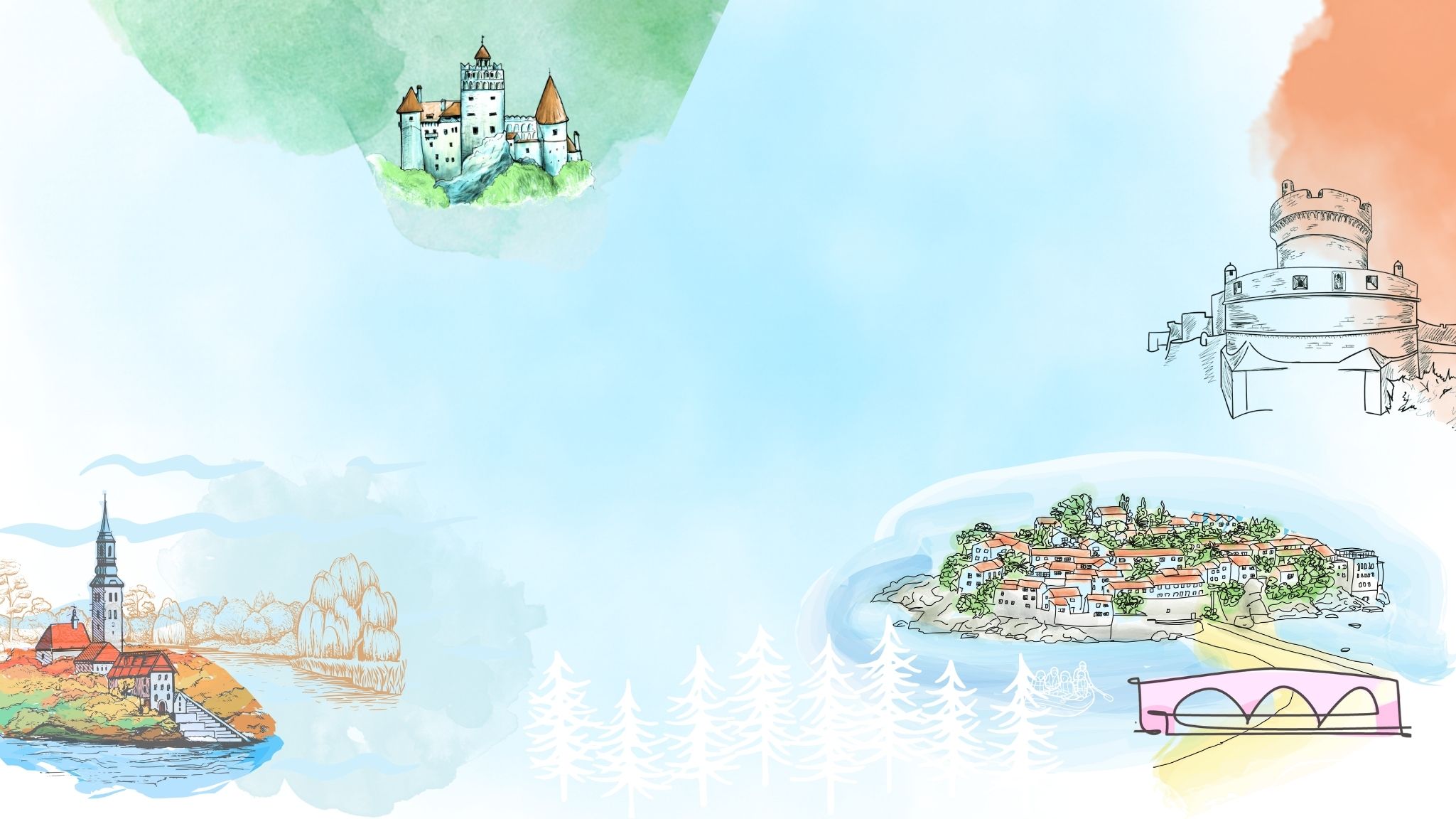
Uncover the Magic of the Balkans – Go on unforgettable Balkan trips
Unforgettable adventures await you on our Balkan tours! From Croatia’s beautiful landscapes to Bosnia and Herzegovina’s hidden gems and the natural wonders of North Macedonia, experience the rich culture of Serbia, the charm of Montenegro, and the history of Albania and Slovenia. Balkland offers you different Balkan tours where you will get to know the Balkans as it is. Rich in various tastes, natural landscapes, and the best hospitality!
“ The journey of a thousand miles begins with a single step „
Explore balkland tours and travel packages.
Explore our travel packages for a seamless and unforgettable experience. From detailed itineraries to helpful tips, we’ve got everything you need. Embark on a journey with Balkland, where each keyphrase guarantees extraordinary adventures in the heart of the Balkans.
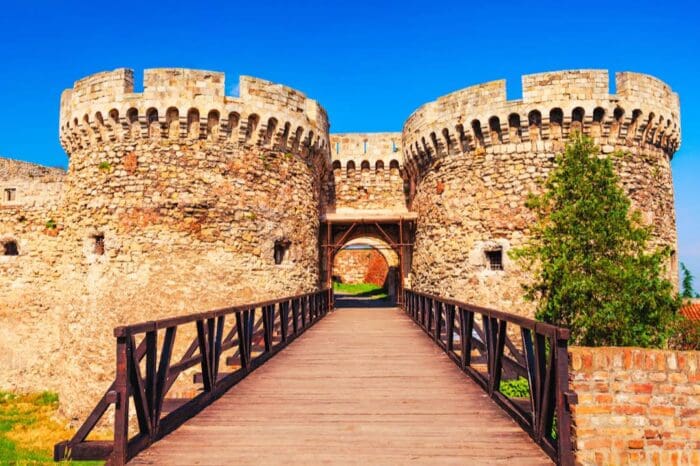
Explore Belgrade: Panoramic & Walking City Tour – Serbia Trips
Explore Belgrade's rich history and stunning architecture on our tour. See Kalemegdan, St. Sava Temple, and vibrant city squares.
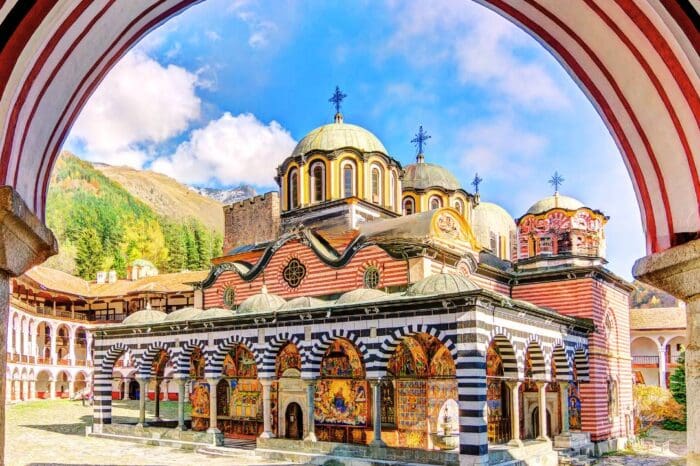
Spiritual Heritage of Bulgaria: Rila Monastery & Boyana Church – Bulgaria Trips
Explore Bulgaria's UNESCO treasures: Rila Monastery & Boyana Church. Immerse in history and spirituality on this unforgettable tour.

Montenegro in a Day: Lovćen Mountains to Cetinje Royal Towns | Balkland
Unveil Montenegro's gems: Lovćen's majesty and Cetinje's history in a tour blending nature's beauty with cultural richness.

Viscri, Sighisoara & Rupea: Transylvania’s Medieval Wonders Tour
Journey through Romania's medieval treasures: Viscri, Sighisoara, and Rupea, on our enchanting tour from Brasov.
Our Qualities
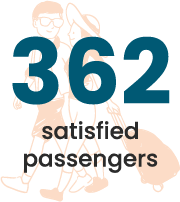
What does Balkland offer at Balkan trips?
Good organization.
A good road means a good organization. With our organization, you don’t have to worry about accommodation, food, transportation! We stand behind you as a dedicated companion on every Balkan trips!
We cover 10 Balkan countries
Balkland allows you to visit and feel the charms of 10 countries in the Balkans. Croatia, Serbia, Bosnia and Herzegovina, Albania, Montenegro, Slovenia, Romania, Kosovo, Bulgaria, and North Macedonia await you to visit their beautiful landscapes and taste their most delicious food!
Different types of travel throughout the Balkans
The Balkans is a landscape of possibilities! Embark on Balkan Tours with your friends, experience Family Adventures with your loved ones, or Balkan food on Culinary Tours.
Your Smart Travel Guide to Balkan Adventures
Experience the Best of the Balkans with our Blogs.

Postojna Cave: Journeying Through the Underground Paradise
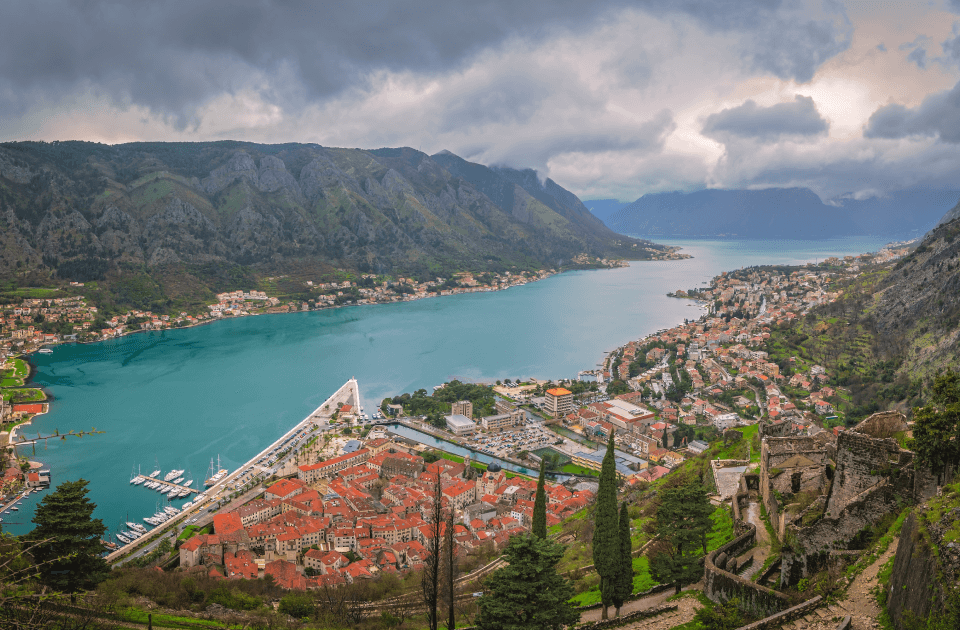
Kotor Montenegro – Home to the Adriatic’s Largest Bay
Kotor Montenegro - great bay, historic Old Town, and rich culture.

Plitvice Lakes National Park: An unforgettable experience for every season
Discover the magic of this UNESCO World Heritage Site.
Tour Balkan Countries With Balkland
Have you ever wanted to visit the unreal nature of the Balkans and try Balkan food rich in various flavors? With Balkland you can do just that! Our Balkan trips are unforgettable, diverse, and full of new adventures. Discover all our Balkan tours and pilgrim tours and choose the best one for you!
Why go on Balkan trips with Balkland?
With Balkland you always travel safely. We have provided transportation, hotels, and adventures throughout the Balkans for you, which are above all safe. The safety and security of our passengers is our priority!
Our Balkan trips are adapted to families, newlyweds, and corporate groups; with us, you can find tours that completely suit you!
Balkland was founded by foreign travelers and lovers of the Balkans, so every trip to the Balkans with us is diverse. Tour Balkan countries with us And you will experience all the beauties of the Balkans, from irresistible food to natural beauties.
Balkland FAQ
Is it safe to travel to the Balkans?
The Balkans are a very safe place to visit today. More than 30 years ago, the war that took place in the Balkans ended, and today the Balkans is one of the safer travel destinations.
Is it cheap to travel in the Balkans?
Yes. Compared to many Western European countries, traveling in the Balkans is often more budget-friendly, offering affordable accommodation, food, and transportation options.
Why is Balkan food popular?
Balkan cuisine is popular due to its rich flavors, diverse influences, and use of fresh, local ingredients. The combination of Mediterranean, Ottoman, and Slavic culinary traditions contributes to the unique and delicious dishes.
What is the most popular Balkan food?
Ćevapi, a type of grilled minced meat, is widely popular across the Balkans. Other favorites include Burek, a pastry with meat or cheese, and Ajvar, a roasted red pepper and eggplant spread.
Is the Balkans safe for solo female travelers?
Yes, many parts of the Balkans are safe for solo female travelers. All the locals are friendly and ready to help you if you get lost or need help. Since you are still in a foreign country, we recommend that you do not go out late at night alone and keep your personal belongings safe.
- Terms and Conditions
- Privacy Policy
- [email protected]

- Romania Tours
- Bulgaria Tours
- Bulgaria & Romania Tours
- Tour Add-Ons
- How It Works
- Testimonials
- COVID-19 & THE UKRAINE WAR

Custom Travel to The Balkans: Bulgaria & Romania Tours
Customized tour itinerary, licensed local tour, increased flexibility, safety and confidence, choose your travel destination to select from our current balkan tours.
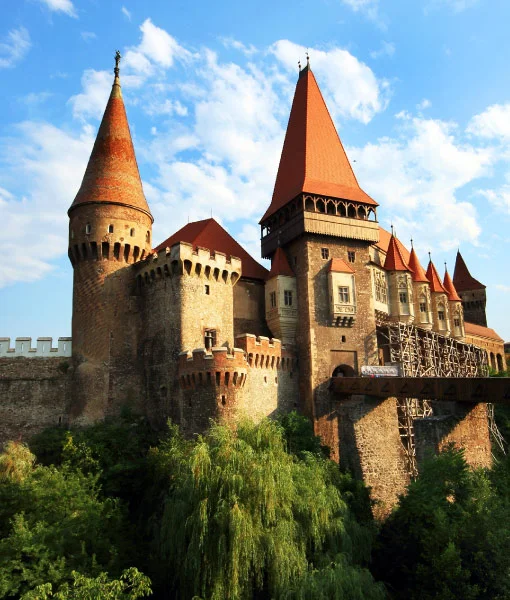
Travel To Romania
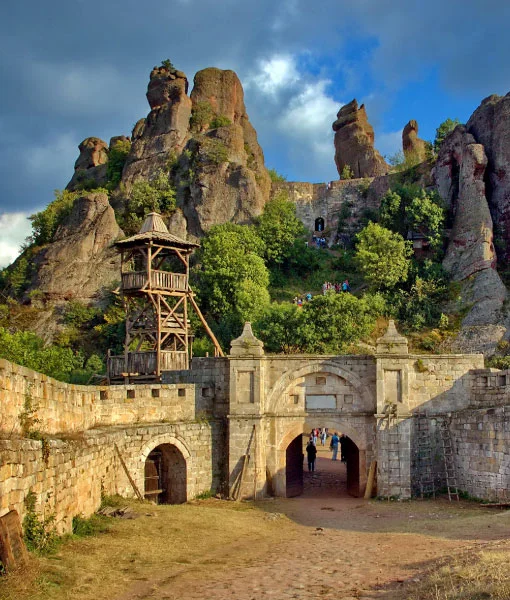
Travel To Bulgaria
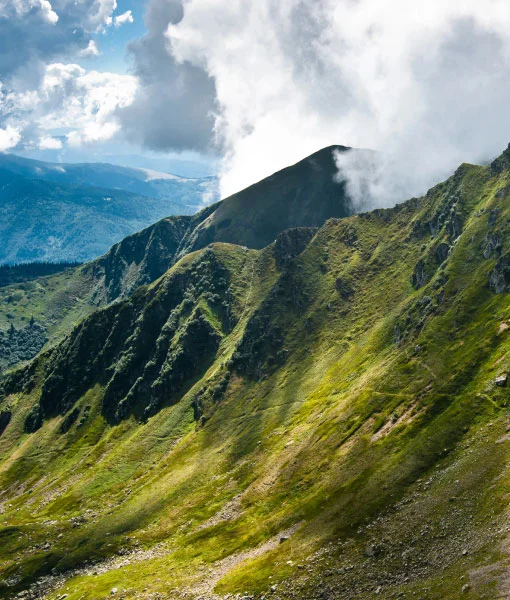
Travel To Bulgaria & Romania
Ready to book your tour.
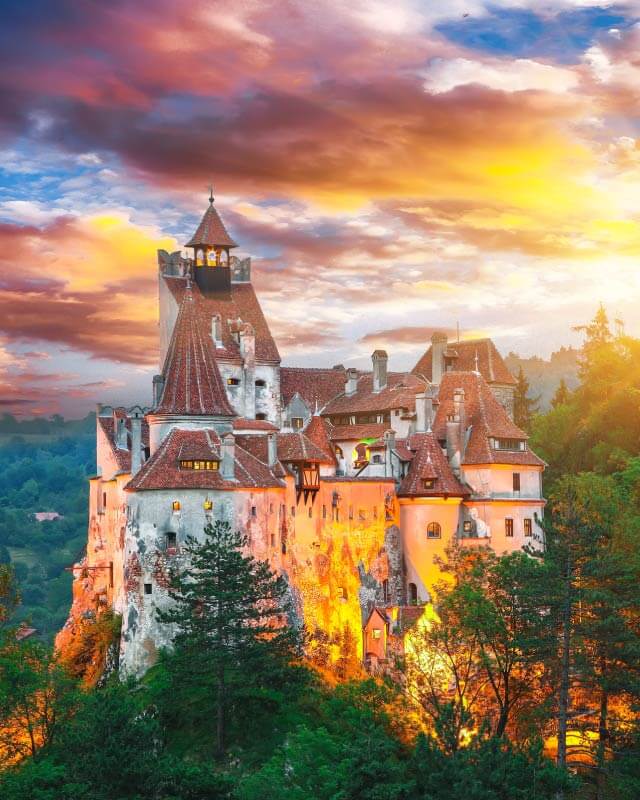
Why Choose Us?
Boutique travel agency.
We are Vlad and Zoe Trestian – the owners and managers of Balkan Trails. Vlad is Romanian, Zoe is Bulgarian – we have first hand, local knowledge of the countries our tours explore.
We have been working in the travel industry in Eastern Europe since the late 1990s. In 2009, we decided to set up Balkan Trails as a family-owned and managed tour operator company. When trusting us with your travel experience, you will be dealing directly with one of us. Zoe or Vlad will be your single point of contact, so you’re always talking to an expert who has an overview of all details related to your tour.
We understand traveling is personal and individual, and no two travelers are alike. That is why the majority of our Bulgaria and Romania tours are based on customized itineraries. Your tour is exactly that: YOURS. Just let us know when you’d like to arrive and depart, what your interests are, the type of hotels you prefer, and we’ll take care of the rest.
We work with a small number of hand-picked, licensed guides. They all have solid experience and speak excellent English. During your time with them, you will get an insider’s perspective on the country, its people, and its culture. They are also the ones who will help you interact with locals – meeting locals is key to truly understanding a country.
Being a small, family-run business and working with a small number of carefully selected guides, also means we are only able to manage a limited number of Balkan tours each year. And that’s OK. Our focus is not organizing lots of “just OK” tours. We are here to create memorable travel experiences. And those do come in limited numbers.
Get in touch today. We’re really looking forward to showing you our part of the world.
Vlad and Zoe Trestian
What Our Clients Say
Over the last 20 years, we have helped many travelers discover our part of the world: the Balkan Countries. These days, a large percentage of our new bookings come from referrals from former clients – a solid testimony to the quality of our services. This is what some of our past customers have to say about their travel experience in the Balkans with us:

Judy & Jerry Curnow

Leslie Snyder and friends
Jennifer W.

Linda Brolly Hathaway

Jeff & Joan Jacobson
Are you interested in learning more about romania & bulgaria check out our blog .

Unique travel experiences – Discover the wonders of the Dobrogea region, one of the oldest in Romania.

Winter traditions in Romania and Bulgaria

Complete Traveler’s Handbook: Cluj-Napoca’s Must-See Landmarks and Beyond

Top 5 easiest Romanian cooking recipes

5 must-see Places in the Balkans in Winter

When is the perfect time to visit Romania and Bulgaria?
Your bucket list just got a whole lot cooler.

Inquiry Form
Tour inquiry form.
APRIL SALE: Book now and get up to 60% off!
Balkans Tours & Trips
Find the right adventure for you through Balkans. We've got 3051 tours going to Balkans, starting from just one day in length, and the longest tour is 42 days. The most popular month to go is September, which has the highest number of tour departures.
250+ Balkans tour packages with 16,170 reviews
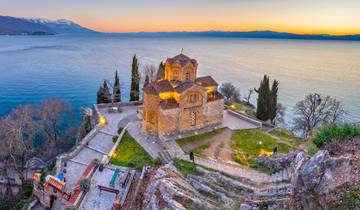
- In-depth Cultural
- Coach / Bus
- Christmas & New Year
Balkans Uncovered Luxury Tour
The itinerary was good. The food was good.
- €150 deposit on some dates Some departure dates offer you the chance to book this tour with a lower deposit.

All About Balkans (4 Star Hotels)
The sights were amazing and the tour guides (both Simon Simonovic and Sofia) were excellent! The group of 42 got along perfectly. We enjoyed the diversity as we shared our adventures and experiences freely.
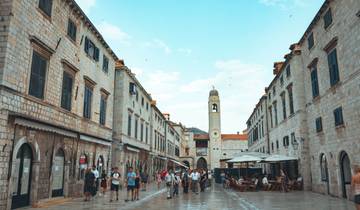
Balkan Explorer
Filip is the TOTAL package. Intelligent, funny and kind. My family and I have traveled to 30+ countries and used several different tour agencies/groups and Filip, BY FAR, is the best tour guide we've ever had. He left a huge impression on everyone in our group.
- 10% deposit on some dates Some departure dates offer you the chance to book this tour with a lower deposit.

Balkan Discovery (4 Star Hotels)
This was my first time booking through TourRadar and I am NOT disappointed. My son and I had an amazing adventure and I will definitely recommend and be using TourRadar again. Our Balkan Discovery tour was well organized. Our guide Vijor was extremely knowledgeable and friendly, as was our driver.
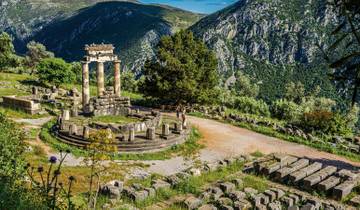
Tour from Athens to Dubrovnik or Split: 7 Balkan countries in 14 days
This tour exceeded our expectations. The history of these countries is very interesting. The cities and towns we visited were fascinating. The scenery of mountains, lakes and coast was beautiful. We saw wonderful churches, mosques, monasteries, bazaars, castles, forts and walled cities. Our guide Sokol was great fun to be with. Before booking this trip, we had lots of questions, which were answered by Sirma from the CHOOSE BALKANS team promptly and with the information we had requested. As tourism is increasing in these countries, visiting at this point in time was magical. The use of local hotels was nice. This was a special trip that we highly recommend, and will stay in our minds for a long time.

- Sightseeing
Tour from Athens to Belgrade: 7 Balkan countries in 14 days
I loved the tour and everything was amaizing. The stuff was so friendly and the tour guide too

Zagreb to Athens: Adriatic & Ancient Capitals
A great fast-paced tour that was well led by our wonderful guide Ivan!

Western Balkans Uncovered
I did not know what to expect and was pleased to find it all very interesting and different from our North American standards. The kindness of the people toward tourists was wonderful to experience especially given the difficult history all of the countries visited had gone through. Food and drink were very good.
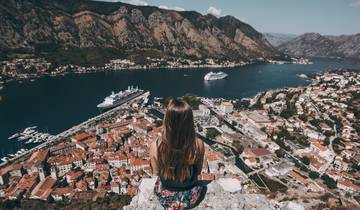
Dubrovnik to Athens
Tour was everything we hoped it would be. Goran was very knowledgeable and took care of our every need. Would highly recommend.
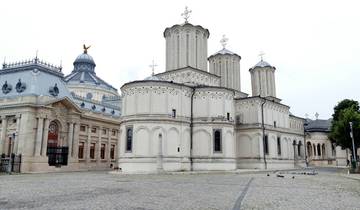
Balkan Adventure (14 Days)
An excellent trip with an outstanding tour director (Sarah Rossi) and highly skilled bus driver (Bruno). Plenty of option excursion choices along with very good included tours with knowledgeable local guides. The only down side were two of the hotels - Hotel Marinela, Sofia Bulgaria, and Mercure Belgrade Excelsior - that were in desperate need of refurbishment not to mention functioning air conditioning and bathroom cleaning. Otherwise, great trip.
- €100 deposit on some dates Some departure dates offer you the chance to book this tour with a lower deposit.
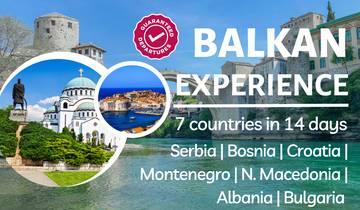
Balkan Experience – seven countries in two weeks - SMALL GROUP
I really enjoyed this tour. My guide and driver (Ivan) was excellent. His knowledge was outstanding. His jokes were funny (sometimes) The hotels were very good. Overall I learned a lot about the Balkans and its complicated History. I would recommend Victor tours if you want to see the Balkans. They went out of their way to give me extras so that I always had things to do and see. I highly recommend Victor tours.

Balkan Dreams end Bulgaria
We chose this tour as it had the most comprehensive coverage of the Balkans and were not disappointed. Incredible planning on the part of Europamundo given the modular nature of their tours. Logistically it was challenging due to the distances we had to travel everyday, but there were plenty of rest stops and the border crossings were managed well. We were only 4 English speakers on a full bus of Spanish speakers and were initially apprehensive, having read some of the reviews from English speakers who were on a majority Spanish speaking bus. It could easily have been a disaster but kudos to Europamundo for assigning to our small group one of their most capable English and Spanish speaking guides, Viktor Toshev. He went the extra mile every day to ensure that we were not treated as an afterthought (as some other reviewers have commented). He was organised, his commentary clear and thorough but succinct, and his energy and enthusiasm was infectious, making the sites come alive. Due to the level of care we were given, it often felt like we were on a private customised tour and not a big bus package tour. A good guide makes all the difference! Thanks Europamundo!
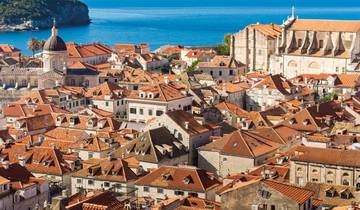
Treasures of the Balkans (Classic, 16 Days)

Dubrovnik to Athens: Beachfronts & Fortresses
This trip was absolutely amazing! And it was all due to our amazing guide - he was, hands down, the most knowledgeable and charismatic tour guide a person could have dreamed up! He not only made it possible for our diverse group to get to know one another, he introduced us to experiences, places and persons that a local would only know. He was meticulously organized down to a "T", arranged for upgrades at his own expense, and left the group with little to no worries about where/what would be done next. If I could book tours with this guide solely - I would. In fact, for my next adventure I do plan on booking with G Adventures and requesting his tour.

Balkan Kaleidoscope
This was also few years back touring several Balkan countries Bulgaria, Serbia, Montenegro, Croatia, North Macedonia and Albania. If I remembered the hotel that my wife & I stayed in North Macedonia is like an attic room, I mentioned to the tour guide and our hotel in Albania with no elevators, we were in the top floor, not easy for old people to use the stairs. But nothing was done to resolve my complain. Ditto, the bus driver kept on stopping because he wants to smoke. But overall the tour satisfied my curiosity on this part of the globe.
What people love about Balkans Tours
My experience with this tour was great. The hotels were tops. Our tour guide very attentive and knowledgeable. Our bus driver, Barry, was the best. The itinerary is very busy and a bit tight. I would suggest spending less time at Dubrovnik and more at Kotor. Our pre-fix meals were good, but maybe offer a choice of two or three entrees? Overall, it was a very enjoyable trip!
Intense as expected. The hotels were good and centrally located for the most part. Tour guides Dusan in Northern balkan countries and then Vasso for the last Greece part were young, knowledgeable, energetic, friendly, easy going and took care of every detail for us
Fast paced, and enjoyable. Ten countries in sixteen days, organized to the point it was a pleasure to experience. Our guide Rogan kept us informed and gave great background information of things we were about to experience. I will relive this adventure many times in my head.
- Fully Guided (1867)
- Family (1544)
- Personalized (1283)
- In-depth Cultural (912)
- Private (656)
- Self-Guided (339)
- Sailing (301)
- Active (257)
- Hiking & Trekking (247)
- River Cruise (176)
- Bicycle (163)
- Coach / Bus (160)
- Ocean Cruise (97)
- Custom (91)
- Food & Culinary (55)
- Intl. Flights Included (48)
- Self Drive (39)
- Health, Spa & Wellness (13)
- Motorcycle Ride (13)
- Festival & Events (9)
- Honeymoon (9)
- Jeep & 4WD (7)
- Educational (5)
- Romantic (5)
Destinations
- Croatia and Slovenia (95)
- Greece and Turkey (87)
- Bulgaria and Romania (46)
- Albania and Montenegro (36)
- Croatia and Greece (33)
- Bosnia, Croatia and Slovenia (32)
- Croatia and Italy (30)
- Croatia and Serbia (14)
- Croatia and Hungary (9)
- Greece and Italy (6)
- Greece tours (1082)
- Croatia tours (523)
- Romania tours (285)
- Albania tours (160)
- Slovenia tours (121)
- Bosnia tours (90)
- Bulgaria tours (84)
- Montenegro tours (51)
- Macedonia tours (28)
- Serbia tours (25)
Travel Styles
- Small Group (1077)
- Budget (335)
- Luxury (191)
- Singles and Solo (1990)
- For Couples (581)
- Young Adults (84)
- Seniors (961)
- 3 Day Tours (233)
- 7 Day Tours (551)
- 10 Day Tours (1020)
- 2 Week Tours (316)
- 3 Week Tours (160)
- 4 Week Tours (17)
- Spring 2024 (1624)
- Summer 2024 (2022)
- Fall / Autumn 2024 (2044)
- Winter 2024 / 2025 (619)
- Spring 2025 (918)
- Summer 2025 (847)
- Fall / Autumn 2025 (852)
- Winter 2025 / 2026 (352)
- April 2024 (783)
- May 2024 (1762)
- June 2024 (1894)
- July 2024 (1807)
- August 2024 (1827)
- September 2024 (1947)
- October 2024 (1670)
- November 2024 (709)
- December 2024 (588)
- January 2025 (479)
- February 2025 (469)
- March 2025 (563)
- April 2025 (694)
- May 2025 (830)
- June 2025 (817)
- July 2025 (784)
- August 2025 (790)
- September 2025 (832)
- October 2025 (696)
- November 2025 (424)
Dave's Travel Pages
Greek Island Hopping | Greece Travel Ideas | Bicycle Touring
Balkan Wilderness Camping in Croatia (Eurovelo 8 Bike Tour)
This bike touring blog post was written by Cat as part of her Eurovelo 8 cycling tour across Europe. This entry covers thoughts and impressions of cycling near Split.
Thoughts on camping when cycling
By Catherine Small
Camping is changing my sleeping schedule. I’ve fallen in a habit of finding a spot around 4pm, setting up and eating something by 5, doing the necessary things like washing and such, then writing and reading until the sun is gone.
By 7 or 8 I’m lying in my sleeping bag, stretching my legs and meditating. Sometime shortly after that I’m asleep. I wake around midnight for a while, then sleep again until daylight wakes me around 5am.
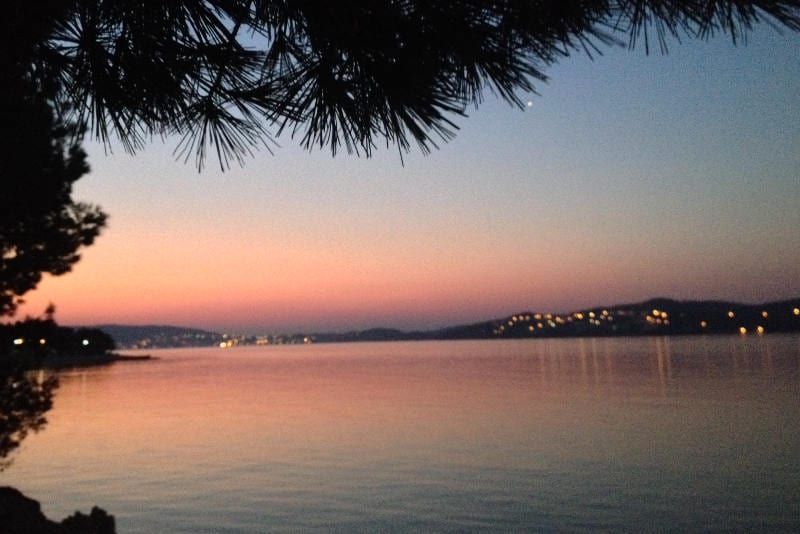
Apparently in the days before electric lights and the industrial revolution, there is ample evidence to suggest that most people went to bed early and woke for an hour or two in the middle of the night, and then slept again. Funny isn’t it.
Anyway, by 6:30am I was cycling around the edge of a cliff, looking out at the rising sun.
Cycling near Split, Croatia
I reached Split sometime in the middle morning. It’s the most Western city I’ve seen yet in the Balkans . On my way in I noticed a little sign that said something along the lines of “USAID – City Reconstruction – From the American People”, and a Google search confirms that the USA assisted post-war Croatia with rebuilding cities, developing government systems and a variety of other projects.
While I’m sure the help has been very much appreciated, I did feel that if I were Croatian, I’d feel a little patronised by that sign. The next thing I noticed was the first advertisement for McDonalds since arriving in Montenegro .
Split has wide avenues shaded by big trees, grassy parks, tasteful cream-coloured stone buildings, and a little beach. The streets near the water have the feeling of established success. In contrast, the city also has many apartment blocks in the drab monotonous style of socialist residential architecture.
There were lots of people out enjoying the day, the ubiquitous elderly people leaning on their walking sticks, teens with trendy hairstyles, and attractive young women pushing prams.
Yes, I'm cycling to Spain
As I was leaving the city I stopped at a service station to refill my water bottles and ask directions to get back to the old beachside road. The highway fills my lungs with fumes and trucks going 100km/h drag me sideways with the pull of their tailwind – I don’t like it.
The shop attendant told me that the old road was quite far away, at least 20 minutes by bicycle. I laughed and told him that I am riding to Spain, so 20 minutes isn’t really so far at all. He didn’t believe me until I walked him out and showed him my bicycle all loaded up.
He wanted to know why I was doing it, whether I was scared, and where did I eat. The last question was amusing, as though being a crazy cyclist prevented me from being able to eat at the same places as anyone else.
He insisted that I stay on the highway until I reach Trogir, then go to the old road. He was the second person to recommend that I visit Trogir so I decided to follow his advice.
Trogir in Croatia
Trogir is a beautiful example of a Mediterranean town. It has a quaint white-stone old town on a little island, bordered on one side by a bright, sunny marina lined with restaurants and bars, and lush green parks on the other. Beaches are close-by with sand or little white pebbles.
The ocean is an impossibly vibrant blue-green hue that seems to exist only in Croatia, clear as glass, showing details of the ocean floor metres below. All along the main road are houses offering accommodation and signs frequently indicate campgrounds.
Wild Camping Croatia
After a beer on the marina, I left the town and and cycled on, out of Trogir and through Donji Seget. As the afternoon wore on, I made my way down through one campground until I reached a little beach.
Cycling further led me to a boom-gate, after which a white gravel path wound through what appeared to be a national park. I passed the occasional runner or couple out for a stroll in the afternoon sun. Forest extended as far as I could see on my left and the ocean peeked through the trees about 15 metres away on my right.
Eventually I found a flat grassy space by the water’s edge, sheltered from view of the path by some trees and undisturbed by wind. This was my first night of proper wilderness camping and I had the best sleep in a tent so far.
Camping in Croatia in off-season
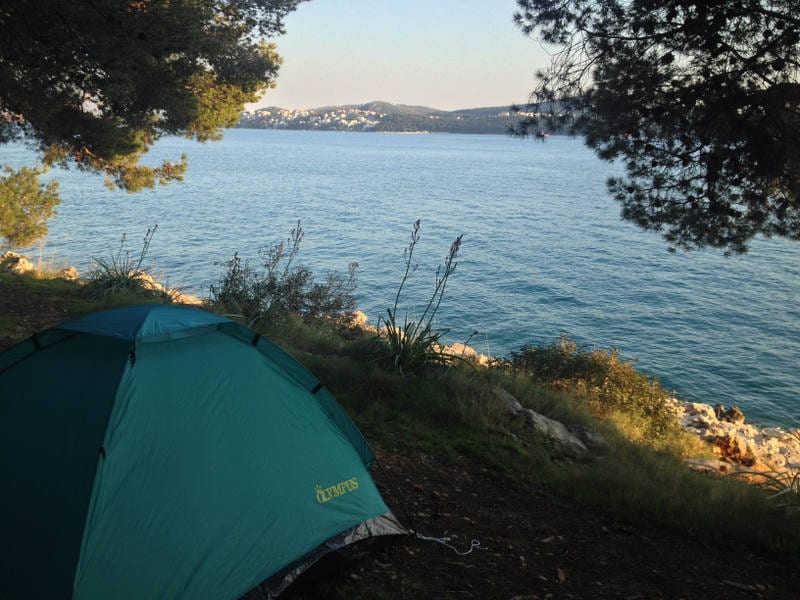
I write this entry lying on my stomach in my tent, facing the ocean as the sun sets. The moon is already brightly hanging in the sky. An aeroplane is drawing a comet’s tail as it falls toward a purple-pink horizon and all I can hear is the waves.
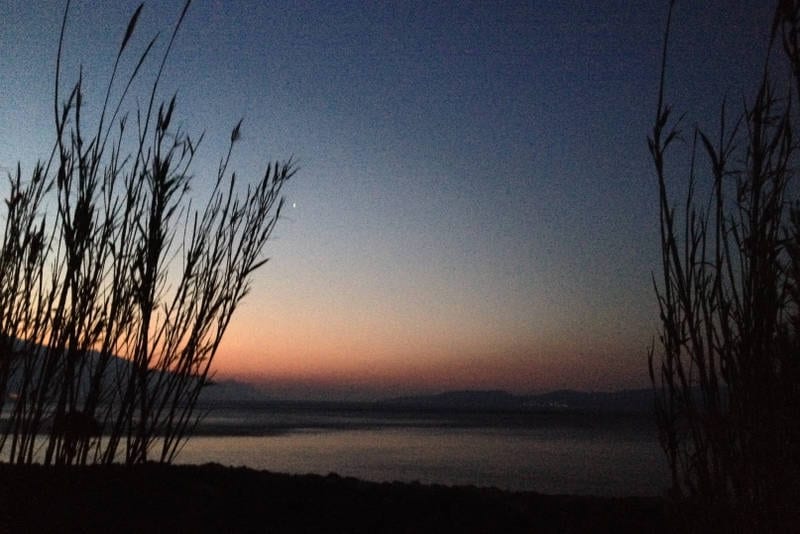
I found another off-season camp-ground down at the beach, just as I was wondering whether it would be possible to wild camp at the waterfront. I can’t access electricity but I do have running water and perfectly flat ground, five star comforts!
It seems to be a common thing, these unattended camp-grounds at this time of year. I’m going to start looking out for them as a free camping option.
More blog posts in this series:
- Cat's Experiences Cycling The Eurovelo 8 Route
- The Balkans section of Eurovelo 8
- Cycling Kotor mountain road
- Camping outside Dubrovnik
- Pillows for Bikebacking
- Cycling across Europe
Leave a Comment Cancel reply
TTC family of brands
My Trafalgar
Destinations
Get Inspired
866 513 1995
Balkan Tours

Top Balkan Tours
Save up to $550
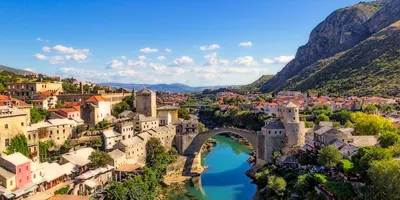
Balkan Adventure
7 Countries
14 Day Balkans Tour from Bucharest to Belgrade
Save up to $500
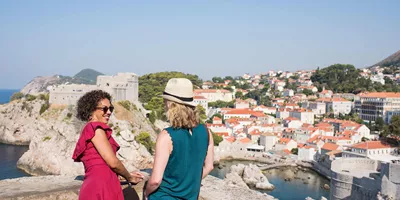
Balkan Delight
3 Countries
12 Day Balkans Tour of Zagreb, Sarajevo and Dubrovnik
Save up to $600
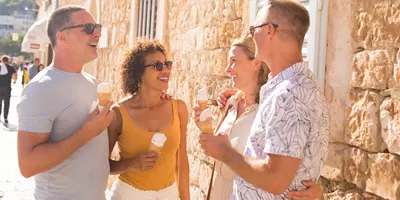
Best of Croatia and Slovenia
2 Countries
11 Day Croatia and Slovenia Tour from Zagreb to Dubrovnik
See All Balkan Trips
Balkan sightseeing tours inspiration
Mystical landscapes, unique cultures & ancient history
You won’t miss a thing on our Balkan travel experiences, as we take you from the iconic attractions to the unexpected treasures. Go beyond the ancient beauty of Dubrovnik and discover the spectacular islands off Croatia. See the famous capitals like Bucharest and Sofia before roaming further to fairytale towns like medieval Veliko Târnovo.
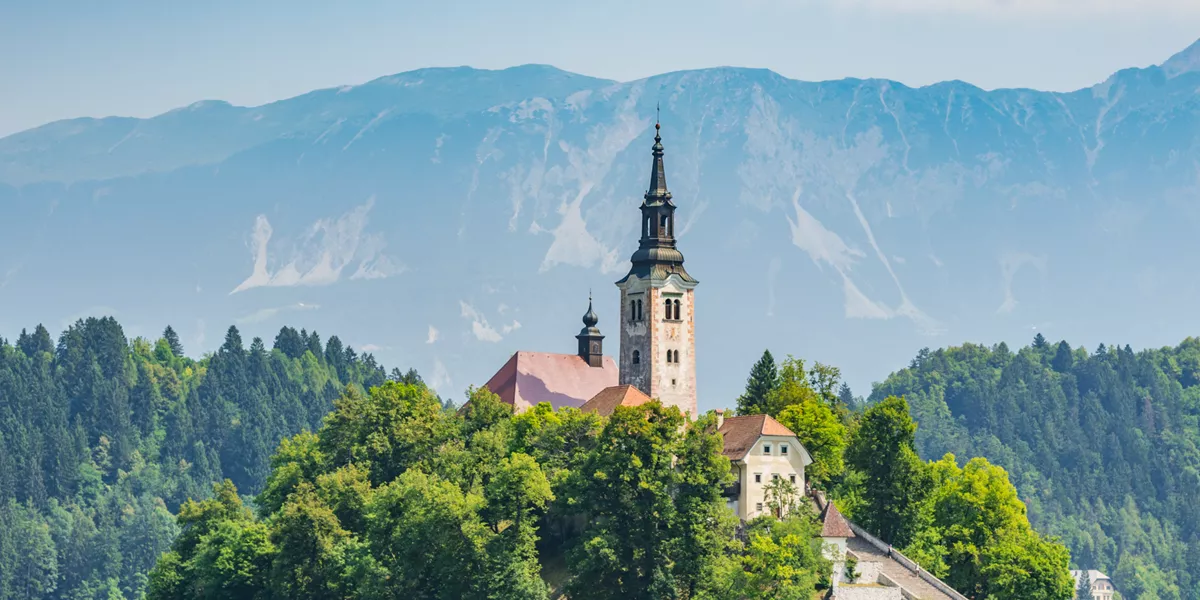
All the best Balkan sights
Whether you want to explore the ancient Old Town of Split, sail across the magical lake to Bled Island, marvel at the Plitvice waterfalls, or see Bran Castle, the mythical home of Count Dracula in Transylvania, our Balkan vacations are packed with iconic highlights. And with your expert Balkans travel guide and Local Specialists leading the way, you’ll get the insider’s lowdown on all the top sights and really make the most out of your Balkan adventure.
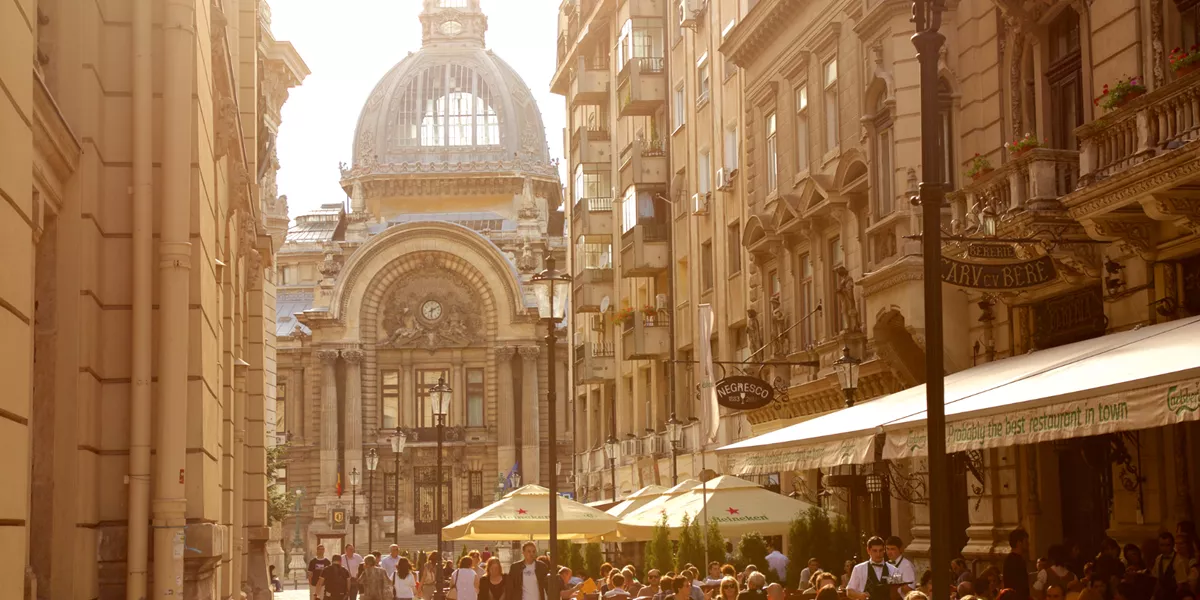
Plus the local hidden gems
We’ll also reveal the incredible secrets on our Balkan tours. Soak up the Belle-Époque atmosphere of Bucharest, and wander the elegant boulevards of Sofia and the colorful streets of Tirana. See the traditional crafts of Skopje’s bazaars and gaze at the mesmerising fjord-like mountains of Kotor. From the Stari Most bridge to the great fortress of Belgrade, there are endless wonders to explore in the Balkans.
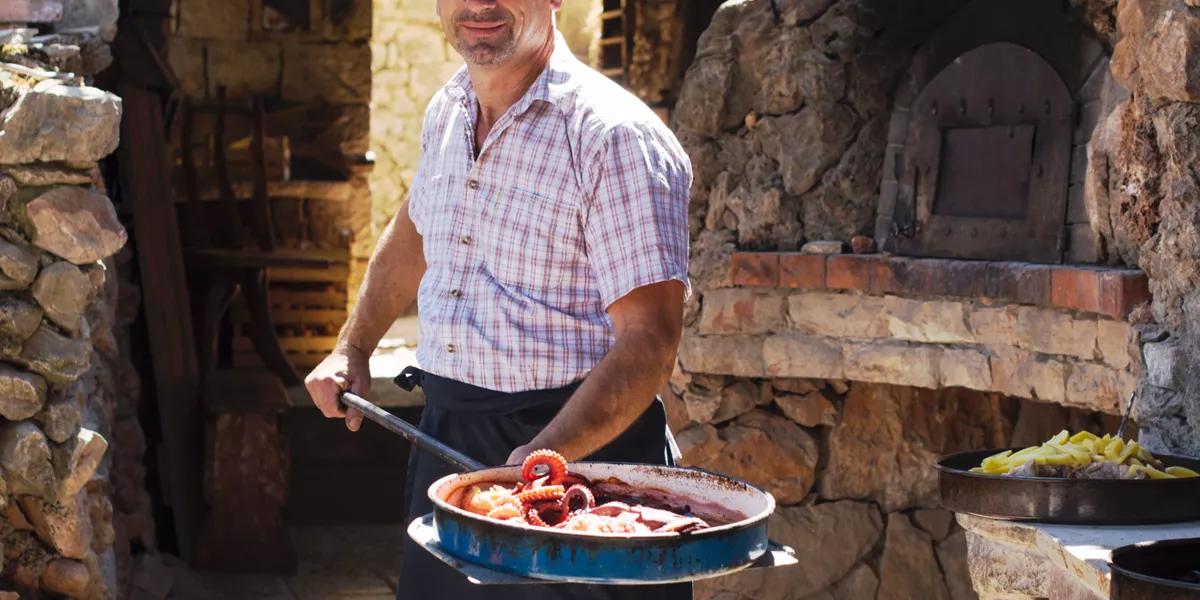
Connect with local cultures
Our Balkan tour packages give you the chance to connect with the locals and gain a deeper understanding of the region’s cultures. Taste the flavors of North Macedonia at a local dinner in Skopje or visit a historic farm in Bled for an exclusive family dinner. Sample indigenous wine from a family-owned vineyard in Skradin, or meet the Muhoberac family for a traditional dinner in Osojnik, where their ancestors have lived for over 500 years.
The best of the Balkans unlocked for you
Enjoy one-of-a-kind experiences and uncover local secrets when our friends across the country open their doors to you. Here’s just a sample of the rich experiences you can expect.
All you need to know about Balkan Sightseeing Tours
What countries make up balkan.
If you’re trying to choose your Balkan travel destinations, you’ve got plenty of options. There are several countries within the Balkan Peninsula including Albania, Montenegro, Bosnia and Herzegovina, North Macedonia, Bulgaria and Kosovo. Parts of Croatia, Greece, Italy, Turkey, Slovenia, Romania and Serbia also make up the Balkans.
What is the best time to visit the Balkans?
Spread over half a million square kilometres, the climate varies greatly around the Balkans. In general, the spring and autumn shoulder seasons are perfect for mild temperatures, less crowded cities and blooming national parks, while summer brings hot weather and perfect beach days. If you’re taking on the chilly winter, pack your snow gear!
Why are they called the Balkans?
The meaning behind the name ‘Balkans’ is obscure. The word ‘Balkan’ means ‘mountain’ in Turkish and was aptly used to describe this mountainous region throughout history. While the concept of the “Balkans” was created by a German geographer in 1808, the term became more popular in the 19th and 20th centuries as a geopolitical concept.
What is the best Balkan route?
Dreaming of a Balkans road trip? Our top Balkans itinerary takes you to the best places in the region, starting in Romania’s capital Bucharest. Head to Sofia in Bulgaria, cross to Skopje in North Macedonia, then arrive in Tirana in Albania. Travel up to Montenegro, see the sights of Bosnia and Herzegovina, then finish up in Serbia’s Belgrade for the ultimate Balkan adventure.
View All Ways To Go
Request a quote
Request a brochure
Get expert help booking your vacation
Get a brochure delivered to your door, making travel more affordable for you.
Order Yours Today
See All Deals
Get your free brochure
Find your next escape with the world's leading travel brand
Request A Brochure
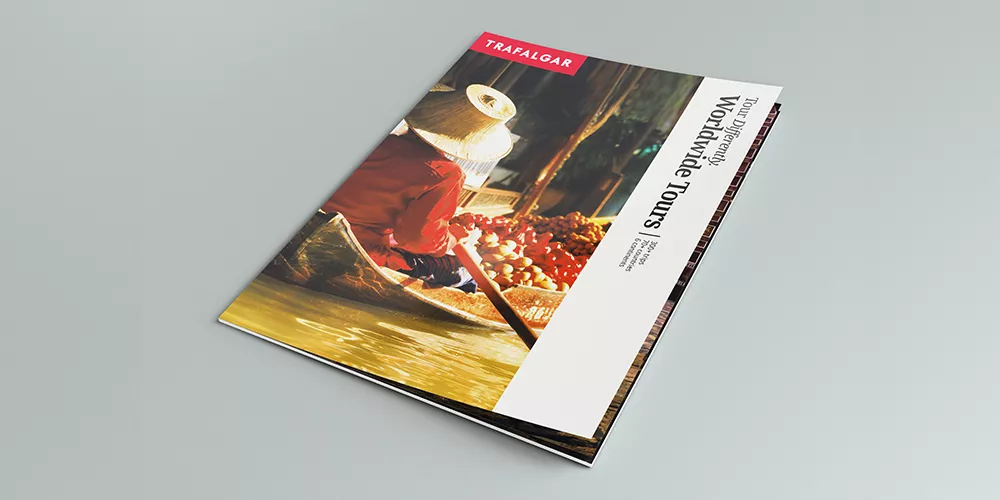
Award winning tours
Every year, we're proud to win some of the most prestigious travel accolades around the world - from the Travel Globes to the Agent's Choice Awards
Search Our Tours
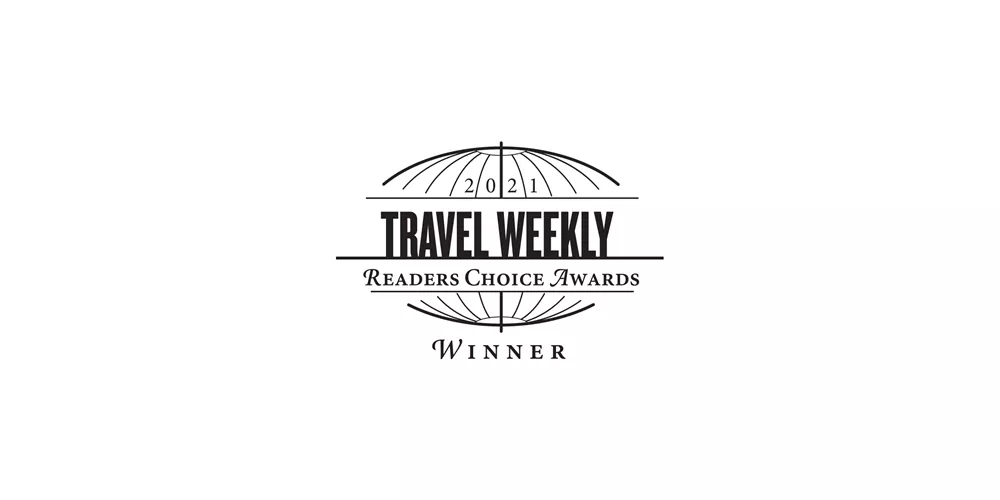
Help & Info
WE MAKE TRAVEL MATTER®
Unedited Reviews
Our Destination Management Companies
Frequently Asked Questions
Travel Updates
Media & Press Room
Do Not Sell or Share My Personal Information
Travel Planning
Get Your Free Brochure
Travel Insurance
Booking Conditions
Trip Deposit Level
Recommendations
Trafalgar Tours Limited is a proud member of The Travel Corporation family of companies.
#SimplyTrafalgar
Travel House, Rue du Manoir St Peter Port, Guernsey, GY1 2JH
Selected Region
United States
United Kingdom
New Zealand
South Africa
Copyright 2024 Trafalgar. All rights reserved.
Terms and Conditions
Privacy Policy
Cookie Policy
Want to experience a hidden Croatian restaurant?

Best things to see and do in Moscow
Moscow is the capital of Russia and is one of the most popular tourist destinations in Asia. It’s rich and complex history is a constant reminder of its strategic position between Europe and Asia and makes it one of the cities you should visit once in your life. In terms of the many iconic landmarks, the delicious cuisine, and the characteristic, colorful architecture it has, Moscow is full of surprises for first-timers and seasoned travelers. Apart from the main attractions, it has like the Kremlin or Red Square, Moscow has many hidden gems for you to discover on your free walking tour with your local guide.
On any of the free guided tours we offer in Moscow , you will be able to find a selection of many tours which are available in different languages and at different times of day, like the morning, afternoon, and evening. Since Moscow is such a large metropolis, getting your bearings by doing a guruwalk with a local guide who will show you all Moscow’s hidden gems is a great idea. This way you get to learn as much as possible about the local culture and way of life. A trip to Moscow wouldn't be complete without visiting iconic places like St Basil’s Cathedral, Lenin’s Mausoleum, the Pushkin State Museum of Fine Arts, or the State Historical Museum, before getting some fresh air at Gorky Park, the medieval church of Kolomenskoye, or shopping at Izmailovsky Market. Don’t miss visiting the Cathedral of Christ the Saviour, the Bolshoi Theater, or checking out the Tsaritsyno Museum-Reserve.
Many travelers have left their r eviews and opinions about the local guides , gurus, and the routes they walked. If you have any questions about the routes or what is included in the tour, check out their opinions.
Free walking tour near Moscow
Others cities to visit after moscow, where are you traveling to.
You are using an outdated browser. Please upgrade your browser .
- Moscow Tours
Our 20 Best Moscow Tours of 2022
Join us on an unforgettable tour to Moscow, the capital of Russia. Imagine visiting Red Square, St. Basil’s the Kremlin and more. Moscow is one of Europe’s most vibrant cities and one of Russia’s most historical. All of our tours to Moscow are fully customizable and can be adjusted to fit any budget. Our most popular tours are listed below. Please click on the tour details to learn more or contact us for more information about our Moscow tours using the form at the side of the page. You can also schedule a call with one of our Russian travel specialists to learn more.

Classic Moscow
This is our most popular Moscow tour that includes all the most prominent sights. You will become acquainted with ancient Russia in the Kremlin, admire Russian art in the Tretyakov Gallery, listen to street musicians as you stroll along the Old Arbat street, and learn about Soviet times on the Moscow Metro tour.
Accommodation
PRIVATE TOUR
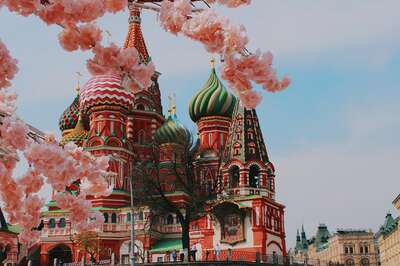
A Week in Moscow
This tour is a perfect choice for those who wish to get to know Moscow in depth. One of the highlights of this package is the KGB history tour which gives an interesting perspective on the Cold War. You will also have time for exploring the city on your own or doing extra sightseeing.
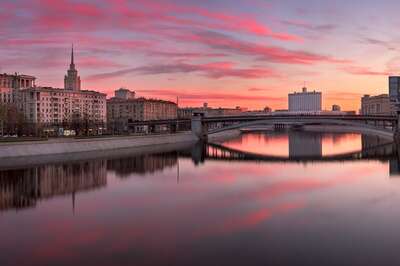
Weekend in Moscow
This tour is a great way to get acquainted with the capital of Russia if you are short of time. You will see all the main attractions of the city, the most important of which is the Kremlin - the heart of Russia. The tour starts on Friday and can be combined with a business trip.
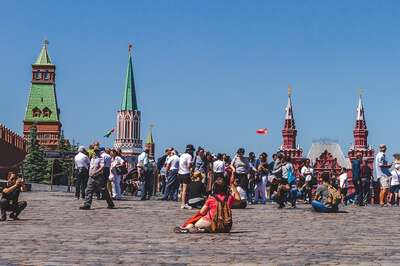
Group Tour Moscow Break by Intourist
Russia's capital has so much to offer, from the Kremlin and the Metro to the Old Arbat street and the Tretyakov Gallery. Besides these sites, you will also visit a fascinating country estate which today is quite off the beaten path, Gorky Estate, where the Soviet leader Lenin spent the last months of his life.
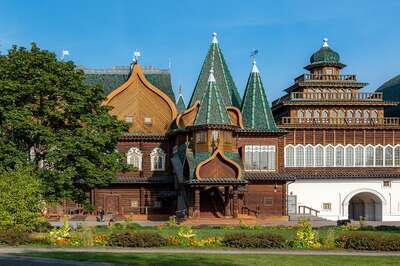
Kolomenskoye Tour with transport
The history of Kolomenskoye stretches back for centuries. In 1380, Dmitri Donskoi’s army passed through Kolomenskoye on their way to the Kulikovo battlefield, and it was...
Tours by car
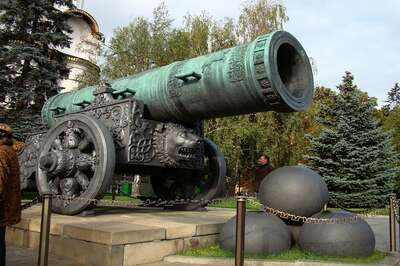
Kremlin, Red Sq., Cathedrals & Armory Tour
The Kremlin is truly a fascinating structure, at the same time it is an ancient tower, the city’s former military fortification, a palace, an armory, the sovereign treasury...
Walking tours
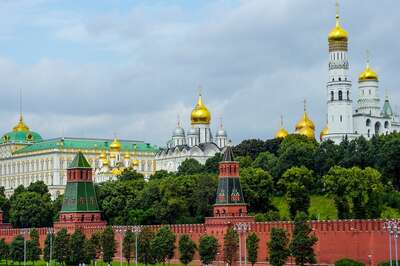
Kremlin, Red Sq., Cathedrals, Armory, Diamond Fund Tour
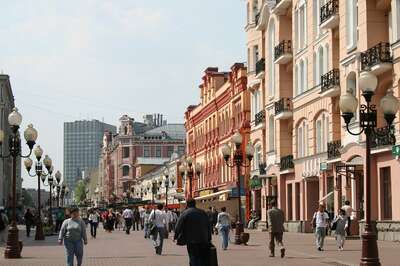
Old Arbat walking tour
You will be told of the street’s interesting history and view the street’s artisan culture. You will also have the opportunity to view and purchase souvenirs from the...
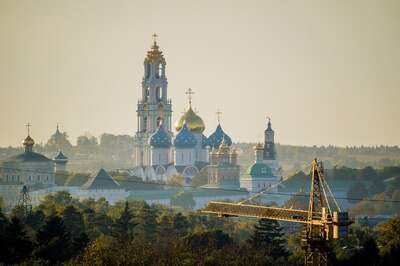
Tour to Sergiev Posad with transport
Considered by some to be the Russian Vatican, Sergiev Posad is the temporary residence of the Patriarch of the Russian Orthodox Church. The Trinity St. Sergius Monastery (Lavra)...
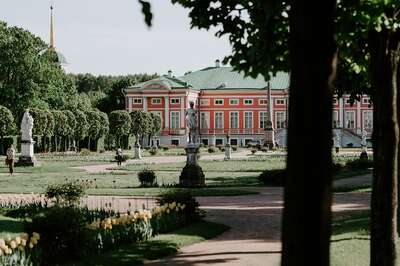
Tour to Kuskovo with transport
The Kuskovo Estate often called the Moscow Versailles due to its perfectly preserved French park, is an example of an 18th century, luxurious Moscow summer residence. Its history...
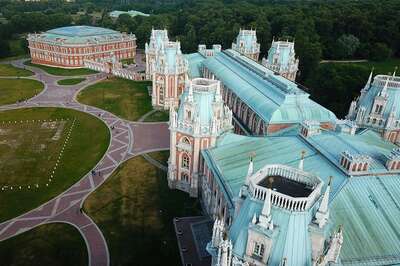
Tour to Tsaritsyno with transport
The Tsaritsyno Estate is located in the southern part of Moscow. The estate was constructed for Catherine the Great by the Russian architects Bazhenov and Kazakov in a romantic...
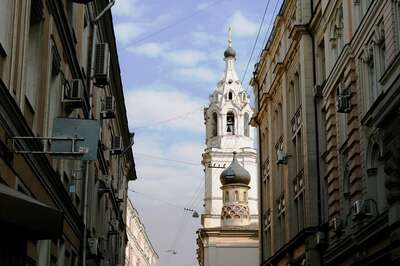
Moscow Metro and Old Arbat Tour
The Moscow Metro is one of the largest and most grandly built metro systems in the world. It was meant to be a showcase of the Soviet Union’s achievements for both the Russians...
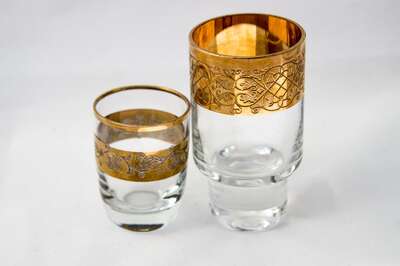
Vodka Museum Tour with transport (excursion and vodka tasting)
Vodka is an important component of Russian life, an element of national identity and everyday culture. We invite you to visit the Vodka Museum and feel the atmosphere of long-gone...
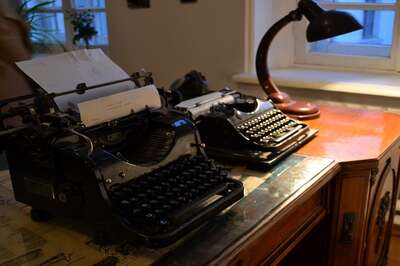
Mikhail Bulgakov Apartment Museum
This apartment museum located close to Patriarch Ponds became the prototype of the "bad apartment" described in the novel "The Master and Margarita." Currently the museum's...
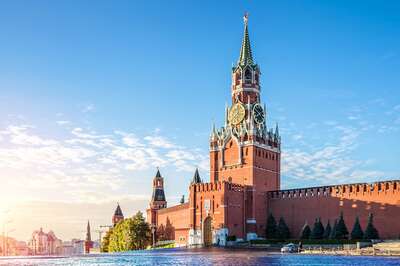
Kremlin, Red Sq., Cathedrals & Diamond Fund Tour
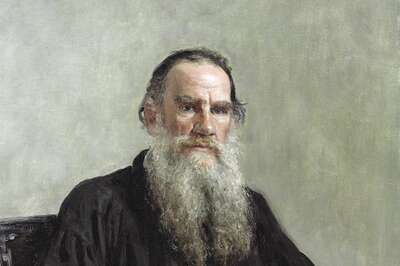
The State Museum of Lev Tolstoy Tour
Take this opportunity to learn more about the Russian writer Lev Tolstoy. During the visit to the museum you will see part of a vast collection of exhibits connected to Tolstoy...
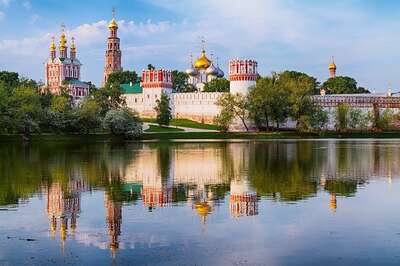
Novodevichy Convent Tour with transport
Tour of the Novodevichy Monastery. Founded in 1524 by Grand Prince VasiliIoanovich, the original convent was enclosed by fortified walls and contained 12 towers. The structure...
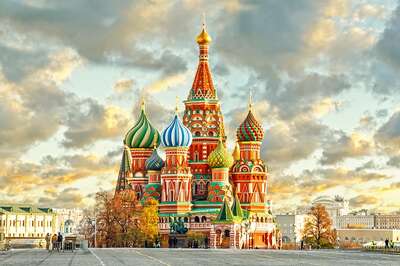
City Tour with Visit to St. Basils & Red Sq. with transport
Panoramic City Tour. This Moscow tour is a great start to your trip and the best way to get acquainted with many of the city’s major highlights. Our professional guide will...
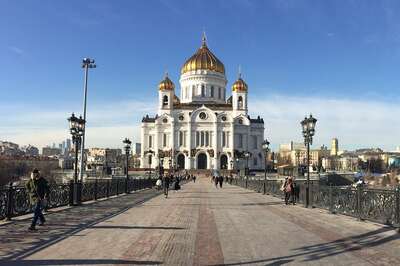
City Tour of Moscow
Head to the heart of Moscow with a professional guide on a 4-hour private walk through the city center. See Tverskaya and Old Arbat streets, Theatre Square with the world-famous...
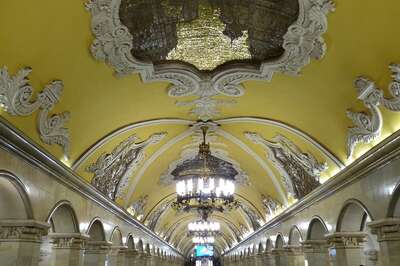
Moscow Metro walking tour
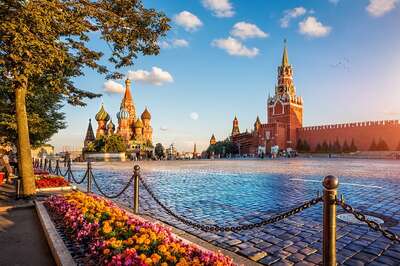
Kremlin, Red Square and Cathedrals Tour
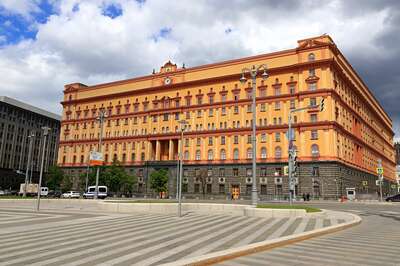
KGB Tour with transport
This is a very interesting and insightful tour. You will visit places connected with Stalin’s terror - a time of great repression and fear. You will be shown monuments to...
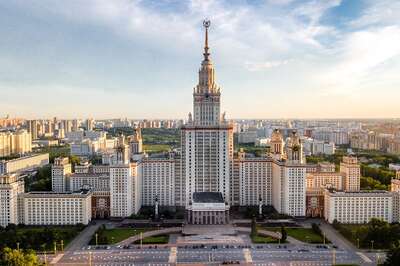
Soviet and Post-Soviet Moscow Tour
The tour begins with a drive or walk down Tverskaya Street – a Soviet masterpiece. In the years of Soviet power, Tverskaya began to undergo a transformation: it was widened...
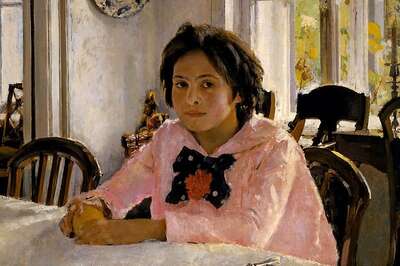
Tretyakov State Gallery Tour
This world-famous gallery contains masterpieces of Russian art beginning in the 10th century up until today. You will view exquisite Russian icons and paintings from the 18th and...
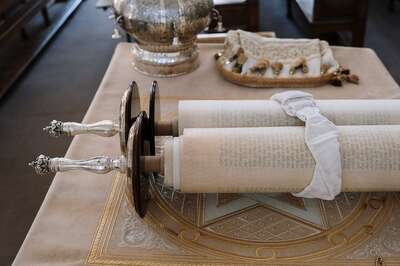
Jewish Heritage of Moscow Tour
This tour offers a detailed look into the history and present-day life of the Jewish community of Moscow. On the tour, you will visit sites connected with the cultural and religious...
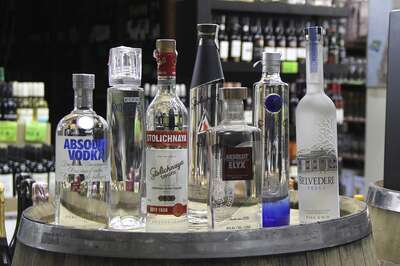
Vodka Museum Tour with transport (excursion only)

Lena, our guide in Moscow was excellent. She was very knowledgable and could answer any question we had for her. We liked that she could pick up on our interests and take us places we might not have thought of to go. When we realized that one of the places we had chosen to see would probably not be that interesting to us, she was able to arrange entry to the Diamond Fund and the Armoury for us. Riding the Metro with Lena was a real adventure and a lot of fun. In Saint Petersburg we found Anna well versed in the history of the Tsars and in the Hermitage collection. Arkady in Veliky Novgorod was a very good guide and answered all of our questions with ease. Novgorod was perhaps a long way to go for a day trip, but we did enjoy it. Vasily was a great driver to have and kept us safe with good humour and skill. We enjoyed ourselves so much, my daughter says she is already planning to return. We would both have no hesistation to recommend ExpresstoRussia to anyone we know.
Just wanted to let you know that My grandson Bruno and I couldn´t have been more pleased with our week in Moscow (6/15 - 6/21). We were absolutely enchanted with the whole experience, including getting lost a couple of times in the Metro during our free time. Although both our guides (both Eleanas) were excellent, I would particularly commend the first one (she took us to the Tatiakov, the KGB tour, and to that beautiful cemetery where so many great Russian artists, authors, composers, musicians, militarists, and politicians are buried). Her knowledge is encyclopedic; and her understanding of today´s Russia as a product of its past was, for us, truly enlightening. I will be taking another tour in Russia, with my wife, within the next two or three years. I will be in touch with you when the time comes. Meanwhile, I will refer you to other potential visitors to Russia as I meet them.
Tours to Moscow
Our Moscow tours are land only meaning that you arrange your own air travel to Russia and our expert staff meets you at the airport and handles everything else from there. Our online Airline Ticket booking system offers some of the most competitive rates to Russia available on the web so if you need tickets, please visit our Russian air ticket center . Rest assured that you will be taken great care of on one of our Moscow tours. Express to Russia has a fully staffed office in Moscow that will help to make your visit fun, informative and unforgettable. Please remember that of all these tours are private and can be adjusted to your taste. You can add, replace or skip some sights; you can add more days to the package or cut the tour short. Our specialists will be glad to help you create the tour of your dreams!
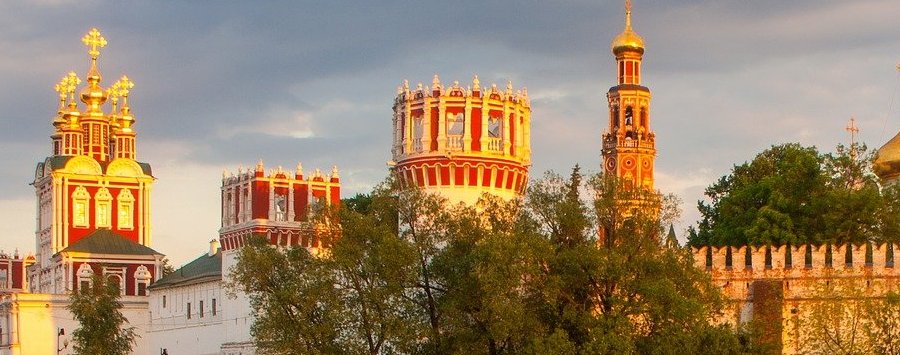
Moscow, a City Like No Other
Moscow is Russia’s largest city with a population of between 12 and 13 million. It is also Europe’s largest city and when you visit Moscow, you can feel it. The layout and architecture of the city is eclectic, ranging from crooked, ancient streets and alleyways to wide, bustling boulevards, from medieval churches to Stalin skyscrapers and to modern, glass buildings towering over everything and of course in the center of it all is the Kremlin and the magnificent Red Square. Moscow is also home to a fantastic, efficient and very beautiful metro system – each station having its own special design. In fact, Express to Russia’s Moscow metro tours and excursions are some of our most popular attractions that we offer. On our Moscow tours, you will see this and more.
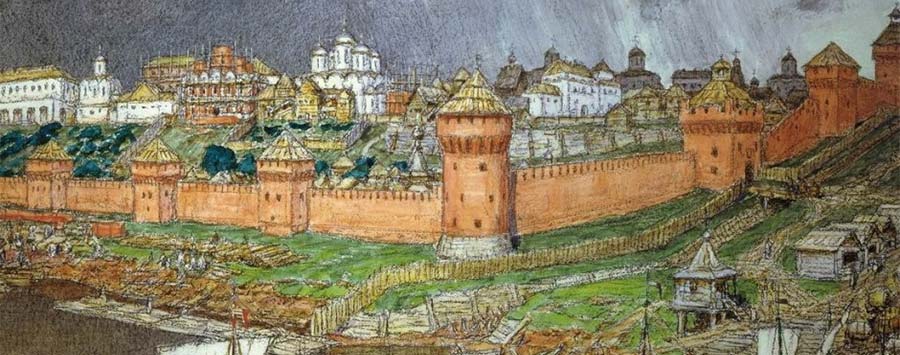
Moscow Tours centering on Russian History
Moscow has a long and interesting history and has been the capital of Russia in many of its different iterations – capital of the Grand Duchy of Moscow , the Russian Empire and of course the Soviet Union (who could ever forget the Soviet Union?). Moscow, was founded in the 12th century by Prince Yuri Dolgaruki (Yuri of the long arms – he really did have long arms!). From that time on, it was home to the Russian Tsars until Peter the Great moved the capital to St. Petersburg in 1703. The city has survived invasions and sieges from the Mongols, the Tartars, the Poles, Lithuanians and Napoleon but has always persevered. Our Moscow tours will enlighten you on this great history and give you insights into Muscovites and their unique culture. Our Moscow tours show you what the city is like today but also brings to life the past. Moscow never seems to sleep and is bursting with energy. A Moscow tour with Express to Russia is truly the best way of getting to know Russia’s largest and most vibrant city.
Frequently Asked Questions From Our Travelers
What is the best time to visit moscow.
Any time of year is fine depending on what you plan to do. Summertime is pleasantly warm, ideal for exploring the city and its vibrant atmosphere, but Moscow will be much busier and accommodation is more expensive. Winter can be quite cold but beautiful nonetheless, and this is unproblematic if you intend to spend most of your trip in museums and galleries. There are also various festivals and events organised throughout the year. For more information about the best time to visit, read our guide
How many days are enough in Moscow?
If you plan your itinerary strategically and aren’t averse to a packed schedule, you can cover Moscow’s main sights over a long weekend. Most popular attractions are in the city centre, and the Moscow Metro allows you to cover much ground in a small amount of time. Ensure that your accommodation is fairly central and book tickets in advance, so that you can make the most of your days. For an informative and well-organised day out, check out our Moscow day tours with options to suit all interests.
Do they speak English in Moscow?
As Russia’s capital city, tourists are well accommodated in Moscow. There should be English-speaking staff in restaurants, bars, hotels, shops and attractions in tourist hotspots, and there are also English-speaking tourist police. Transport services have English translations on their maps and English announcements via intercom; alternatively, order taxis from the Yandex Taxi app (Russian Uber), though it’s unlikely that your taxi driver will speak English. If you get stuck and cannot communicate, it’s fine to use Google Translate.
Is it safe to travel to Moscow?
It is no less safe to travel to Moscow than to any European city if you exercise common sense and look after your belongings. As with every city some regions can be more unsavoury than others, but no tourist attractions are located there. The traffic in Moscow is notorious, so exercise caution when crossing roads. Do not take unlicensed taxis; book in advance or take public transport, which is widespread and perfectly safe. If you encounter any problems, look for the special tourist police who can help you. For more information, read our guide about staying safe in Russia .
Our travel brands include

Express to Russia
Join us on Facebook
We invite you to become a fan of our company on Facebook and read Russian news and travel stories. To become a fan, click here .
Join our own Russian Travel, Culture and Literature Club on Facebook. The club was created to be a place for everyone with an interest in Russia to get to know each other and share experiences, stories, pictures and advice. To join our club, please follow this link .
We use cookies to improve your experience on our Website, and to facilitate providing you with services available through our Website. To opt out of non-essential cookies, please click here . By continuing to use our Website, you accept our use of cookies, the terms of our Privacy Policy and Terms of Service . I agree

IMAGES
VIDEO
COMMENTS
12-21 August 2024 - Balkan Long Trail - Bulgaria (booked out!) 10-19 September 2024 - Trails of Gods - Greece. 16-25 September 2024 - Albanian Wild Tracks tour - Albania (camping/hotel) 24 September - 4 October 2024 - Discover Peloponese - Greece. 18-27 August 2025 - Rhodopean Dream - Bulgaria.
Our offroad / overlanding tours in 2024. 18. February 2024. gandalf Leave a comment. ( Klicken Sie hier für Deutsch) It's been almost 10 years since we've started offering offroad / overlanding tours in the Balkans under Rustika label, and in that time we've become best known for our total wilderness tours. These tours feature some ...
The Balkans Are Low Cost. If you compare backpacking in Eastern Europe with backpacking in other parts of the continent, e.g., France, Germany, Spain, etc., you will find a significant price difference. A huge difference! Even the very best Balkan hostels will be affordable to all visitors.
Here's what you can expect to pay for common purchases along the trail, keeping in mind that prices vary from place to place: Night at a guesthouse: €15-30 per person. Camping: €3-5 per tent. Meal at a guesthouse: €5 per person. Coffee/tea/beer/soda: €1.50. Transfer along the trail: €15-60 per vehicle.
The Peaks of the Balkans trek is a 192-km cross-border trekking trail through the Accursed Mountains of Albania, Kosovo, and Montenegro. ... PEAKS OF THE BALKANS SELF GUIDED TOUR. 11 Days. Albania, Kosovo, Montenegro. Trek. Self Guided. From €1,150.00. HIGH SCARDUS TRAIL. 8-12 Days. Albania, Kosovo, N.Macedonia. Trek. Guided.
Backpacking the Balkans - Travel Guide For 2024. Stretching from the far shores of the Meditaranean and leading into the far reaches of Europe's precipice, the Balkan peninsula has long served as a cultural crossroads. This is where east meets west, old meets new and until recently, where capitalism faced off against communism in a war of ...
Balkan Long Trail. August 12th to 21st 2024 (booked out!) This tour takes you on an epic journey along the longest mountain range in Bulgaria and the Balkans, the Balkan mountain. Starting all the way in the west near Belogradchik, it will follow the 1000 km long mountain range all the way east to the Black Sea, ending at the iconic rock of ...
The Peaks of the Balkans self guided tour is a trekking route spanning Kosovo, Montenegro, and Albania, covering around 200 km. The itinerary begins in Albania, but you have the flexibility to choose your starting and ending points when booking. ... Camping. From €990. Trail Running In Kosovo & Albania. 4-6 Days. Albania, Kosovo, Montenegro ...
The Balkans are a fascinating, very diverse region in Southeast Europe which had to deal with a lot of conflicts in recent history - the Breakup of Yugoslavia and the resulting Yugoslav wars made it almost impossible to travel the region from 1991 to 2001.. A lot has changed since those darker days and most of the countries are back on track, the reconstruction is in its final stages and the ...
Balkan Tour: 12-Day Cultural Expedition - The Ultimate All-Inclusive Journey Across the Balkans . Embark on an unforgettable 12-day adventure through the heart of the Balkans, where history and natural beauty intertwine. This comprehensive Balkan Tour will immerse you in the rich heritage of the region and the stunning landscapes of the Balkan ...
13 nights. Meals. 13 Breakfasts, 7 Dinners. Itinerary. View day-by-day trip itinerary. Visit several countries on this adventure-filled Balkan trip, where you'll venture deep into the Carpathian Mountains, walk in the mythical footsteps of Count Dracula at Bran Castle in Transylvania and revel in the beauty, history and traditions of the ...
At the end of our hike, we drive about an hour to the small town of Bajram Curri where we find accommodation in a hotel. Hiking Details: Trail distance: 9 miles /14.5 kilometers. Elevation: Min: 2395'/ 745 meters, Max: 5994' / 1,840 meters. Cumulative height uphill: 3659 feet/1,125 meters, downhill: 2495'/ 768 meters.
BALKANS ITINERARY (10 DAYS) Balkans travel is something that every traveler should experience, but not all travelers have the full month necessary to backpack and slow travel the Balkans. This Balkans itinerary for 10 days packs the best sites, tastes, and experiences of the region into a smooth, 10-day jaunt.. With this 10 day Balkans itinerary, every single day will be mind-blowing and ...
Embark on a journey with Balkland, where each keyphrase guarantees extraordinary adventures in the heart of the Balkans. 89 €. Explore Belgrade: Panoramic & Walking City Tour - Serbia Trips. Explore Belgrade's rich history and stunning architecture on our tour. See Kalemegdan, St. Sava Temple, and vibrant city squares. 2 reviews.
We have been working in the travel industry in Eastern Europe since the late 1990s. In 2009, we decided to set up Balkan Trails as a family-owned and managed tour operator company. When trusting us with your travel experience, you will be dealing directly with one of us.
We've got 3053 tours going to Balkans, starting from just one day in length, and the longest tour is 42 days. The most popular month to go is September, which has the highest number of tour departures. Dates & length Places Filters. 250+ Balkans tour packages with 16,162 reviews
Balkan Wilderness Camping in Croatia (Eurovelo 8 Bike Tour) Last Updated on: February 9, 2024 by Dave Briggs. This bike touring blog post was written by Cat as part of her Eurovelo 8 cycling tour across Europe. This entry covers thoughts and impressions of cycling near Split.
Our Balkan tour packages give you the chance to connect with the locals and gain a deeper understanding of the region's cultures. Taste the flavors of North Macedonia at a local dinner in Skopje or visit a historic farm in Bled for an exclusive family dinner. Sample indigenous wine from a family-owned vineyard in Skradin, or meet the ...
Walking tour around Moscow-City.Thanks for watching!MY GEAR THAT I USEMinimalist Handheld SetupiPhone 11 128GB https://amzn.to/3zfqbboMic for Street https://...
Beginner's Guide to Moscow - Free Walking Tour. Dileep 14 Apr 2024. Doha. Verified booking. Travelled alone - Apr 2024. Igor is a gresat guy and has given very interesting facts of Moscow Underground metro , I was suprised with the in depth of information he conveyed about the how the metro system was built.
This tour is a perfect choice for those who wish to get to know Moscow in depth. One of the highlights of this package is the KGB history tour which gives an interesting perspective on the Cold War. You will also have time for exploring the city on your own or doing extra sightseeing. $ 941 From/Per person. Details.
🎧 Wear headphones for the best experience.In this video, we will walk through the beautiful streets of old Moscow, as well as visit some new districs.Moscow...